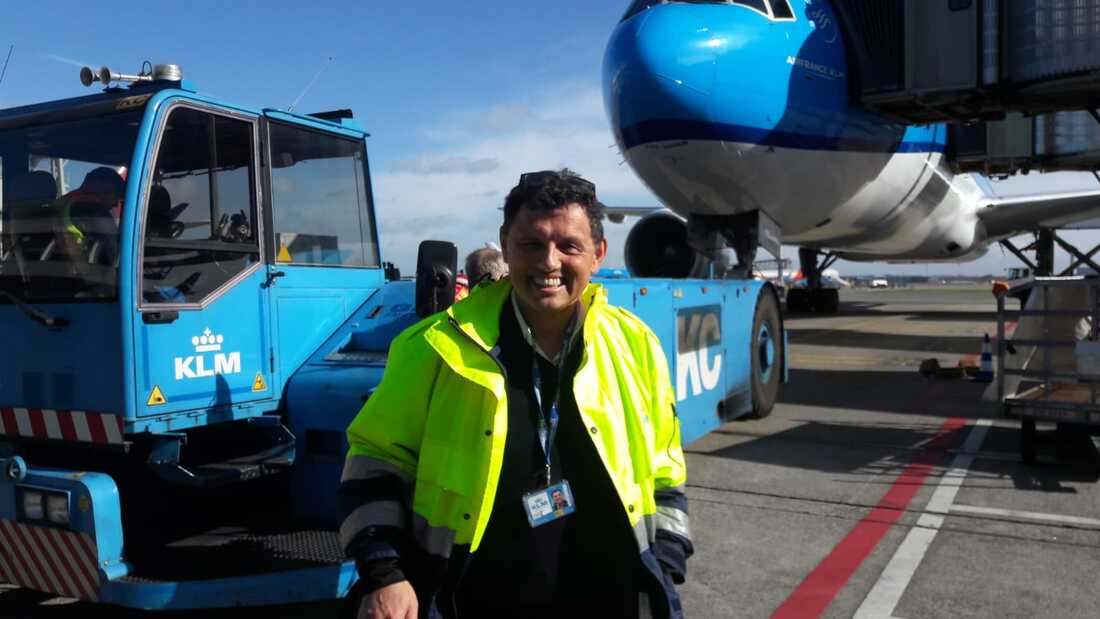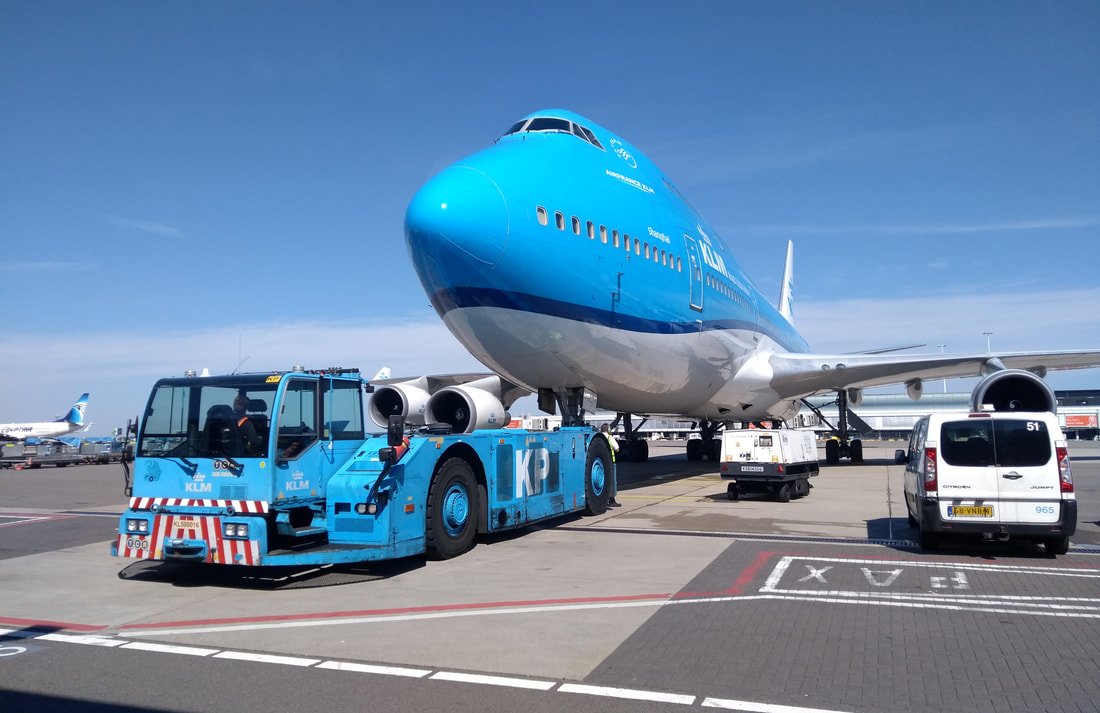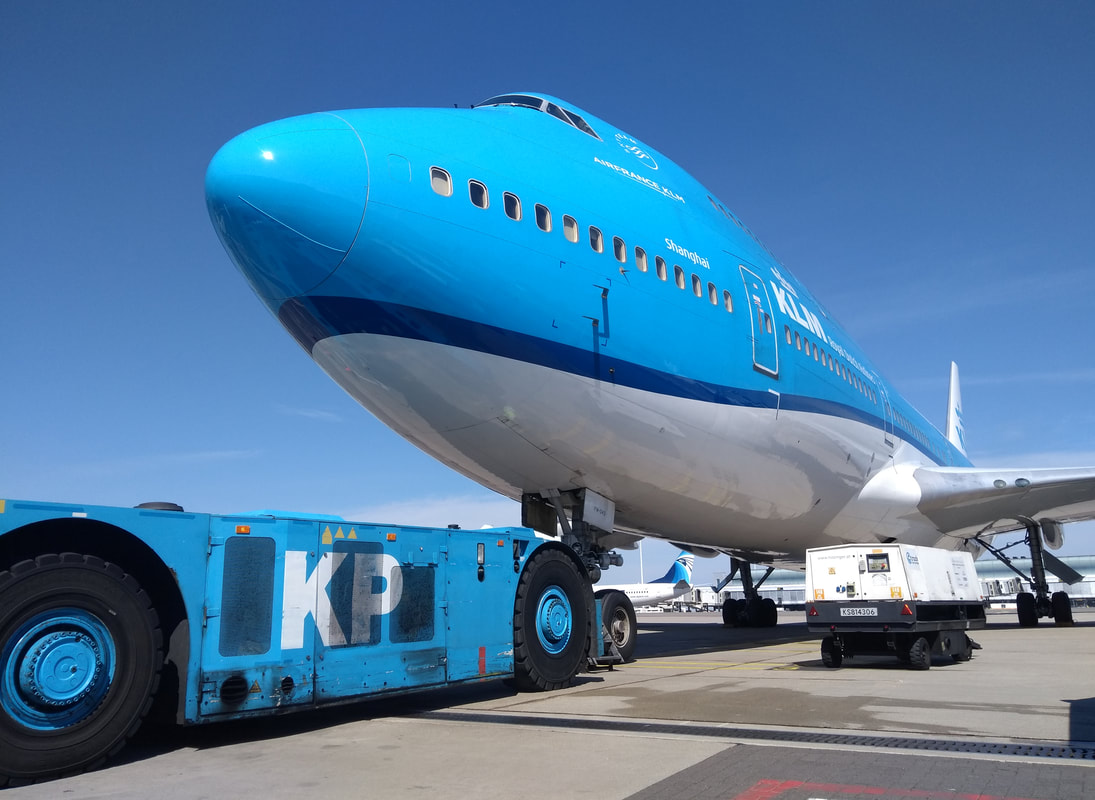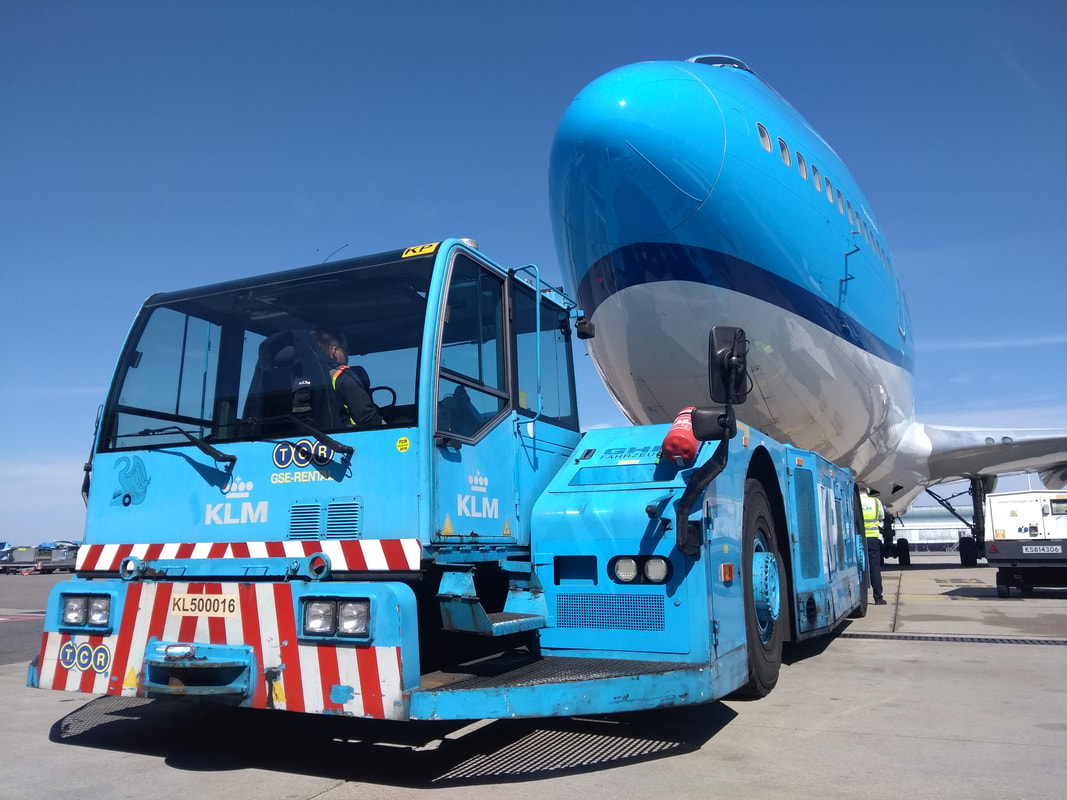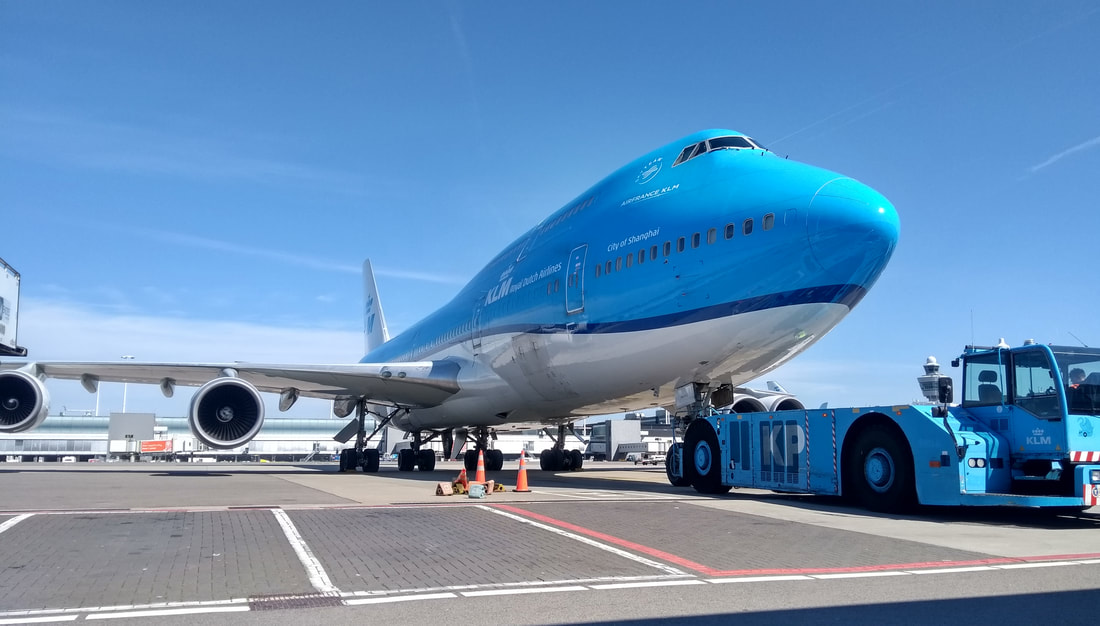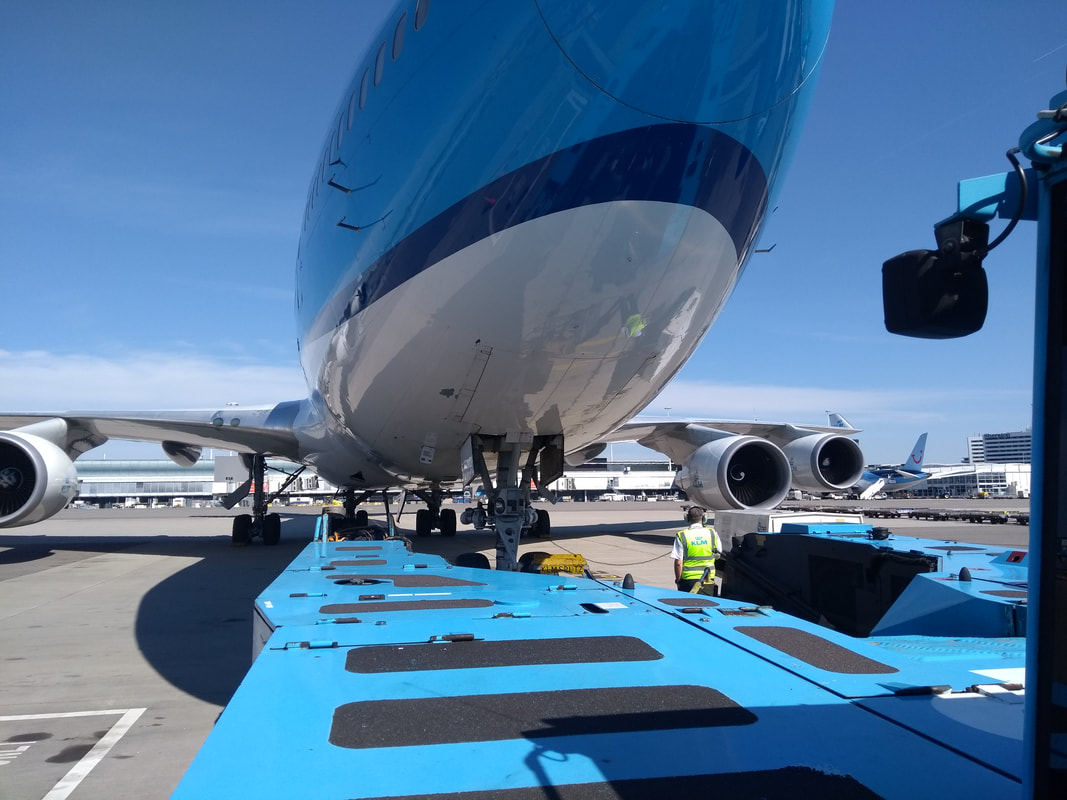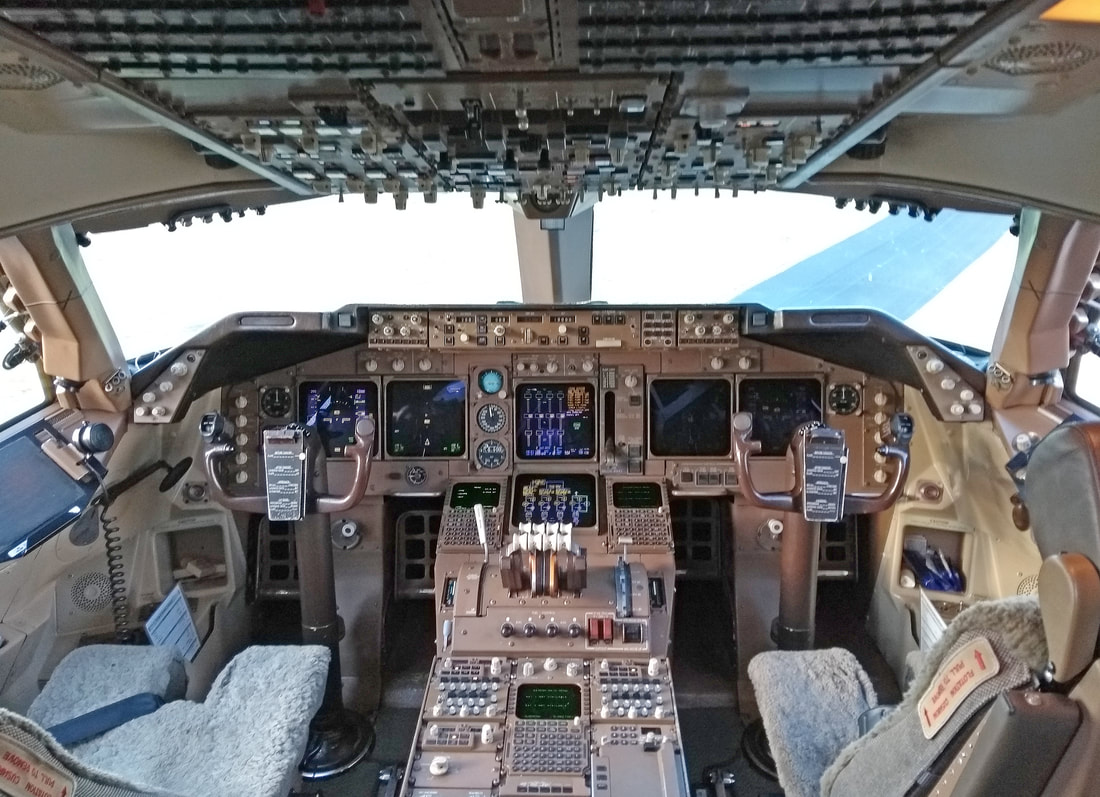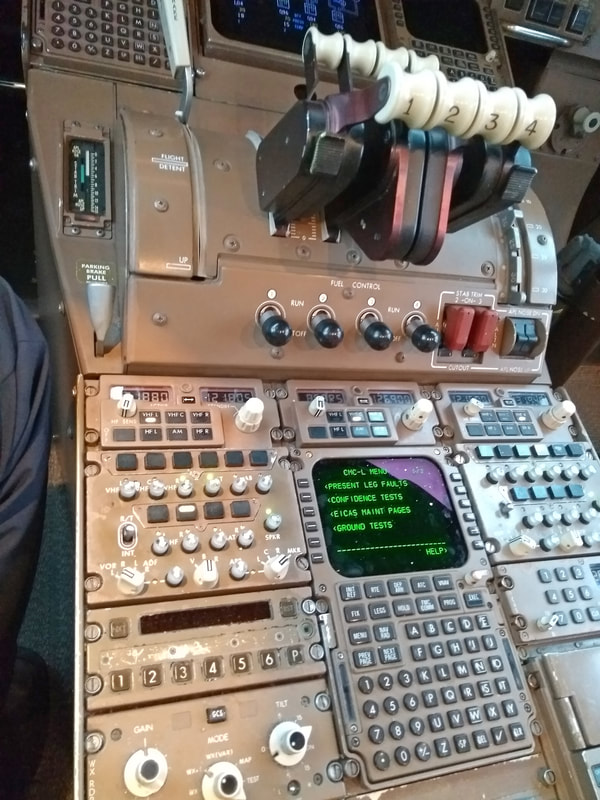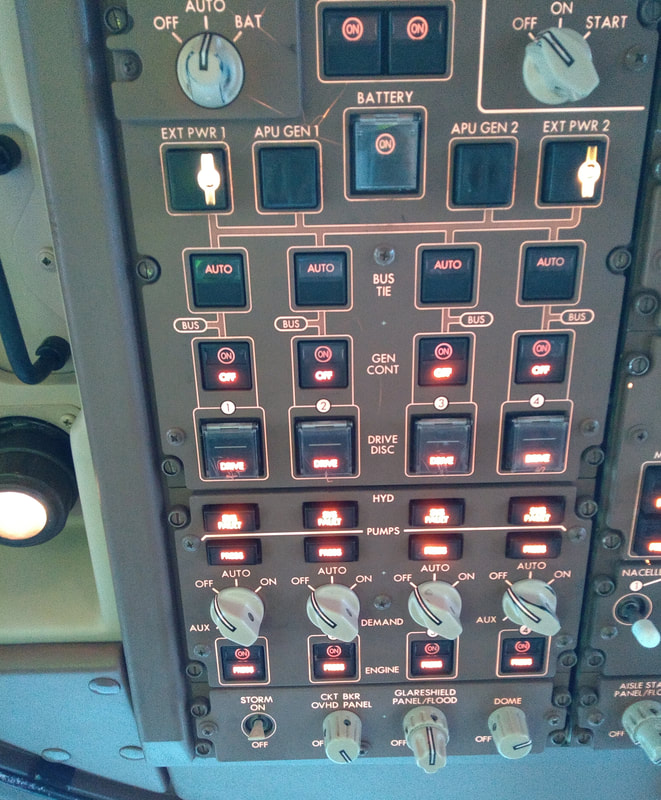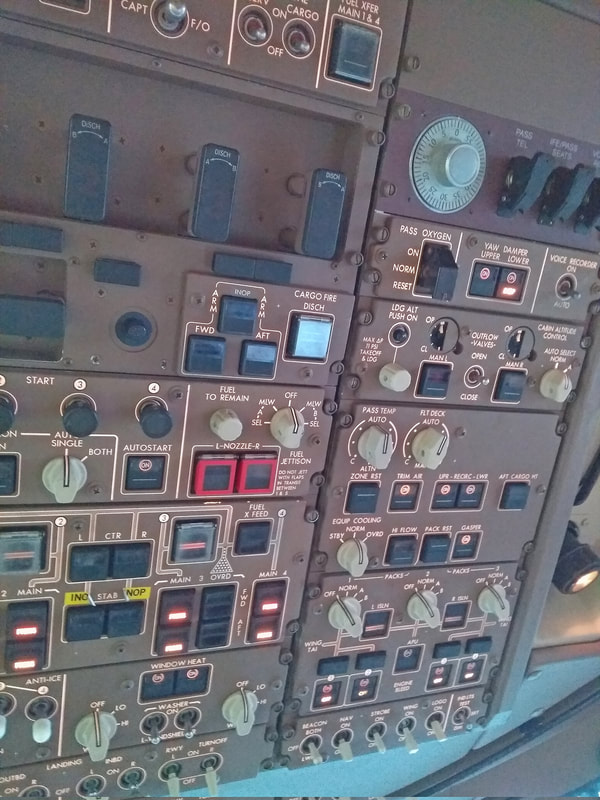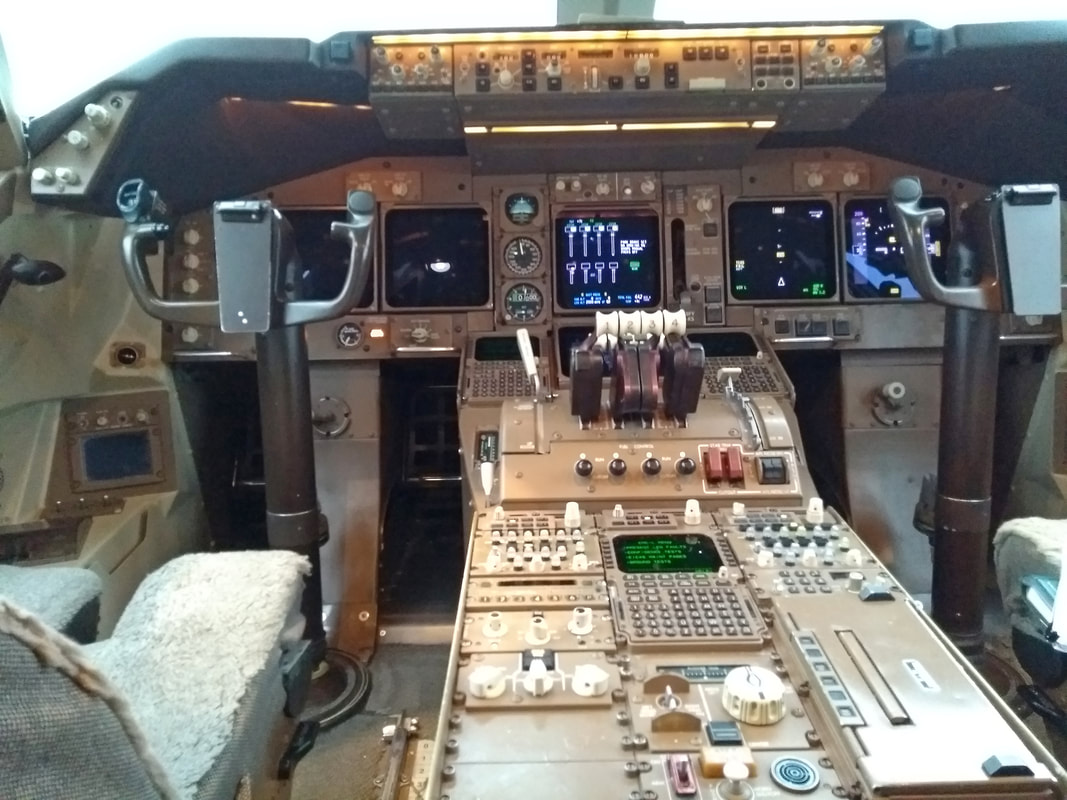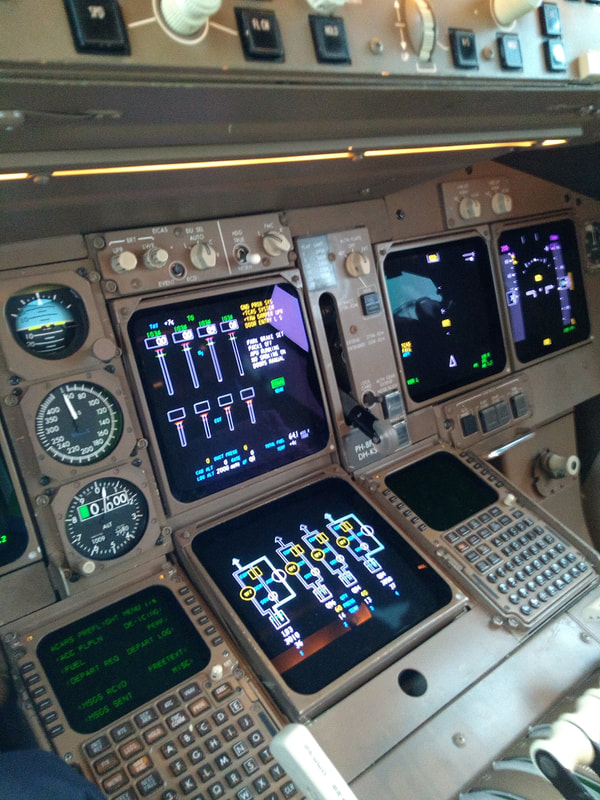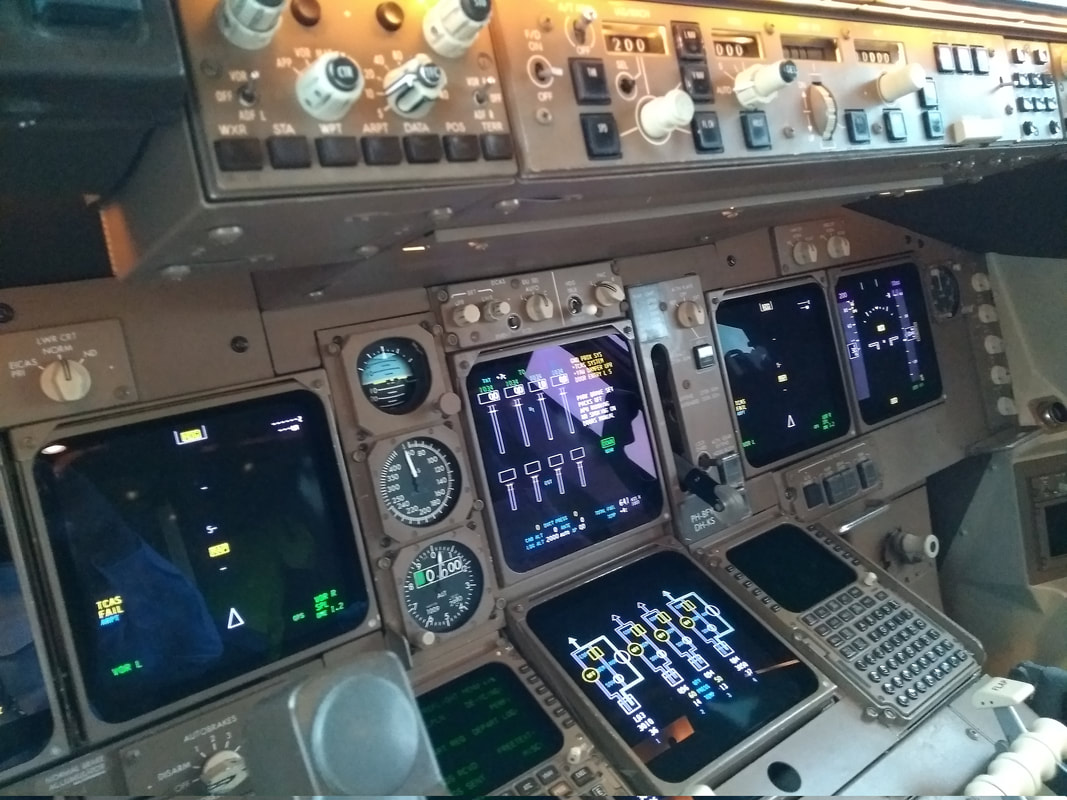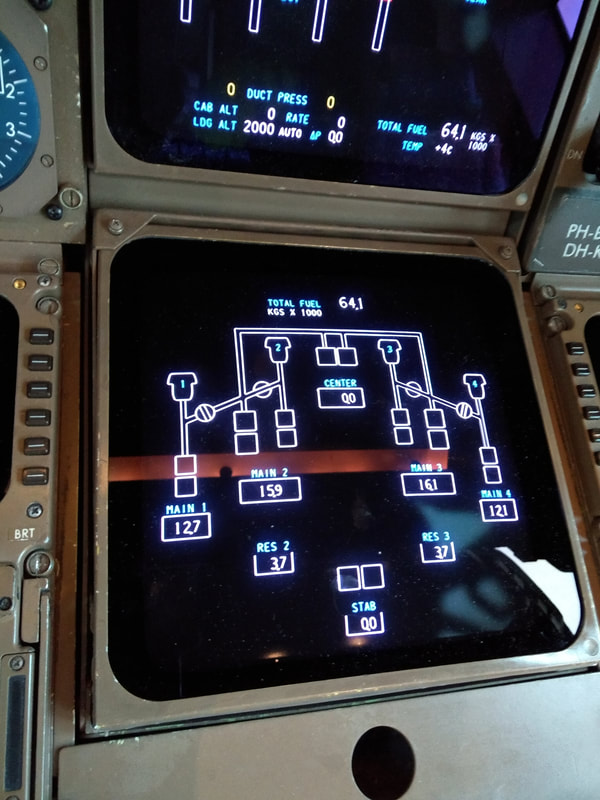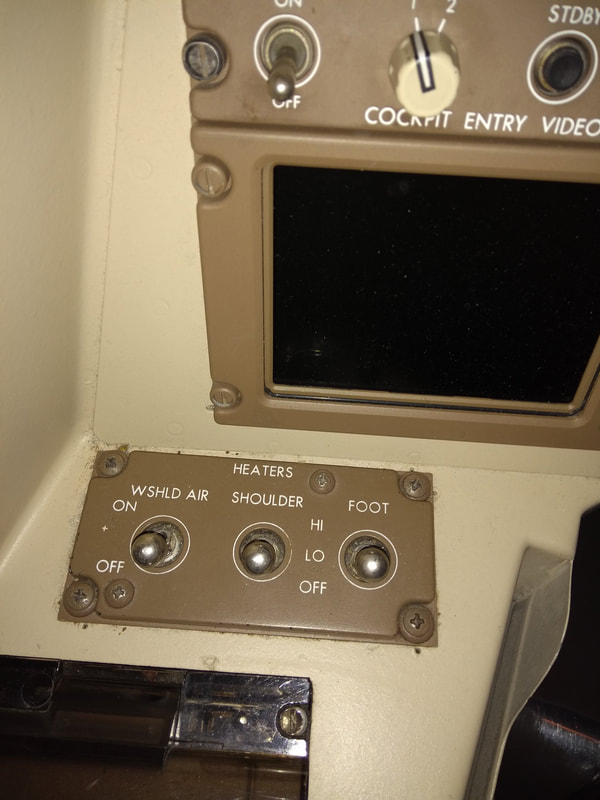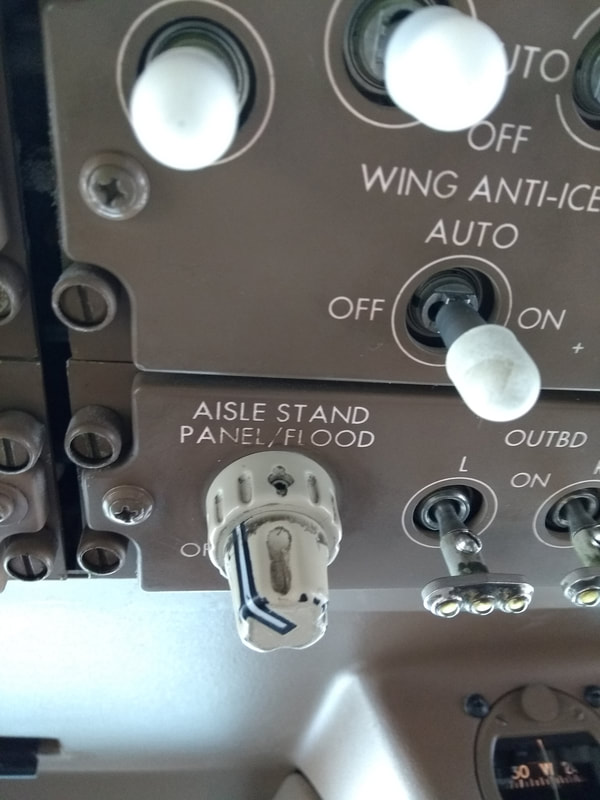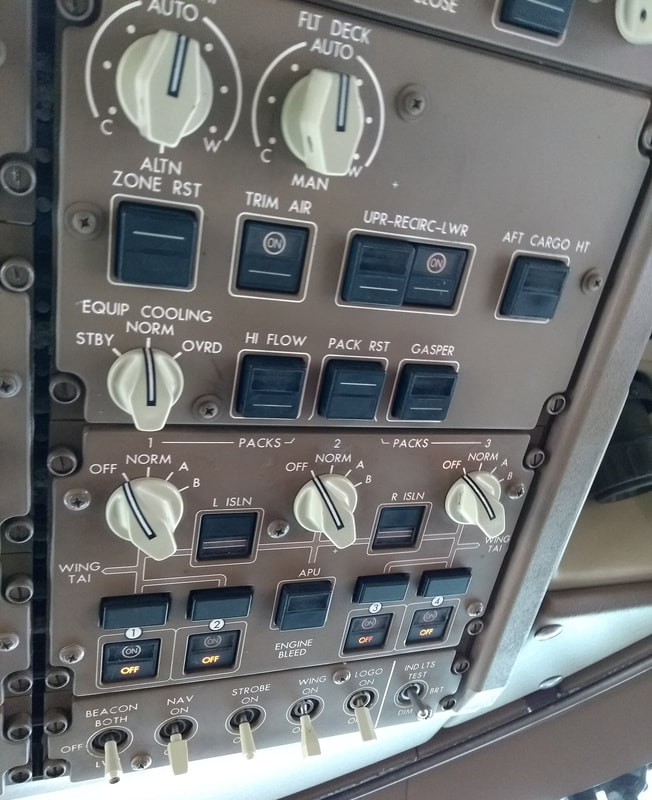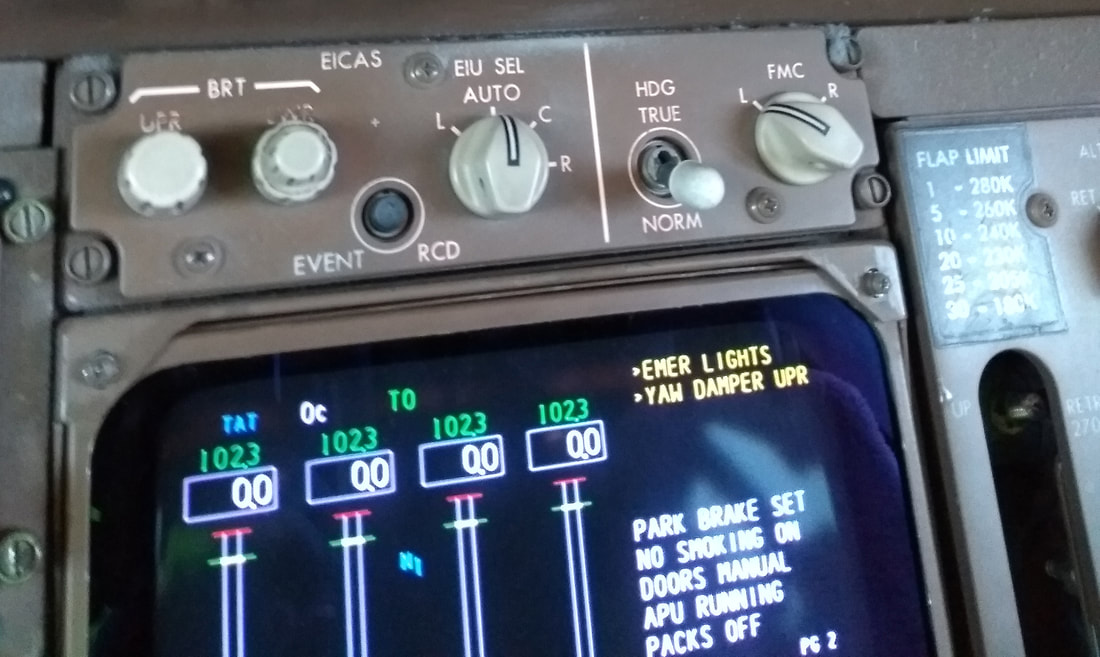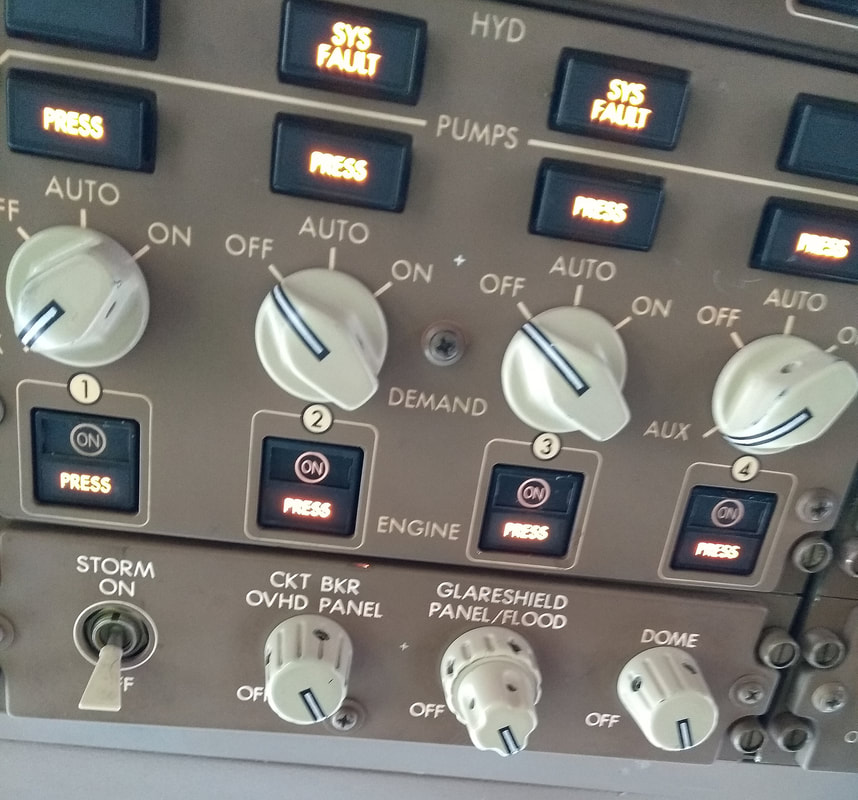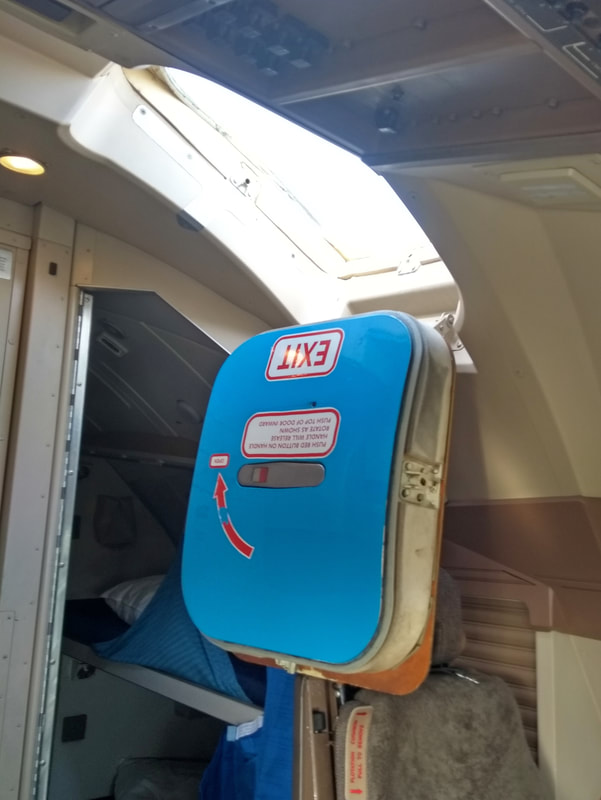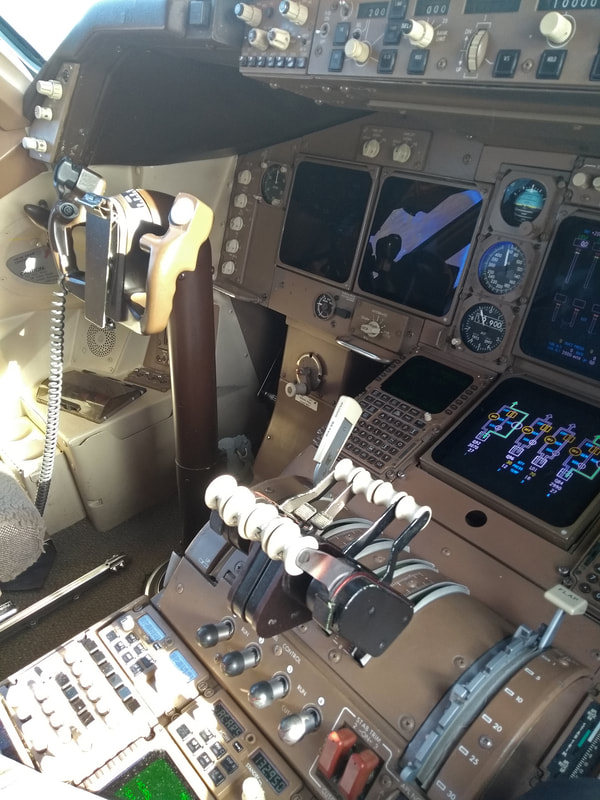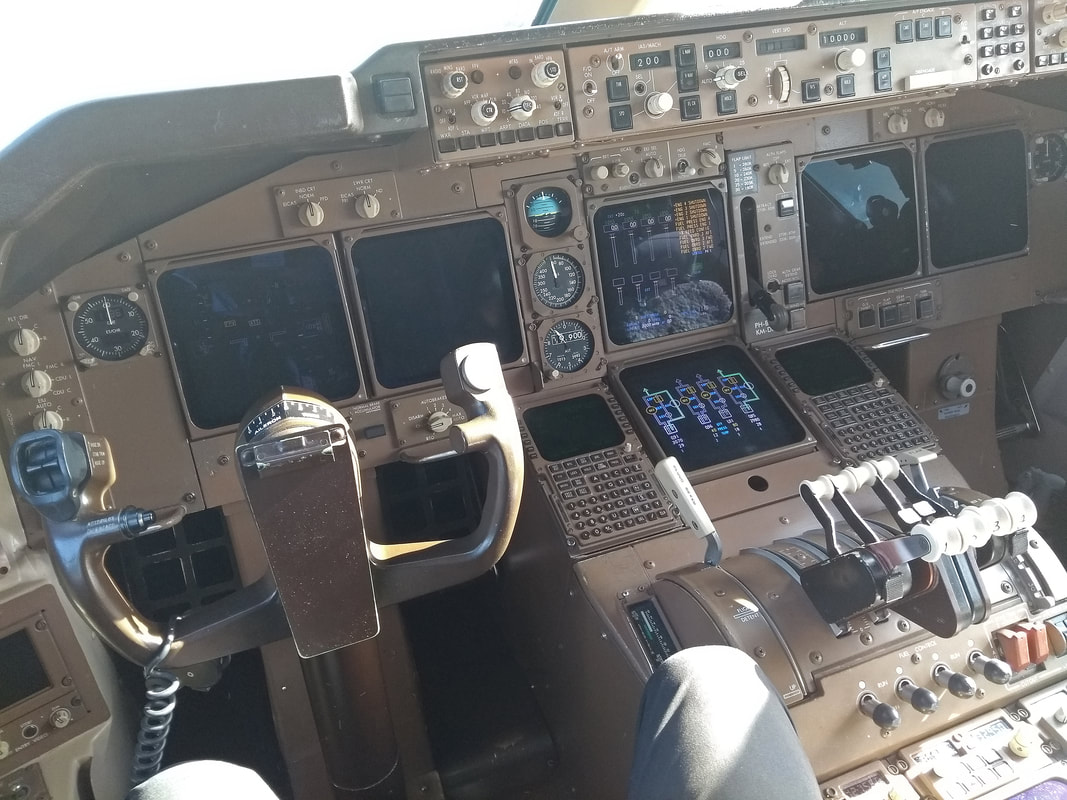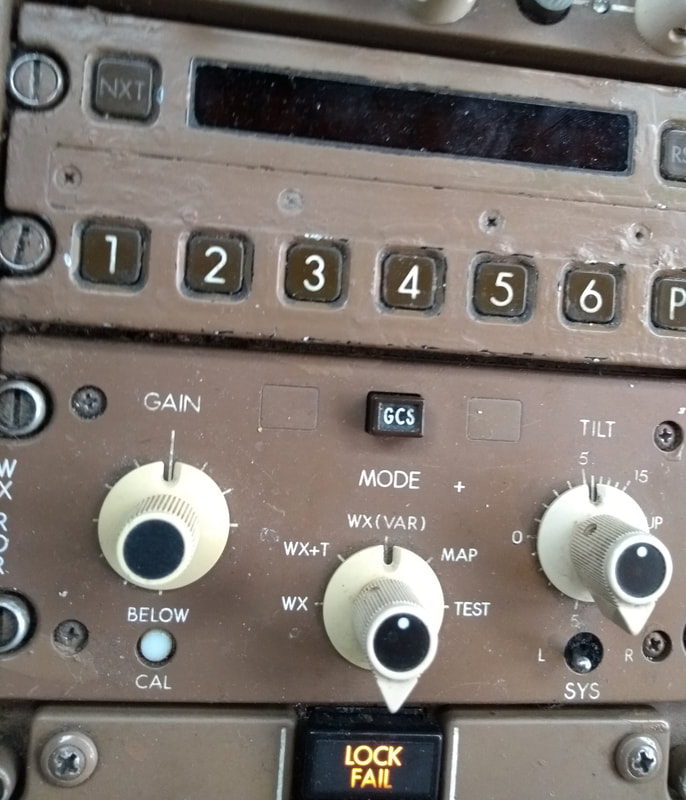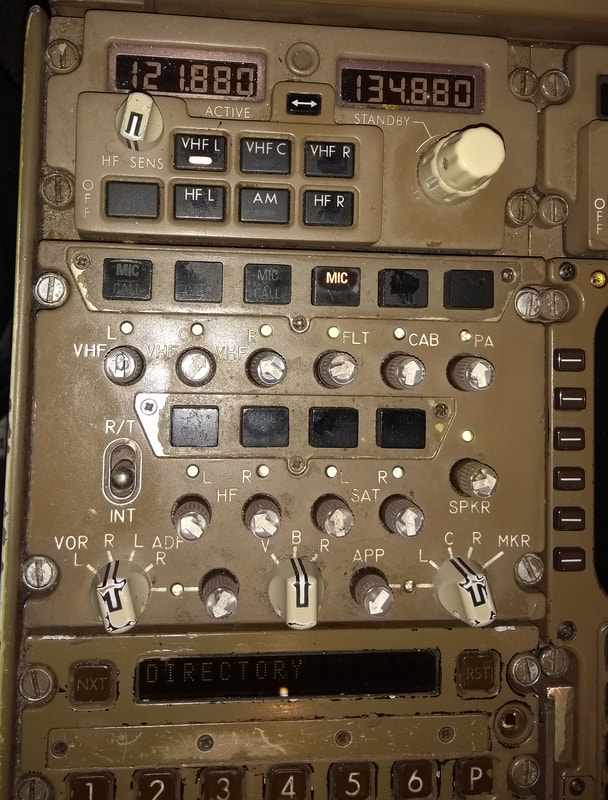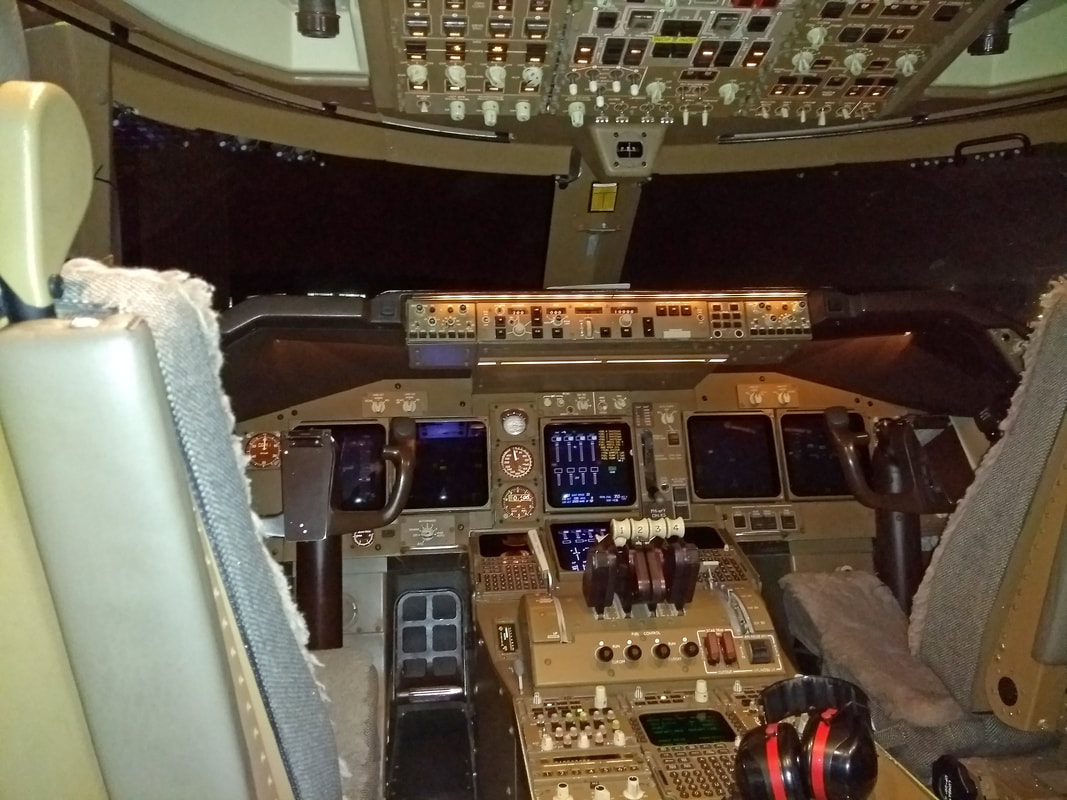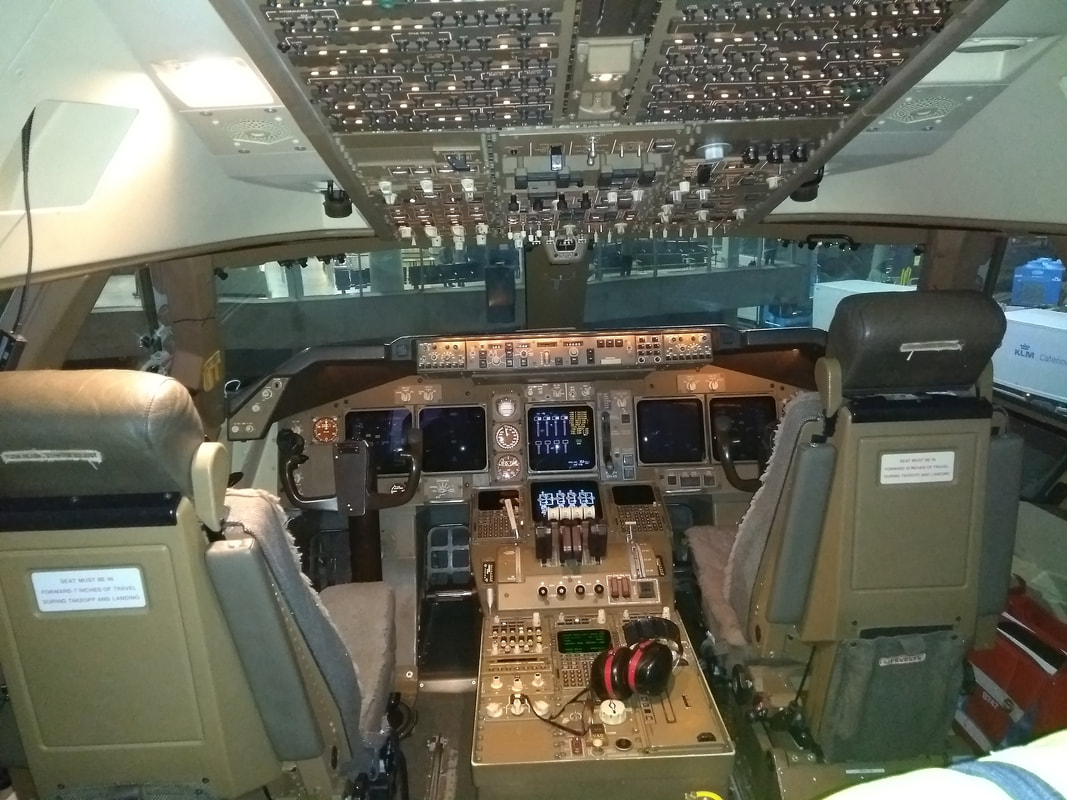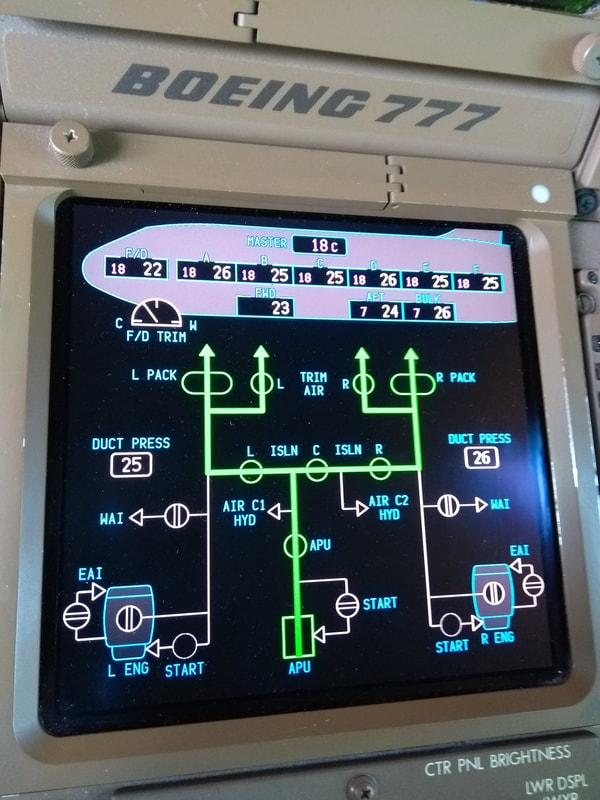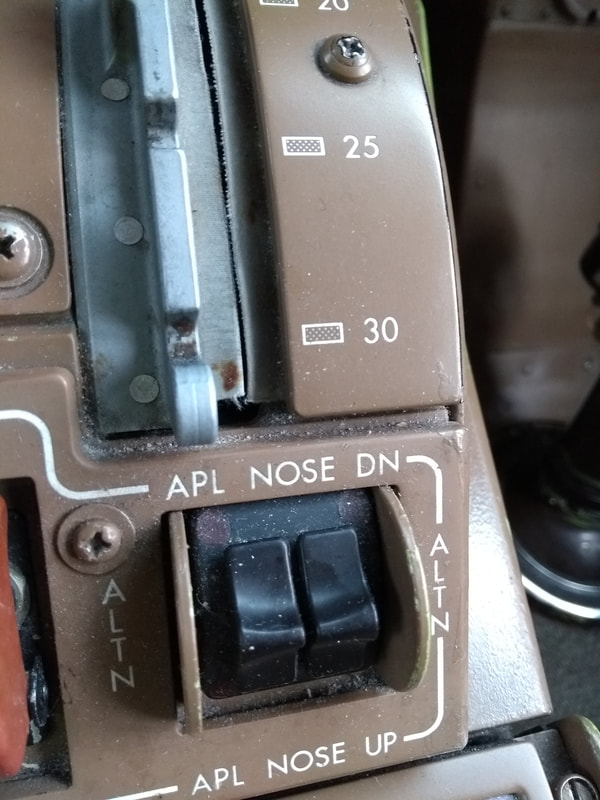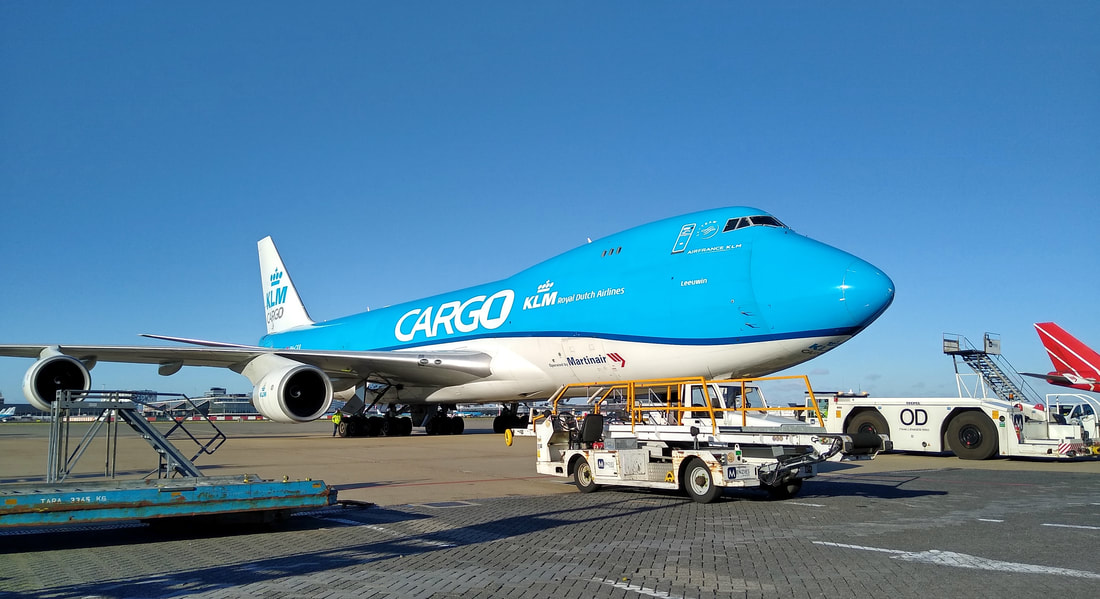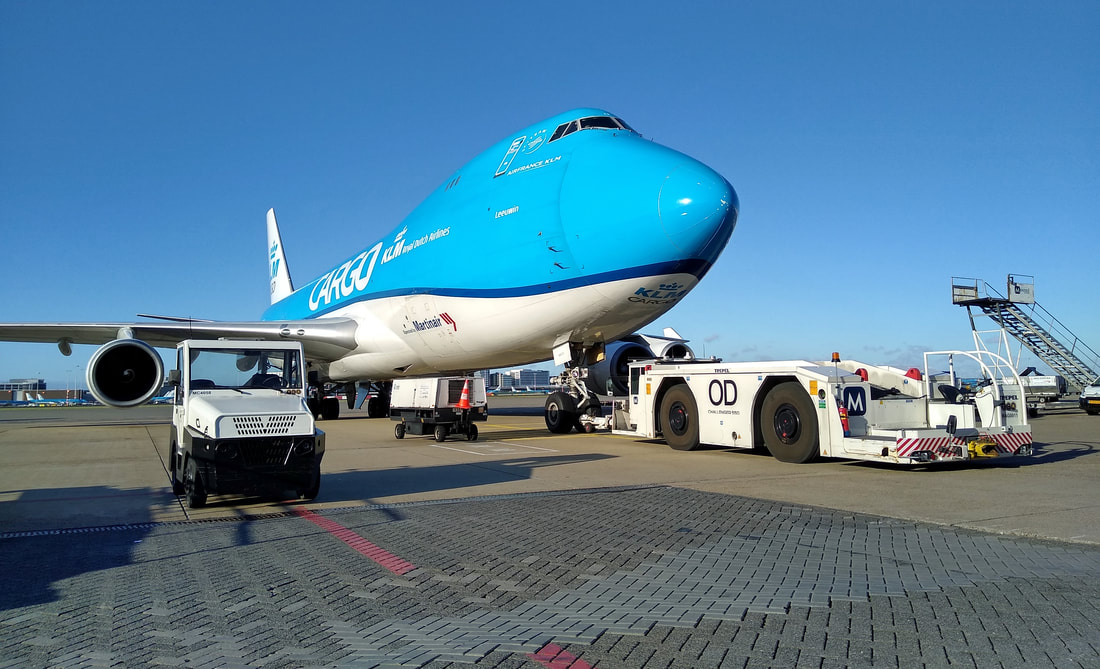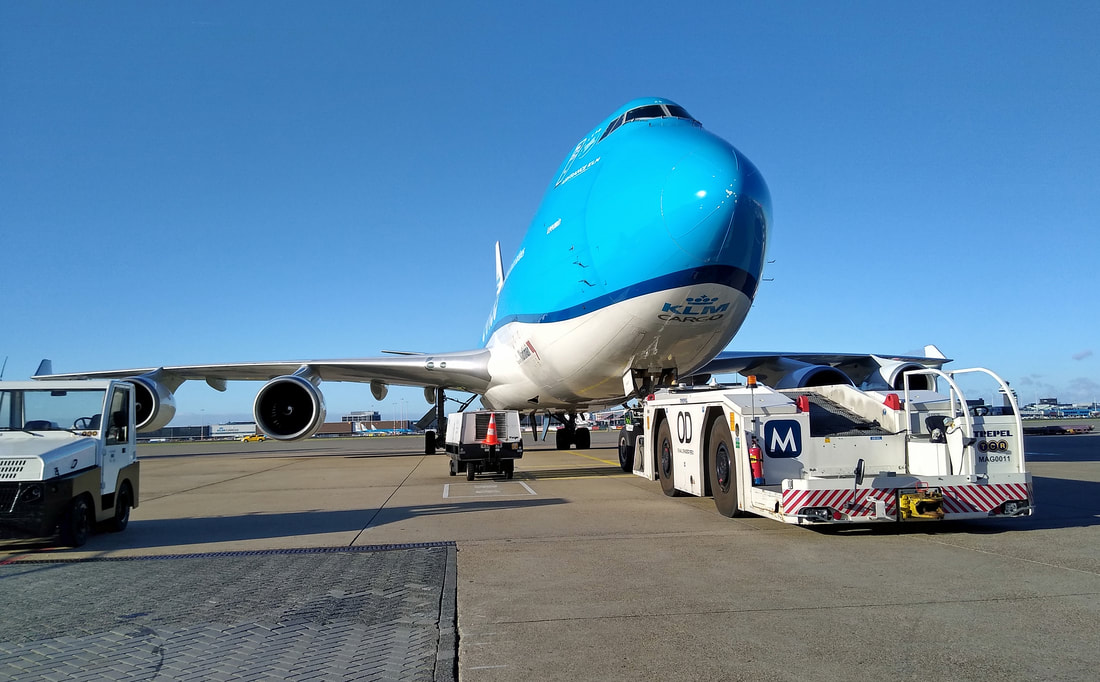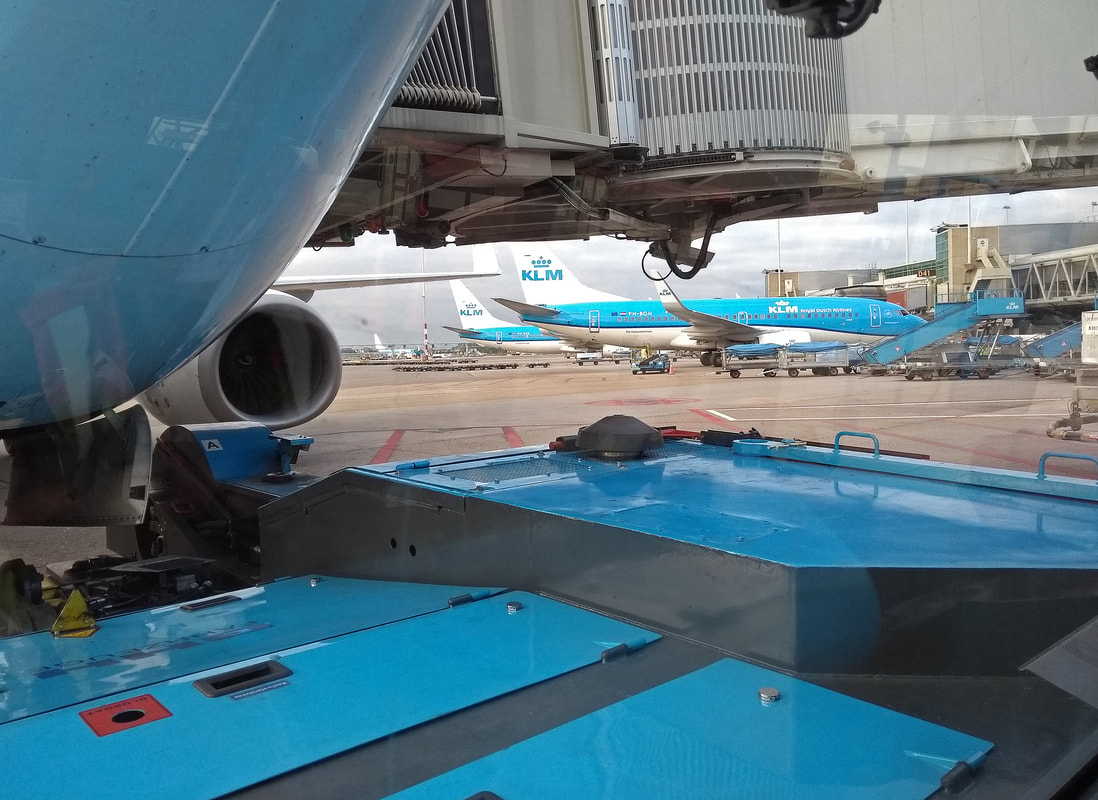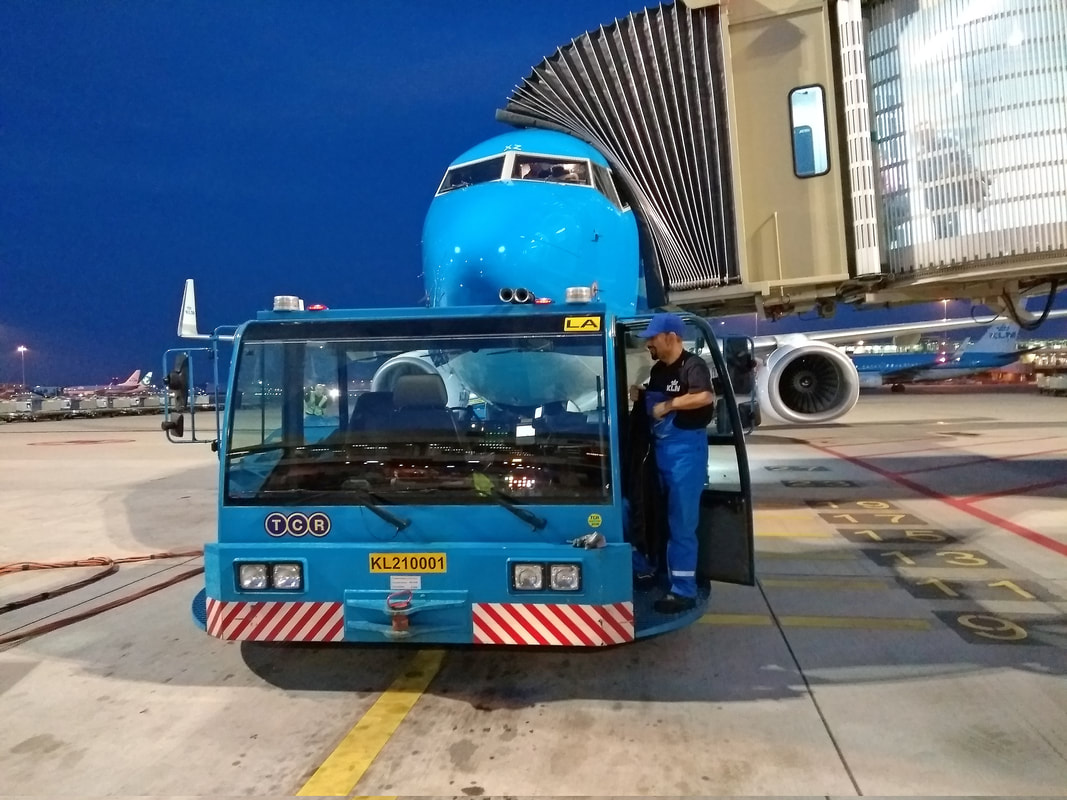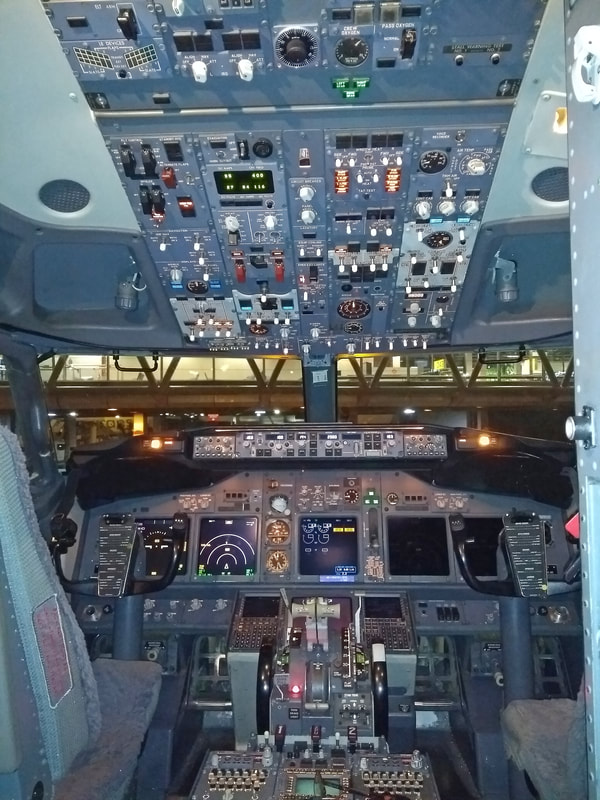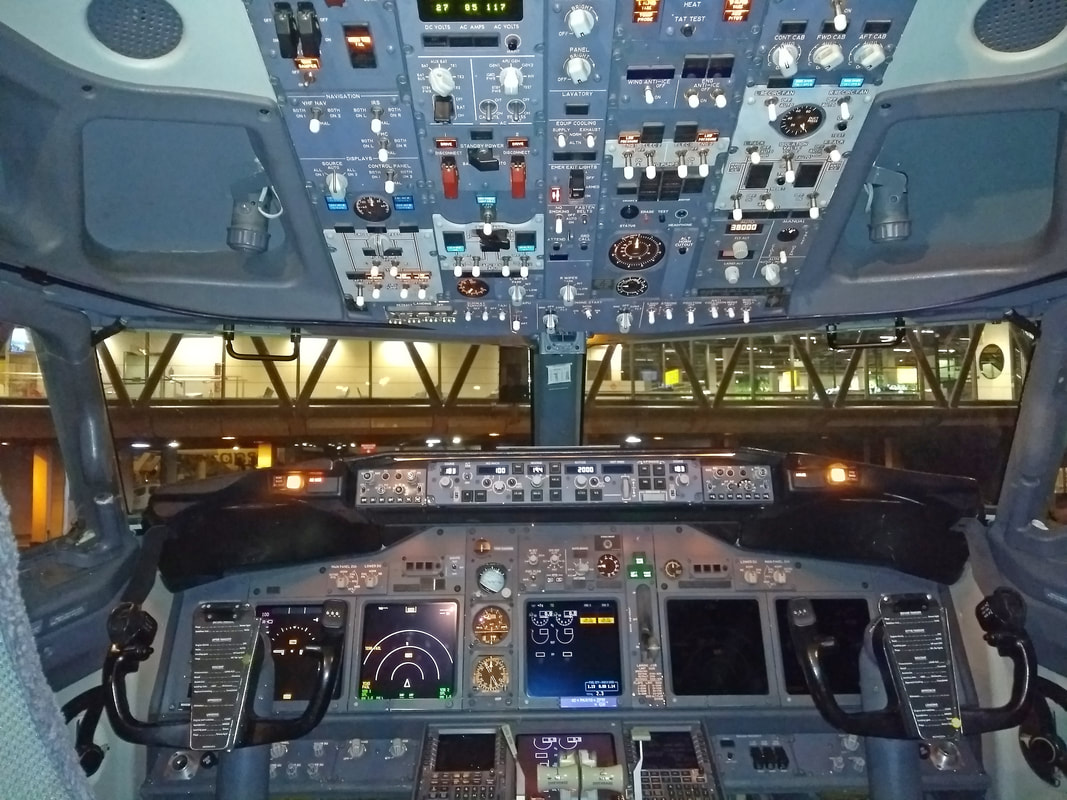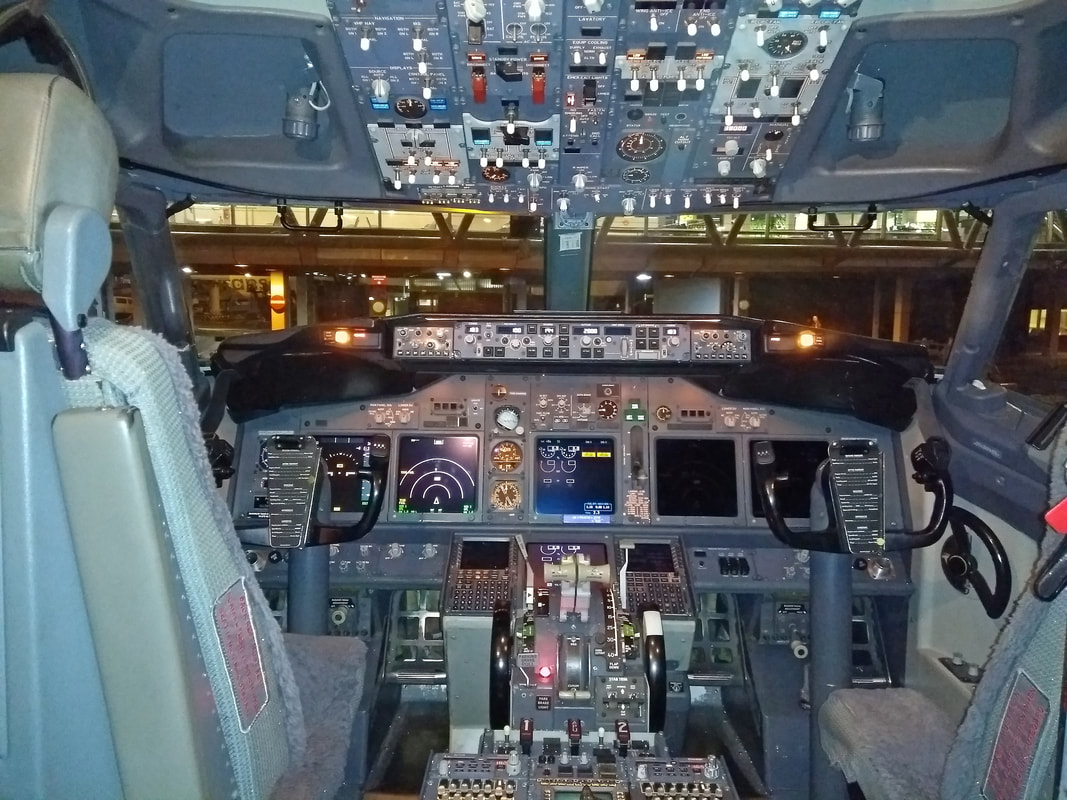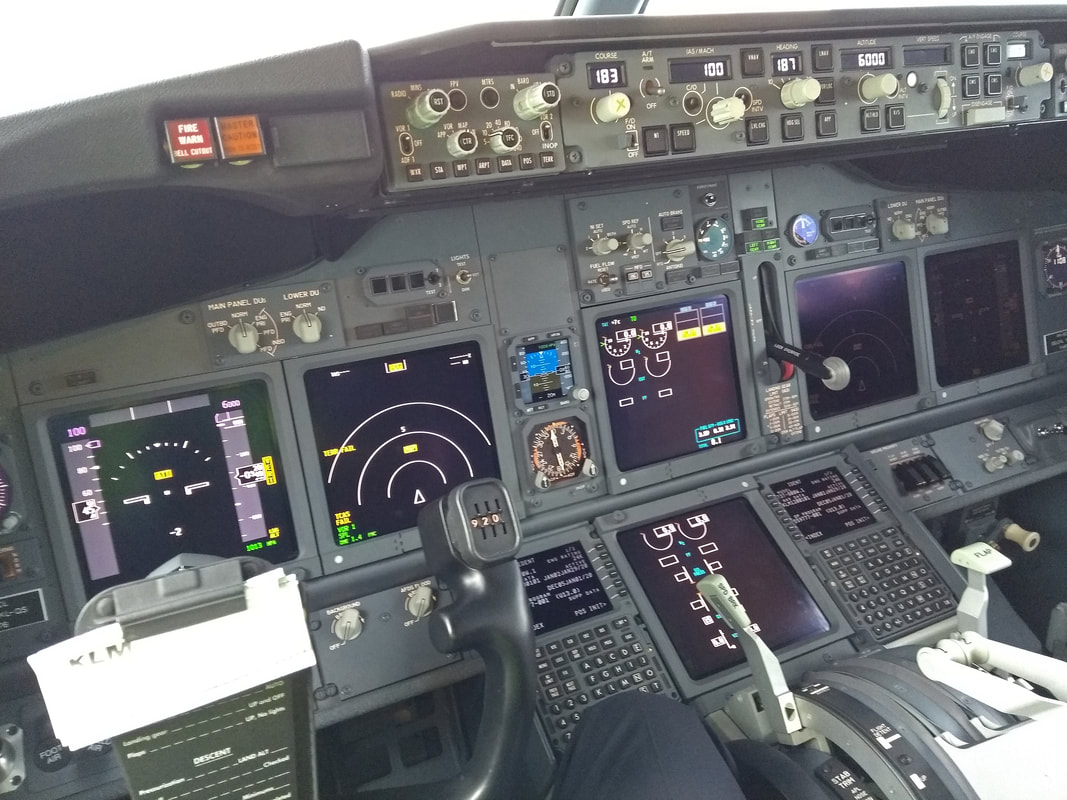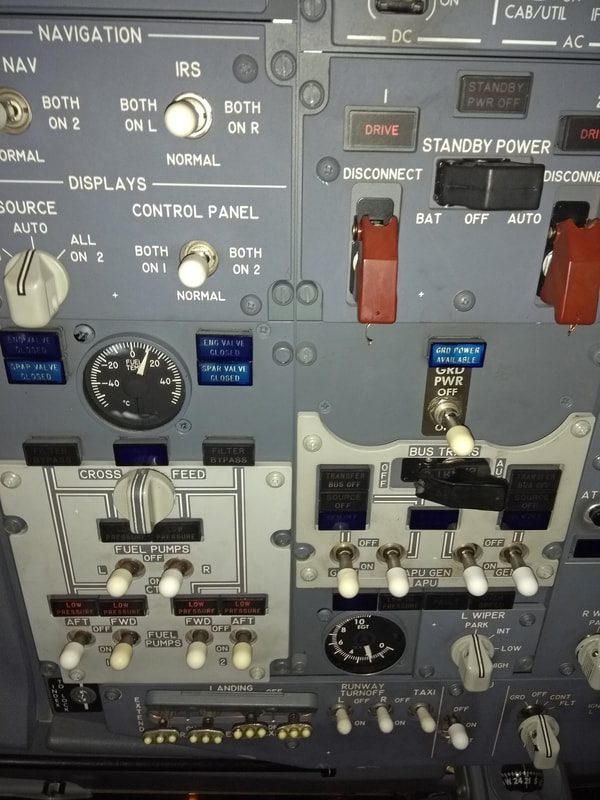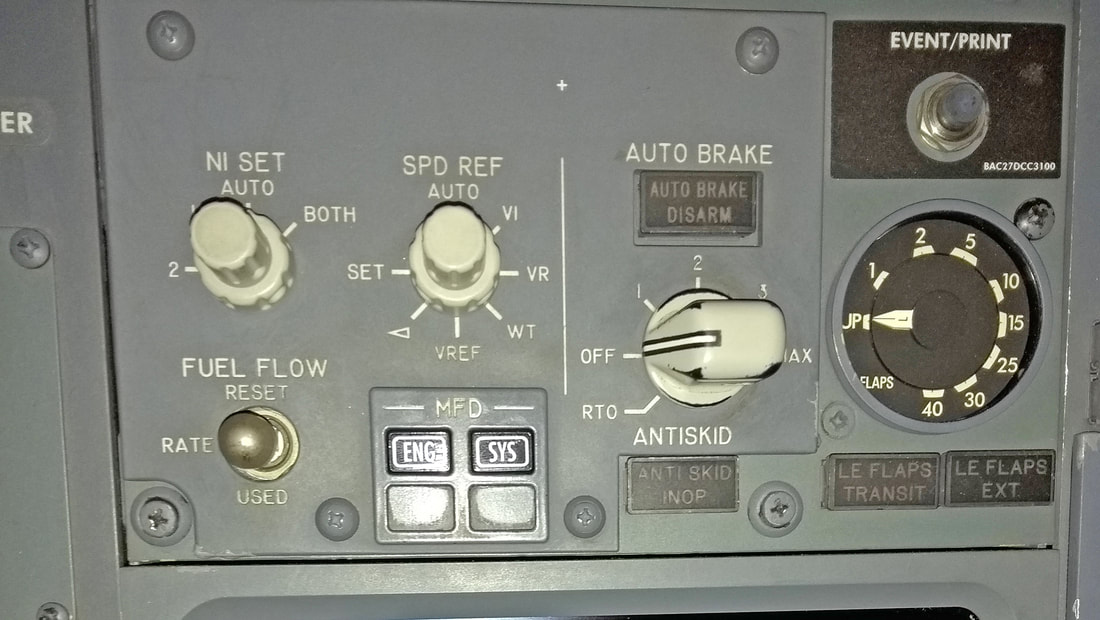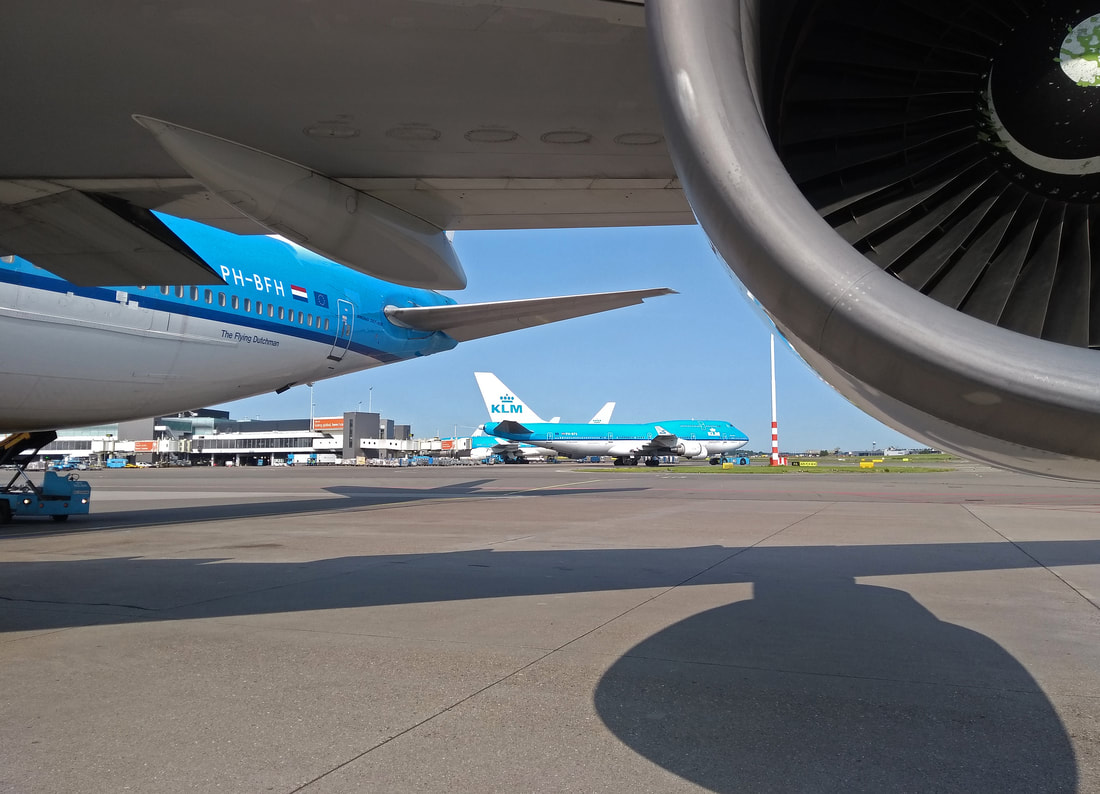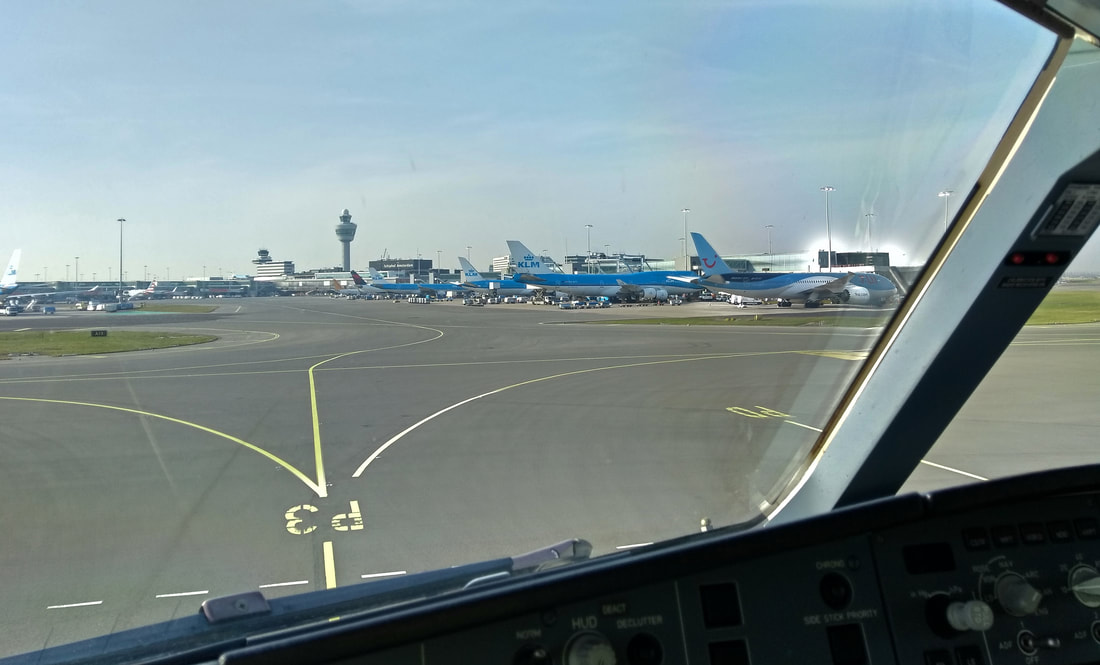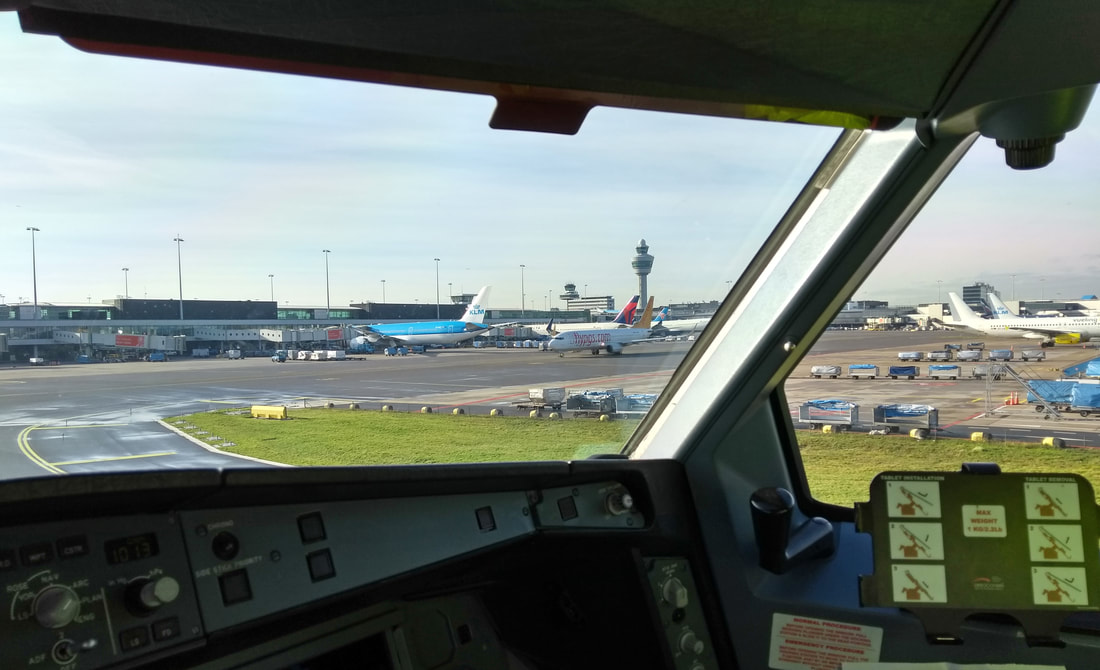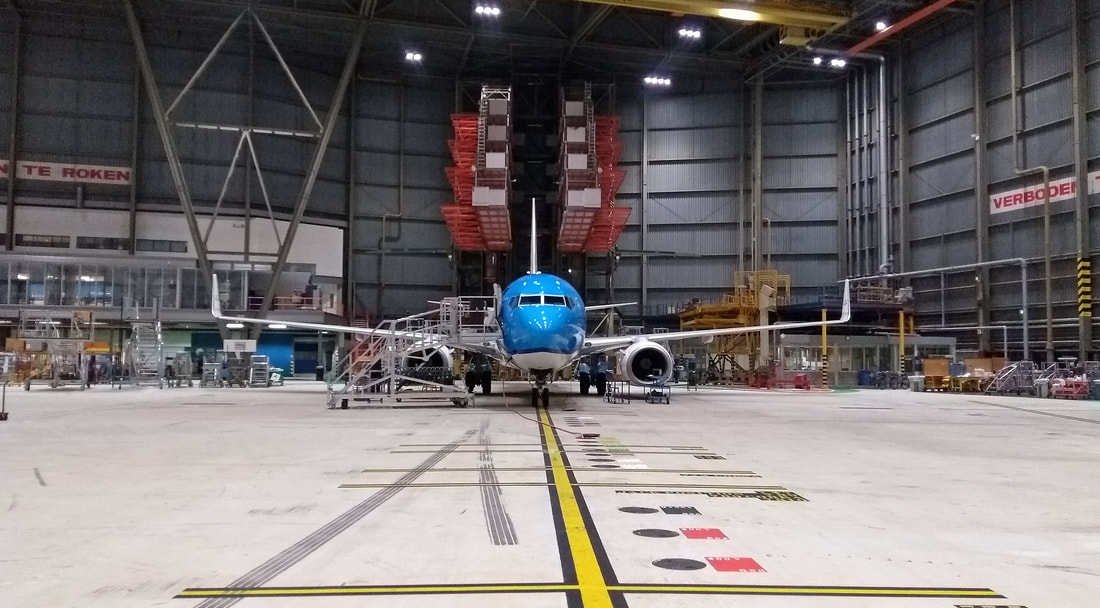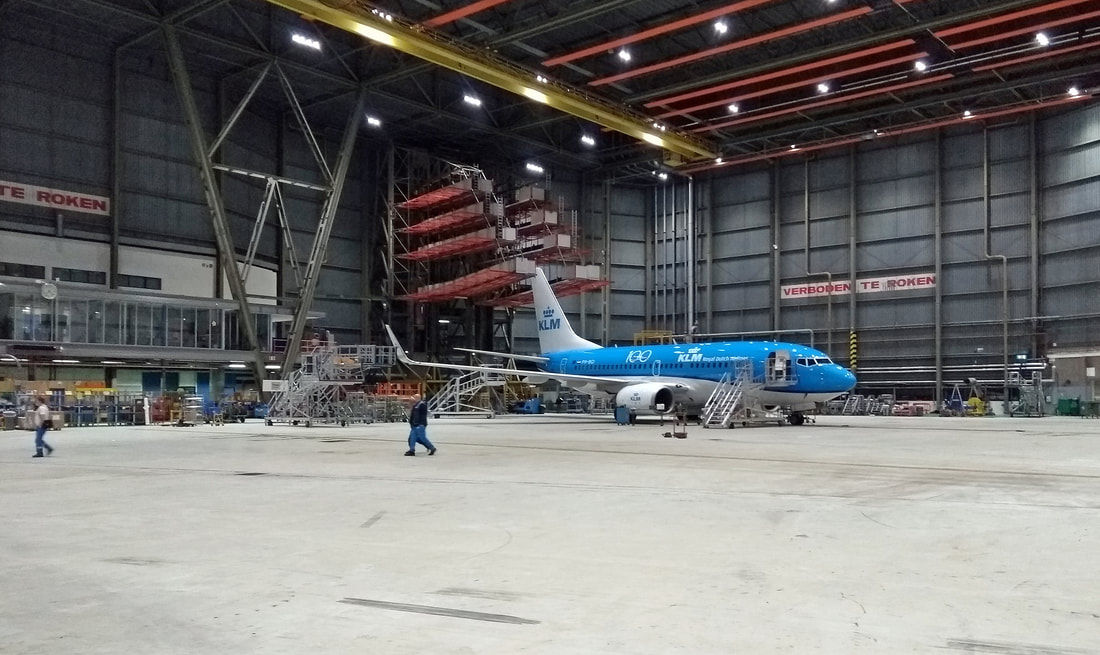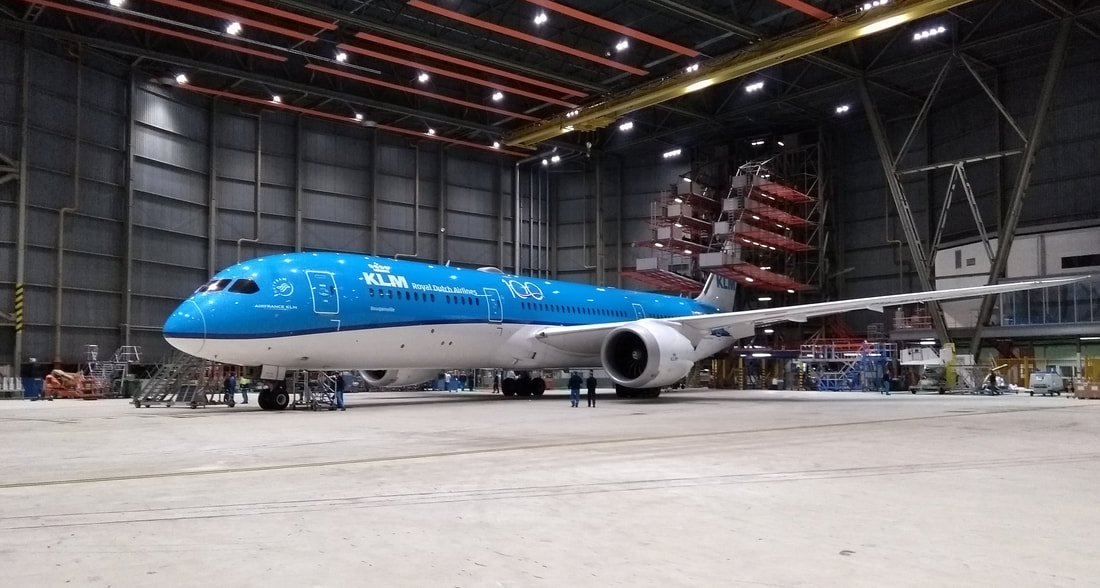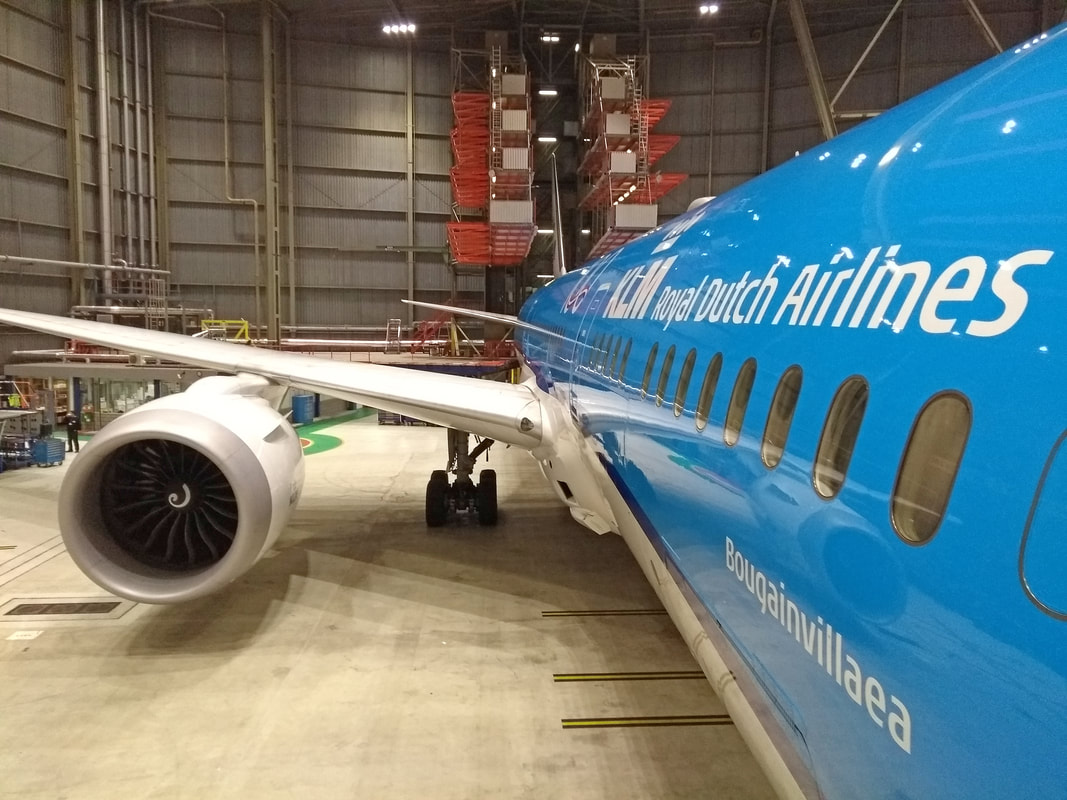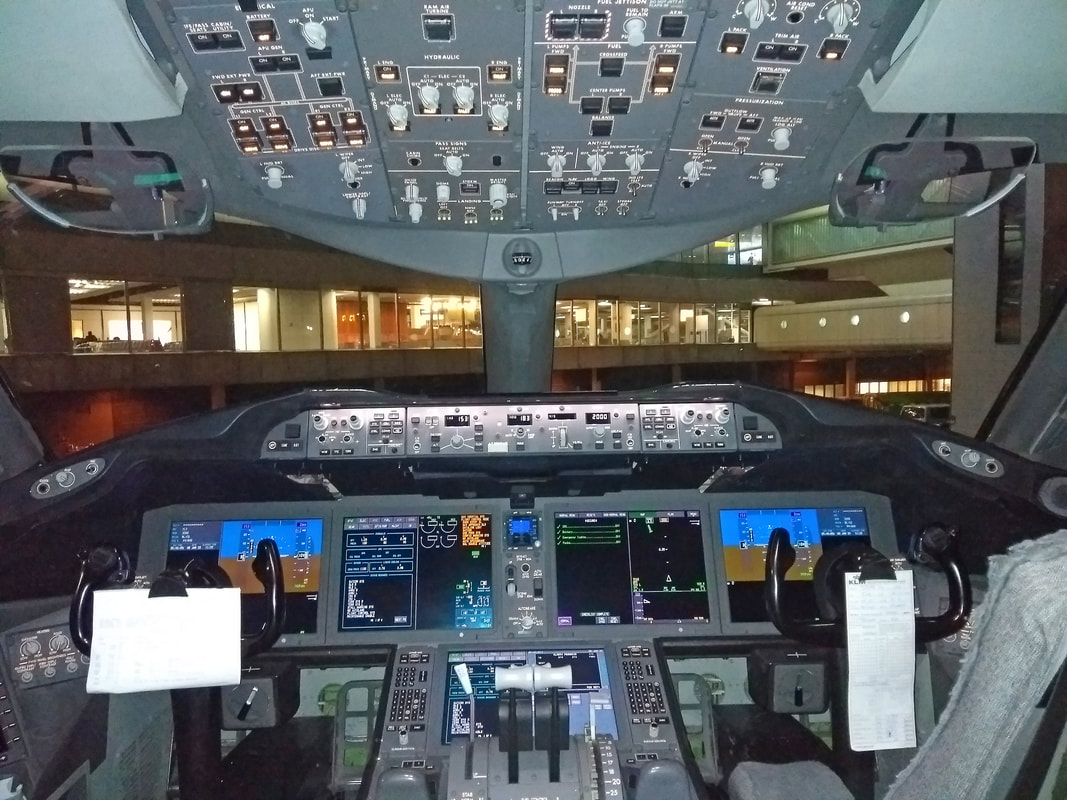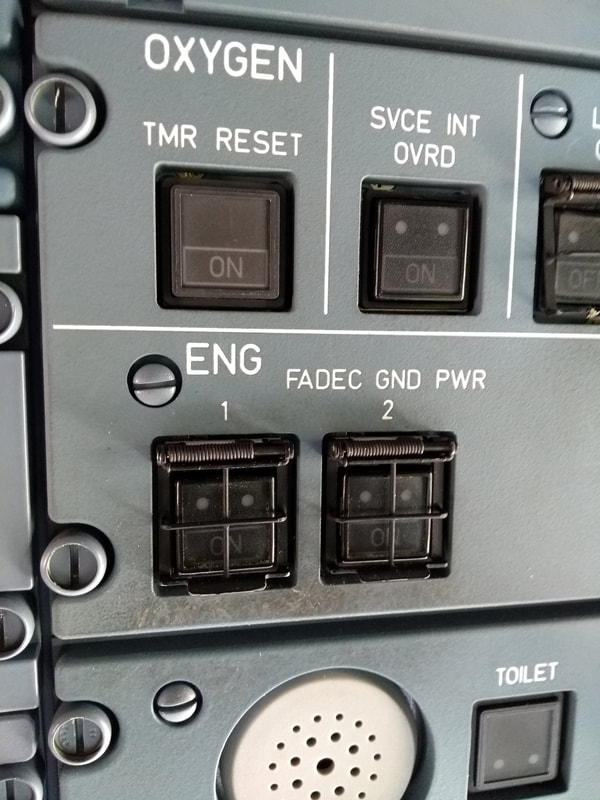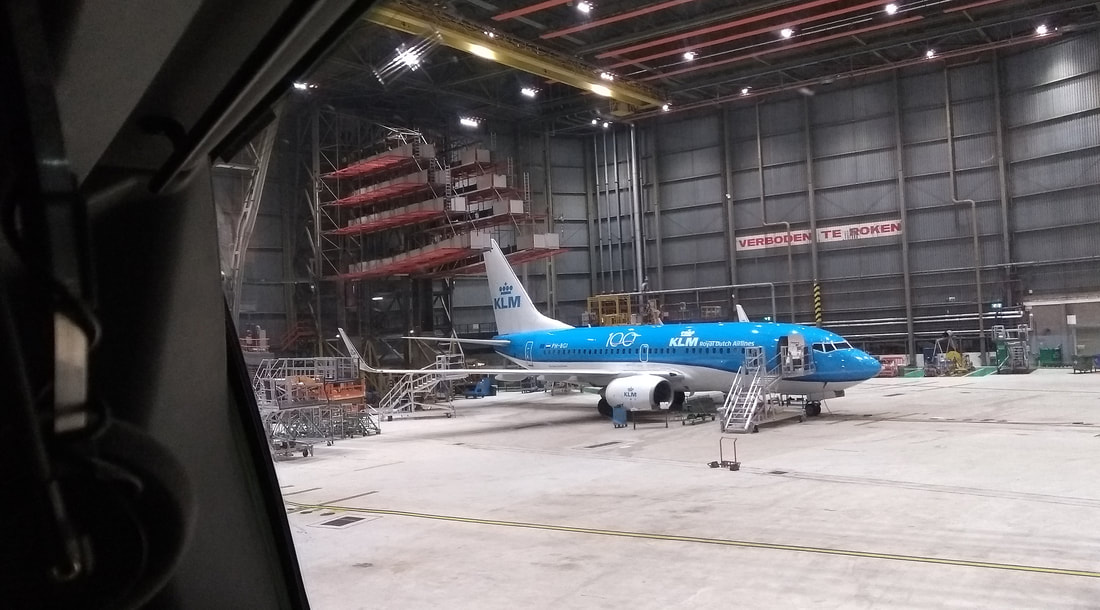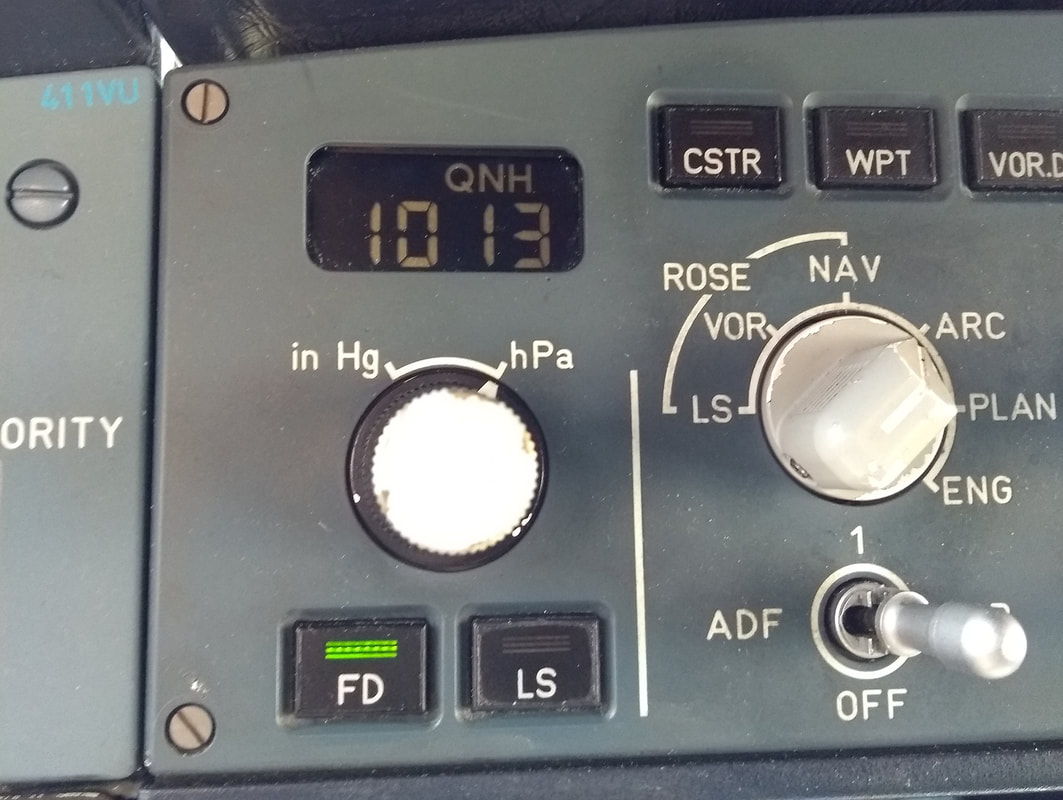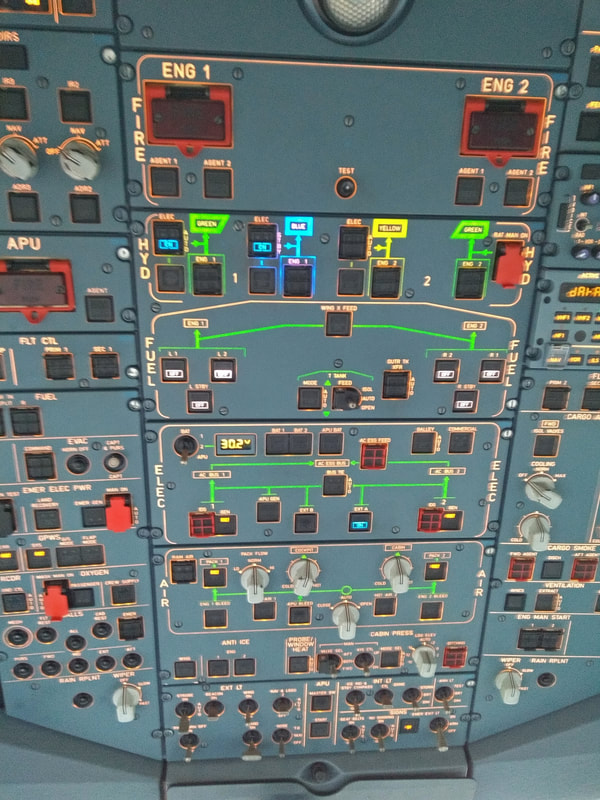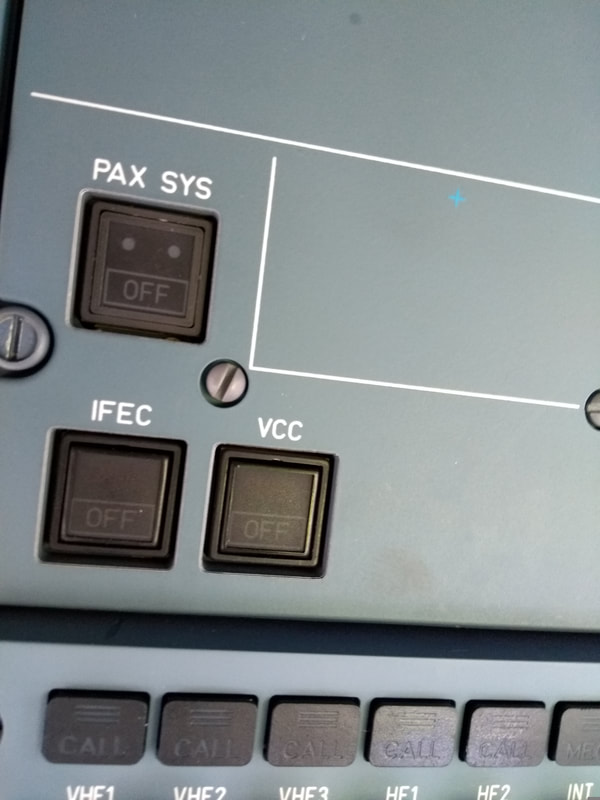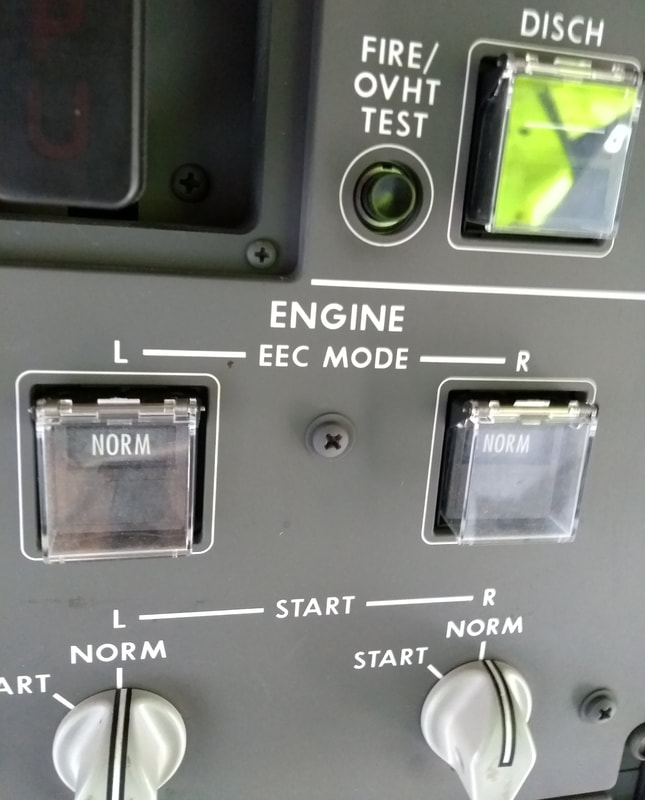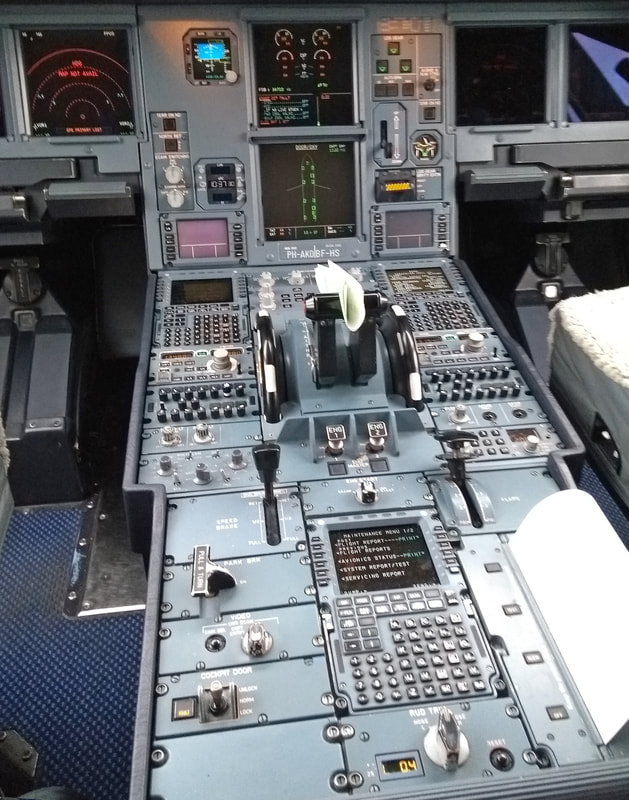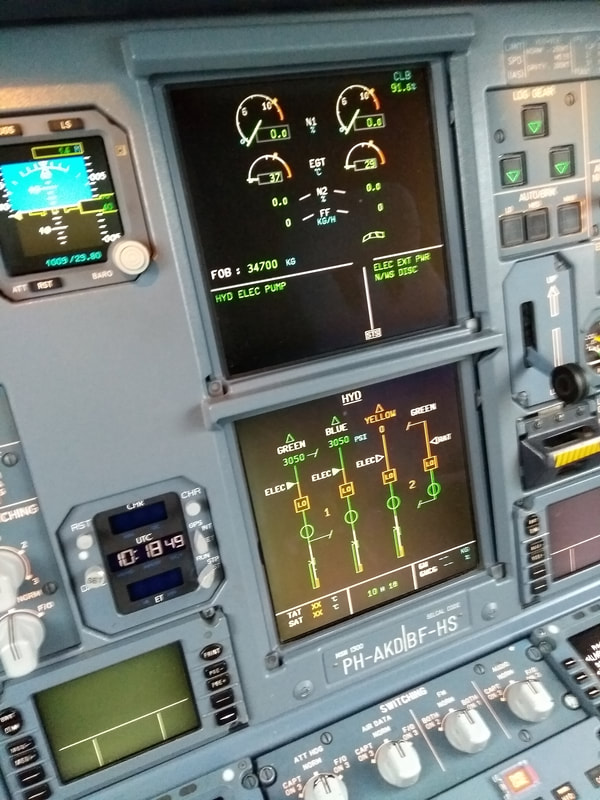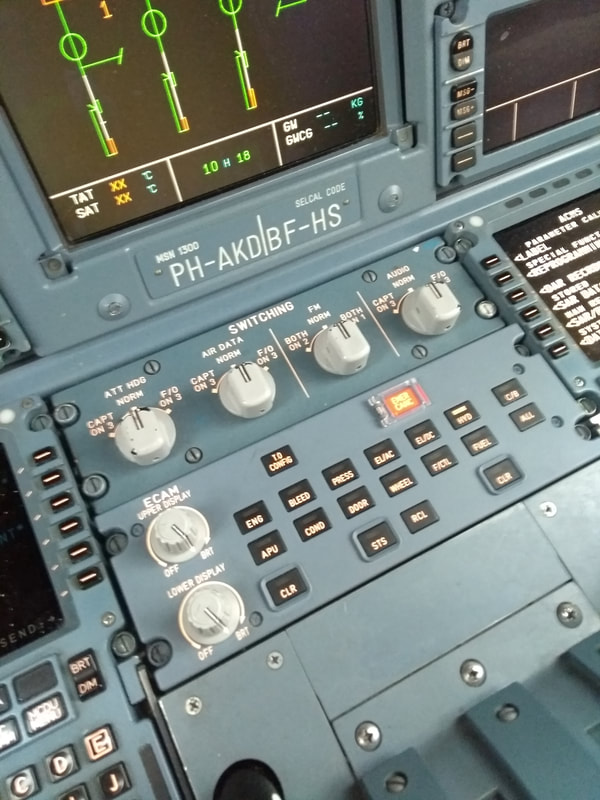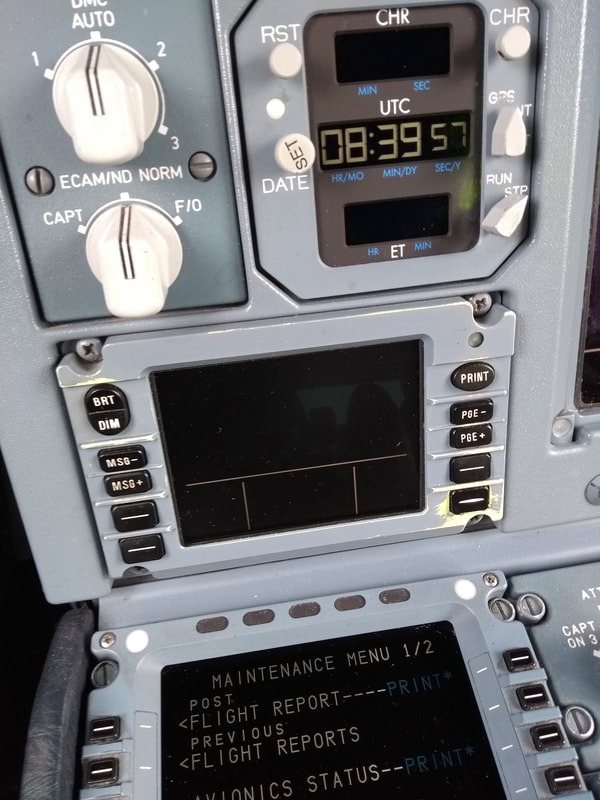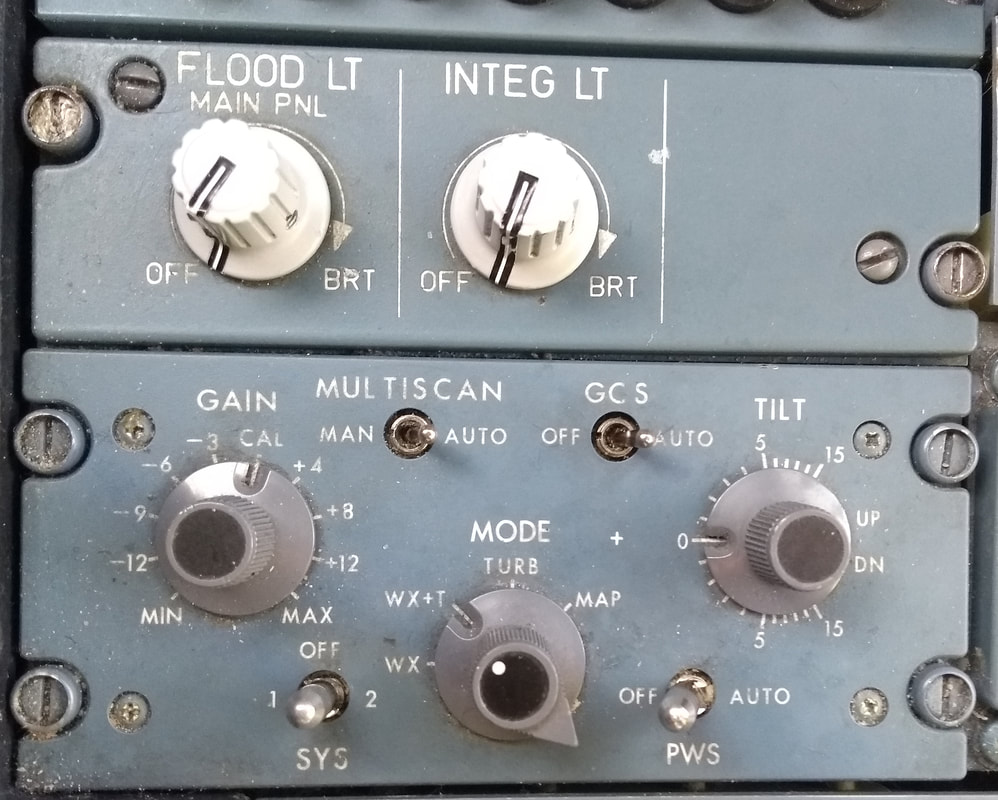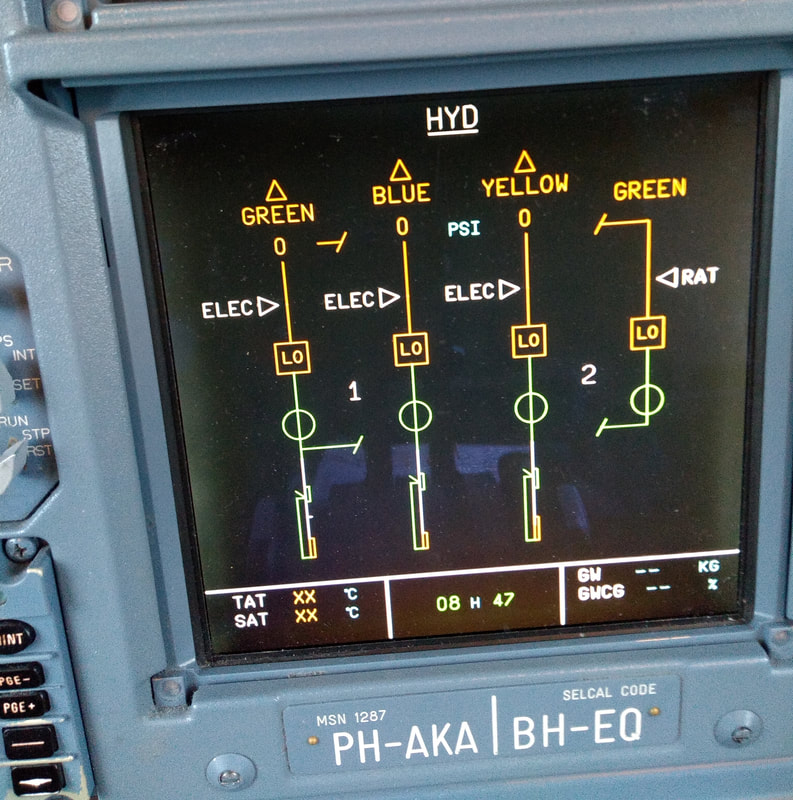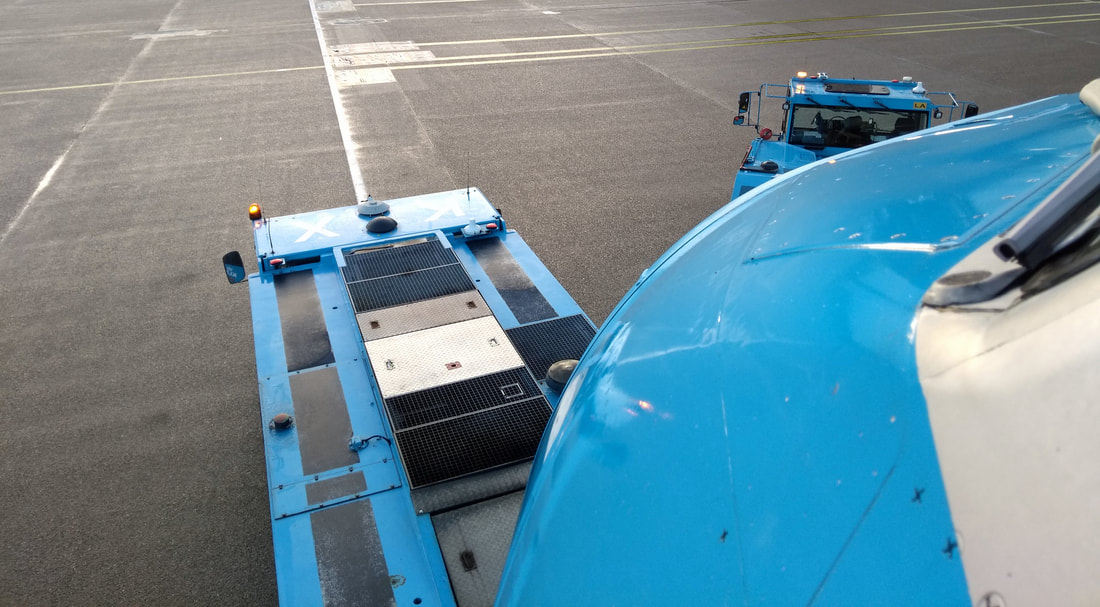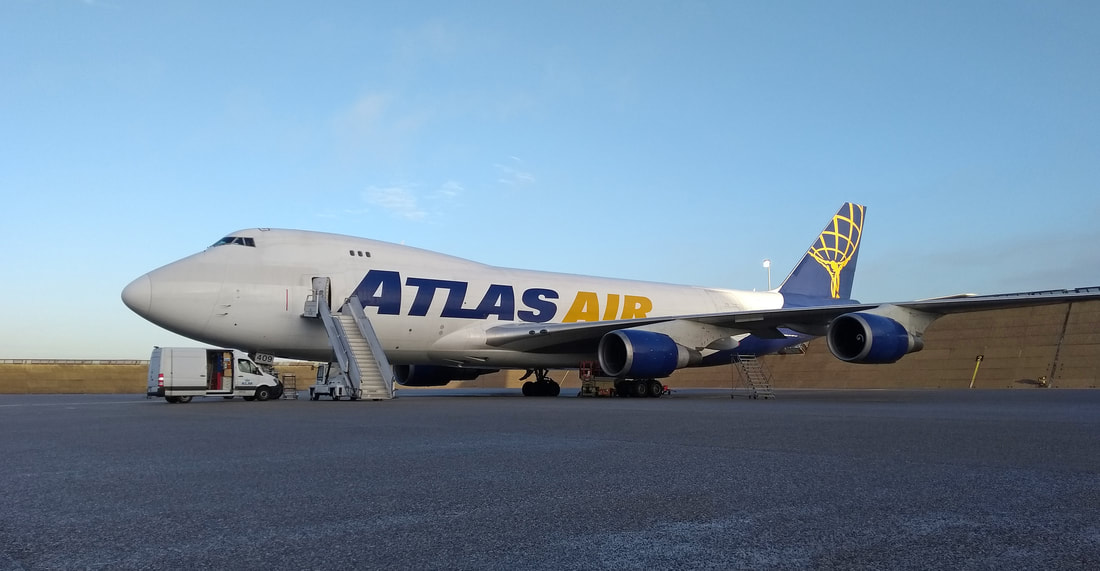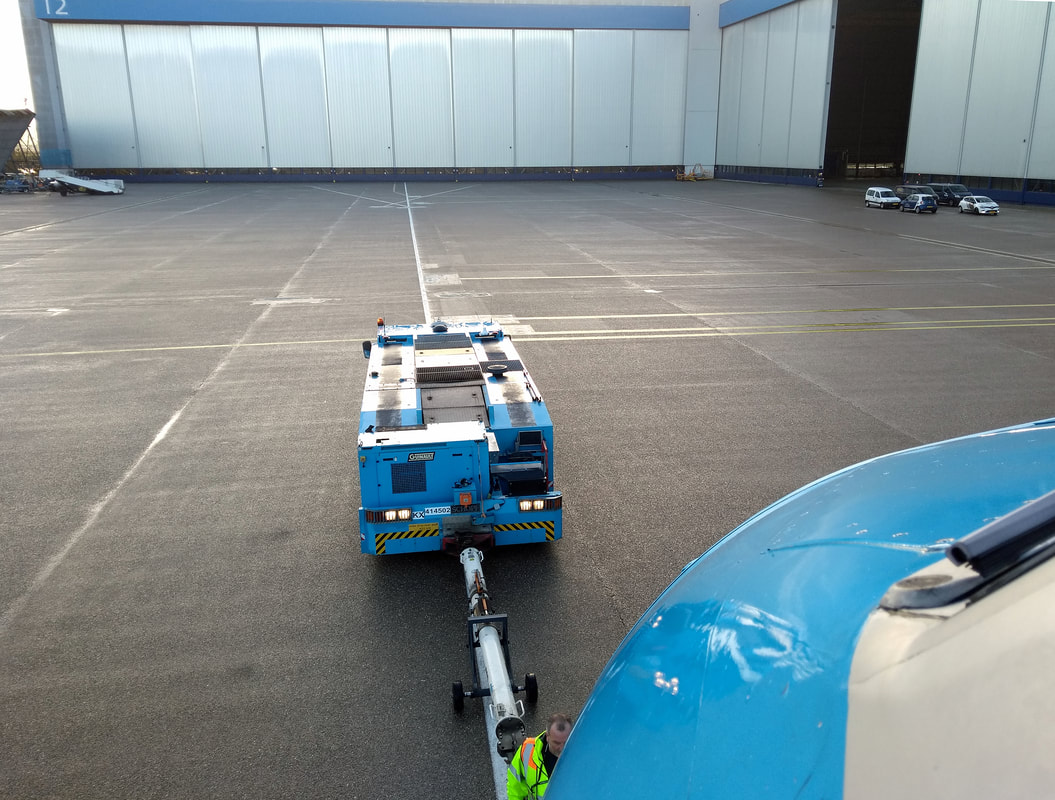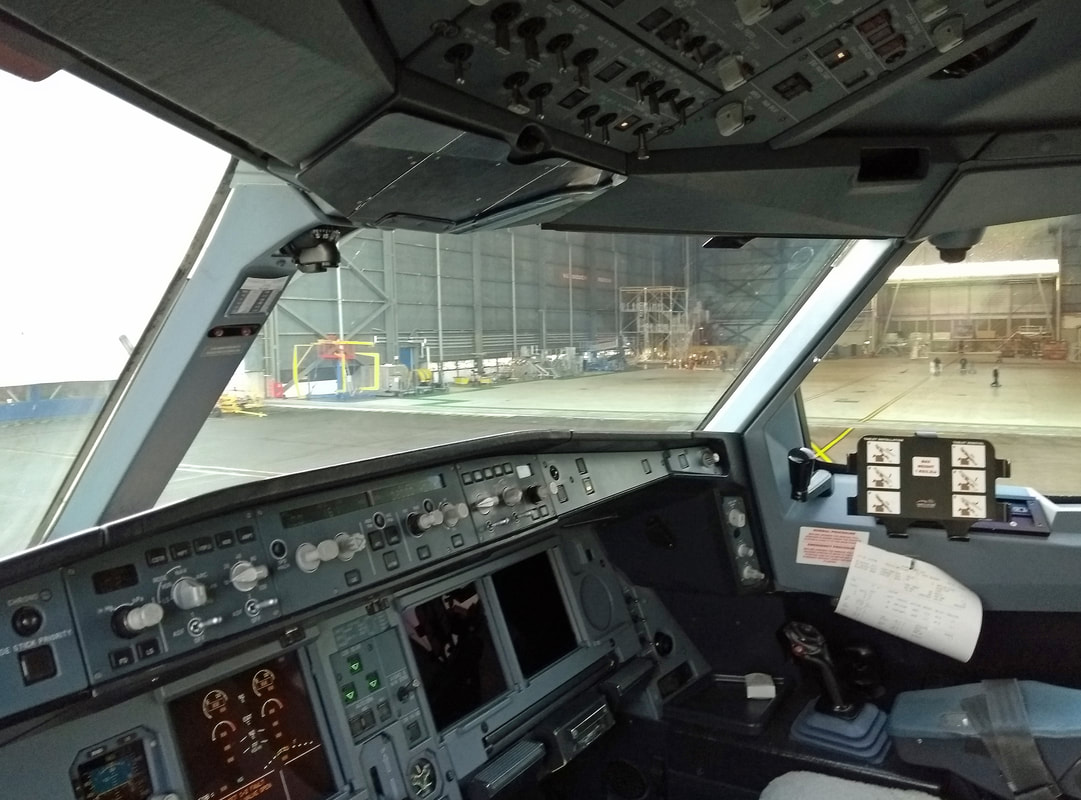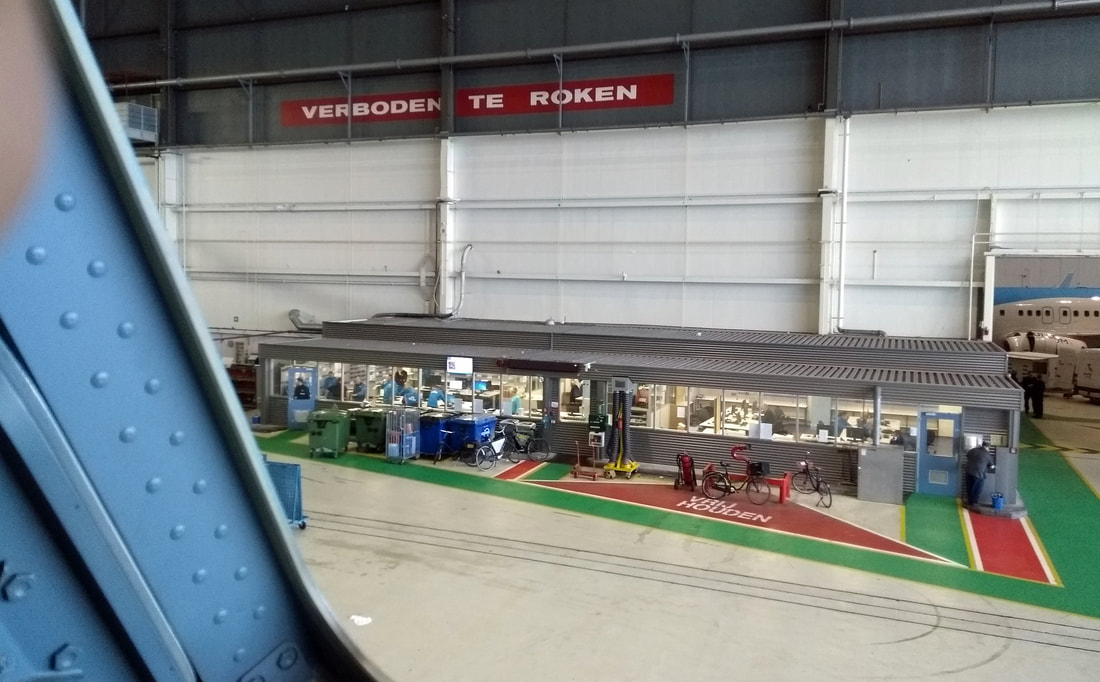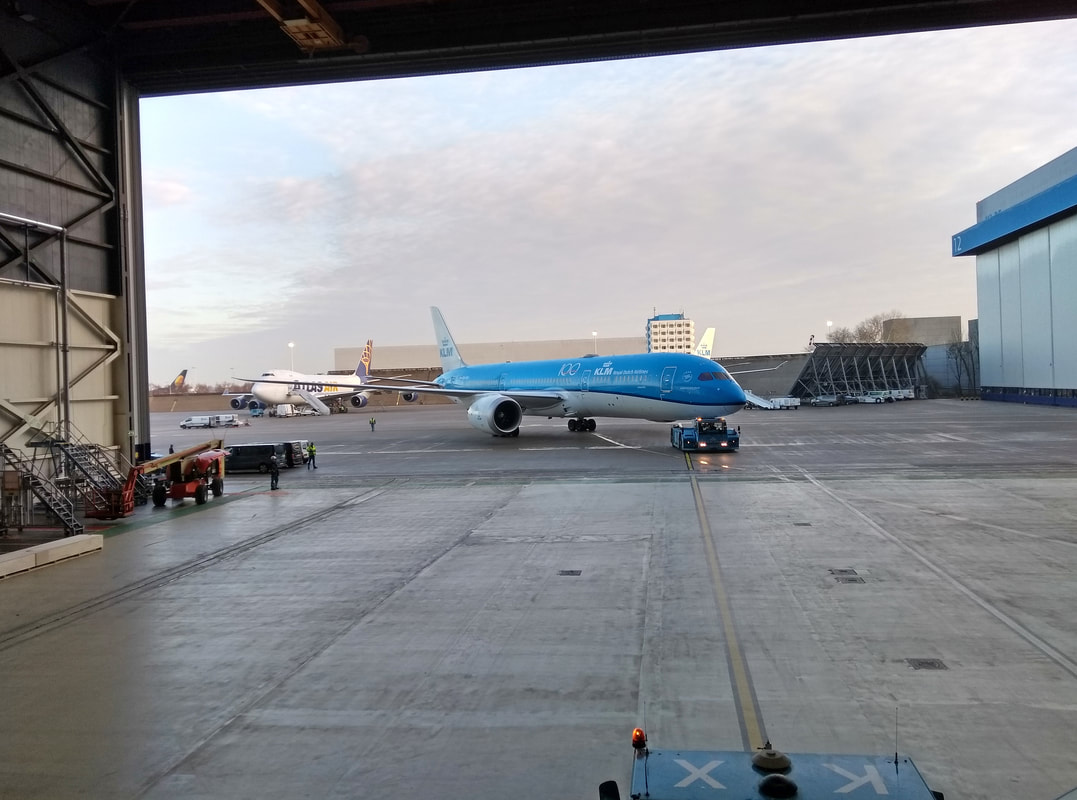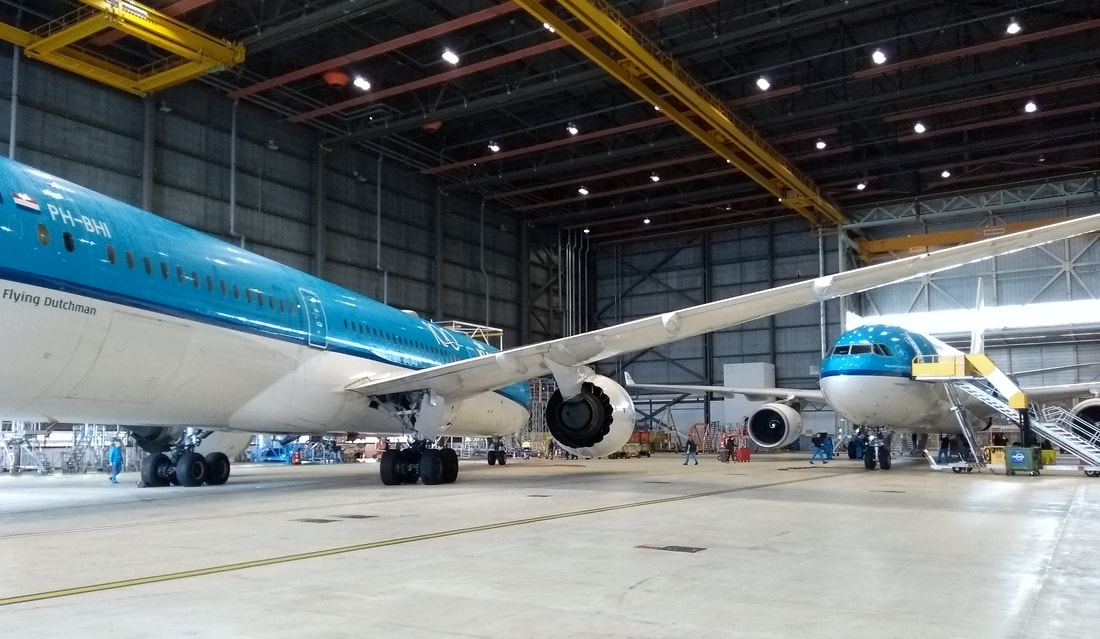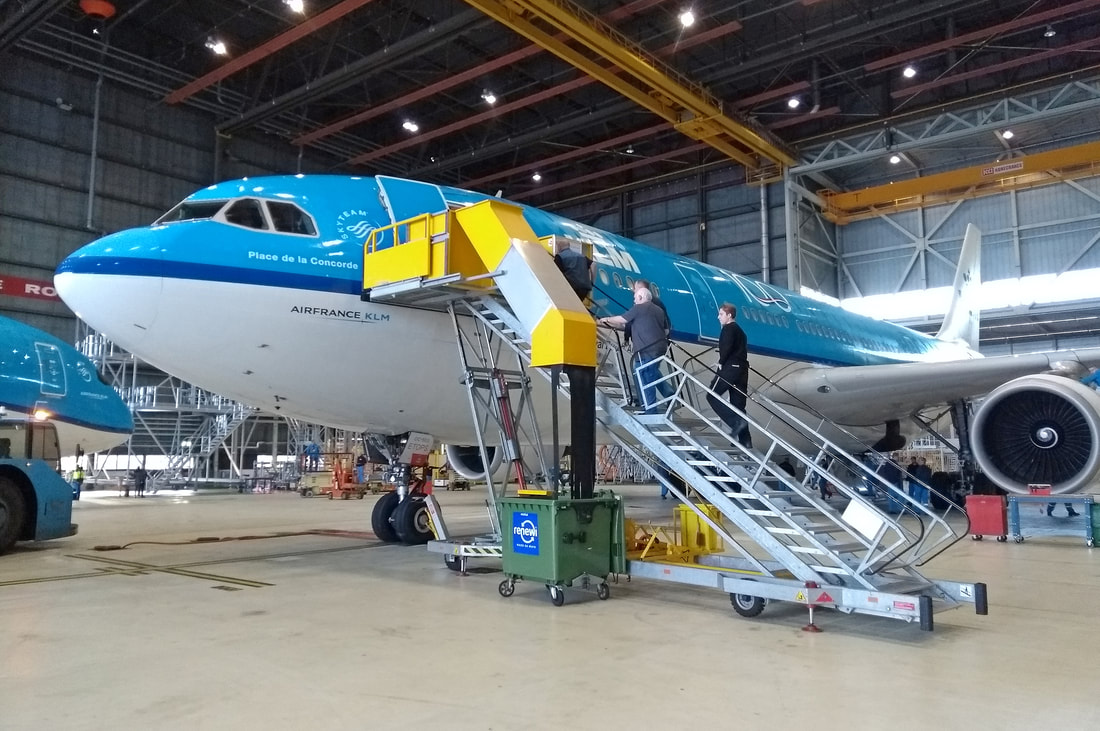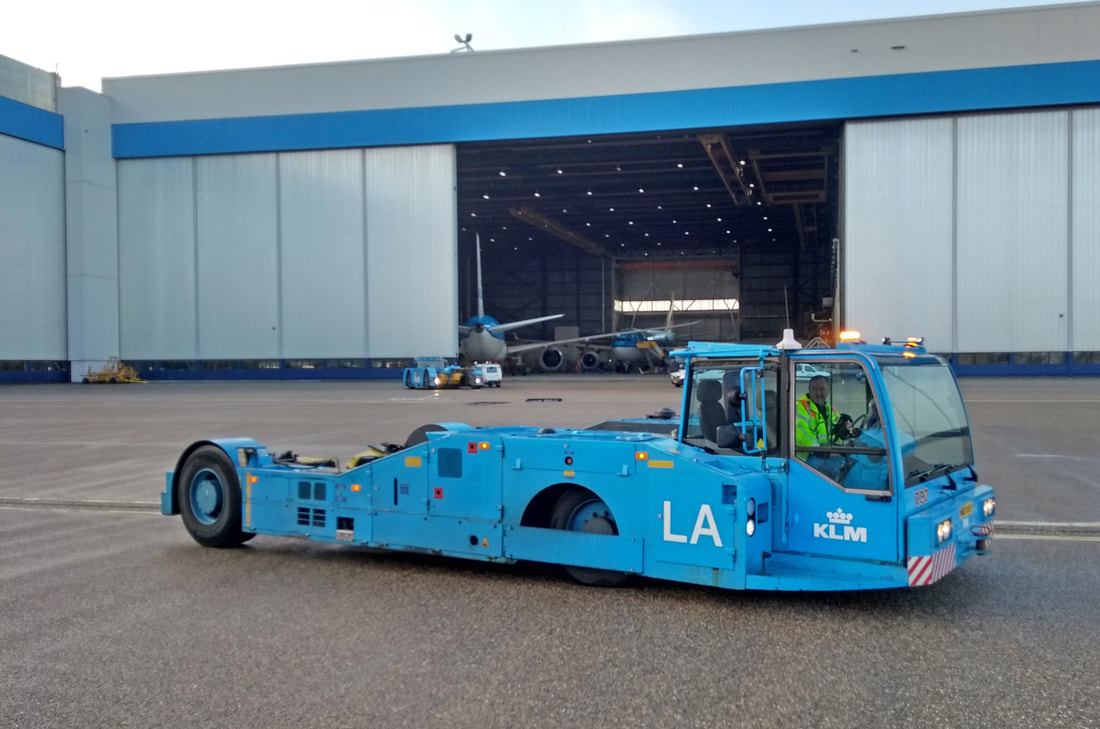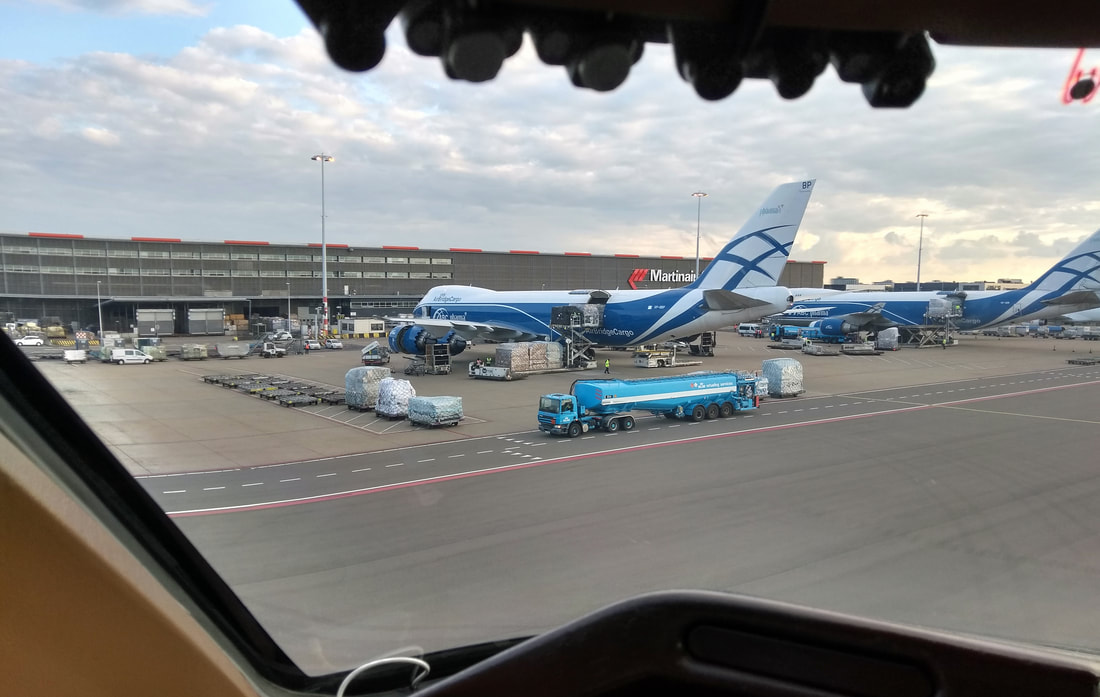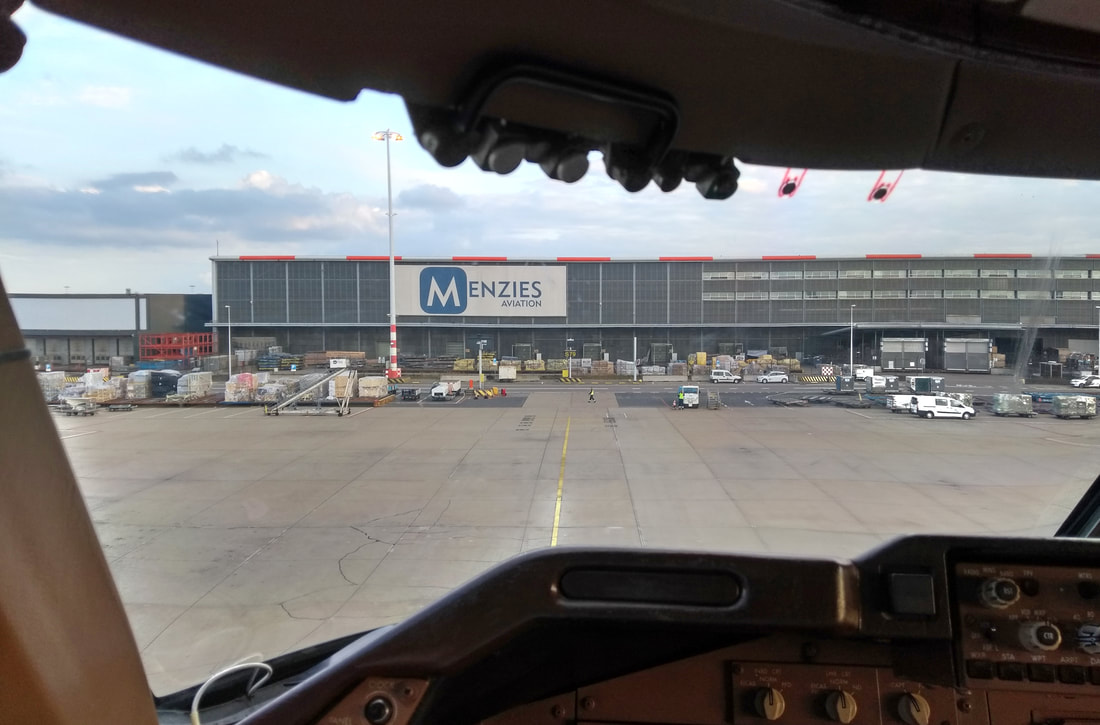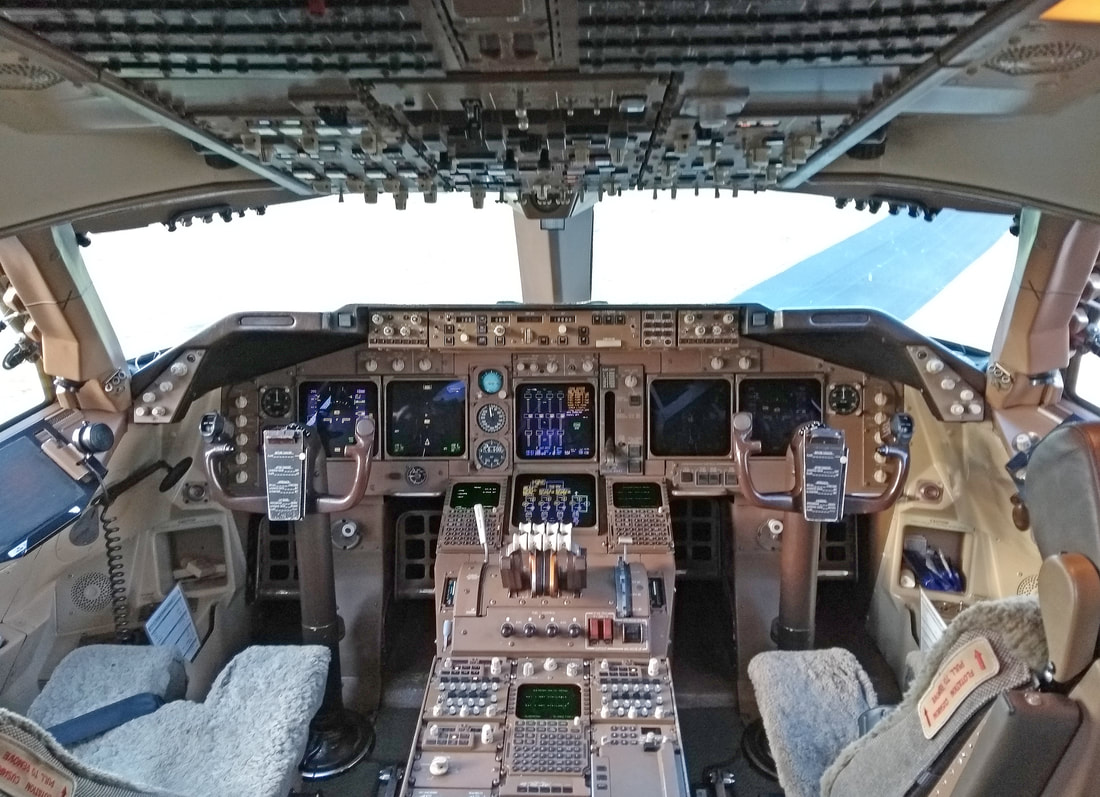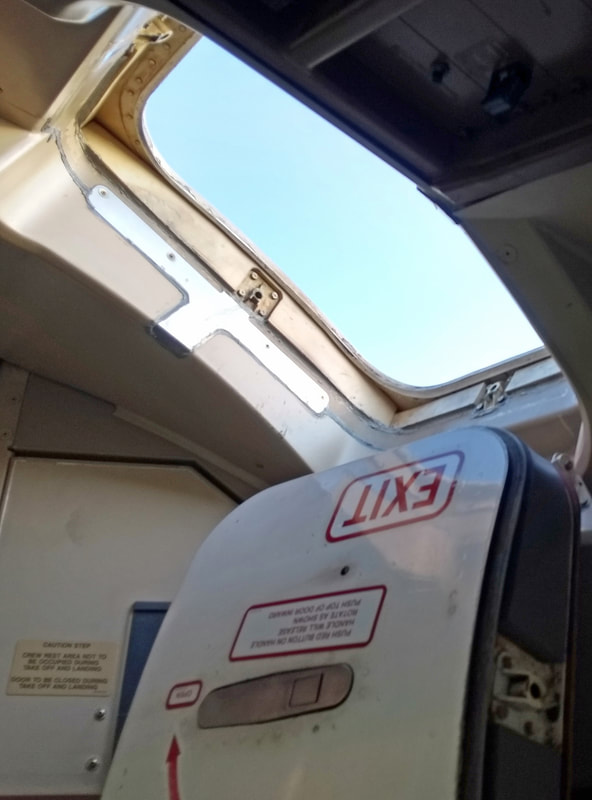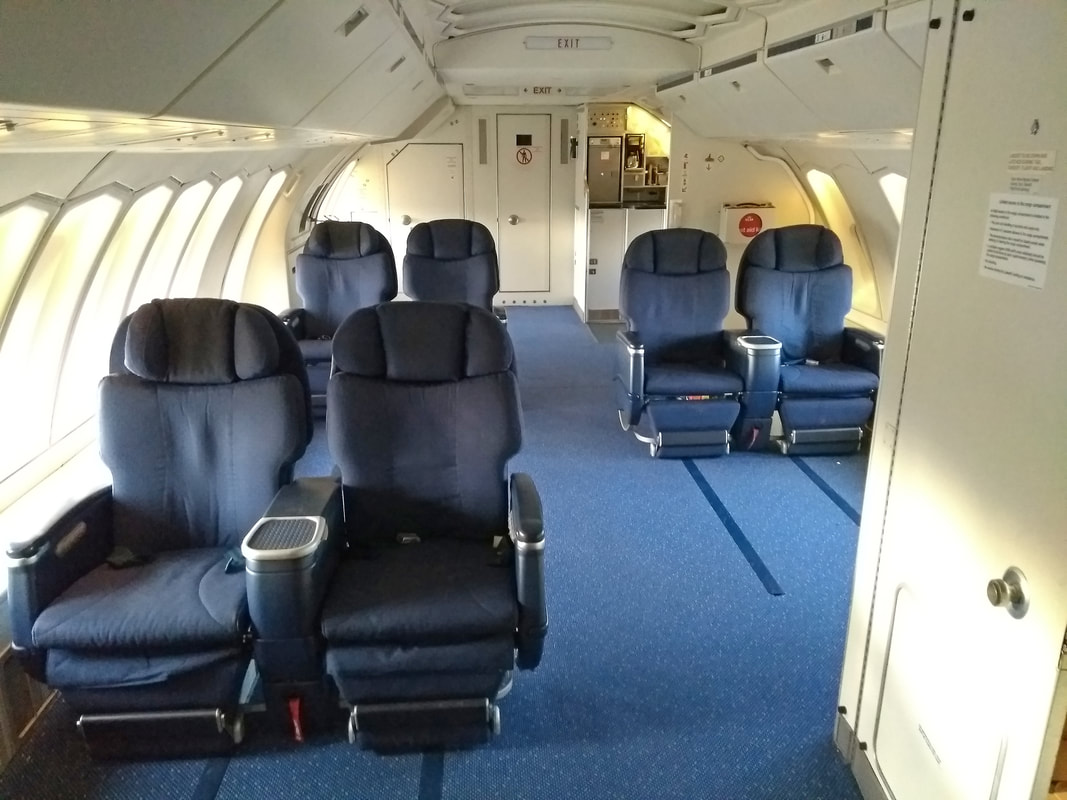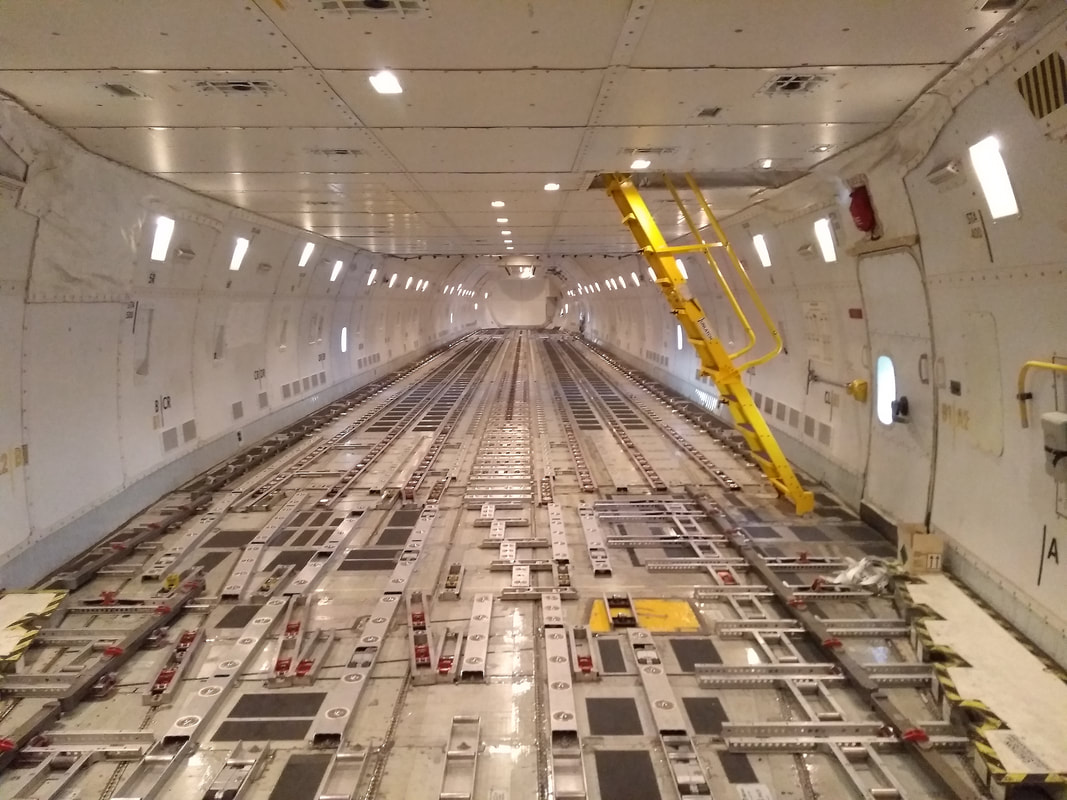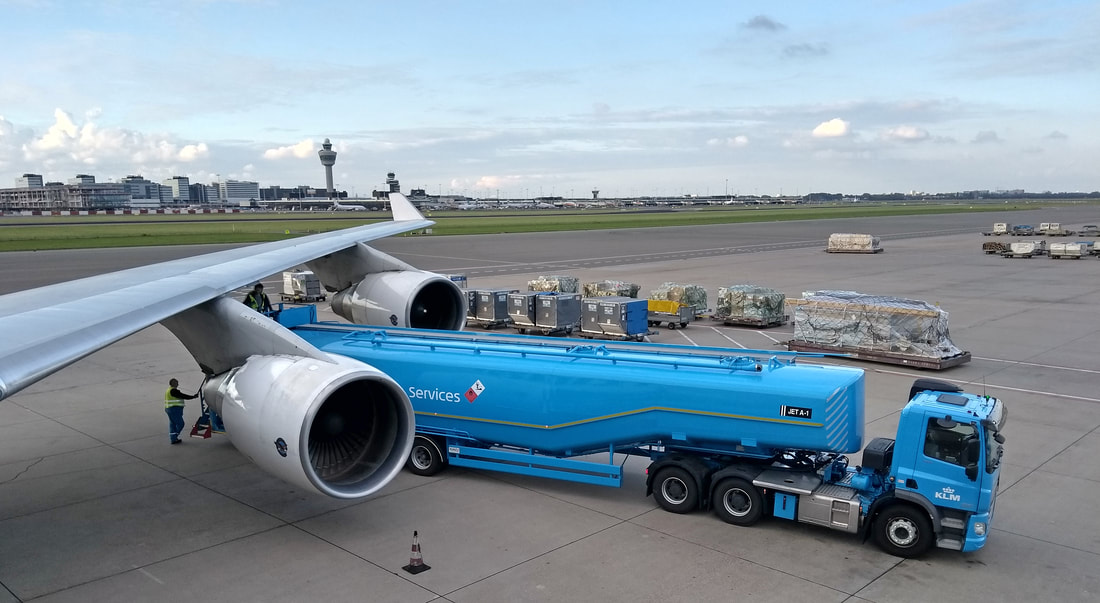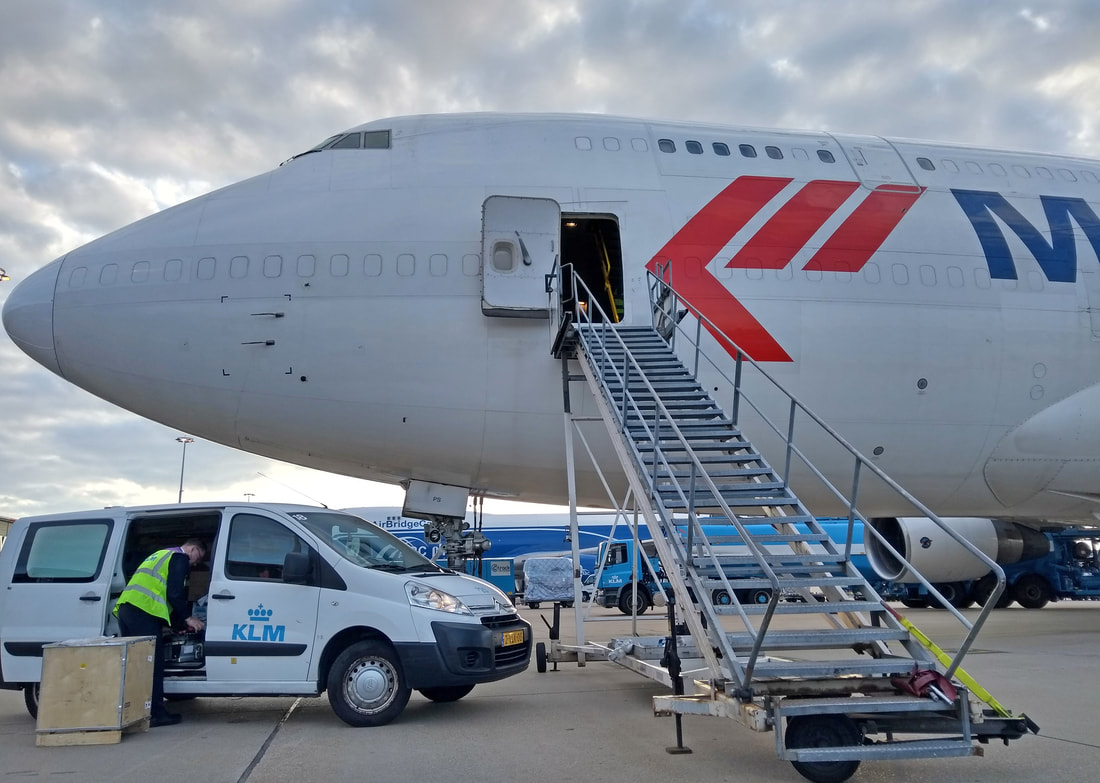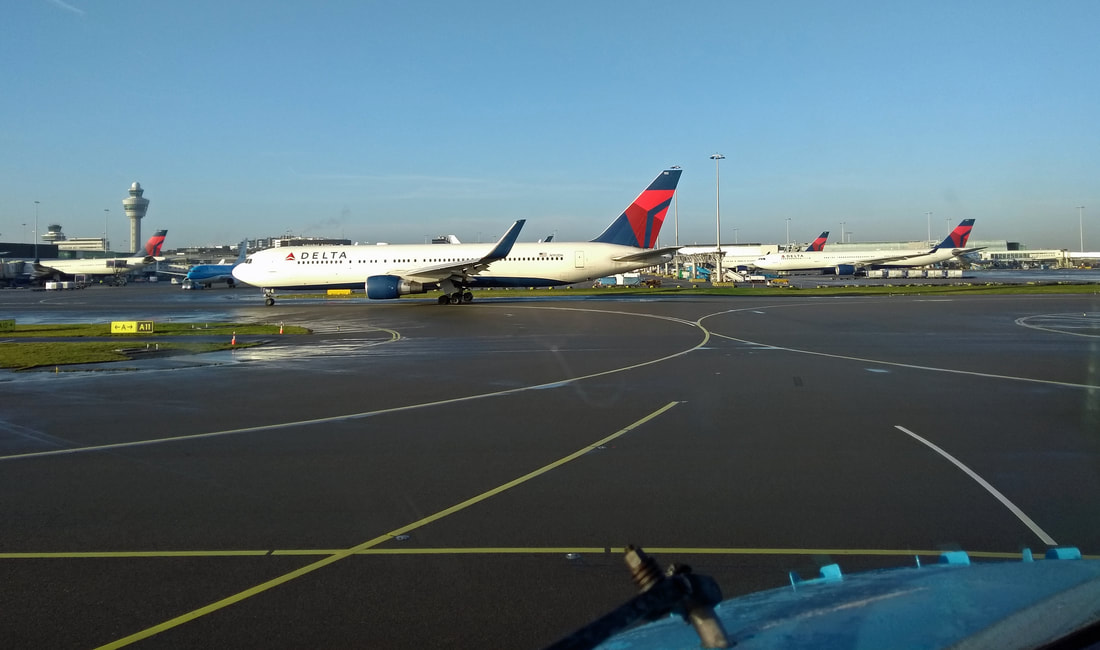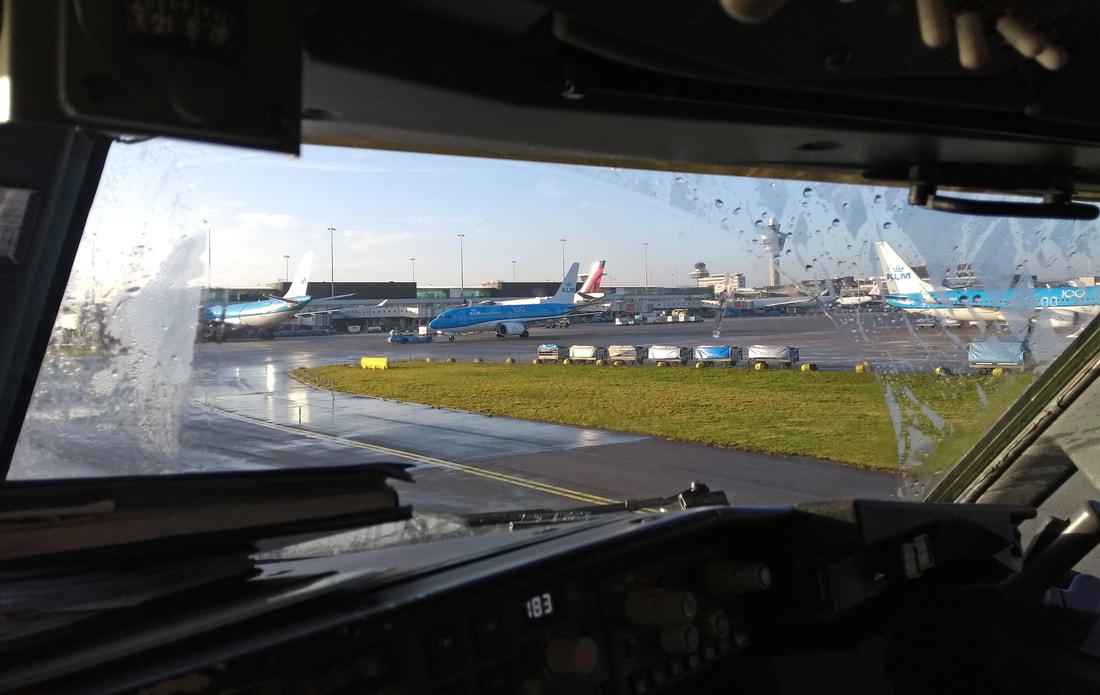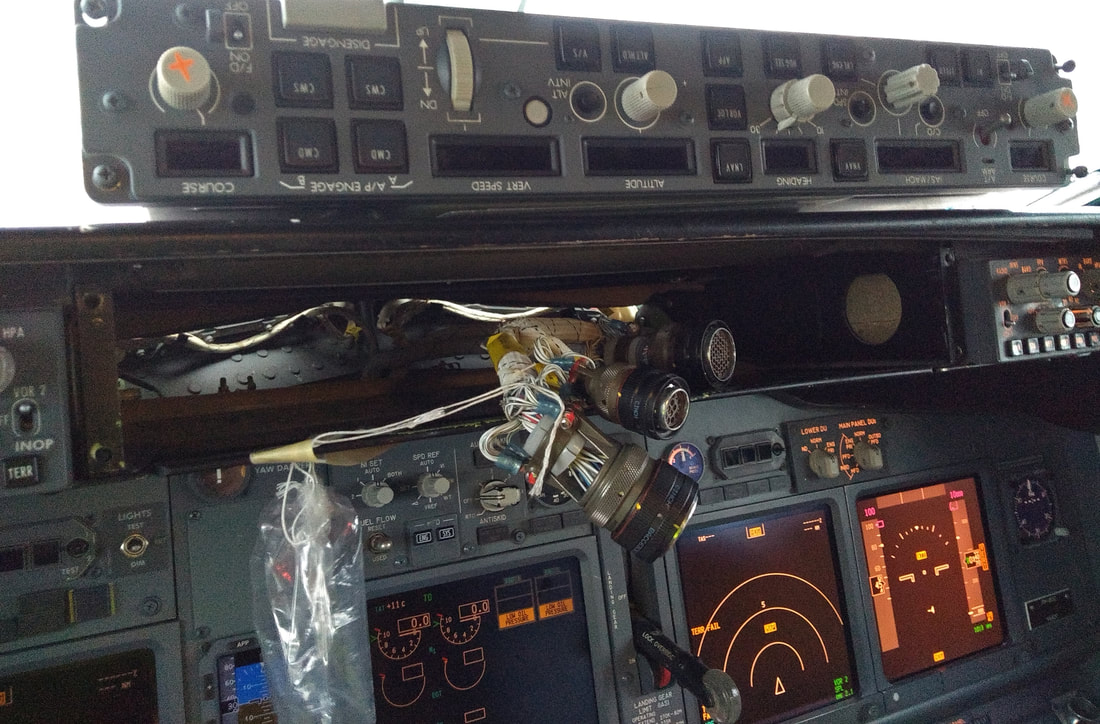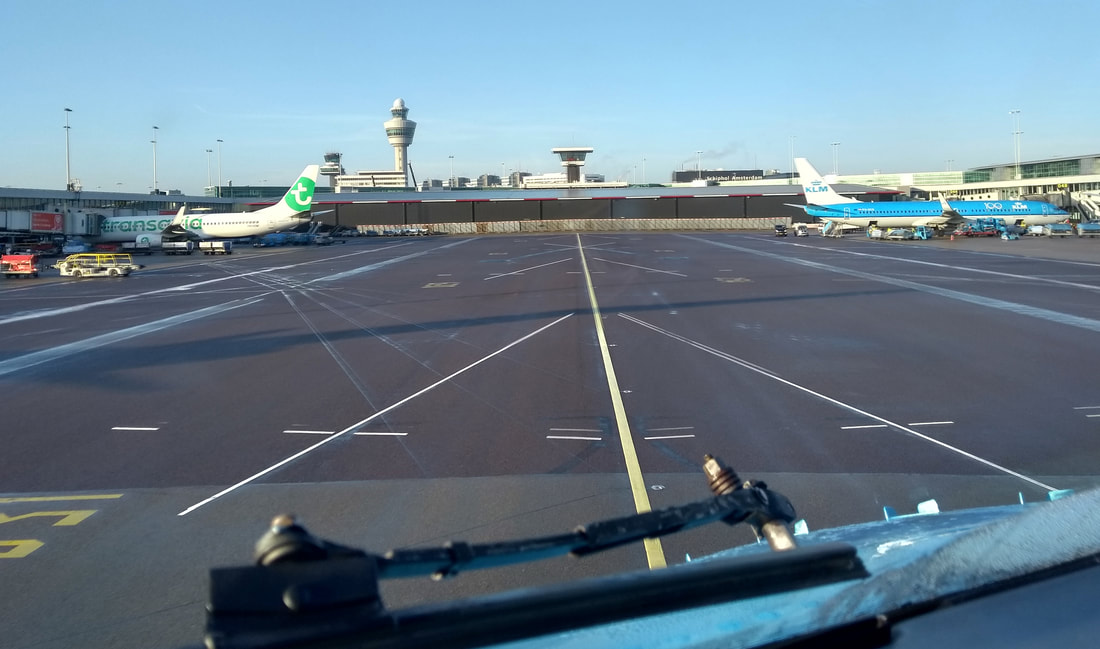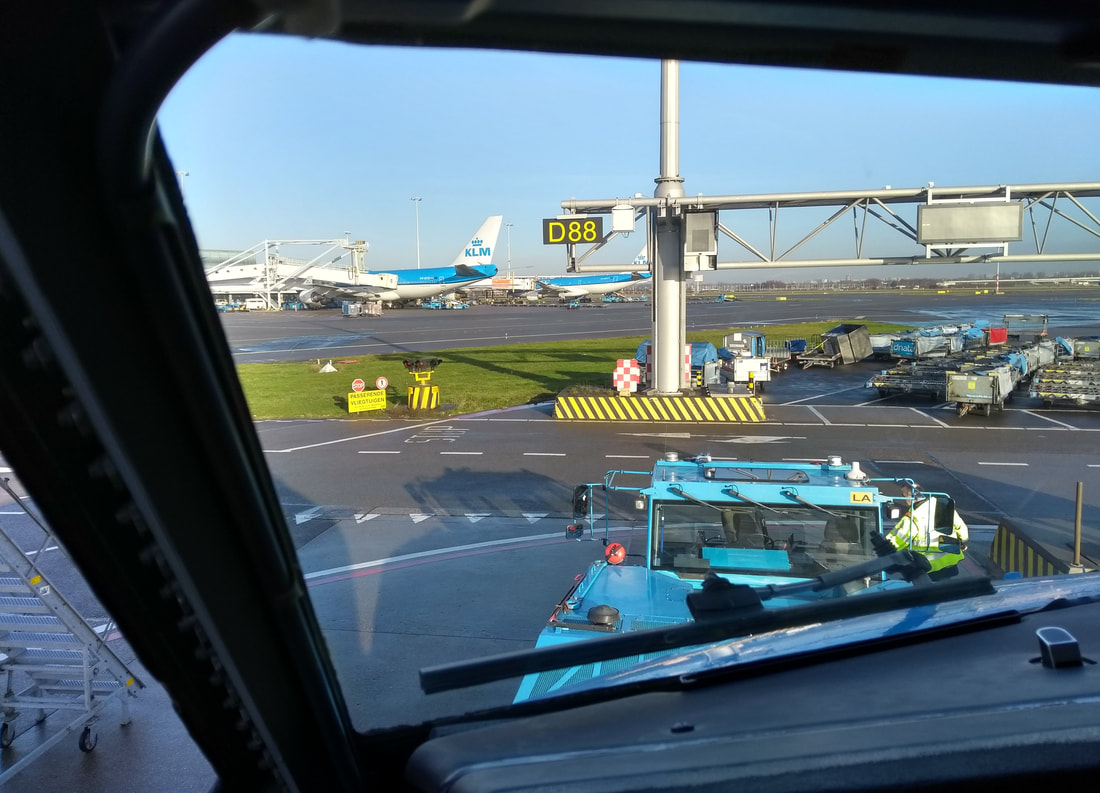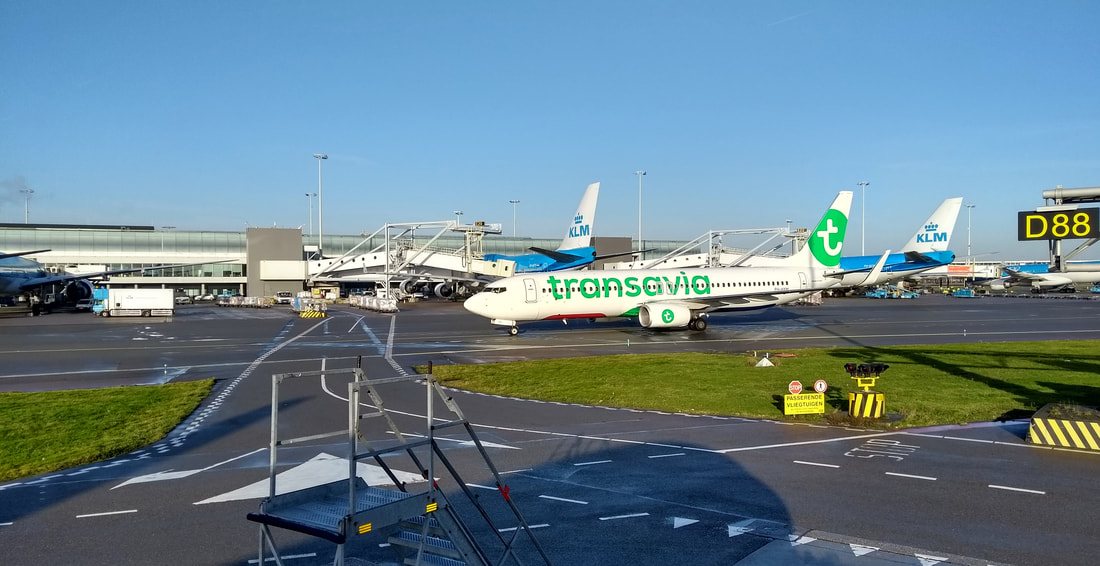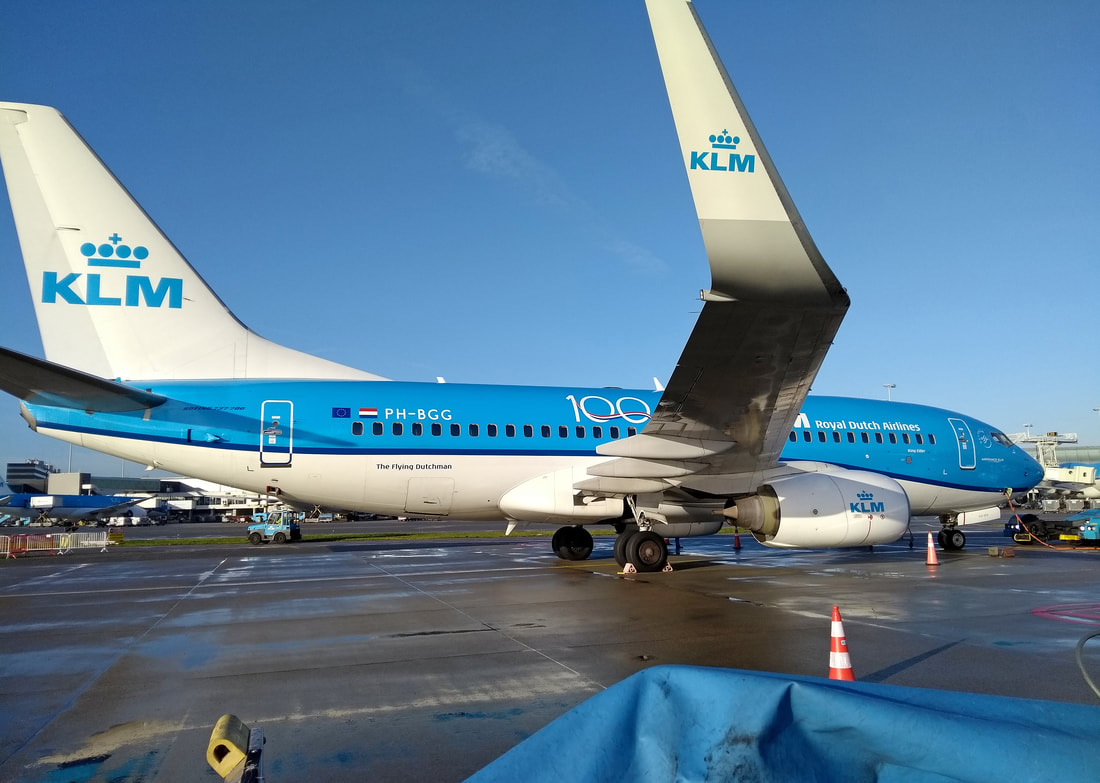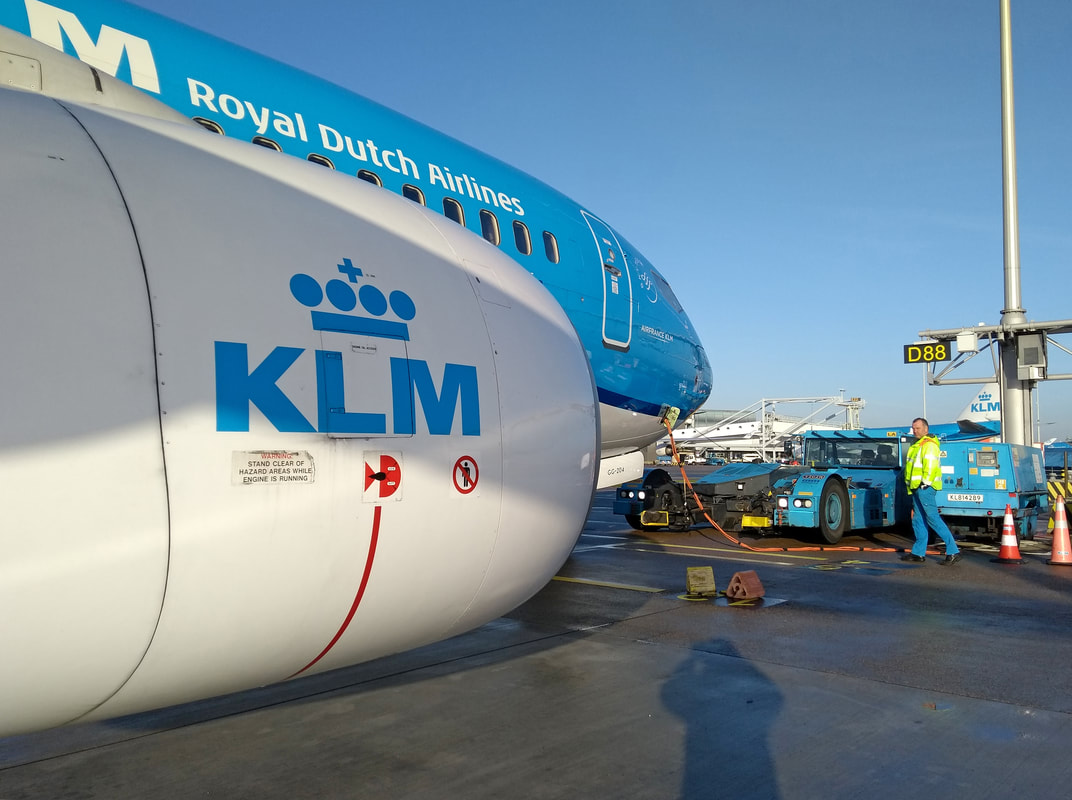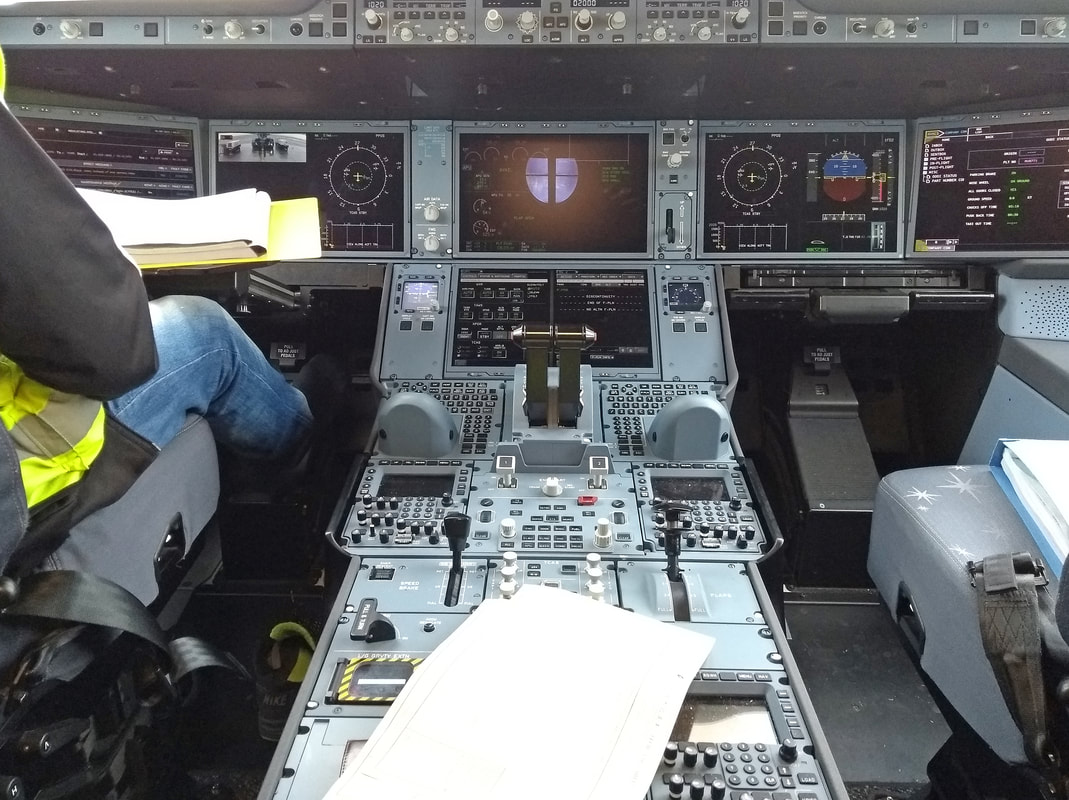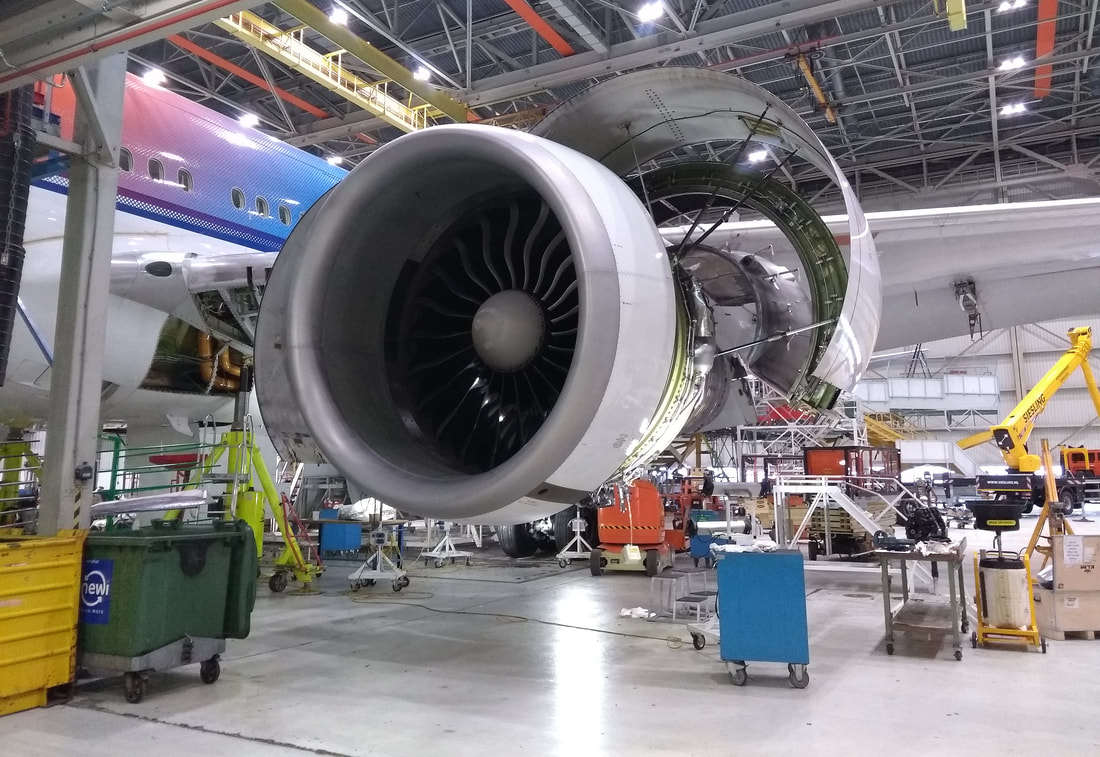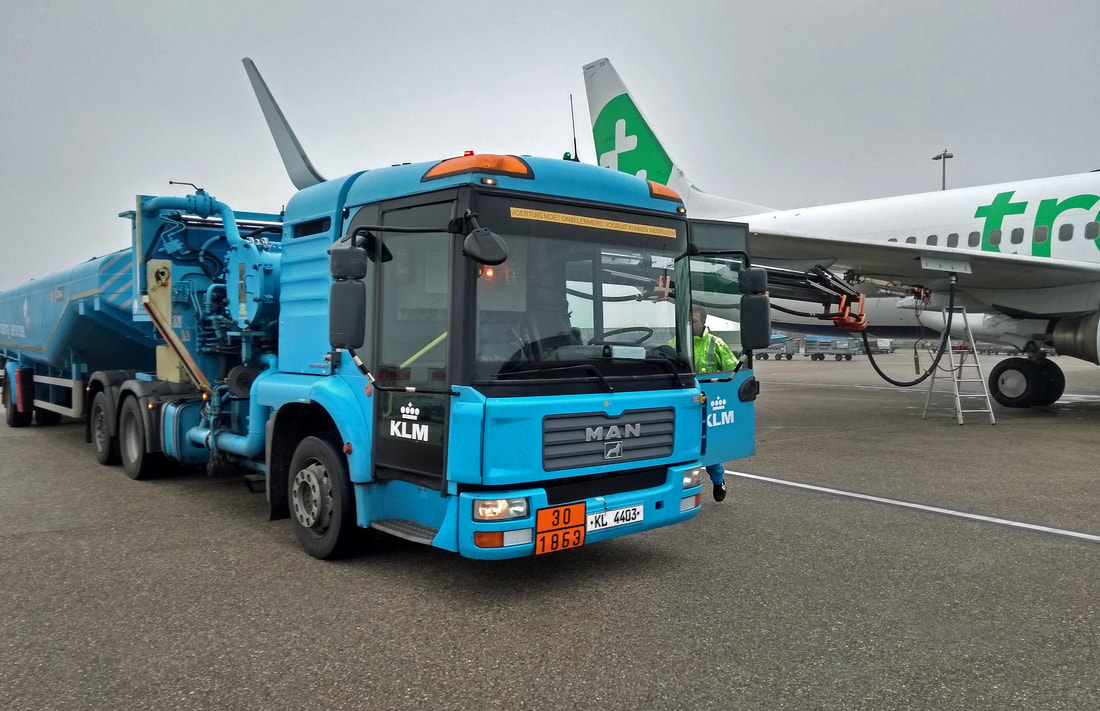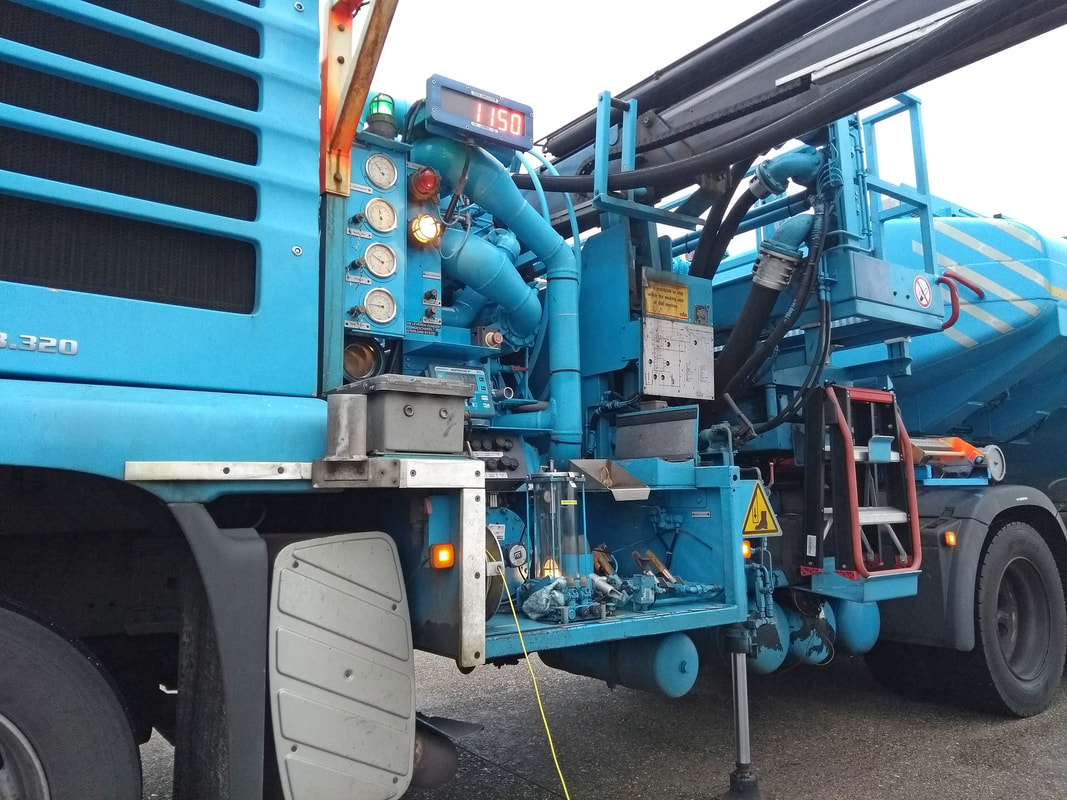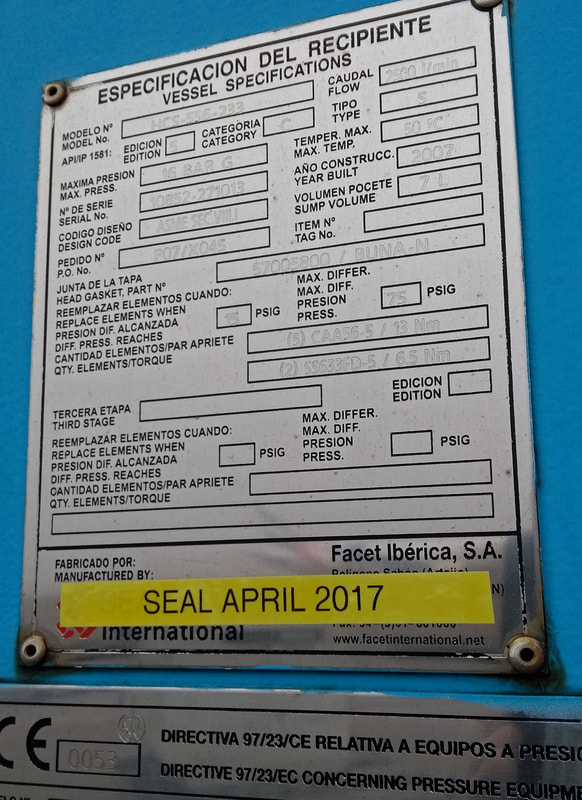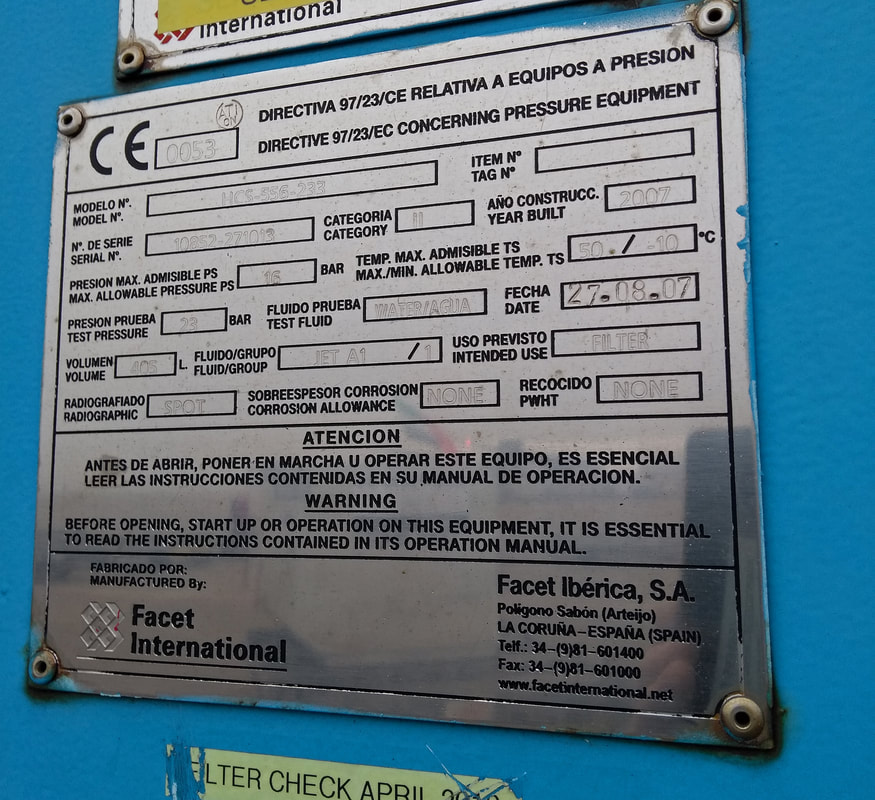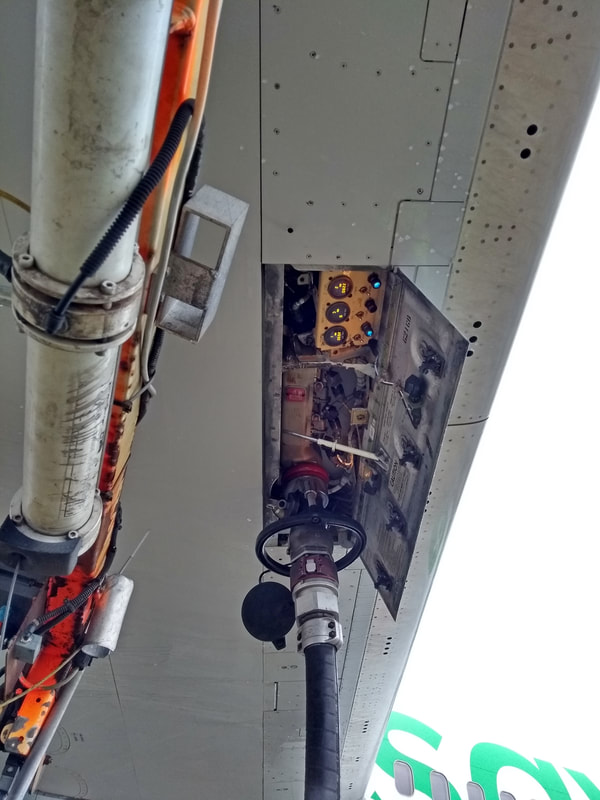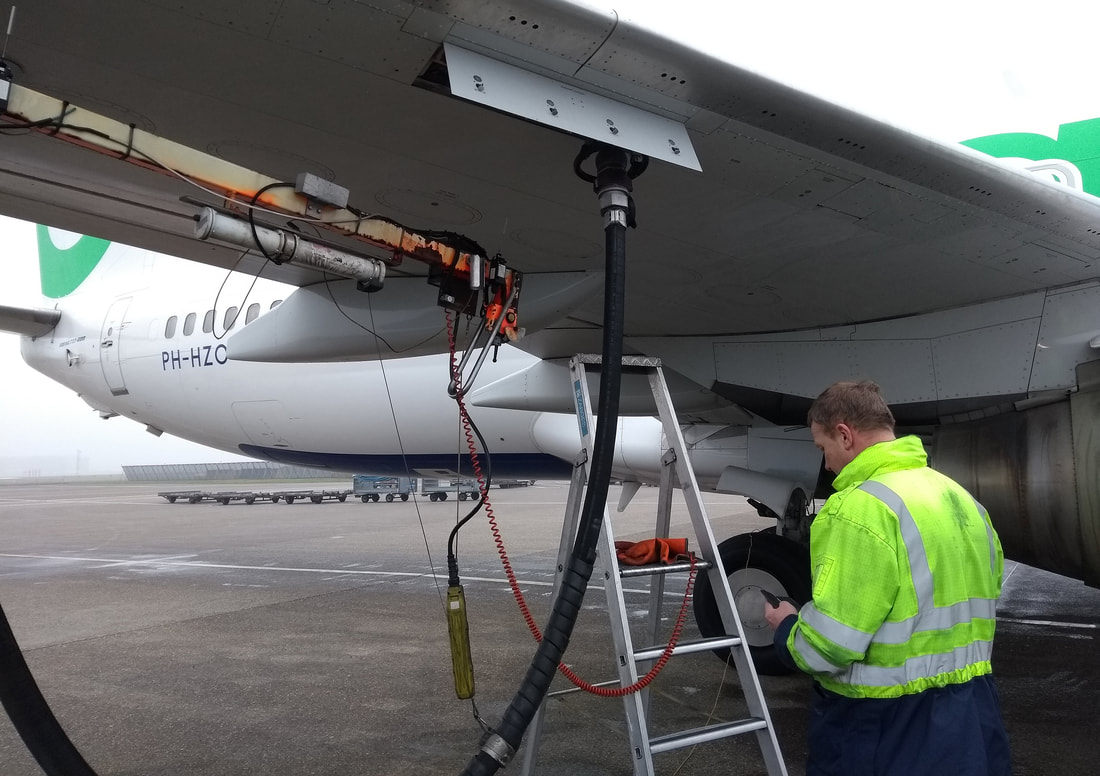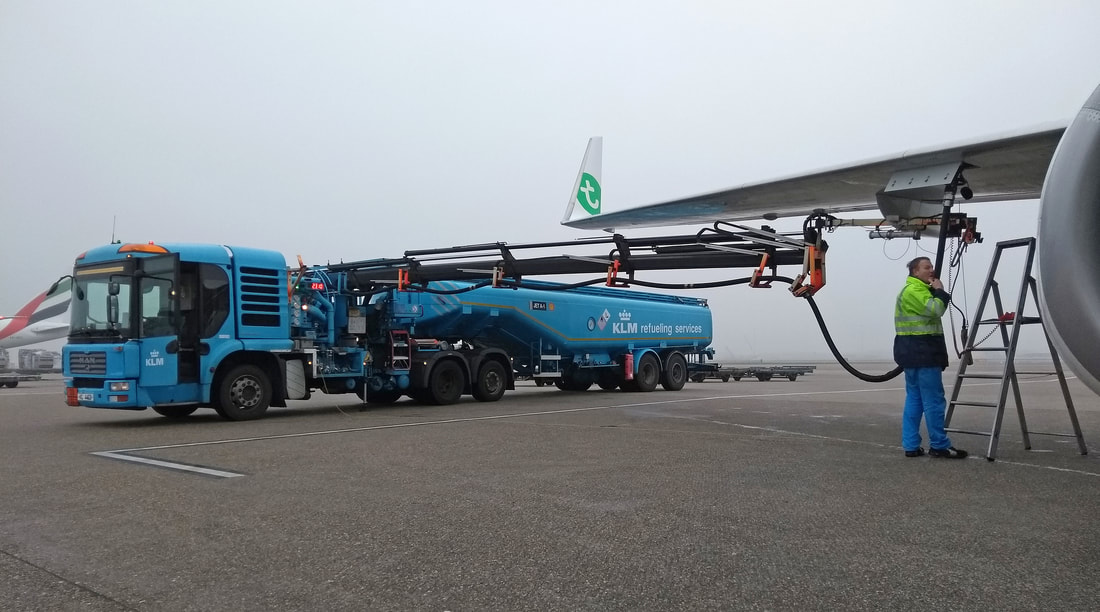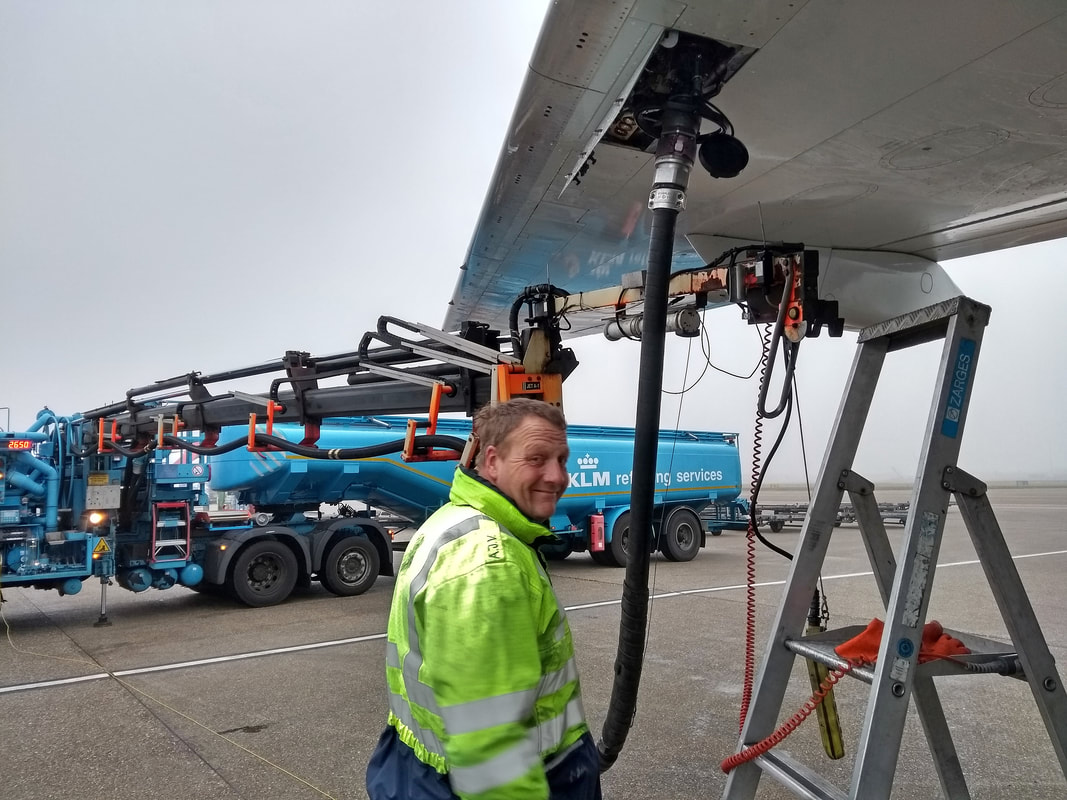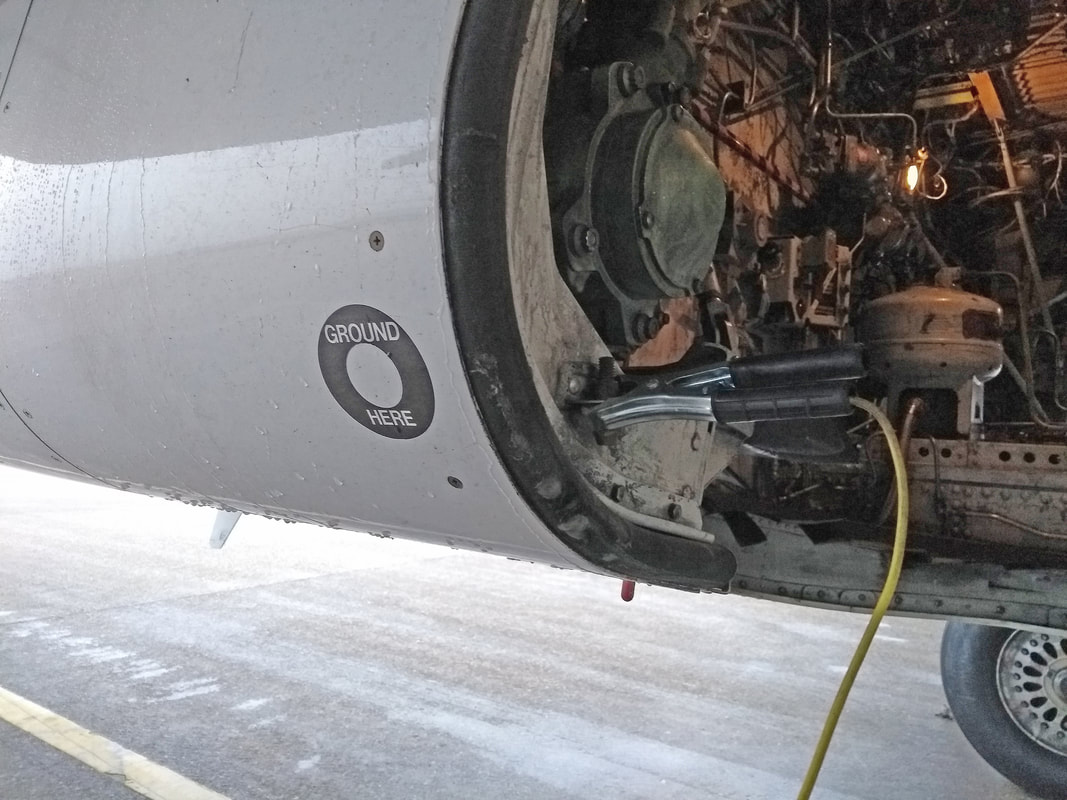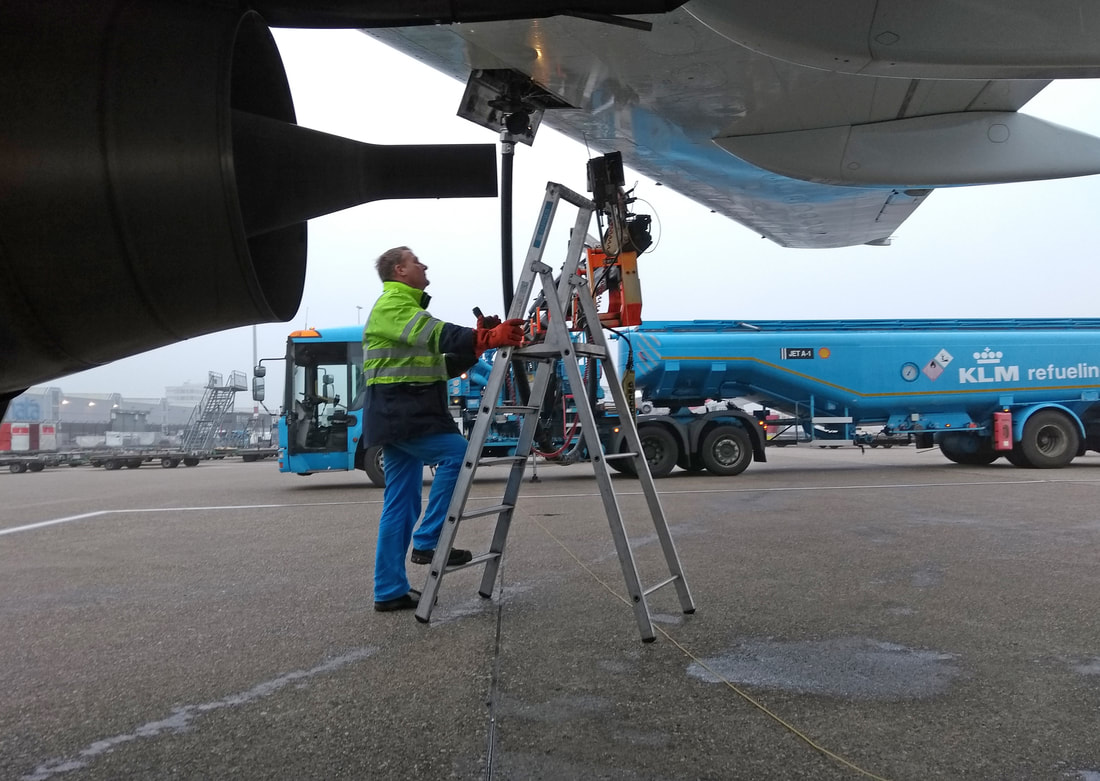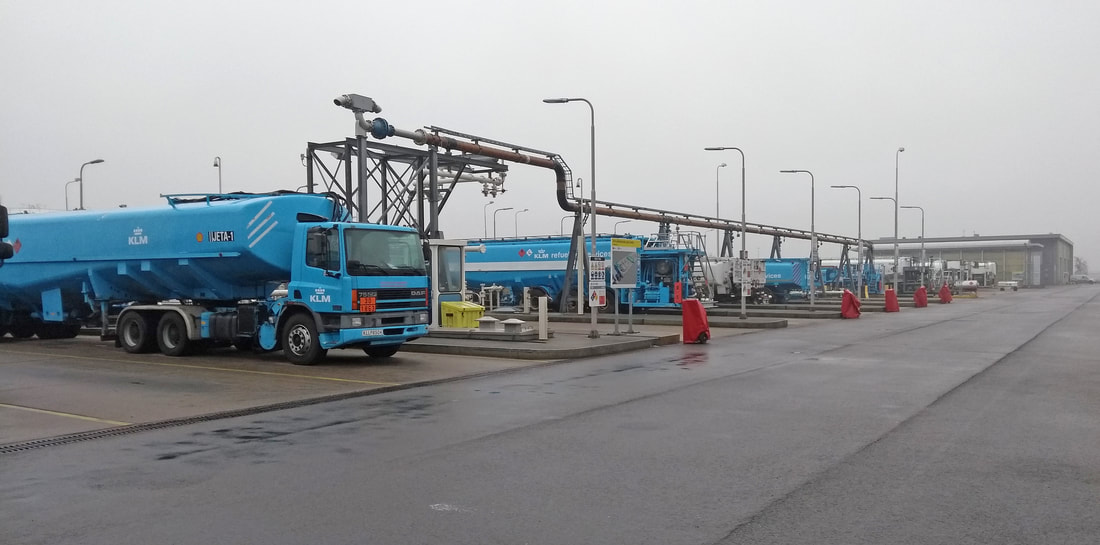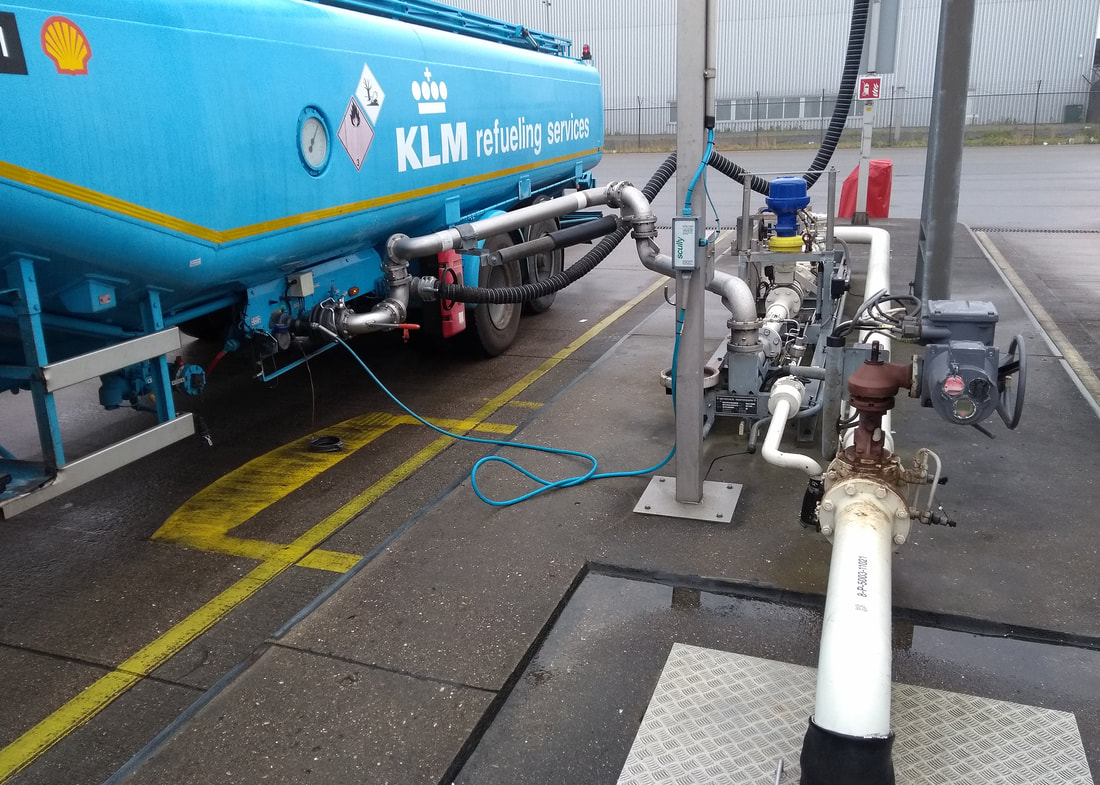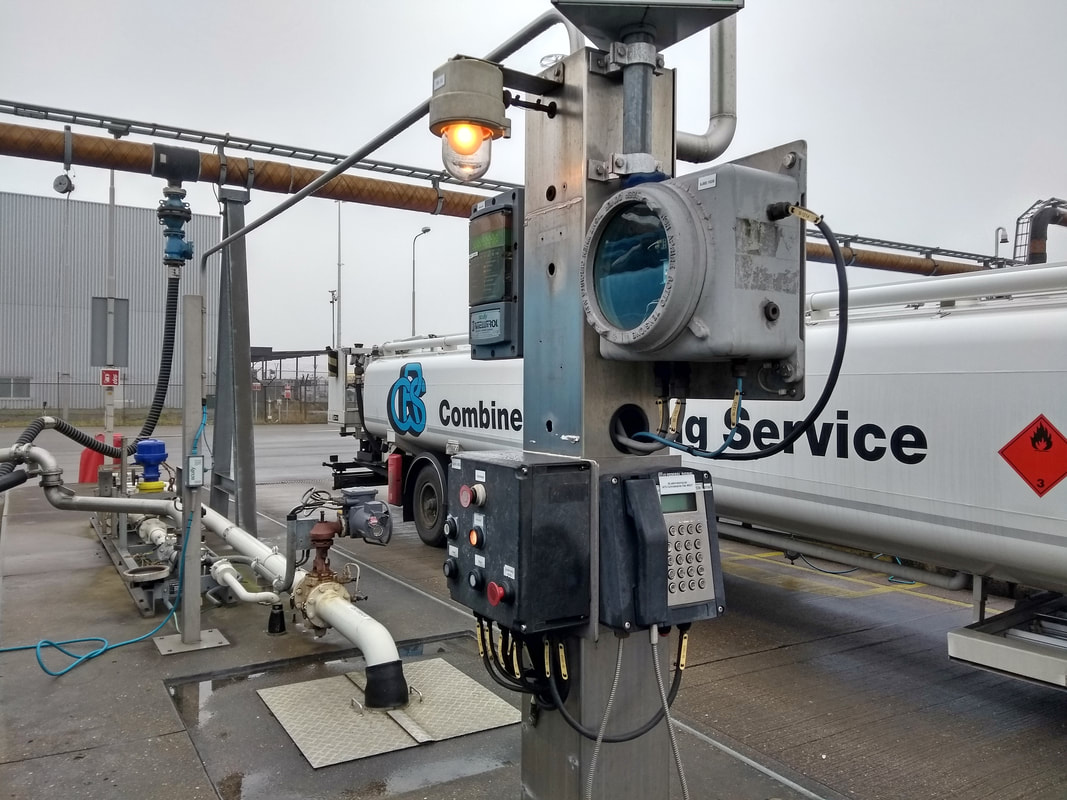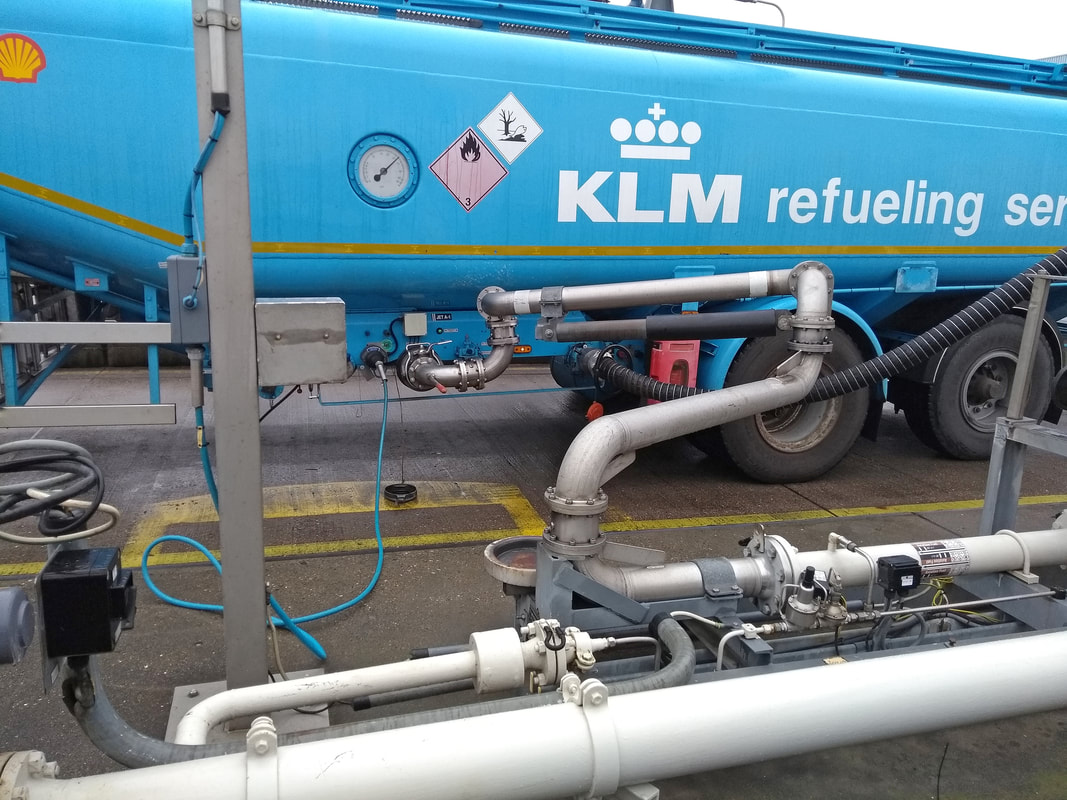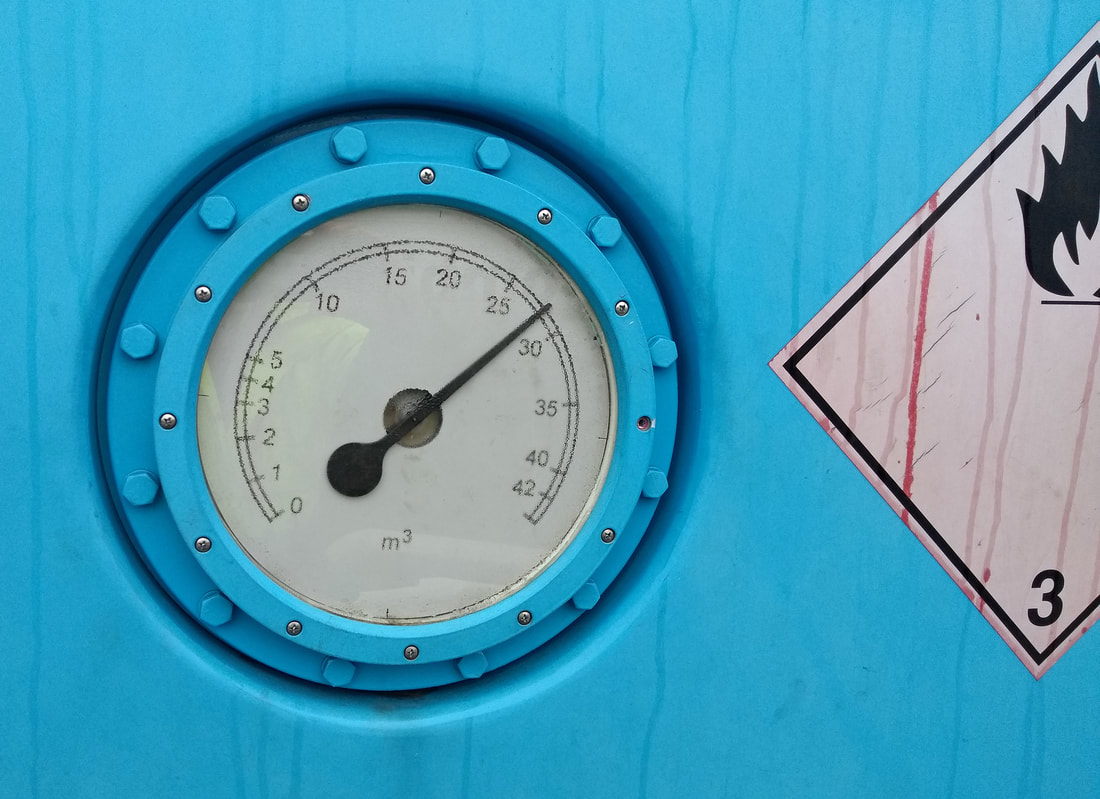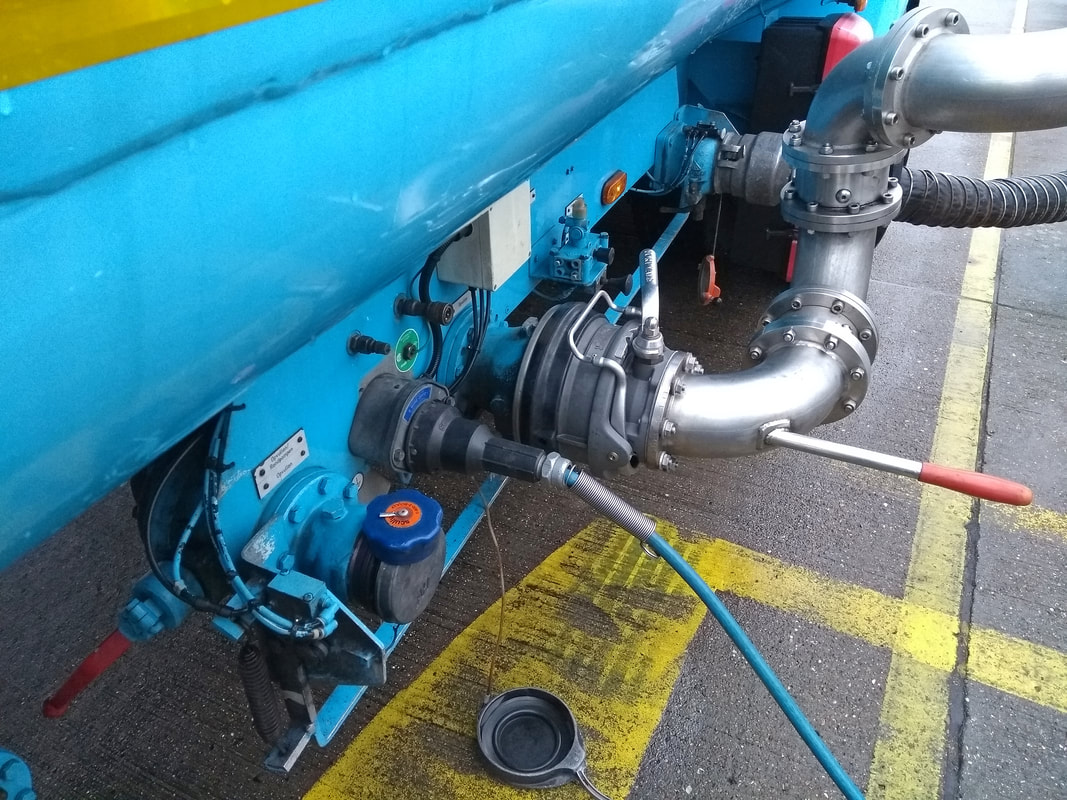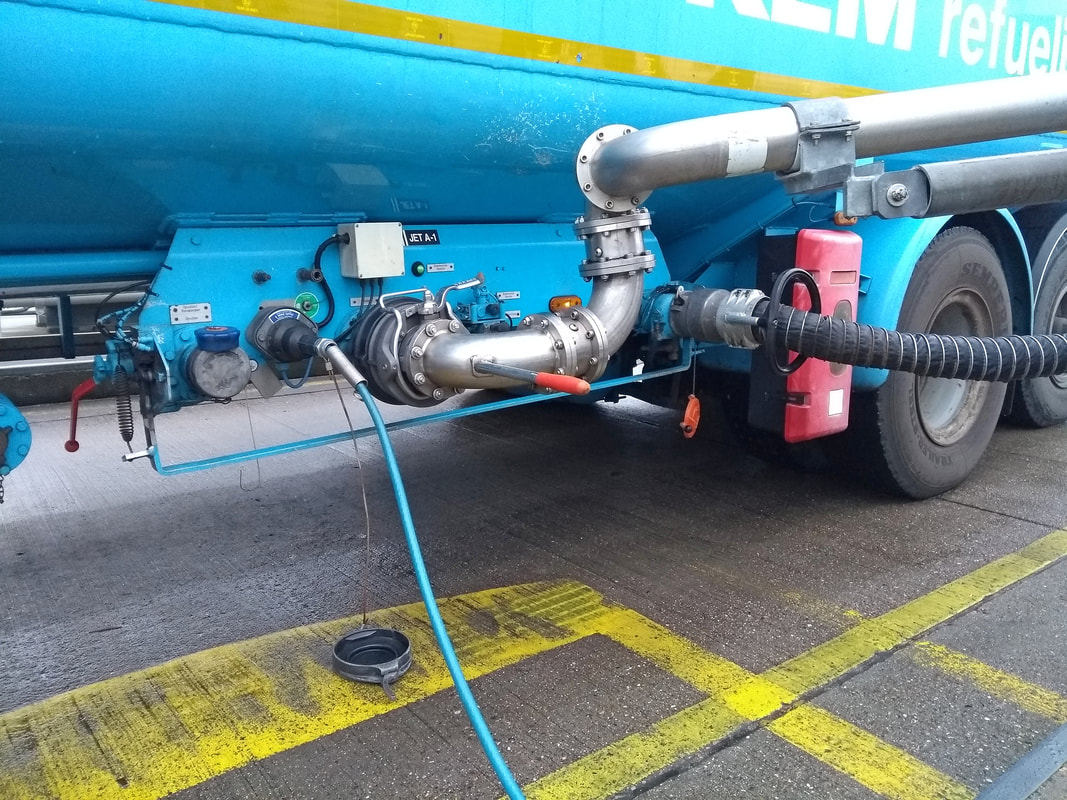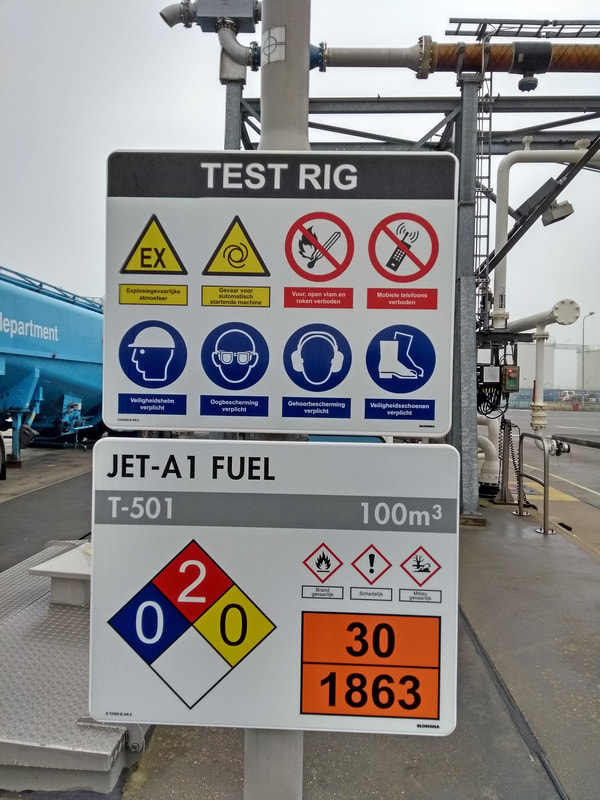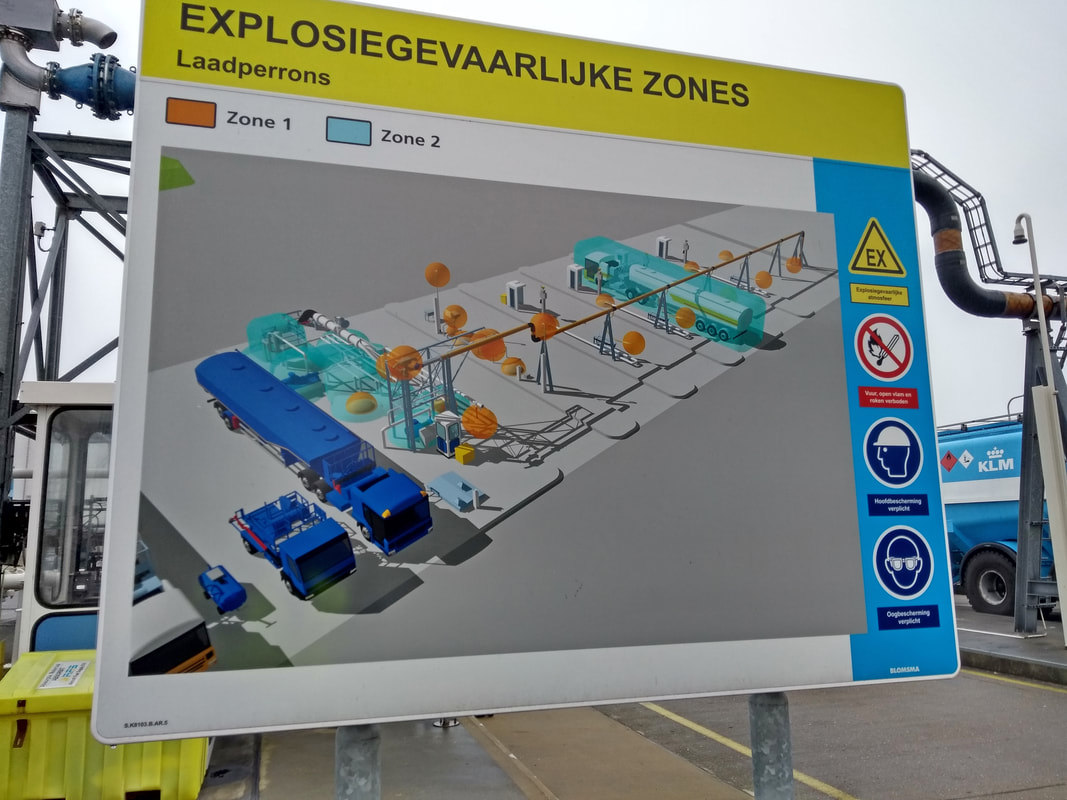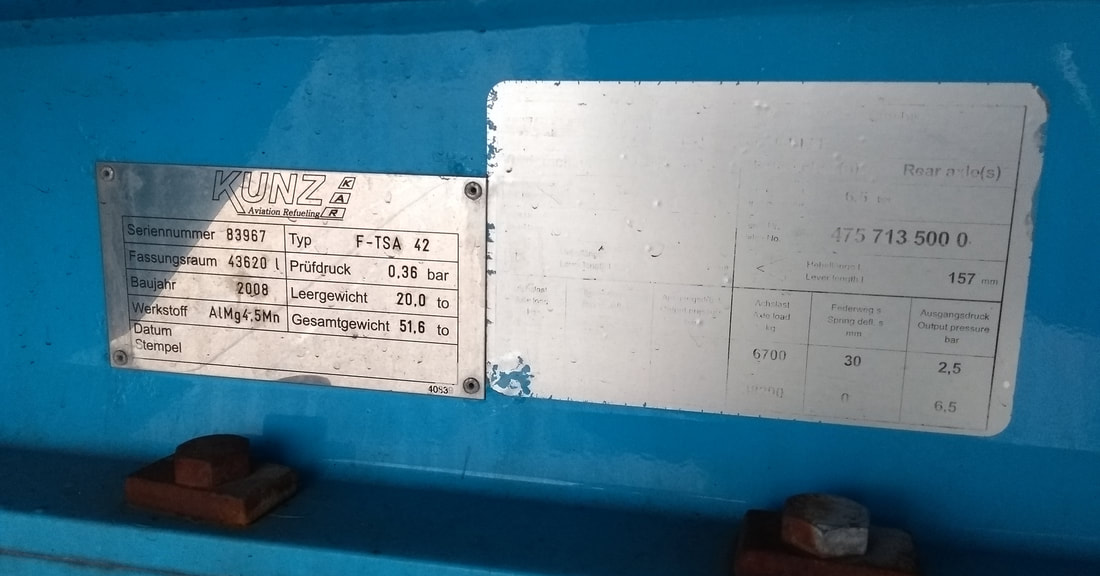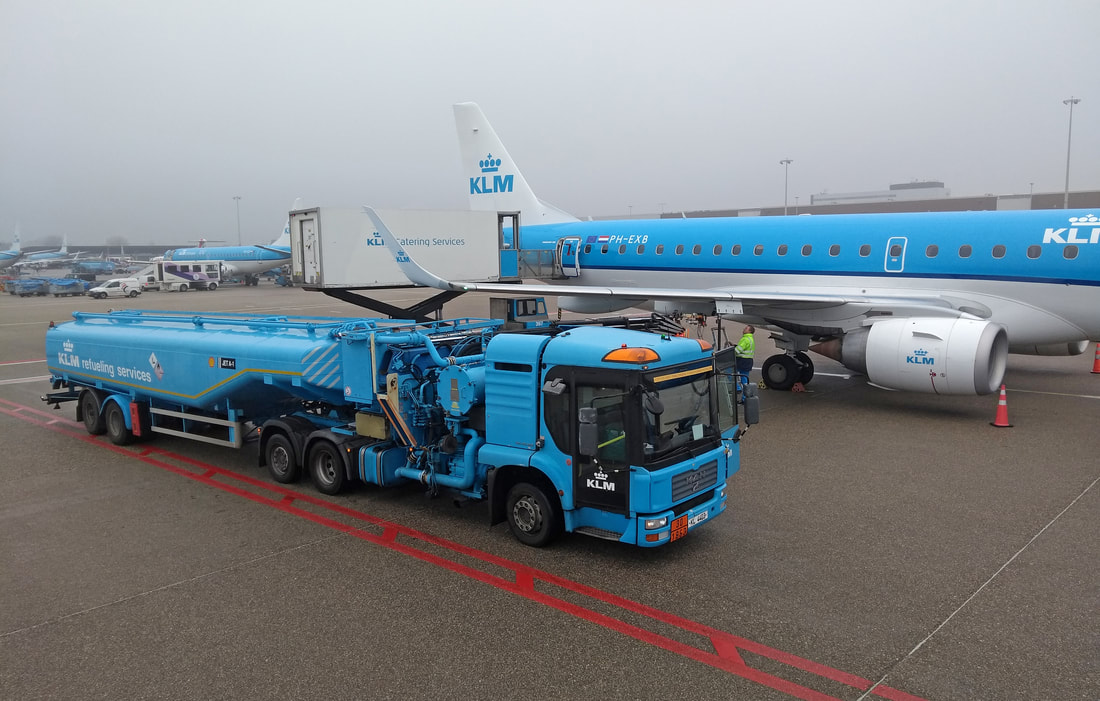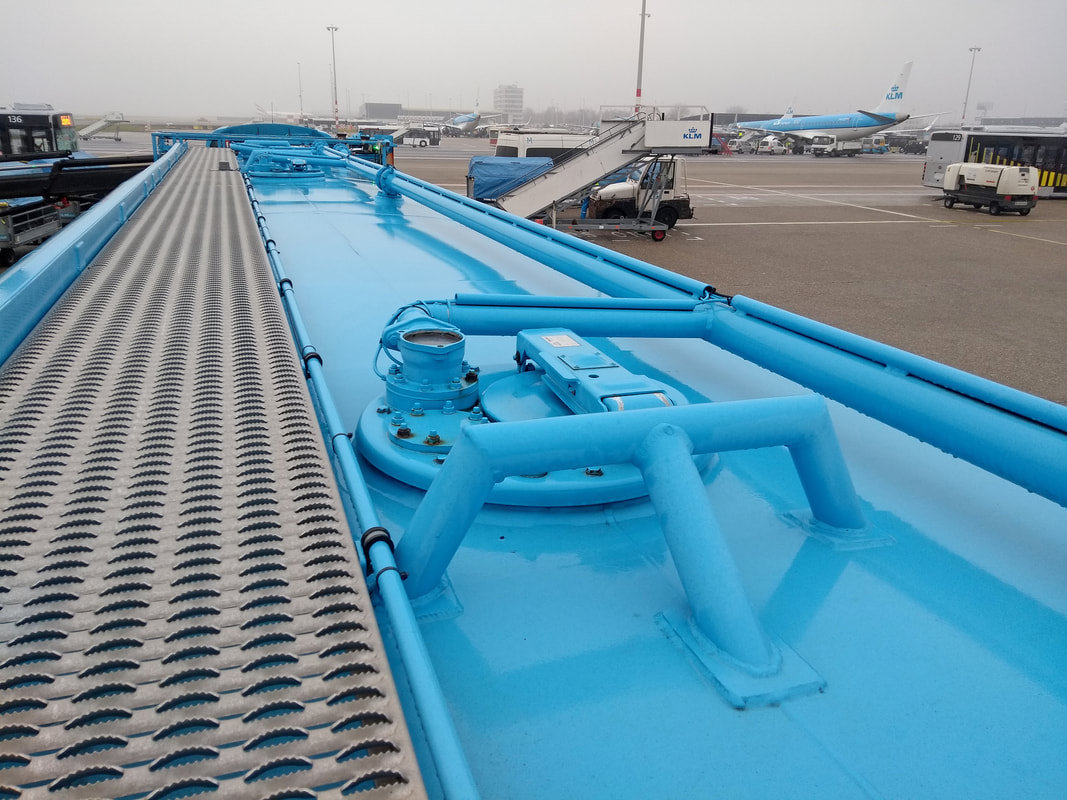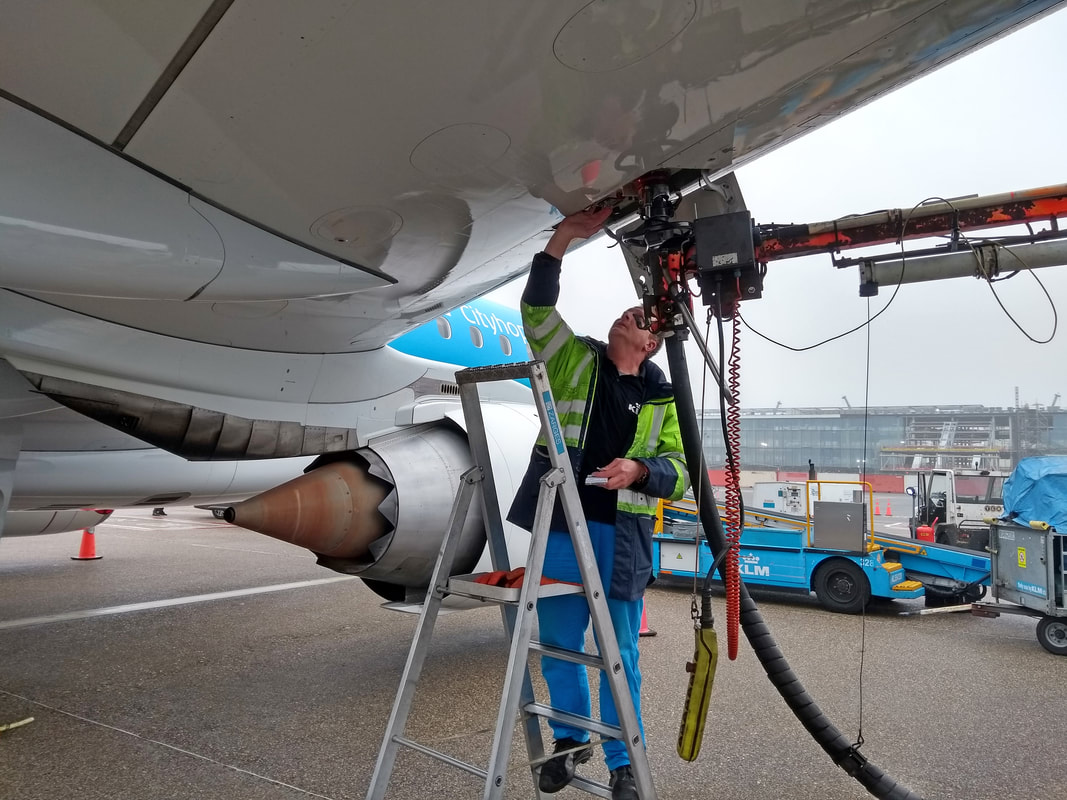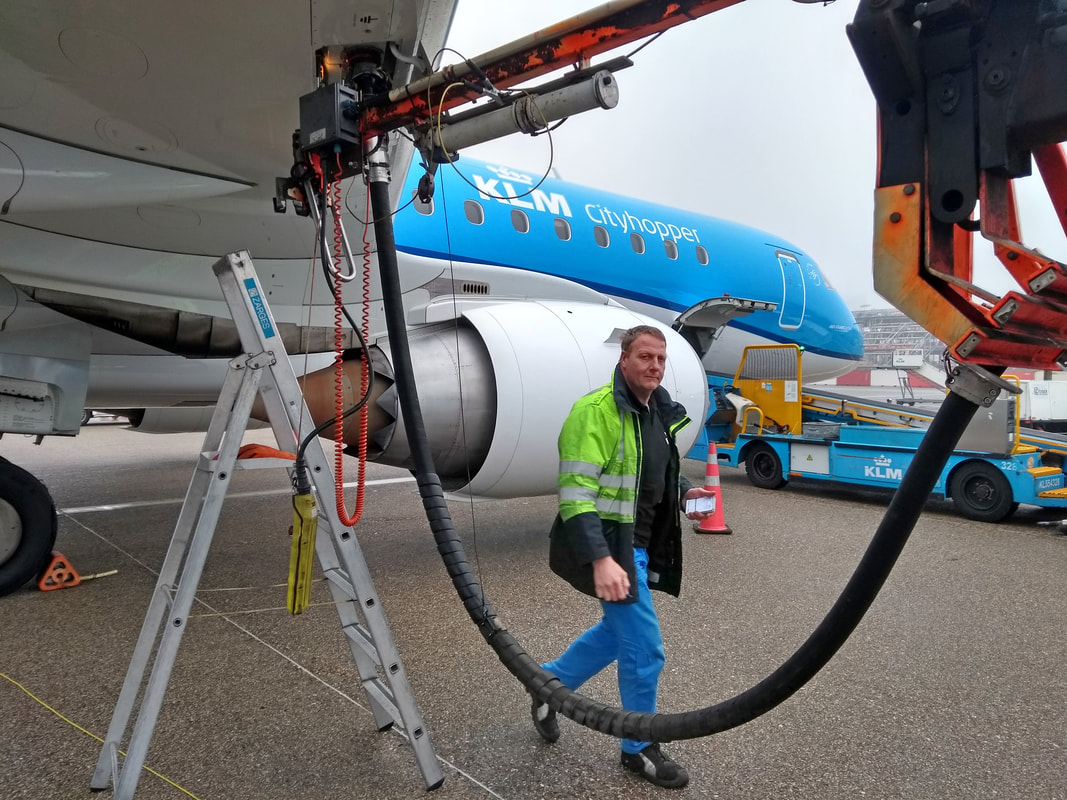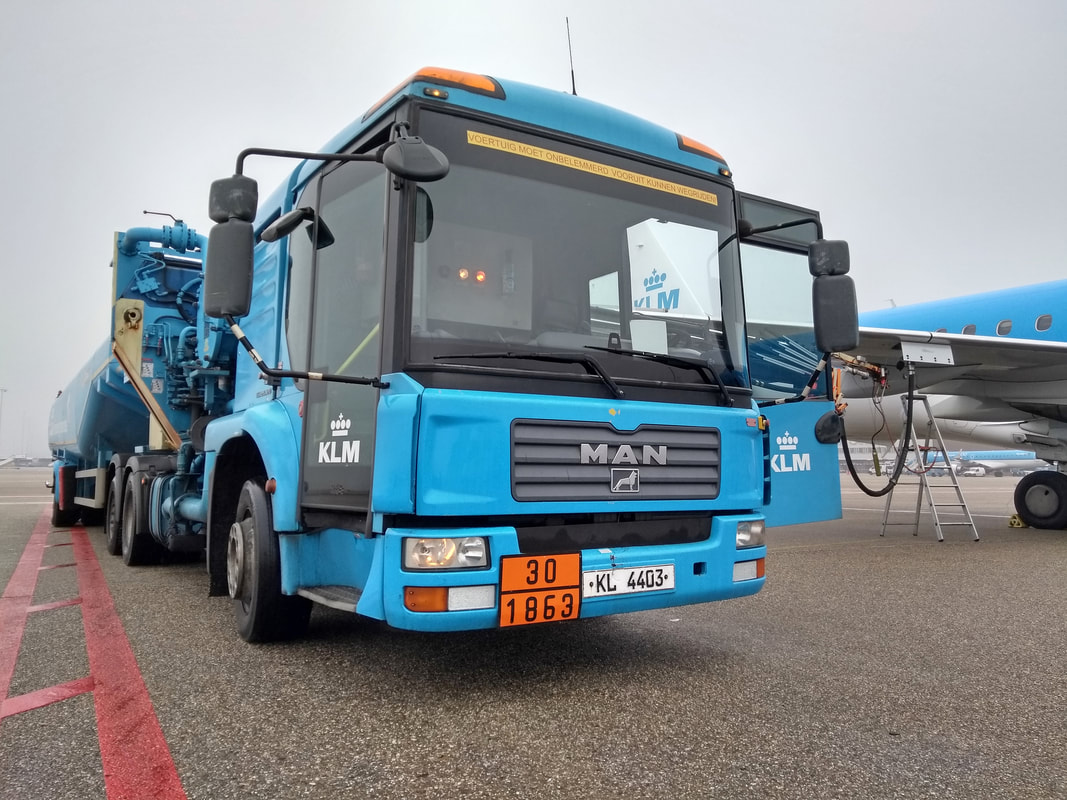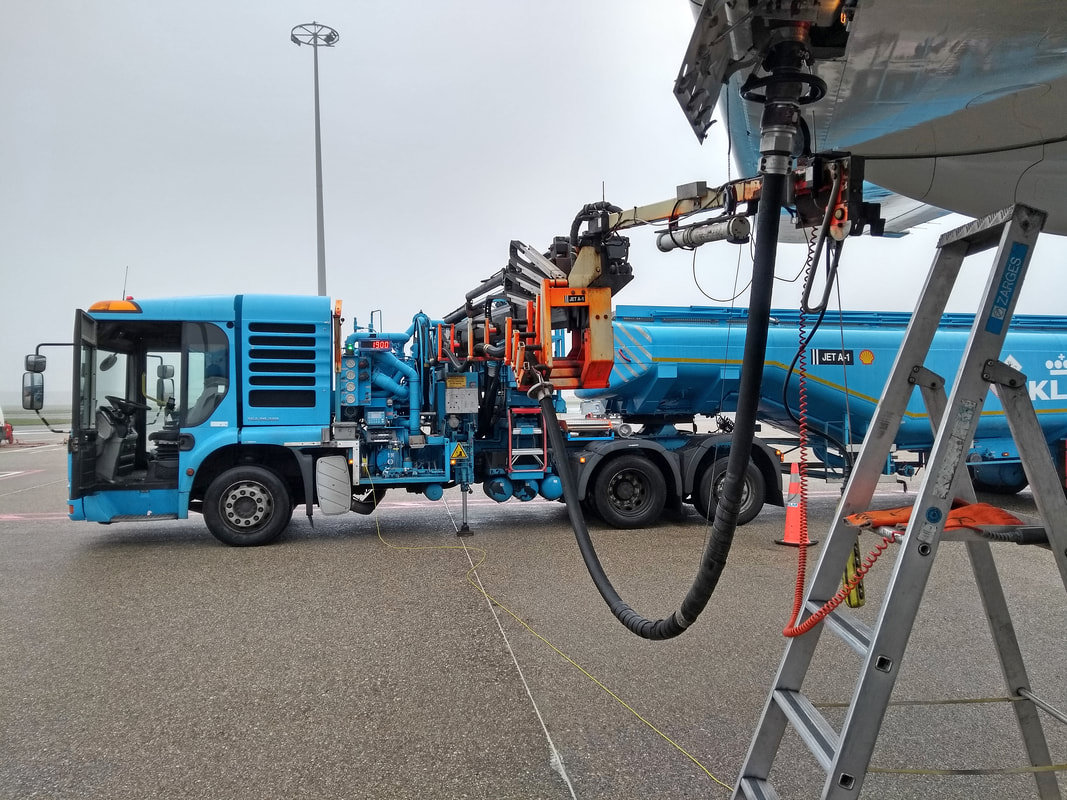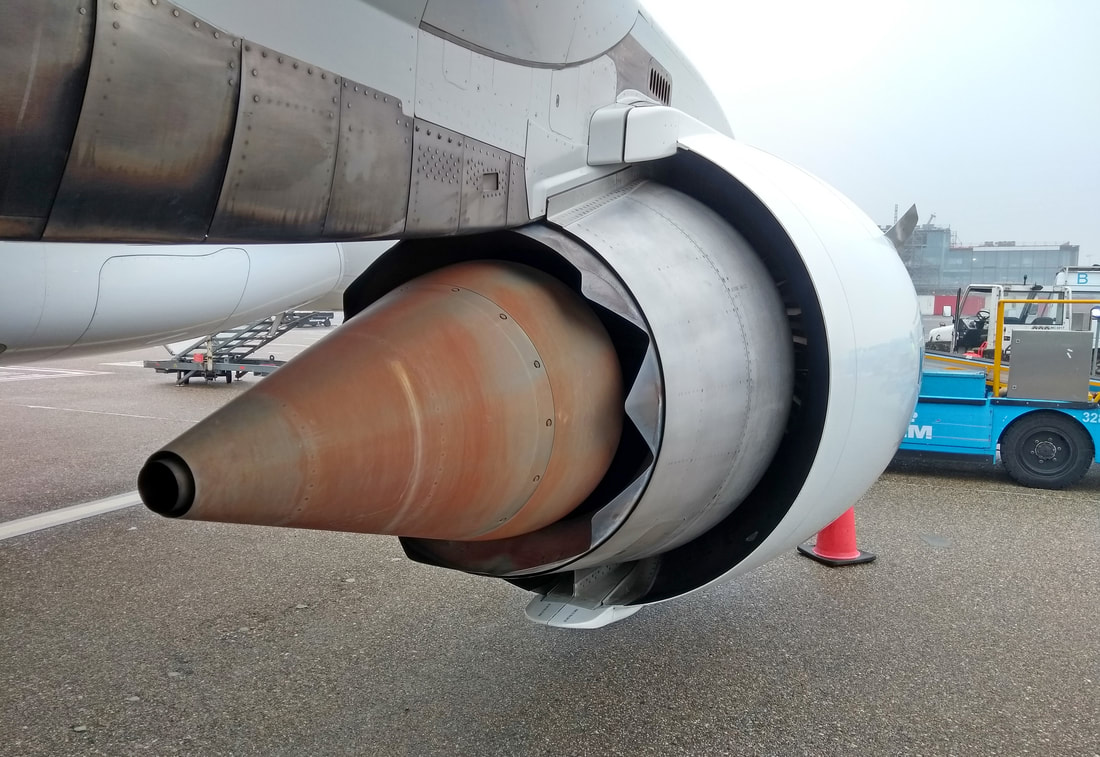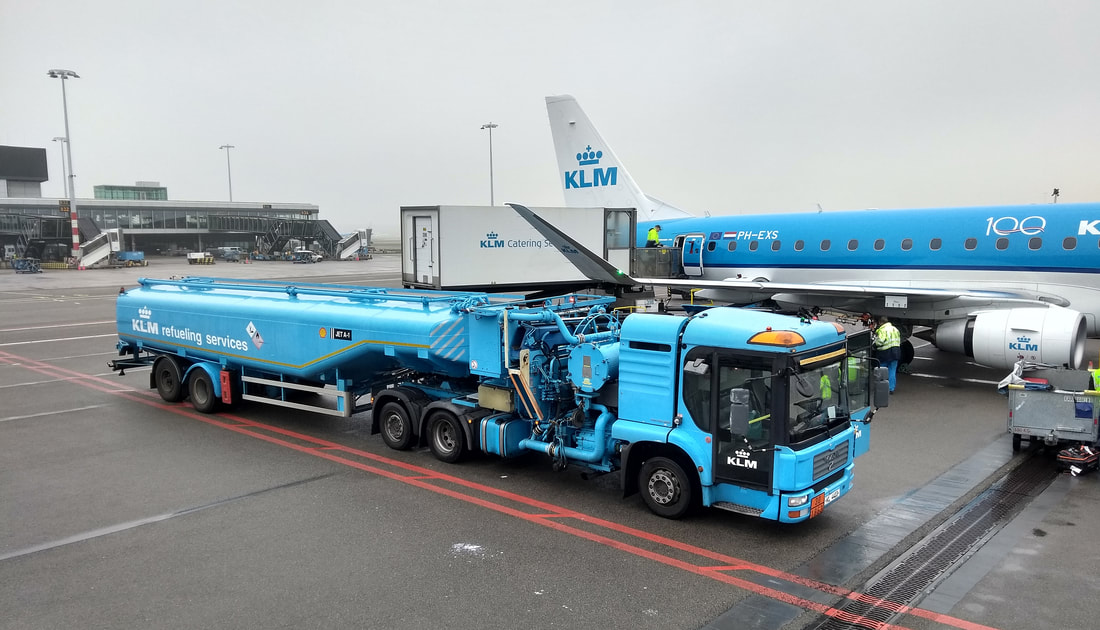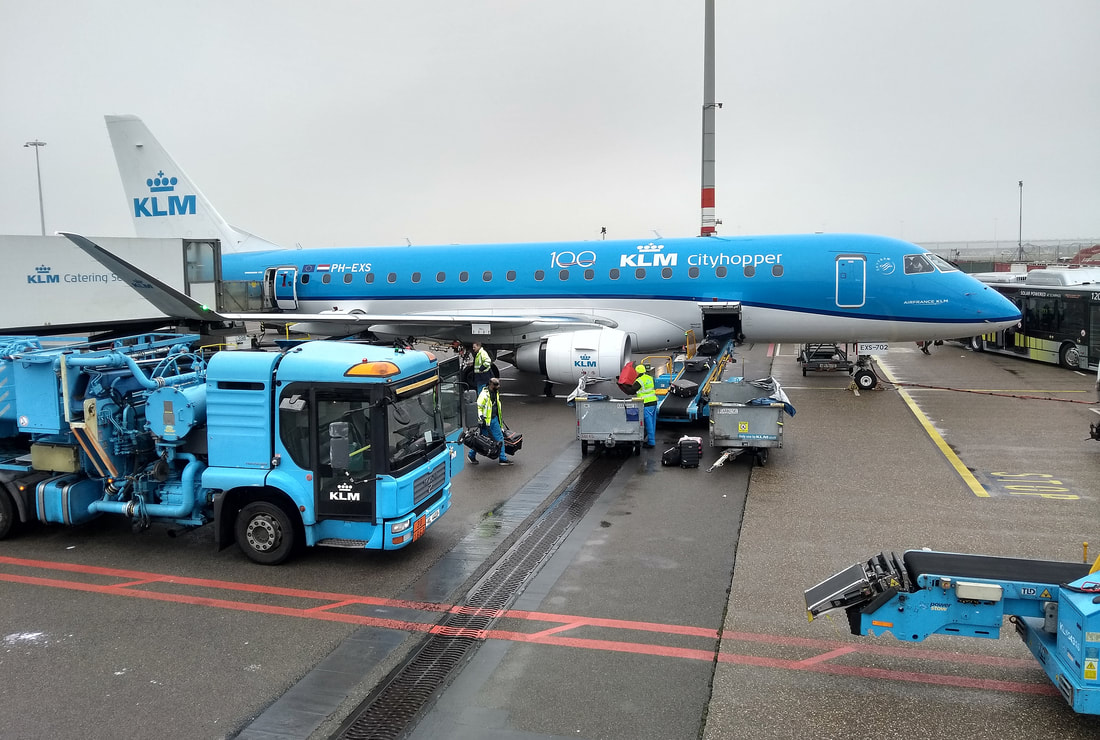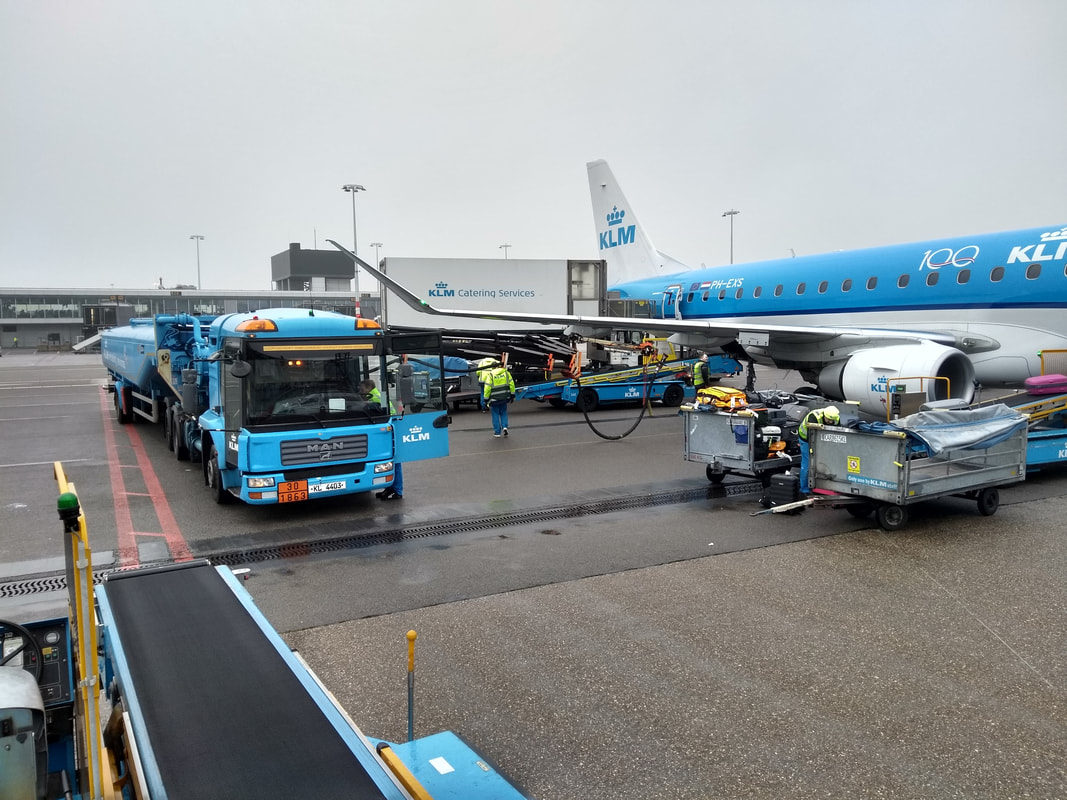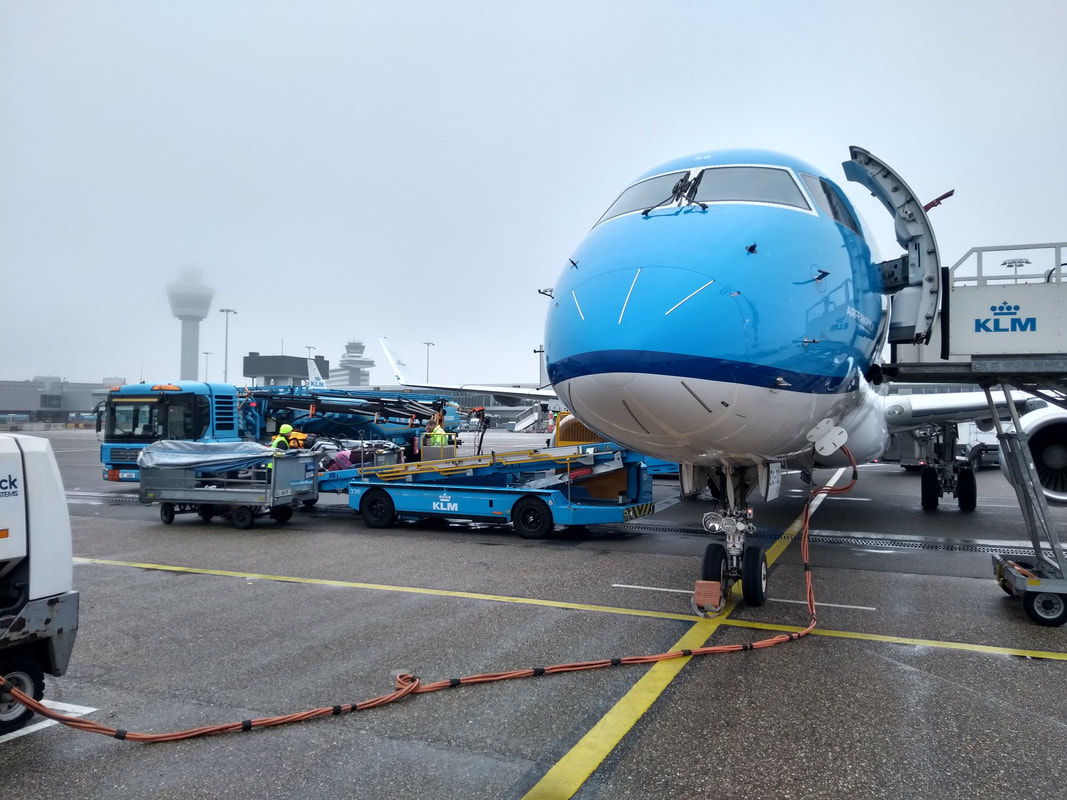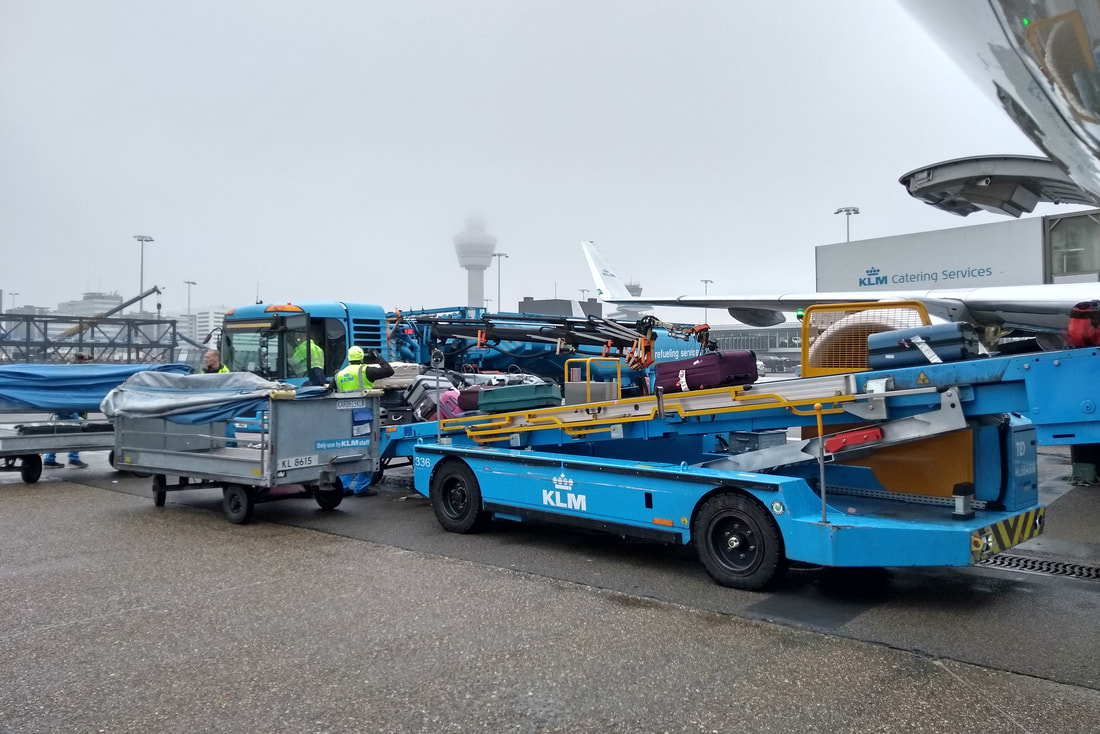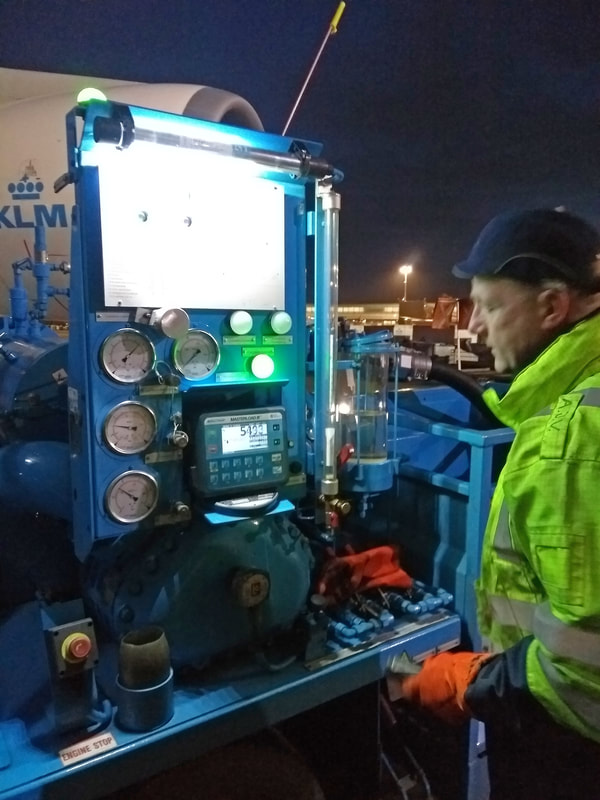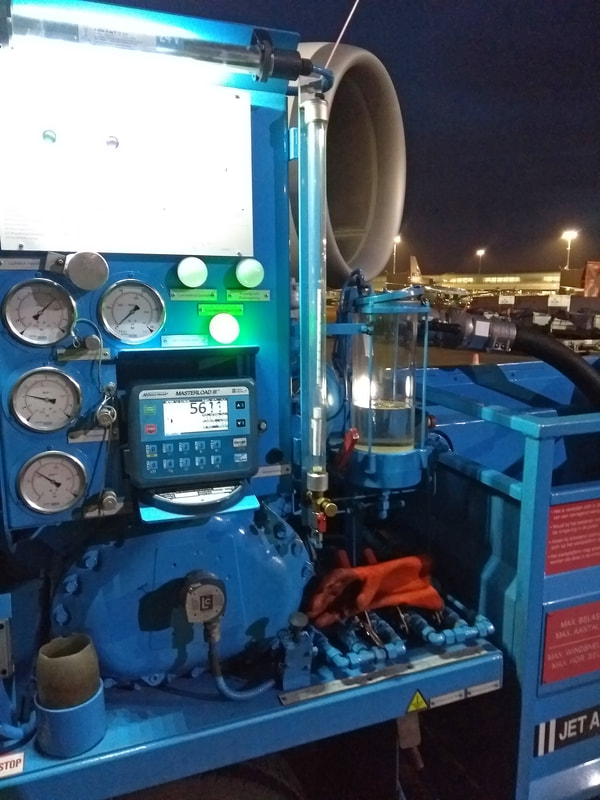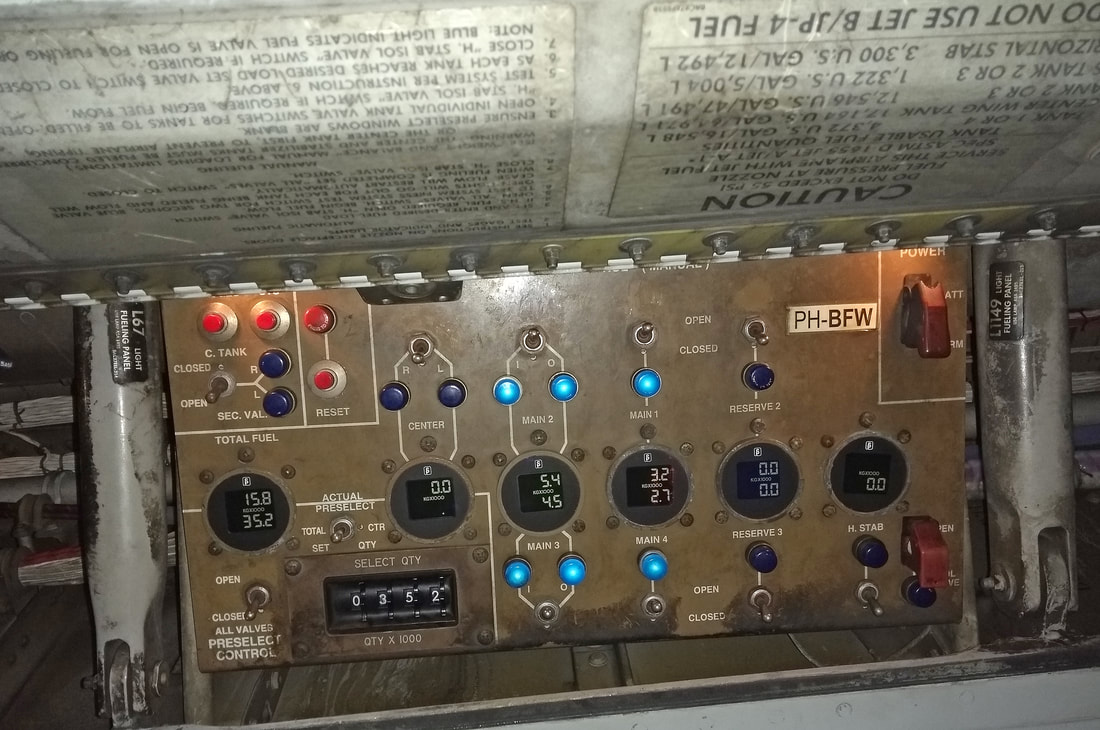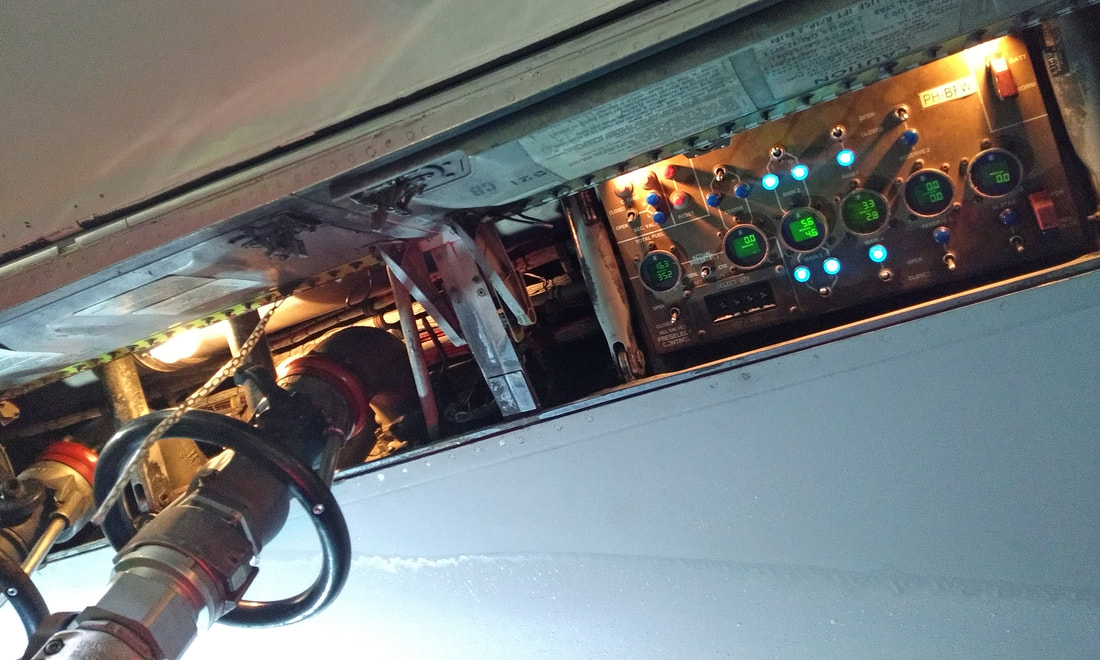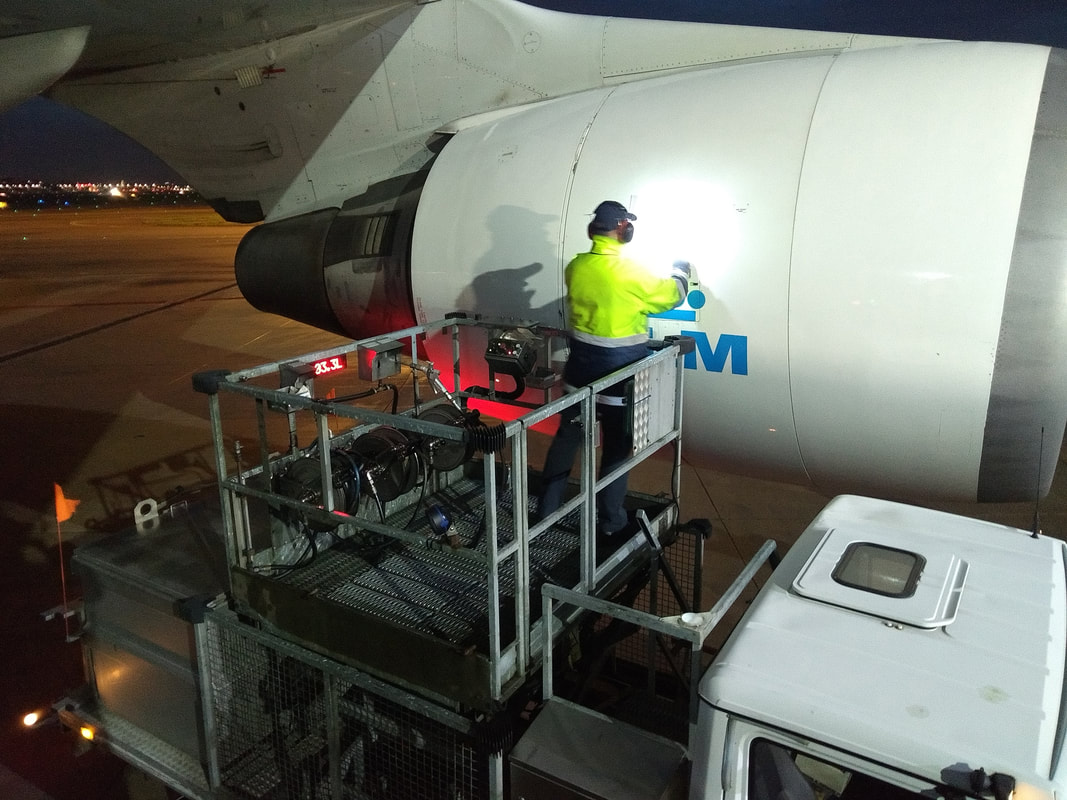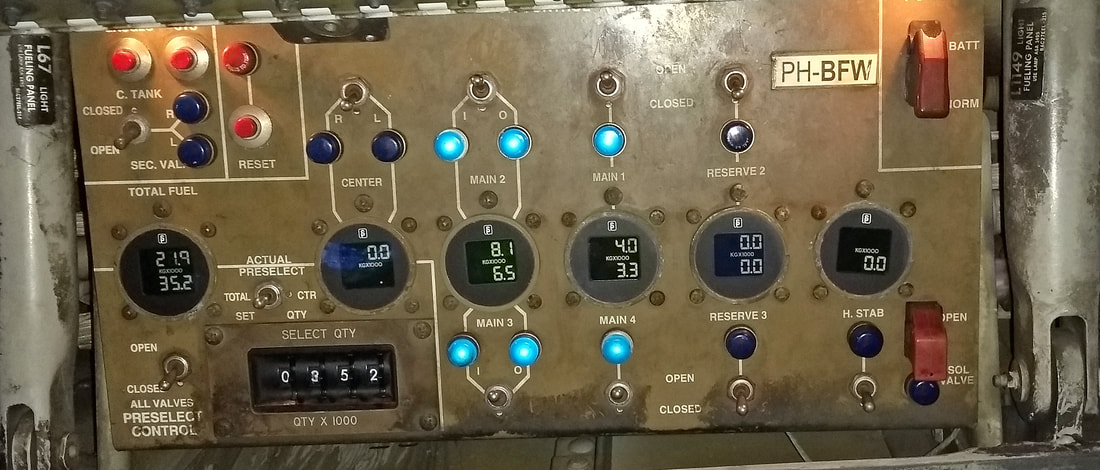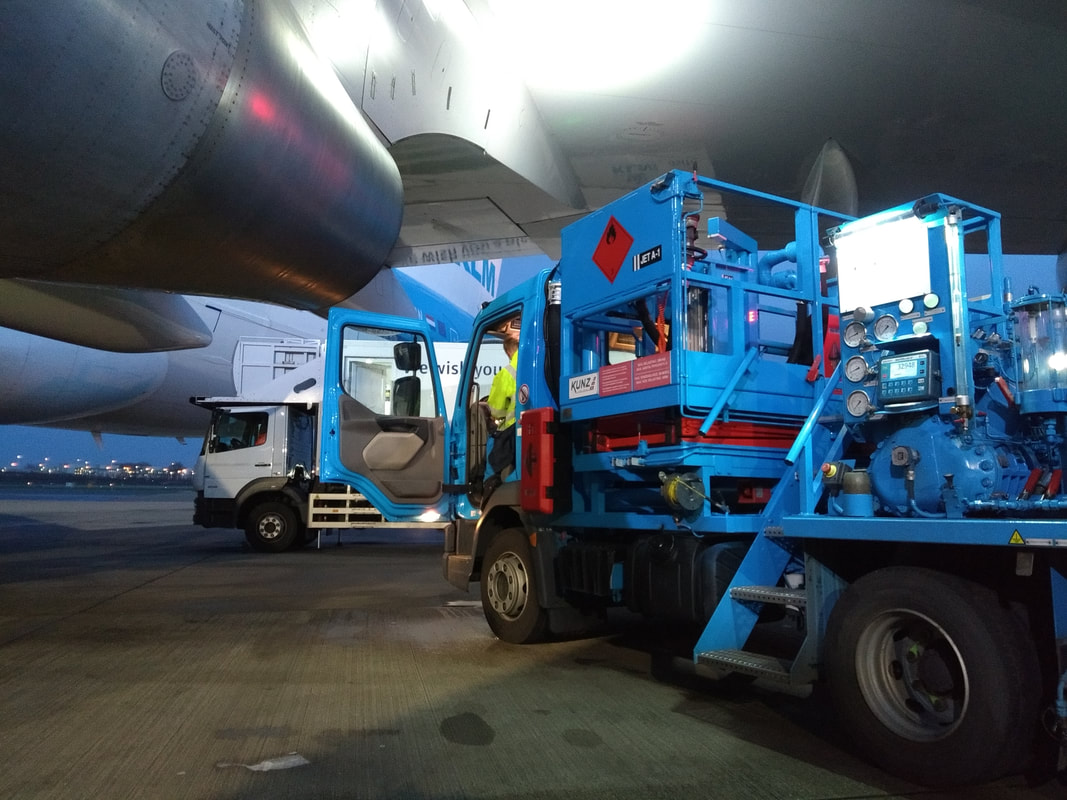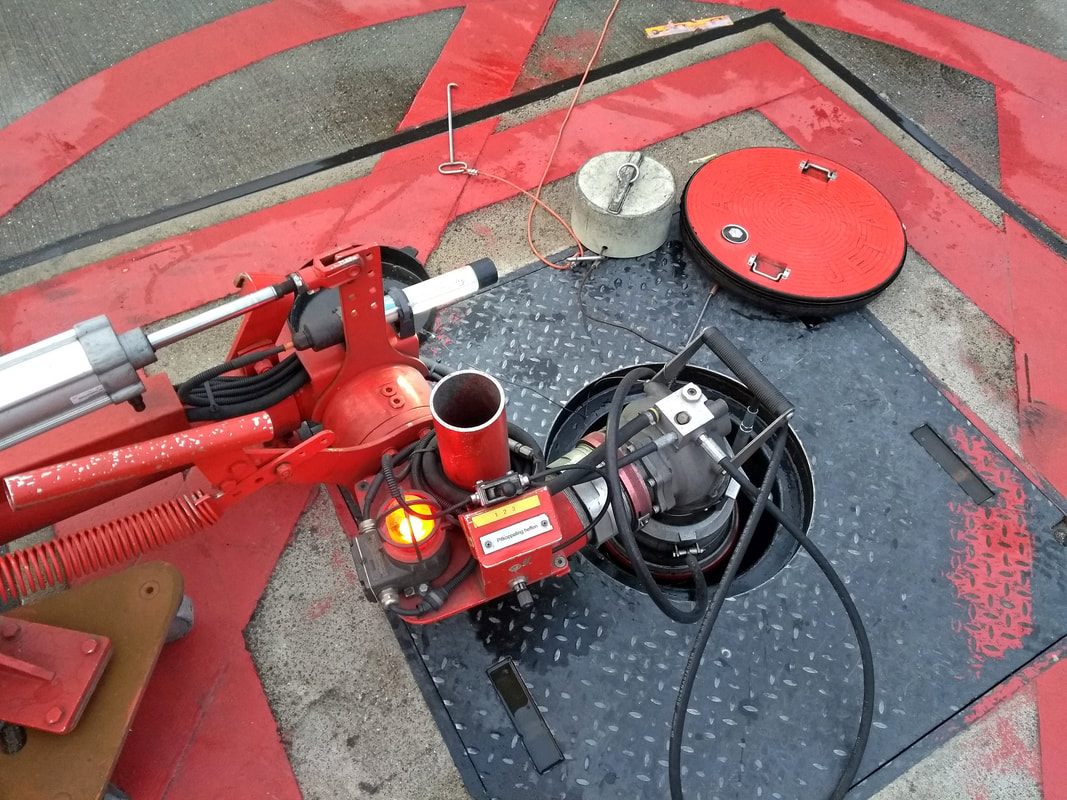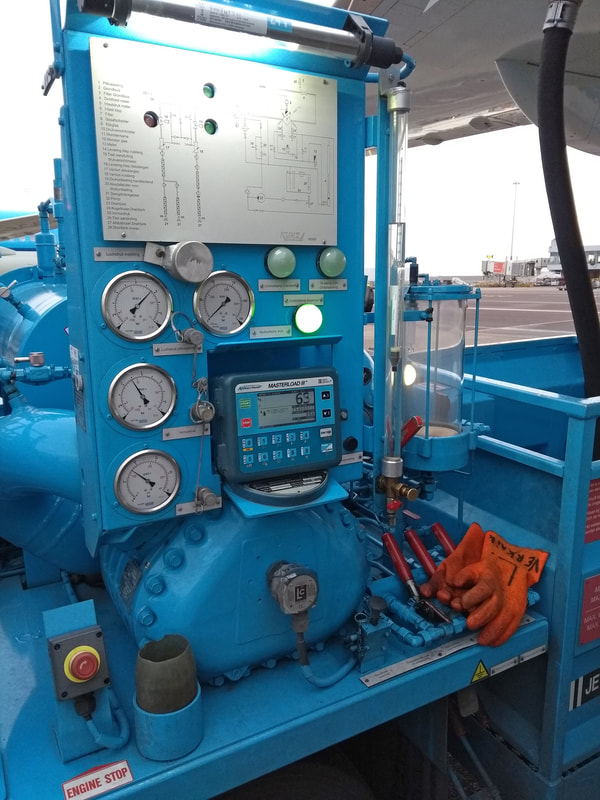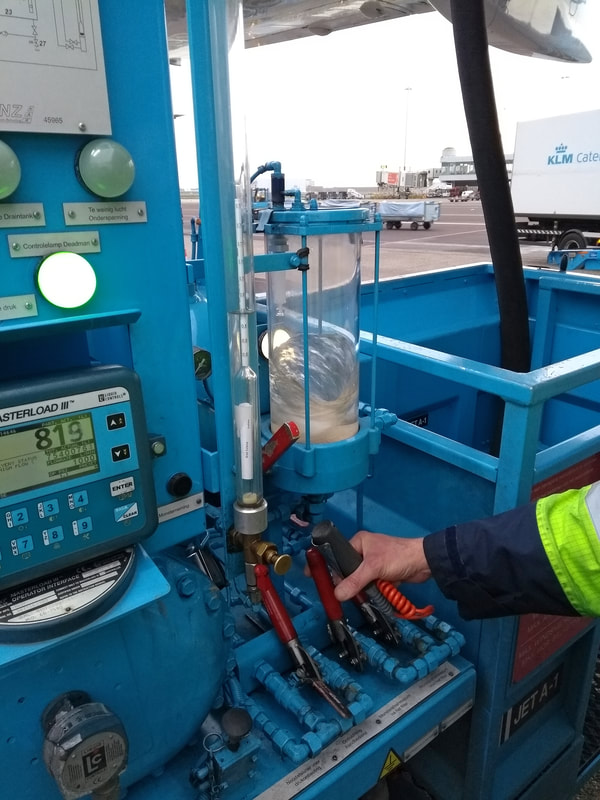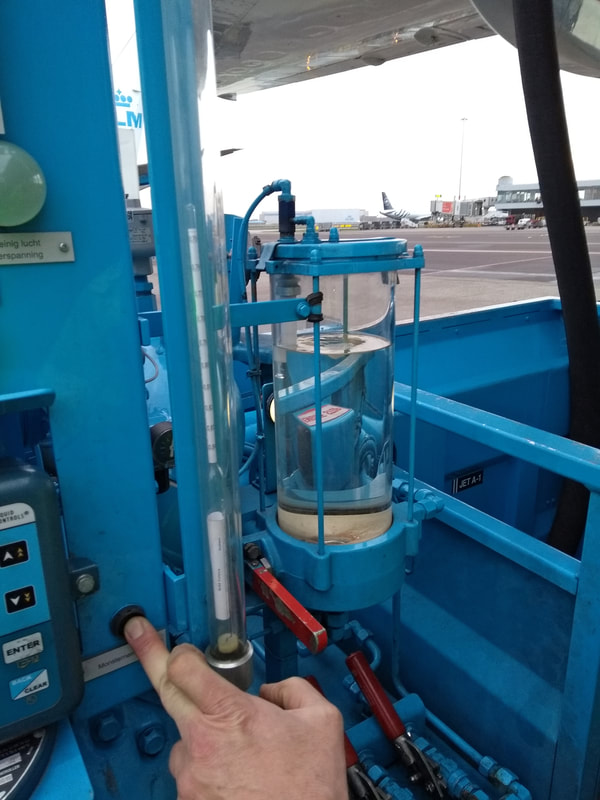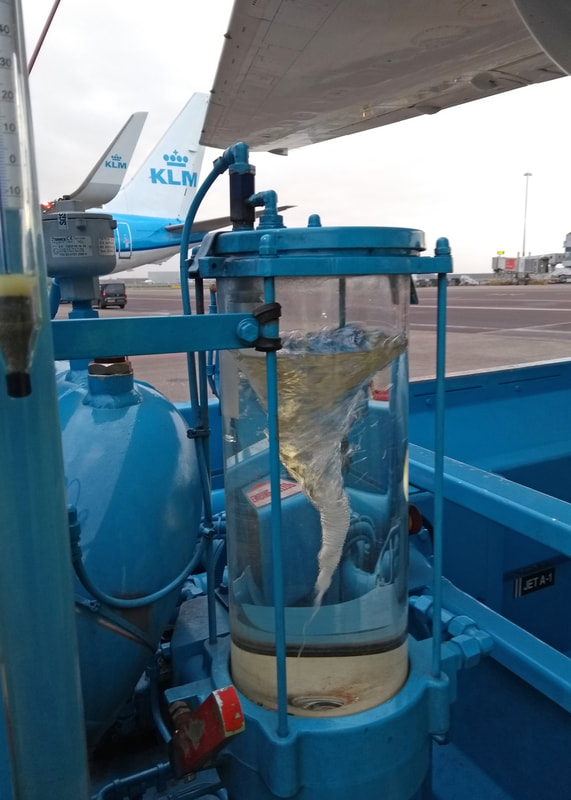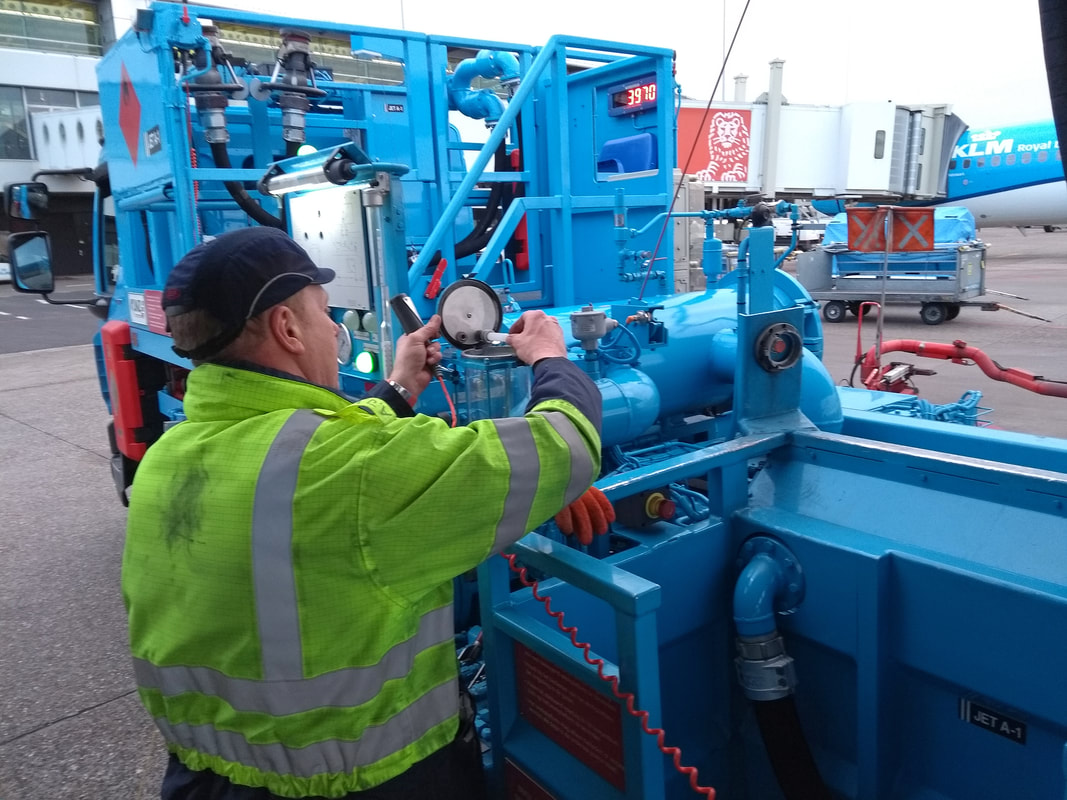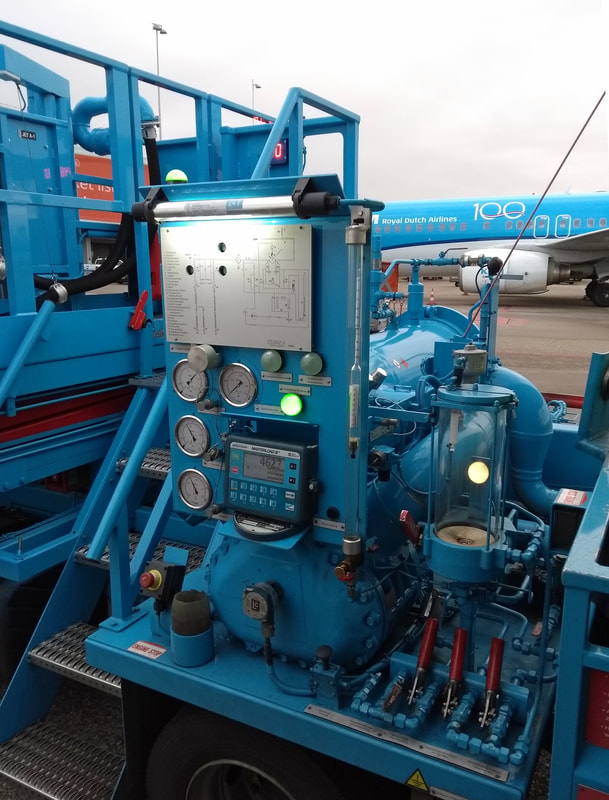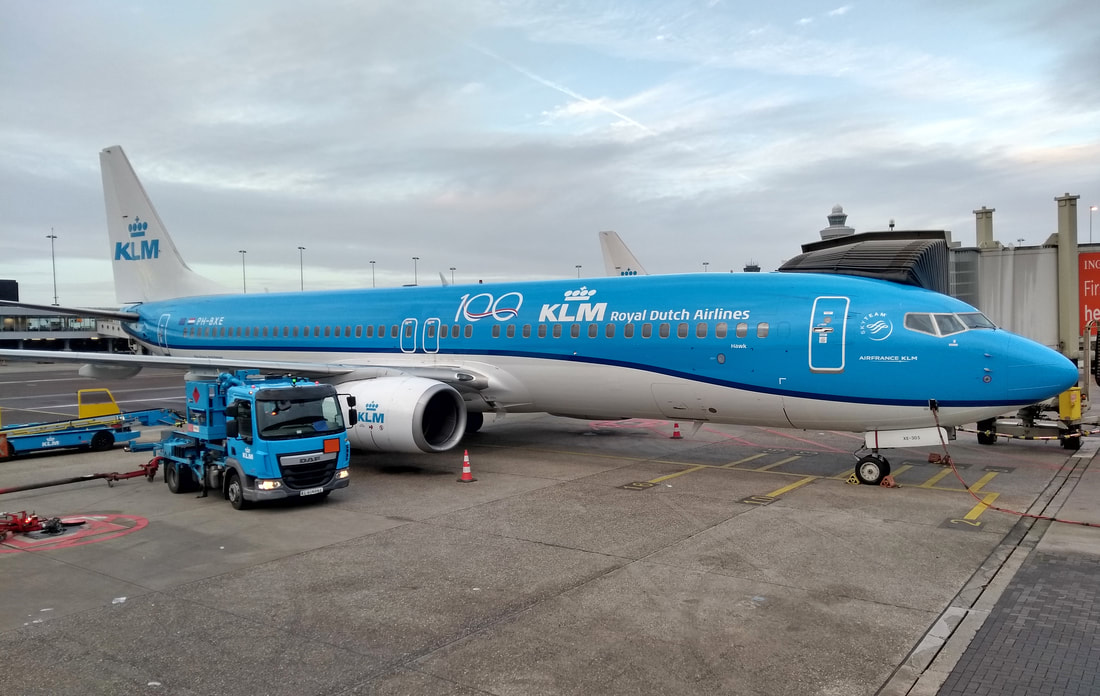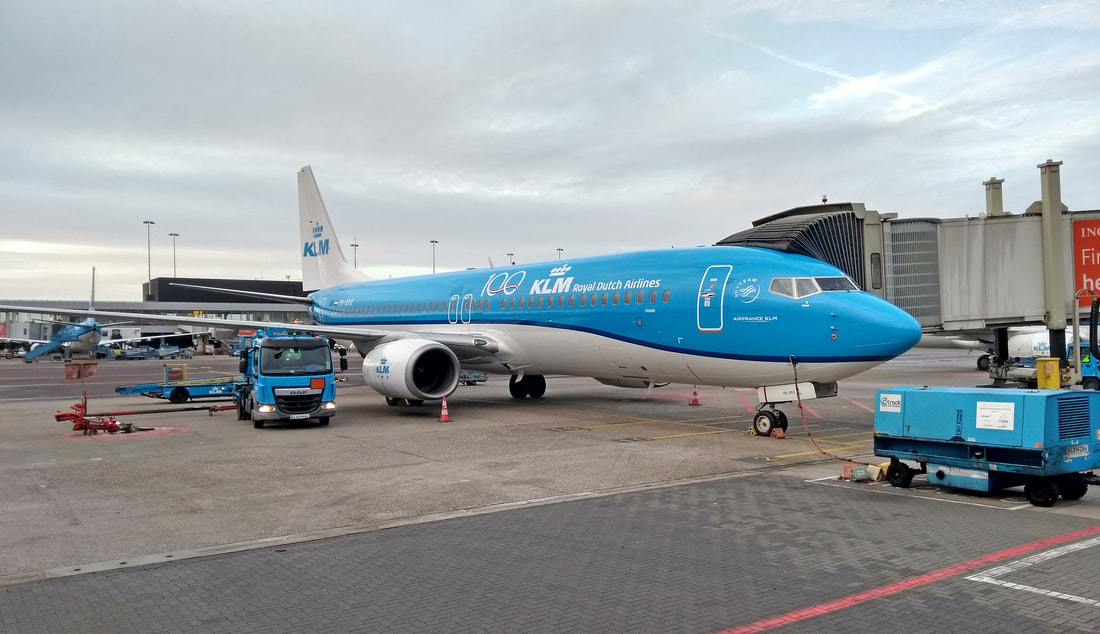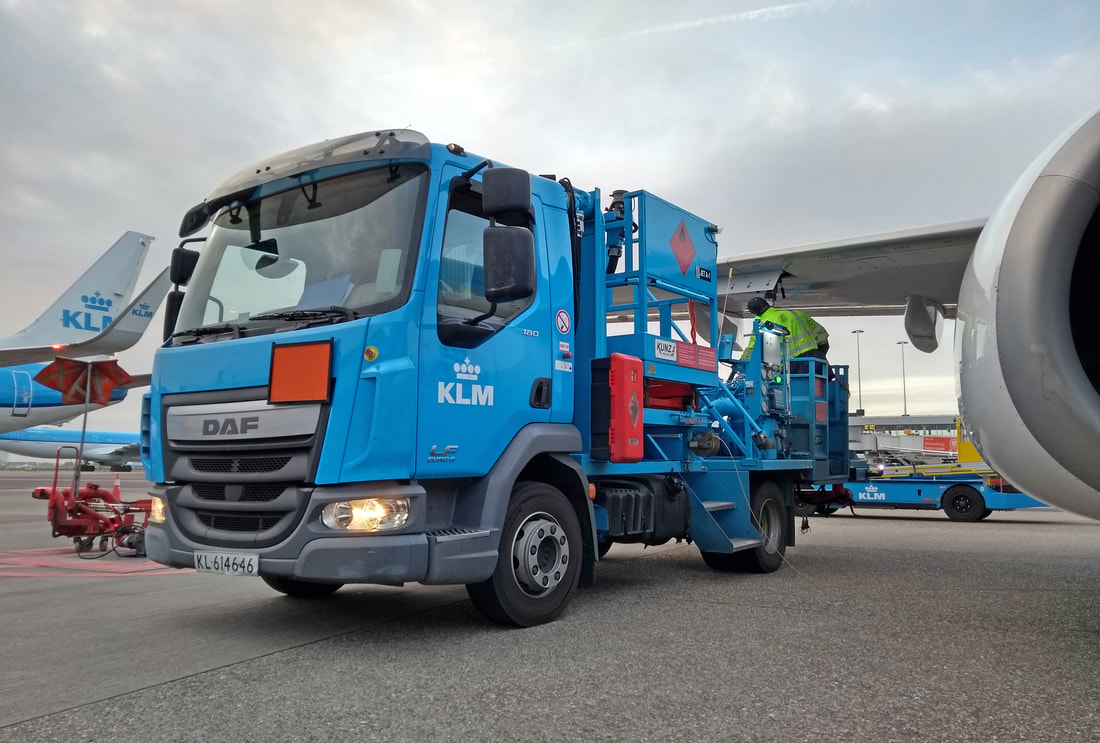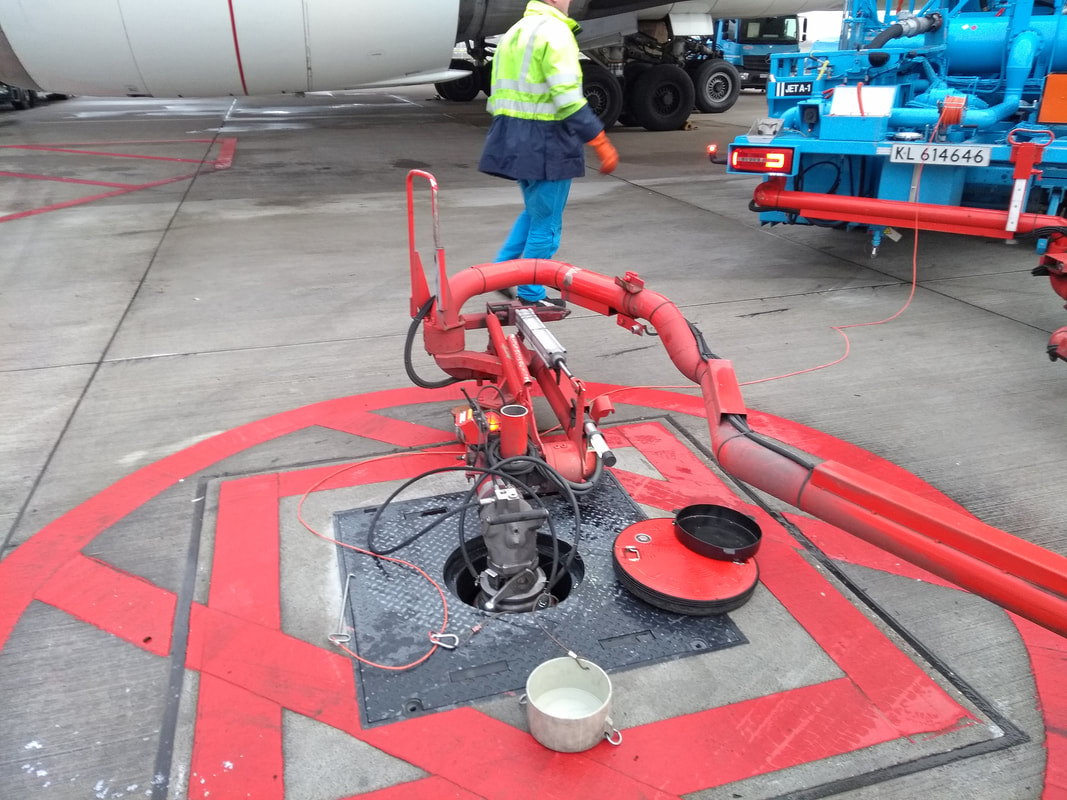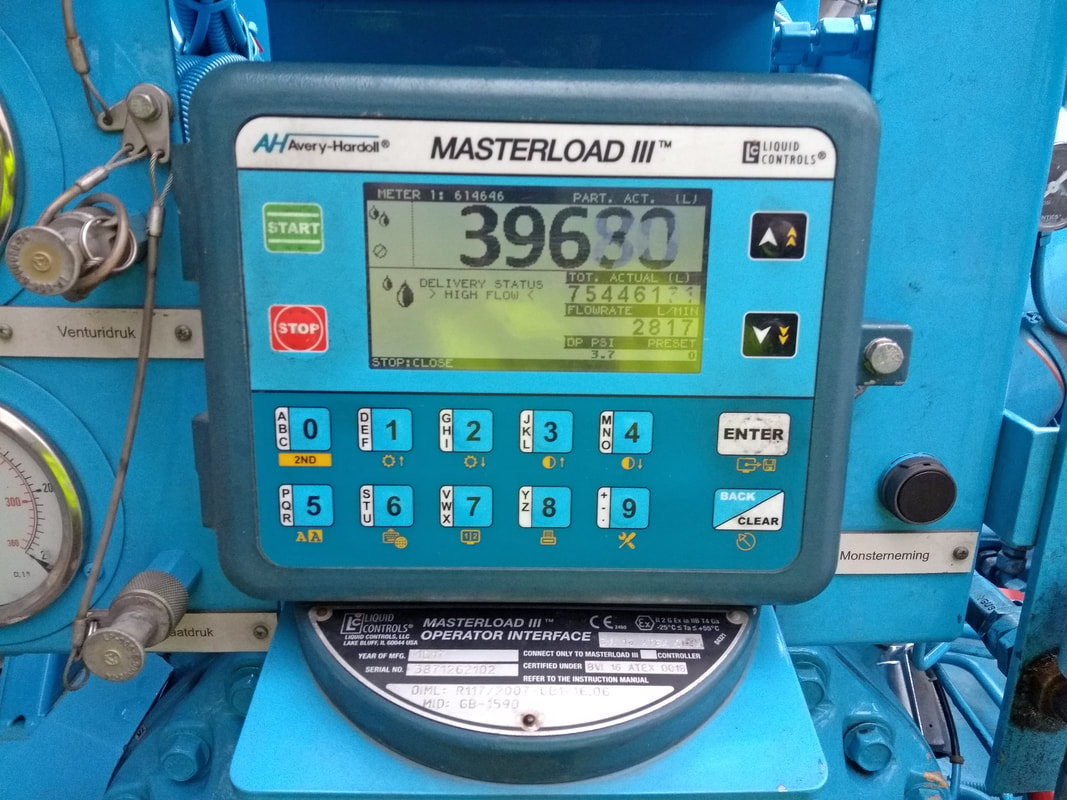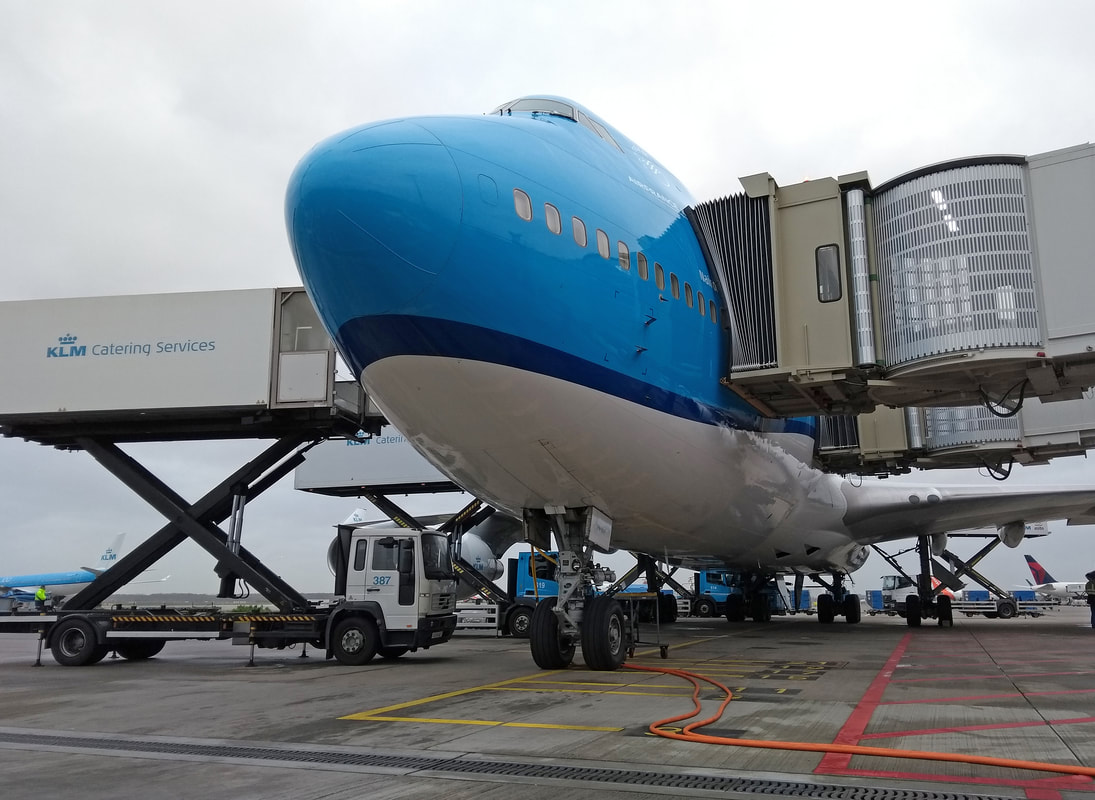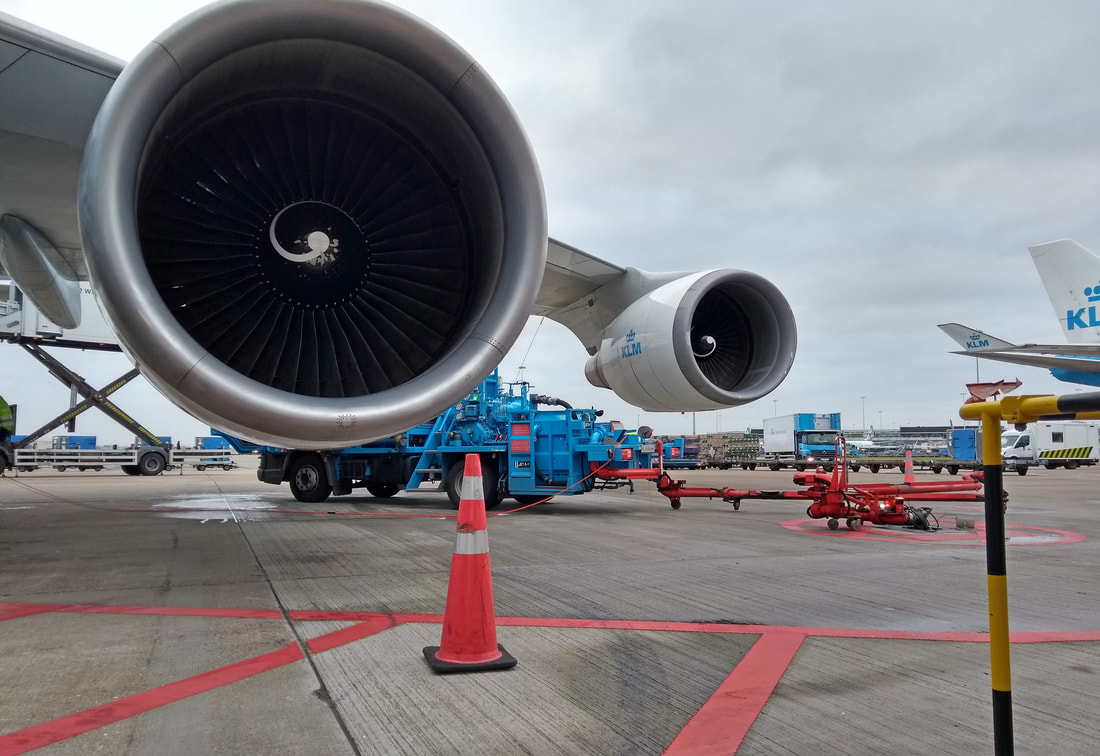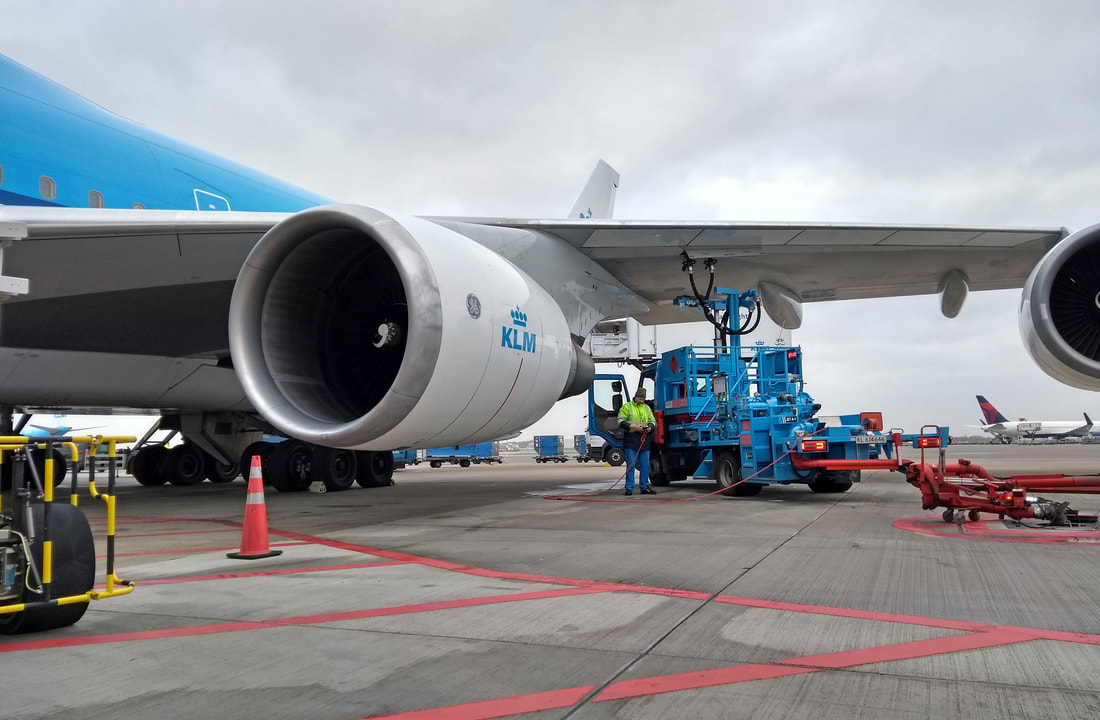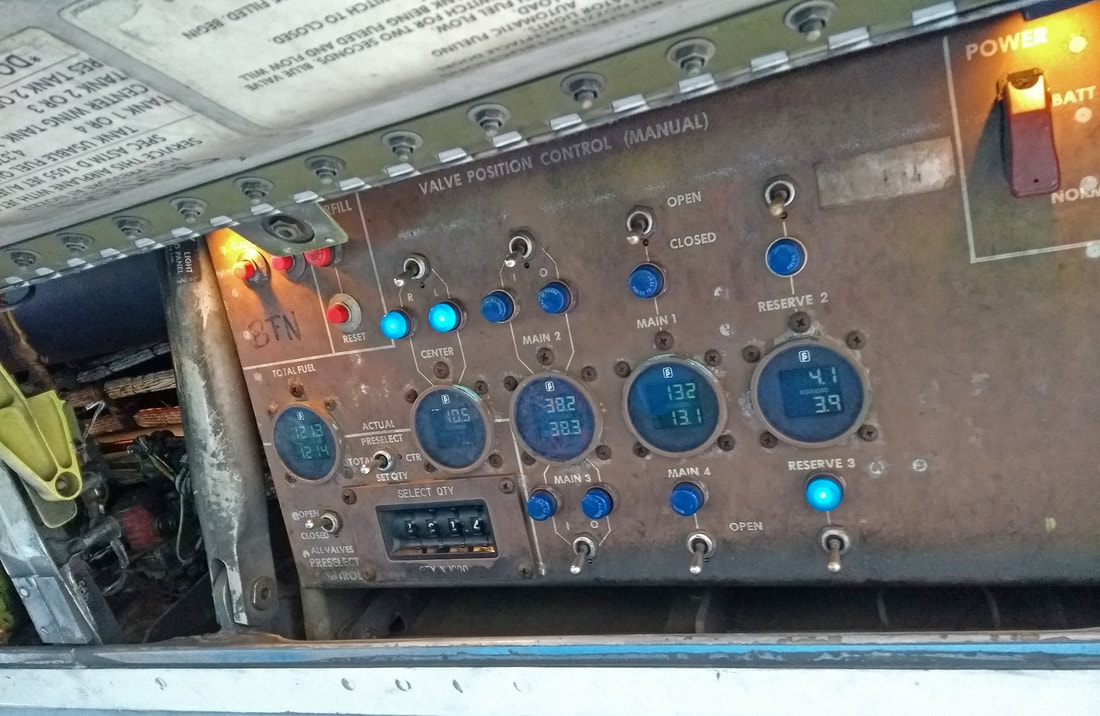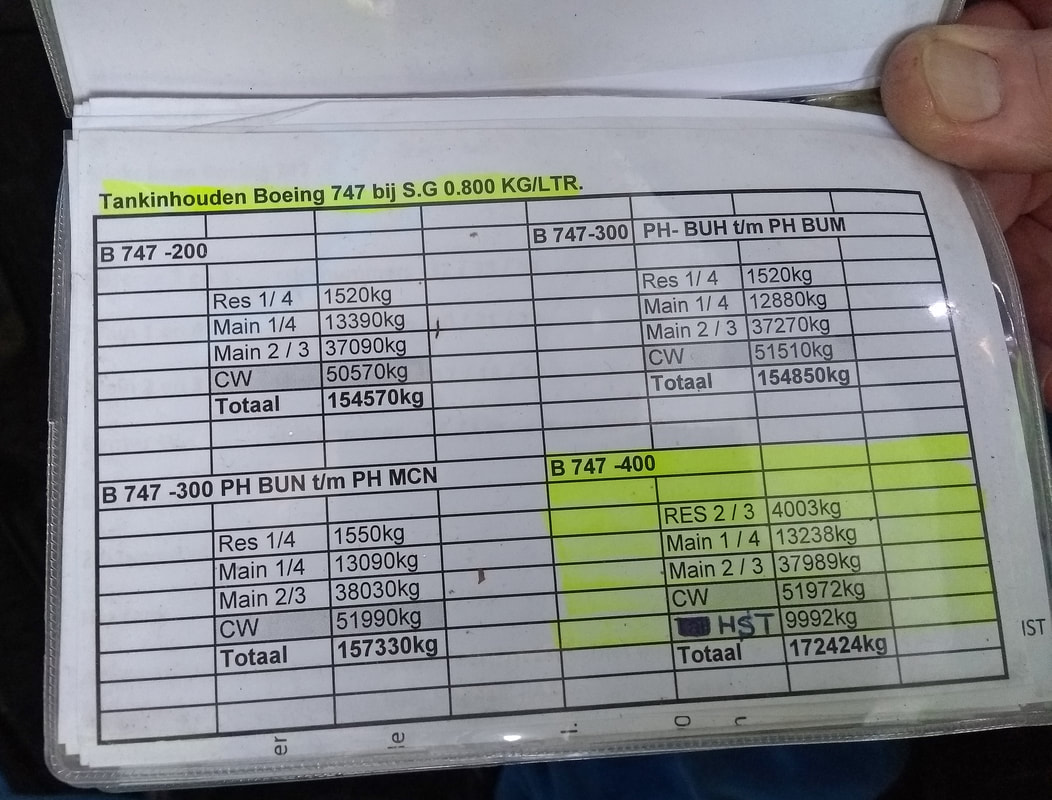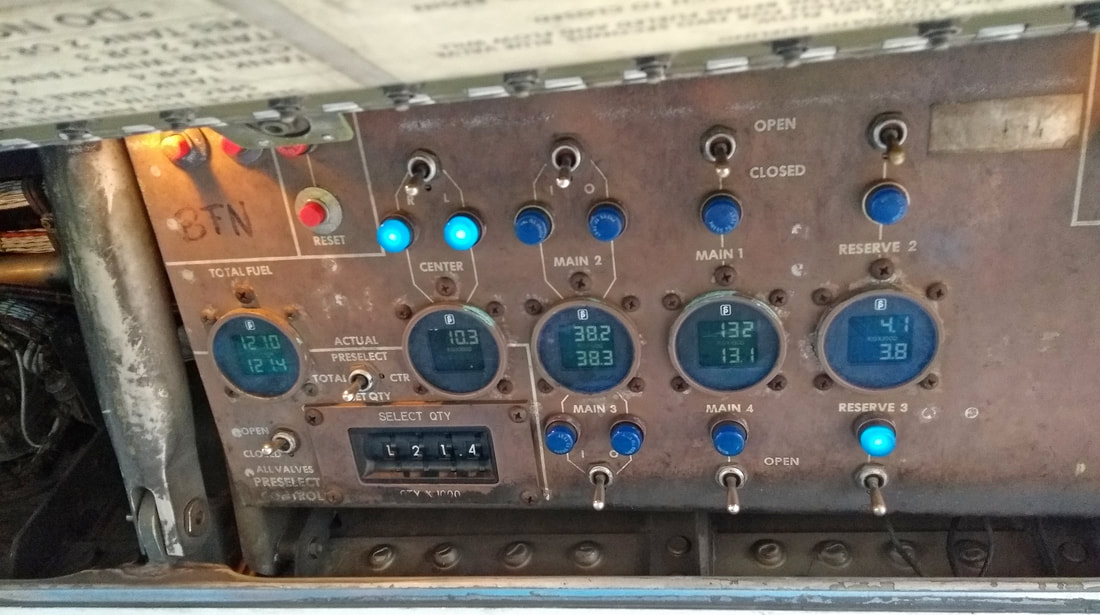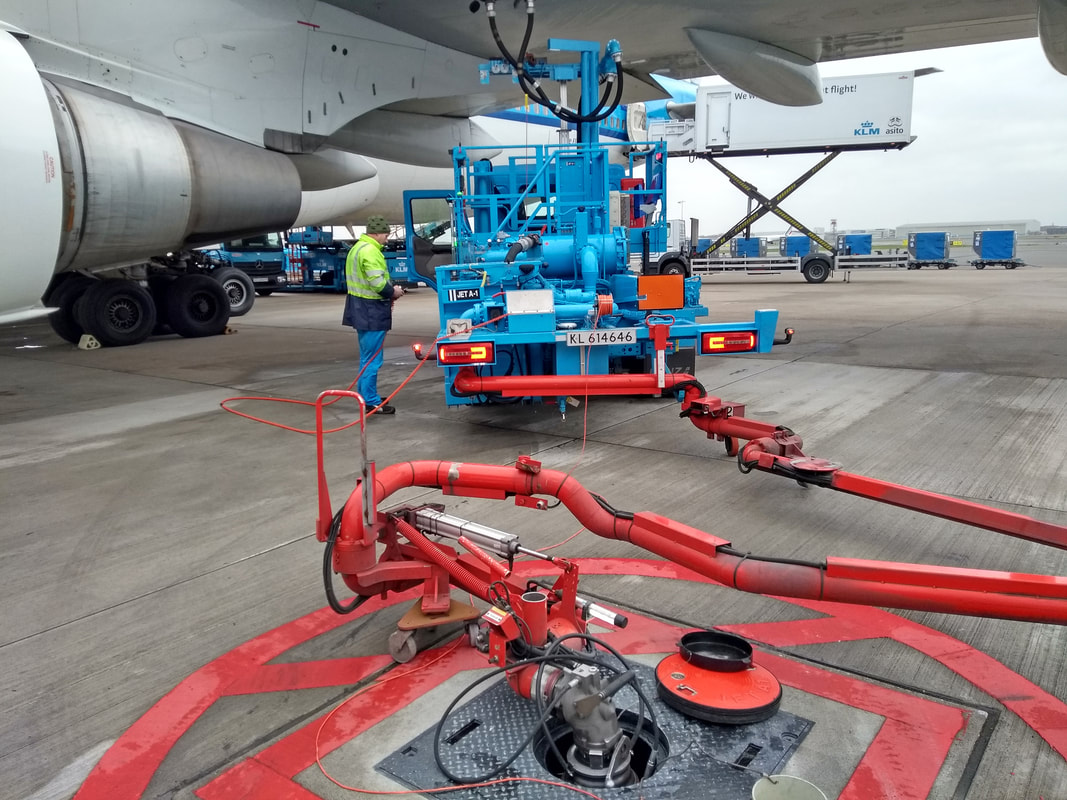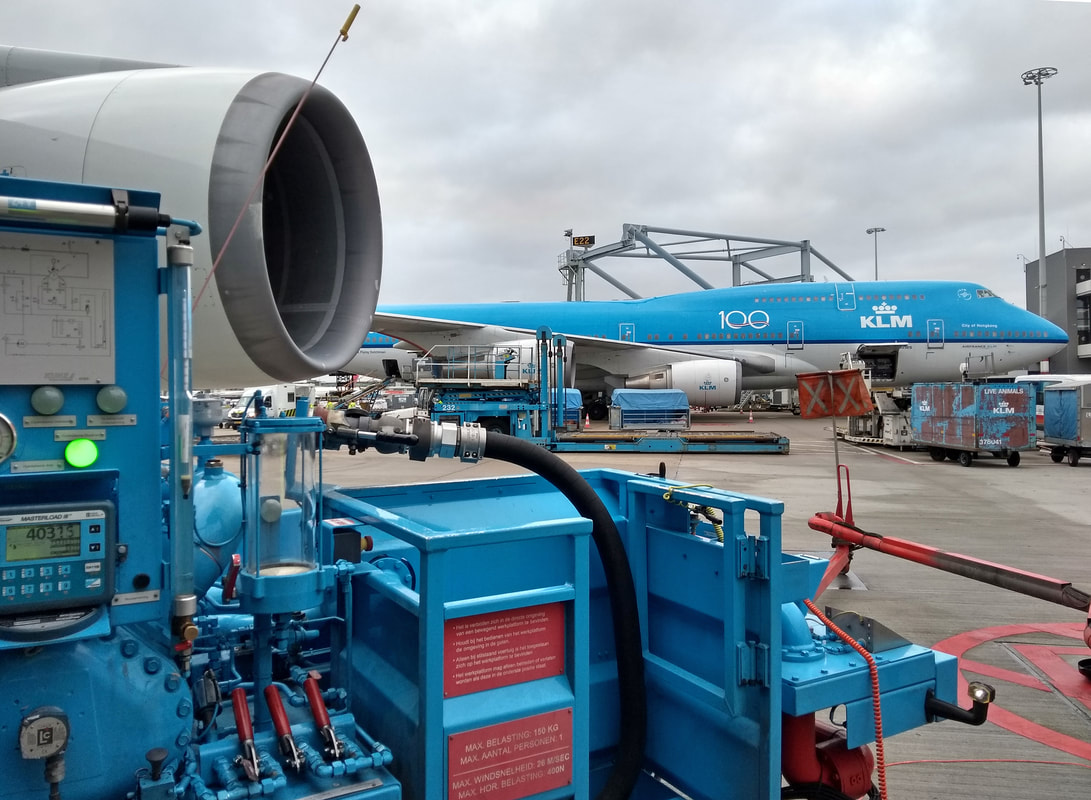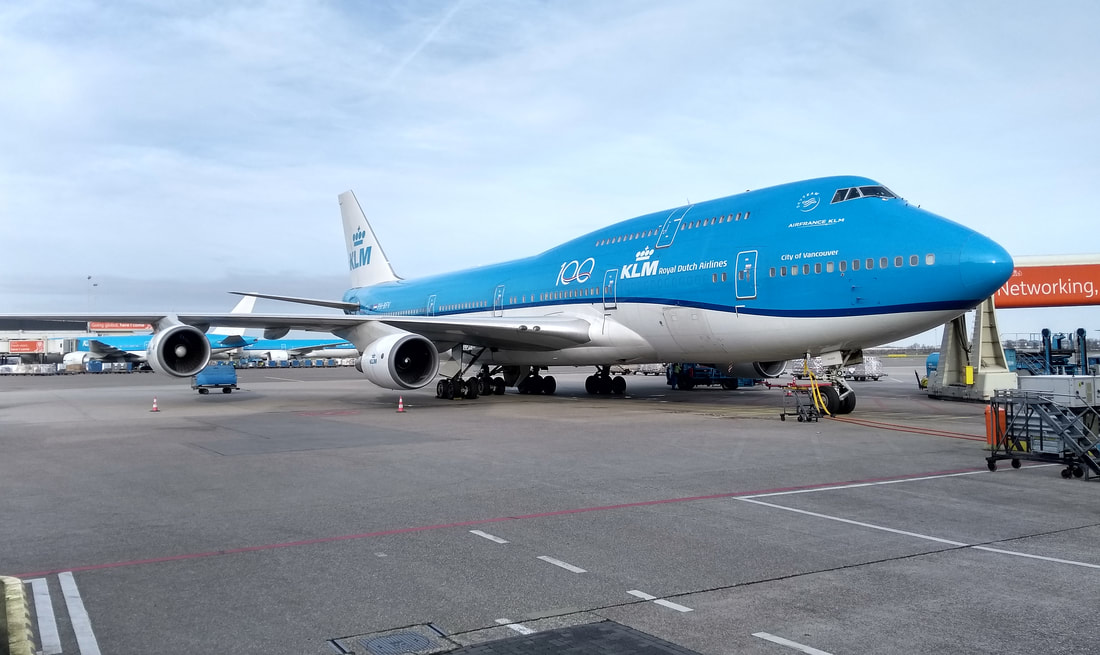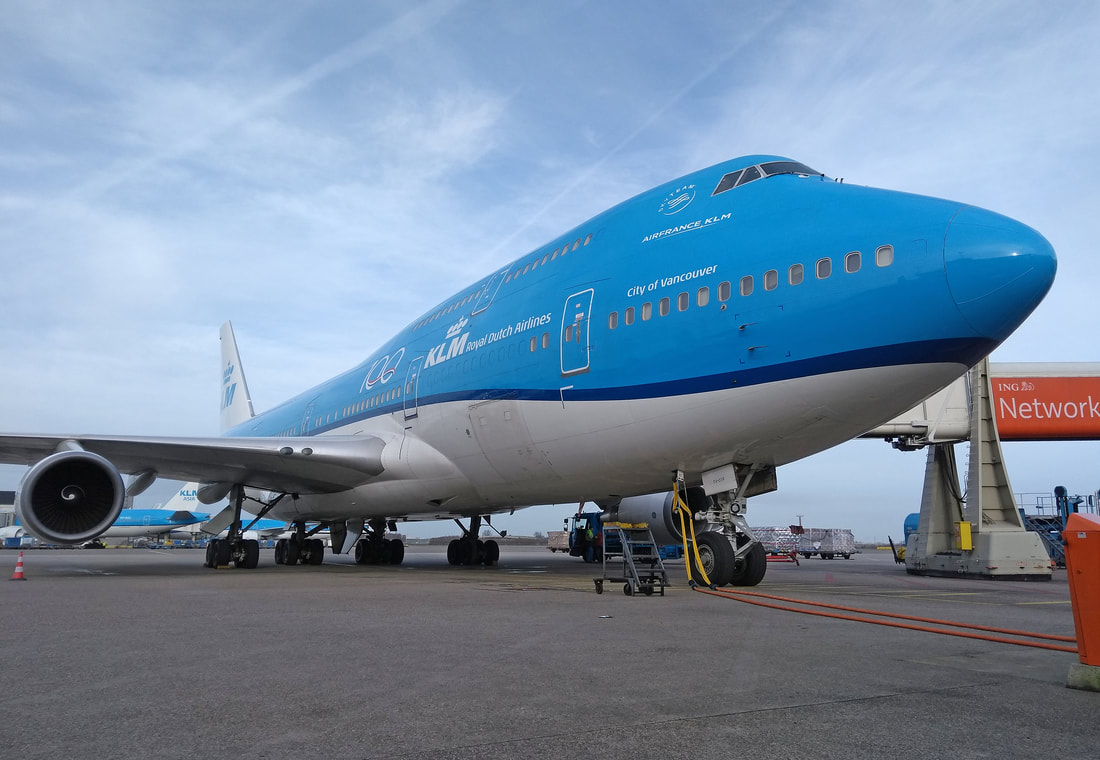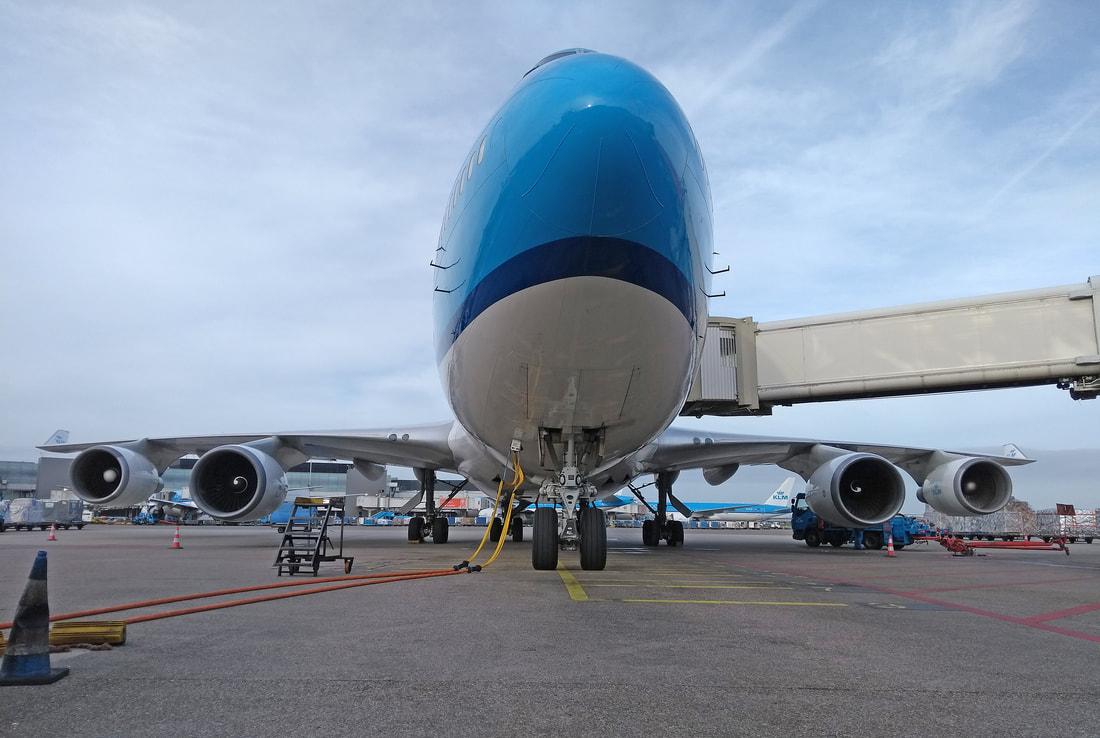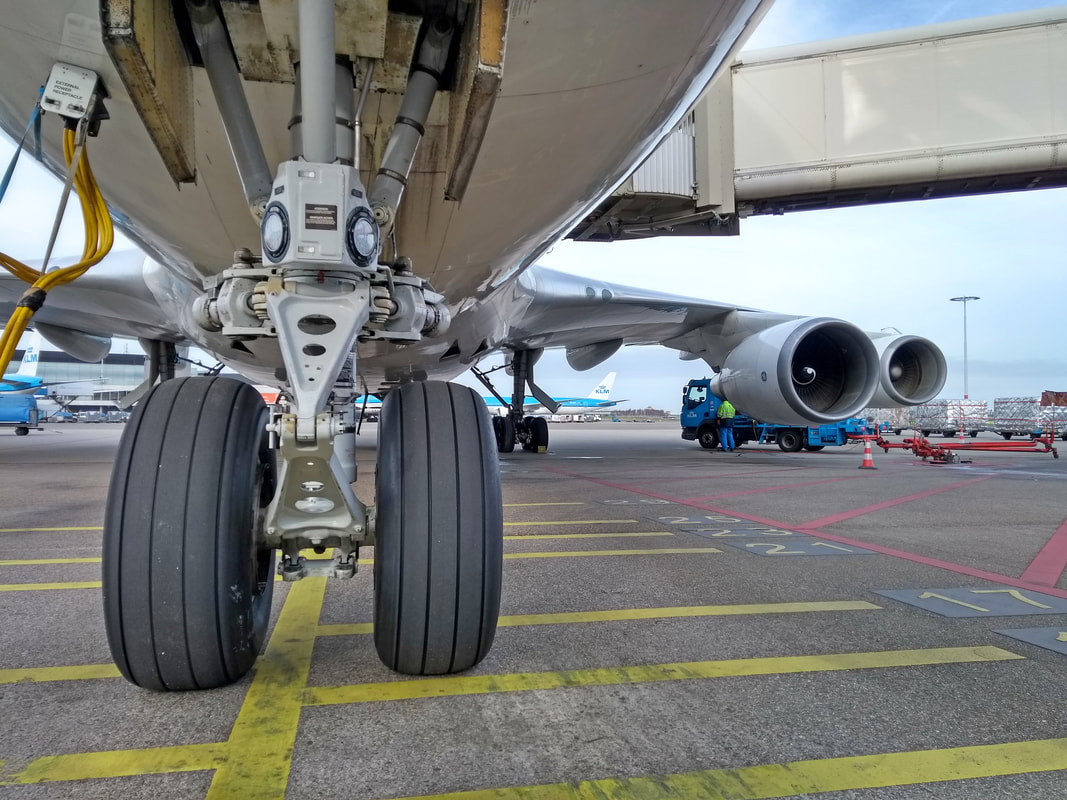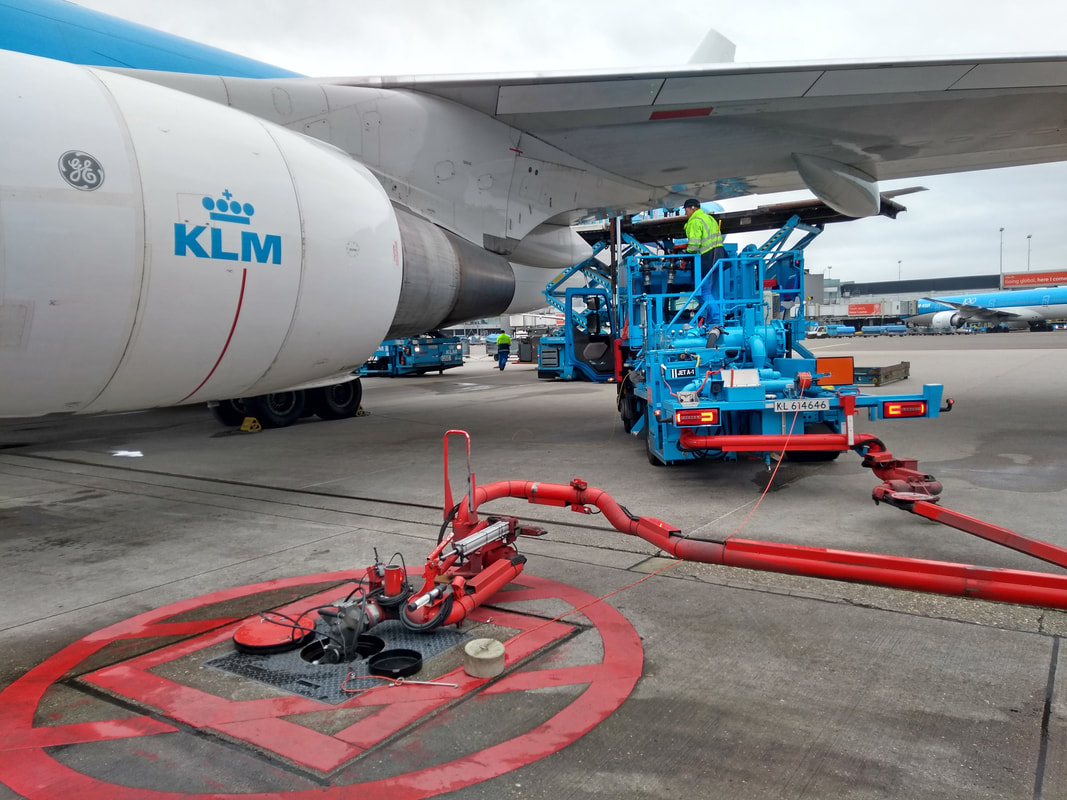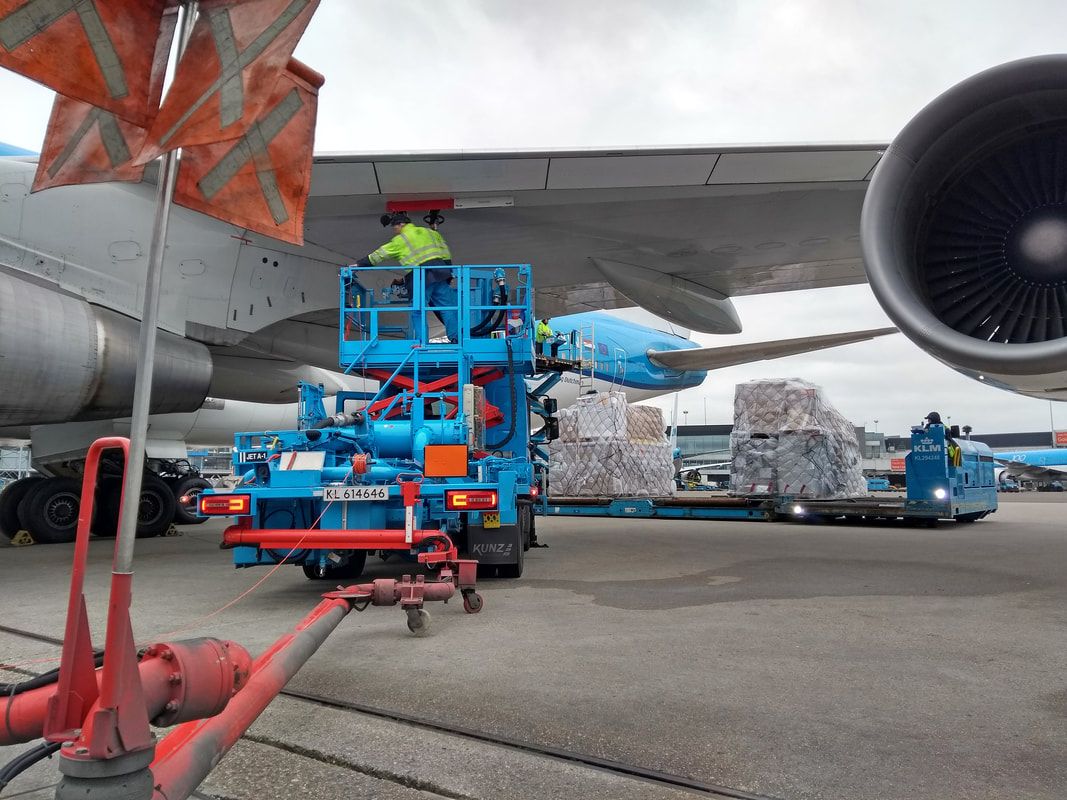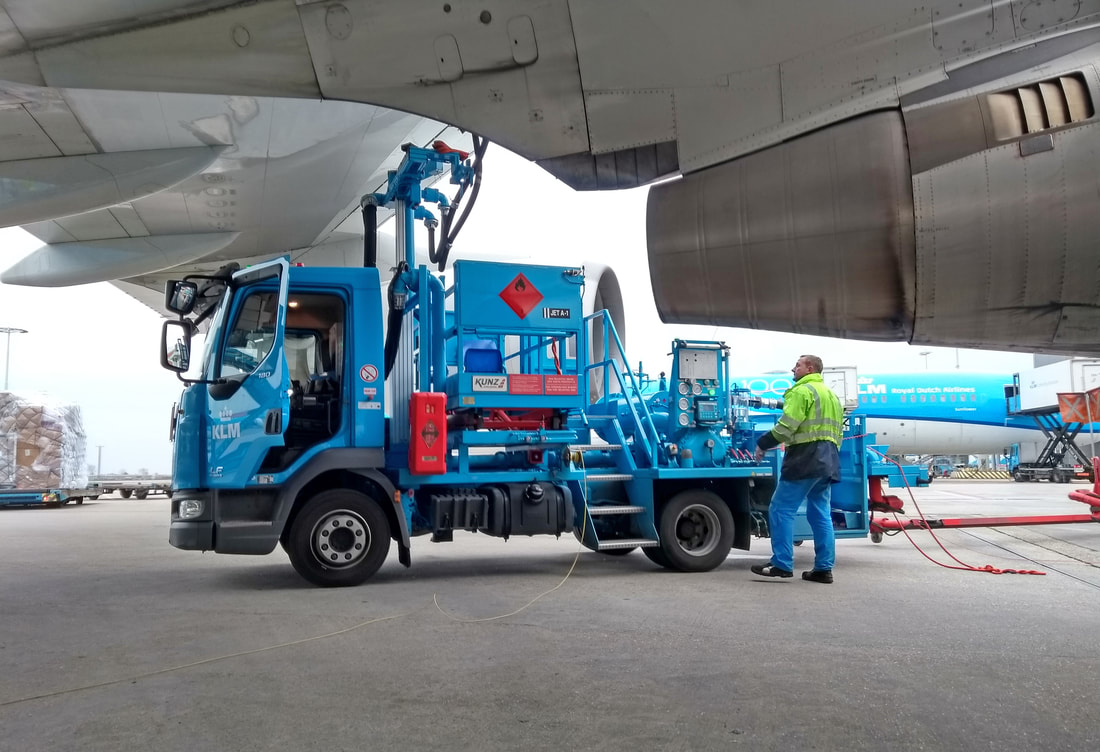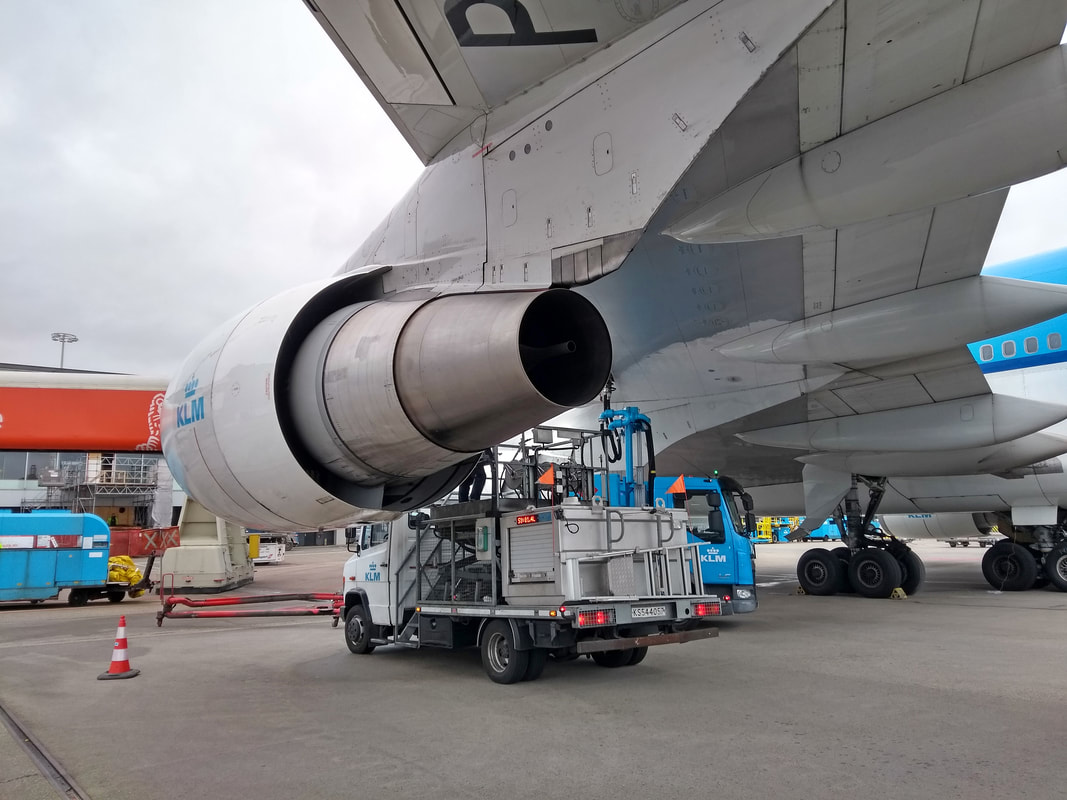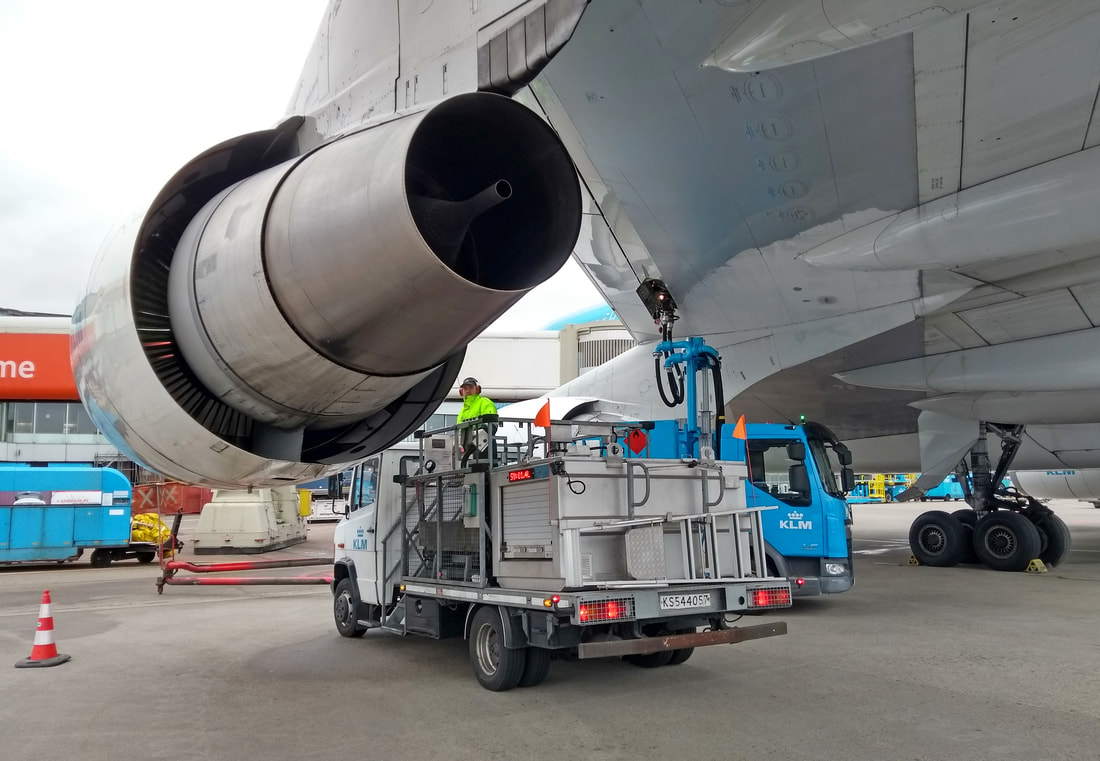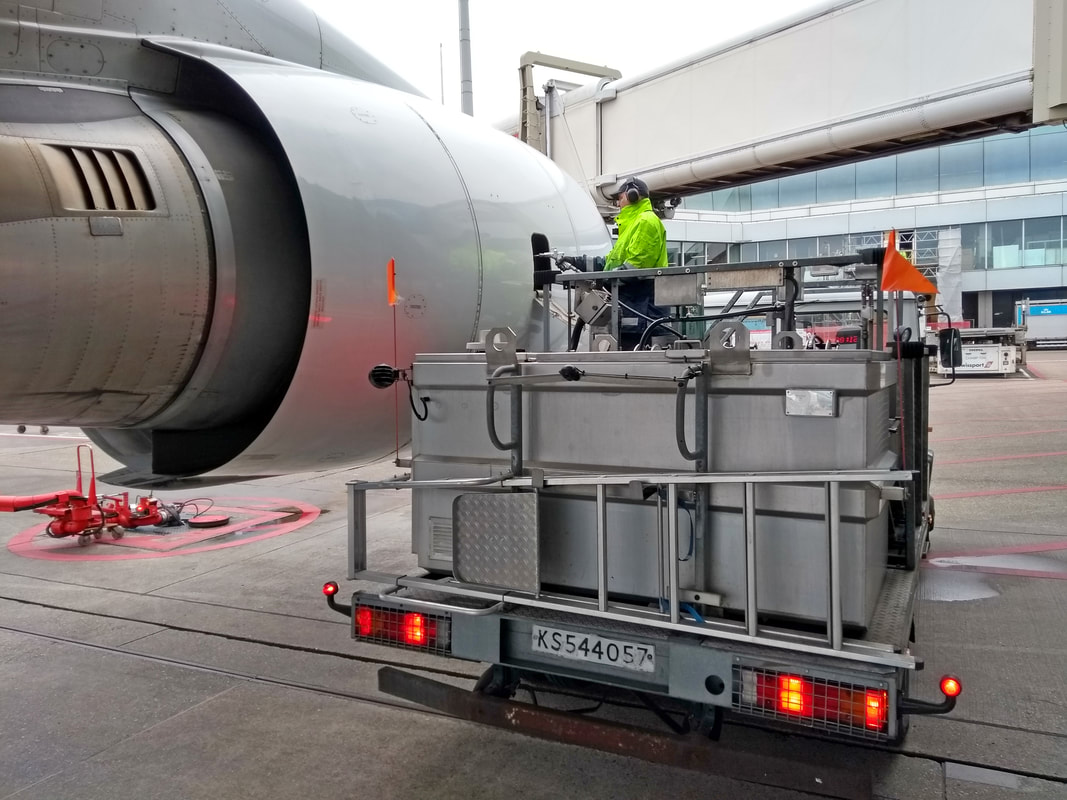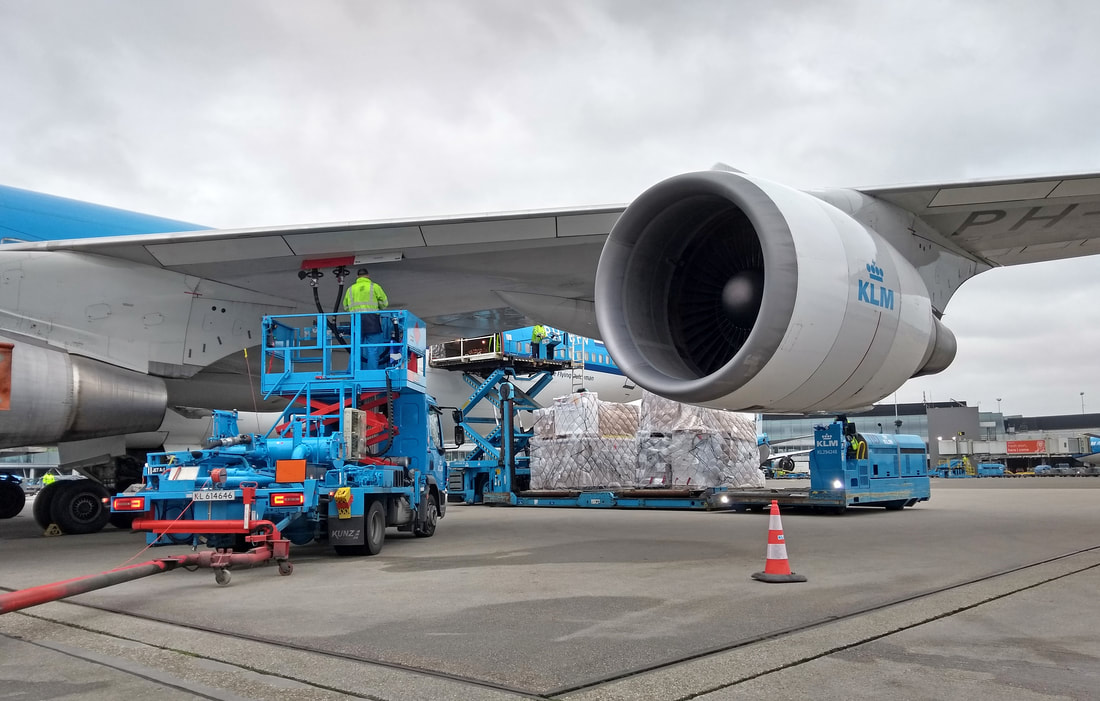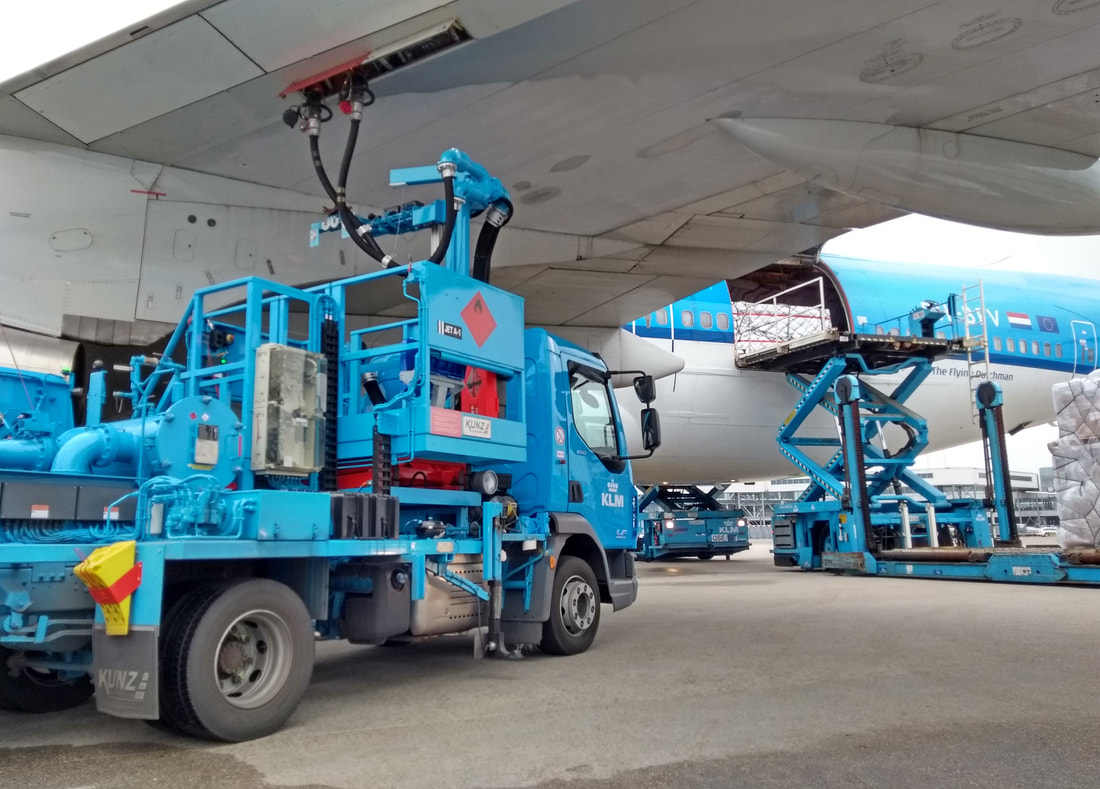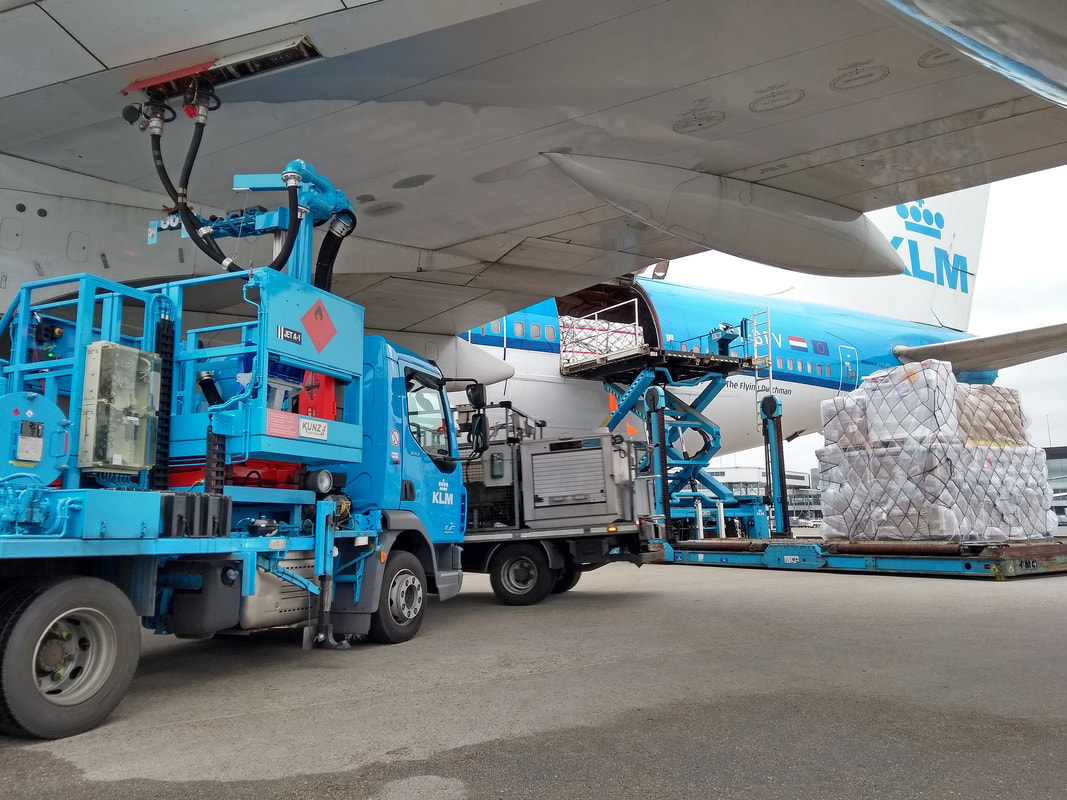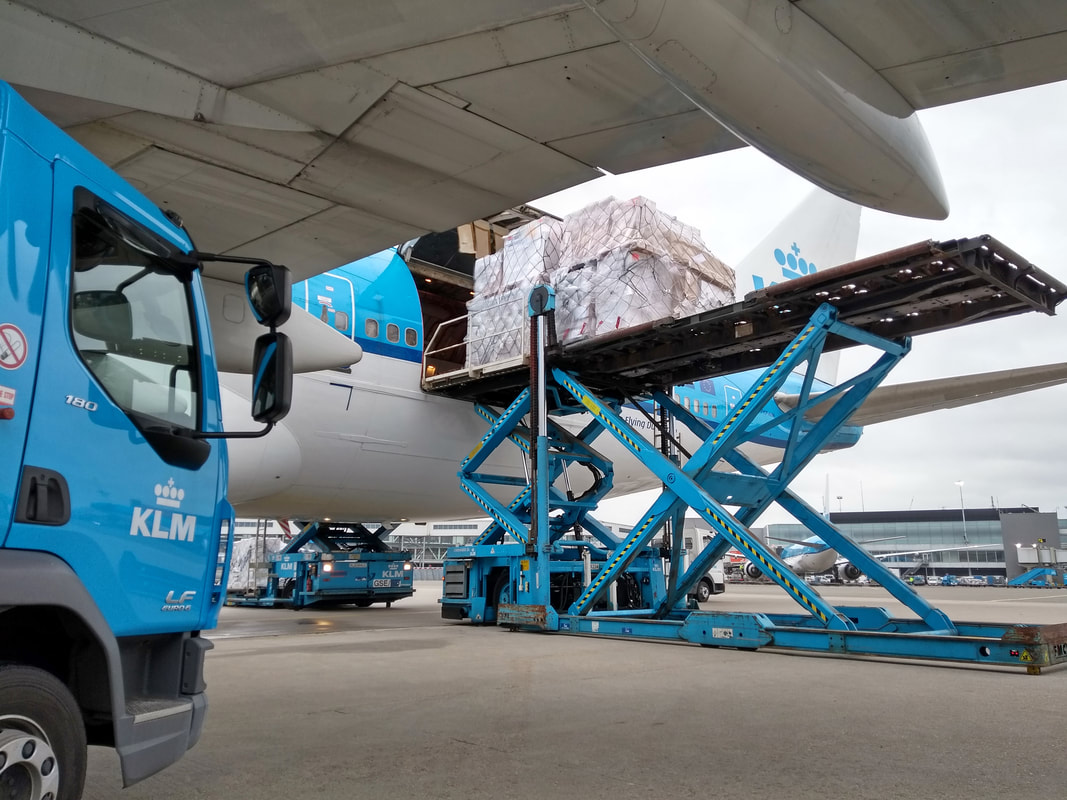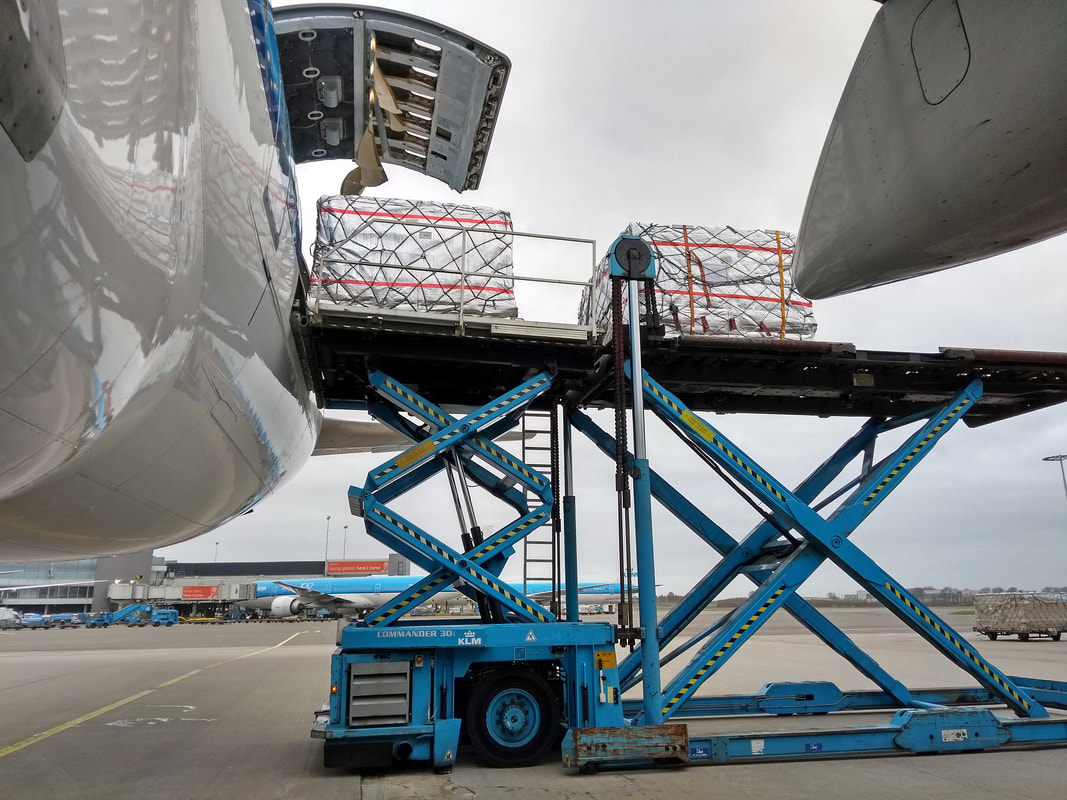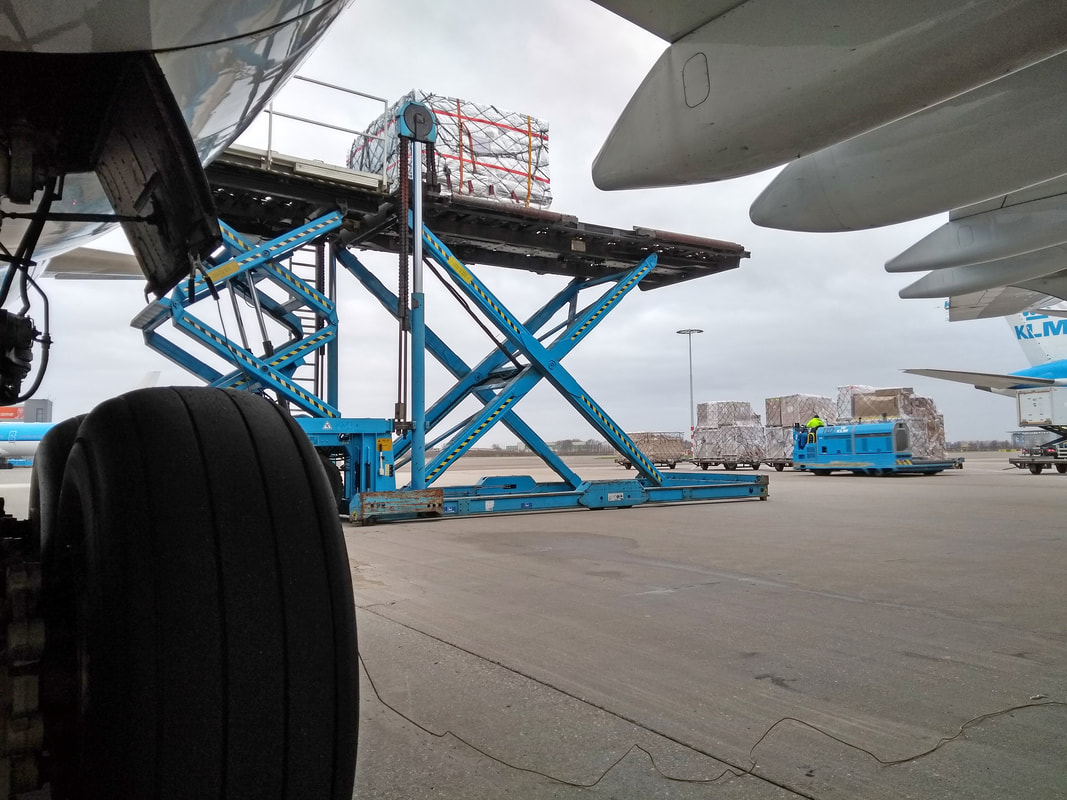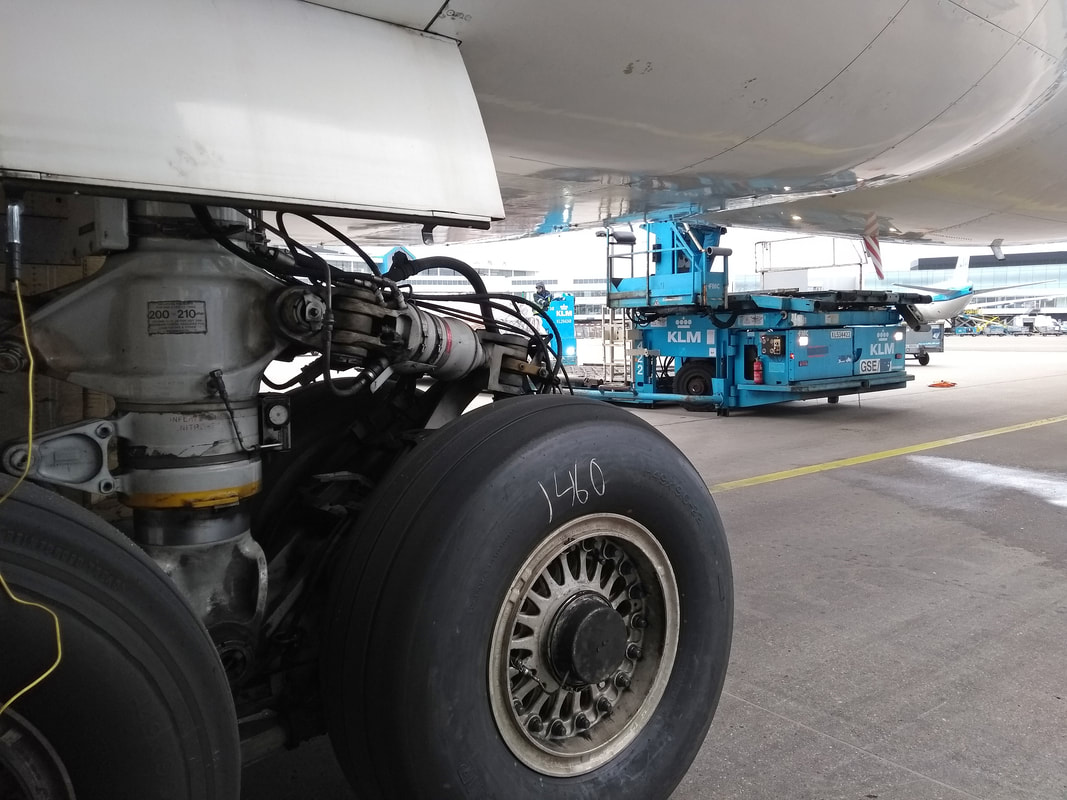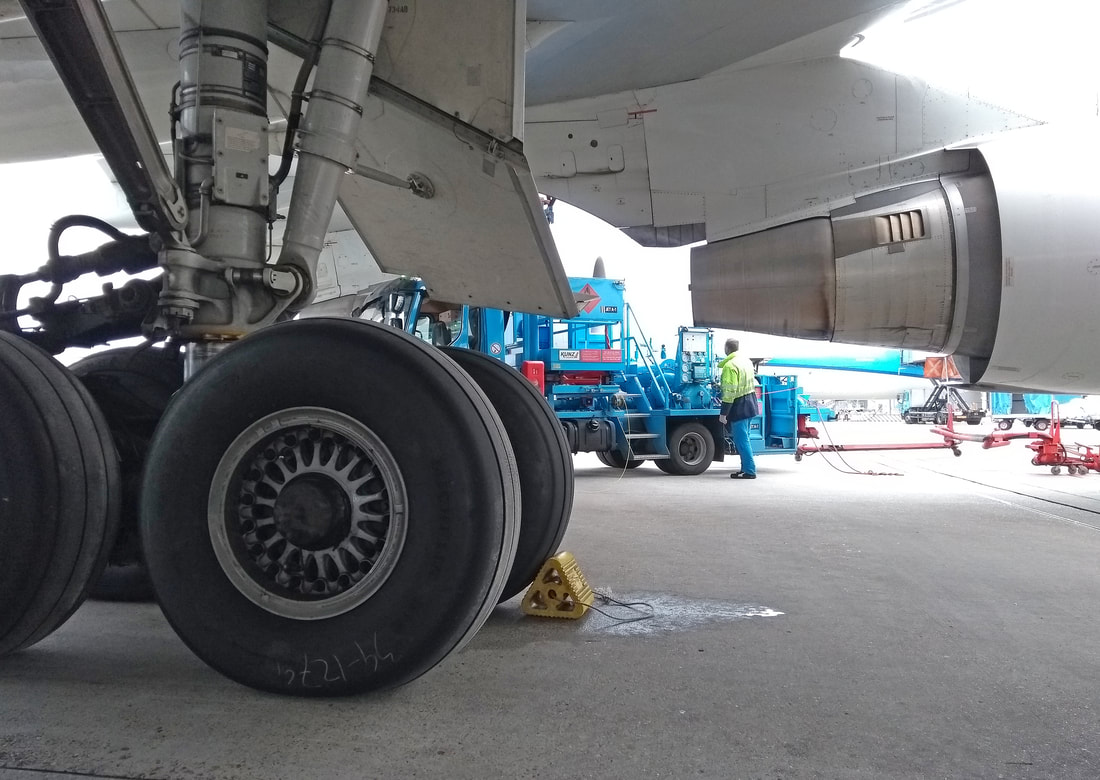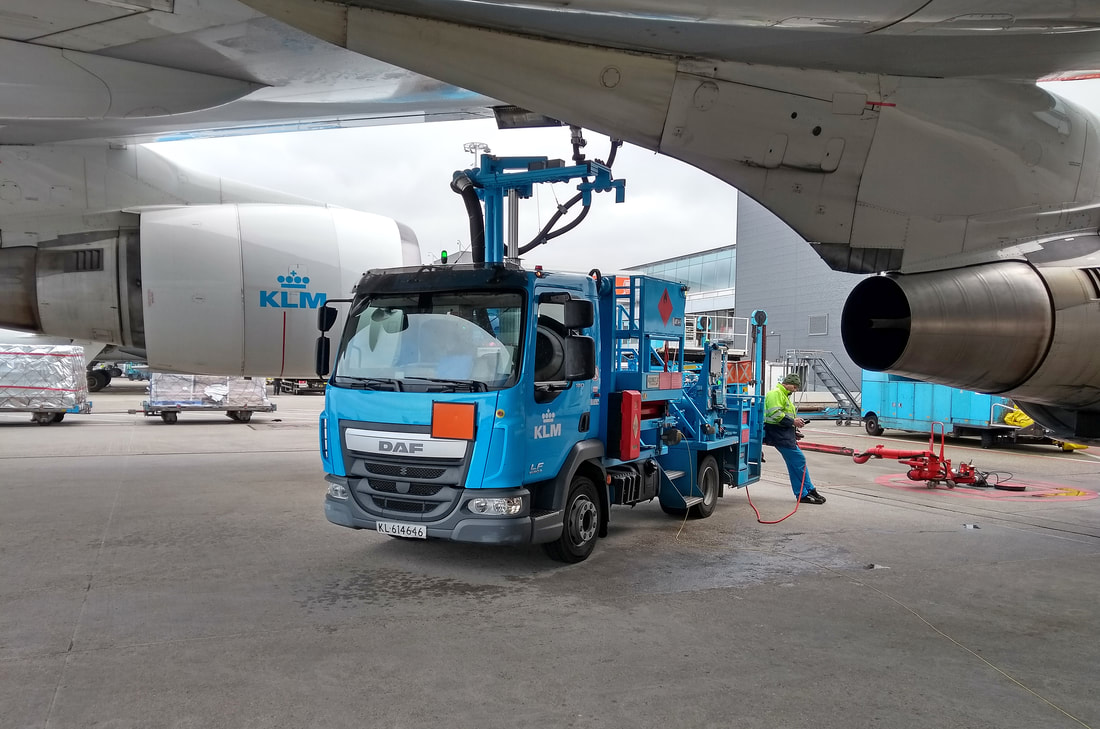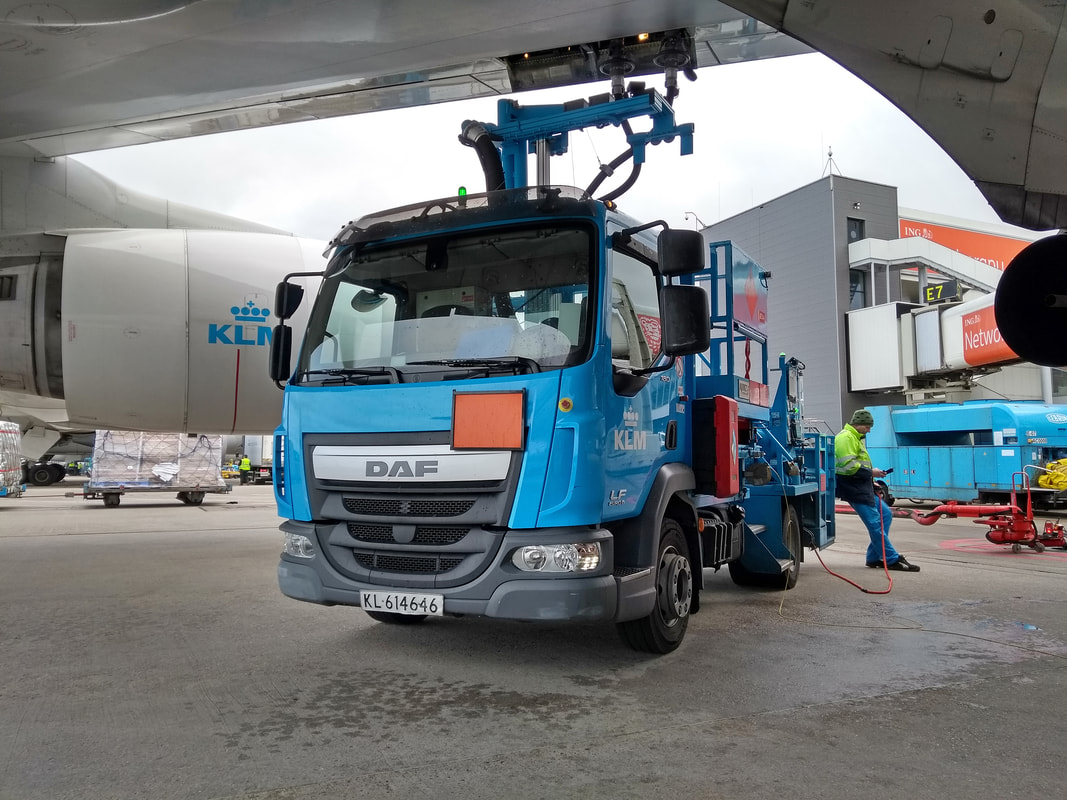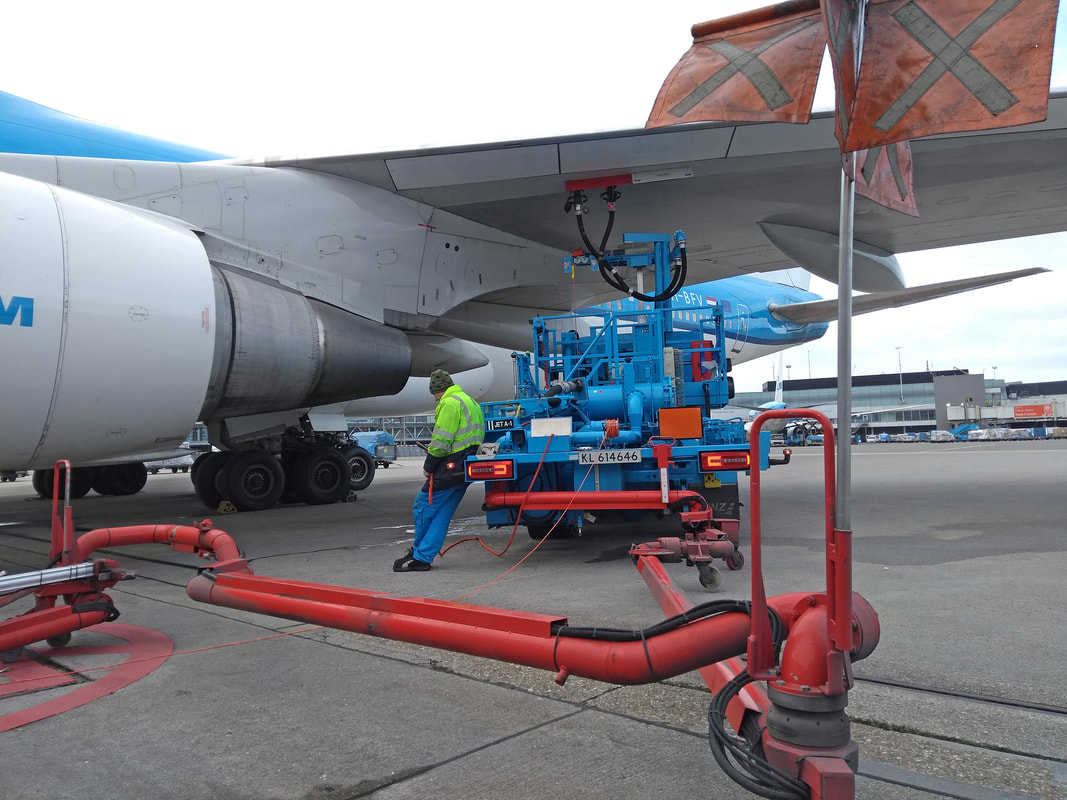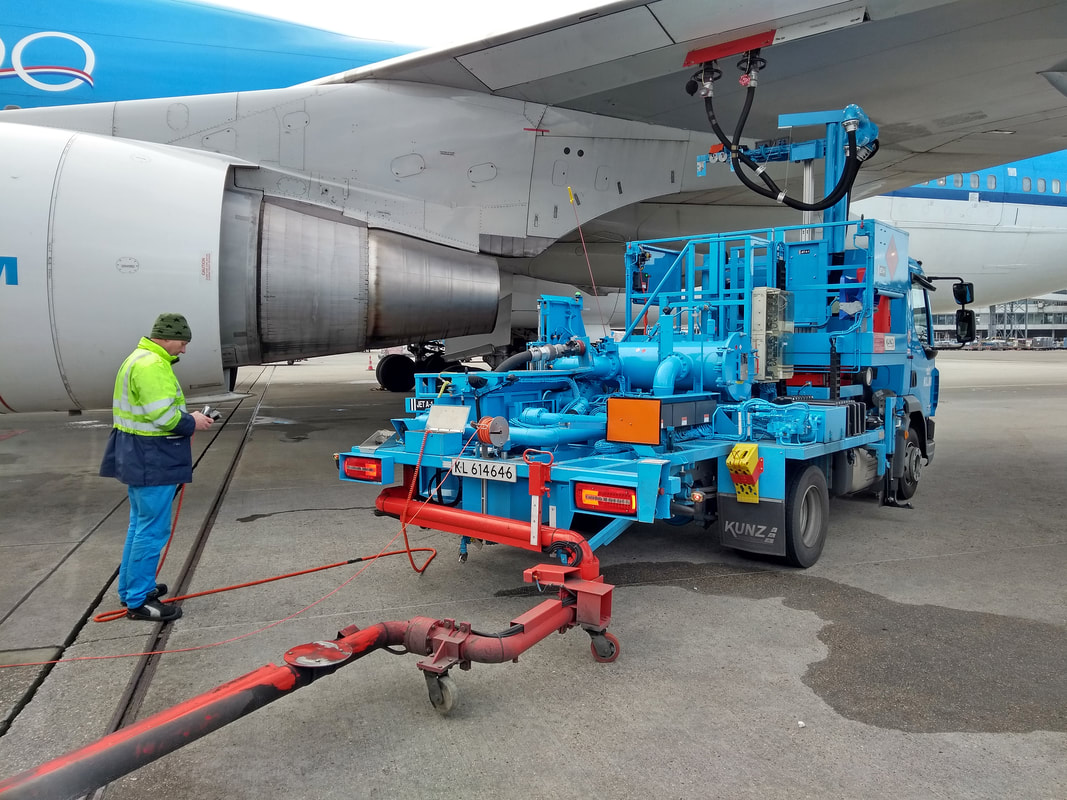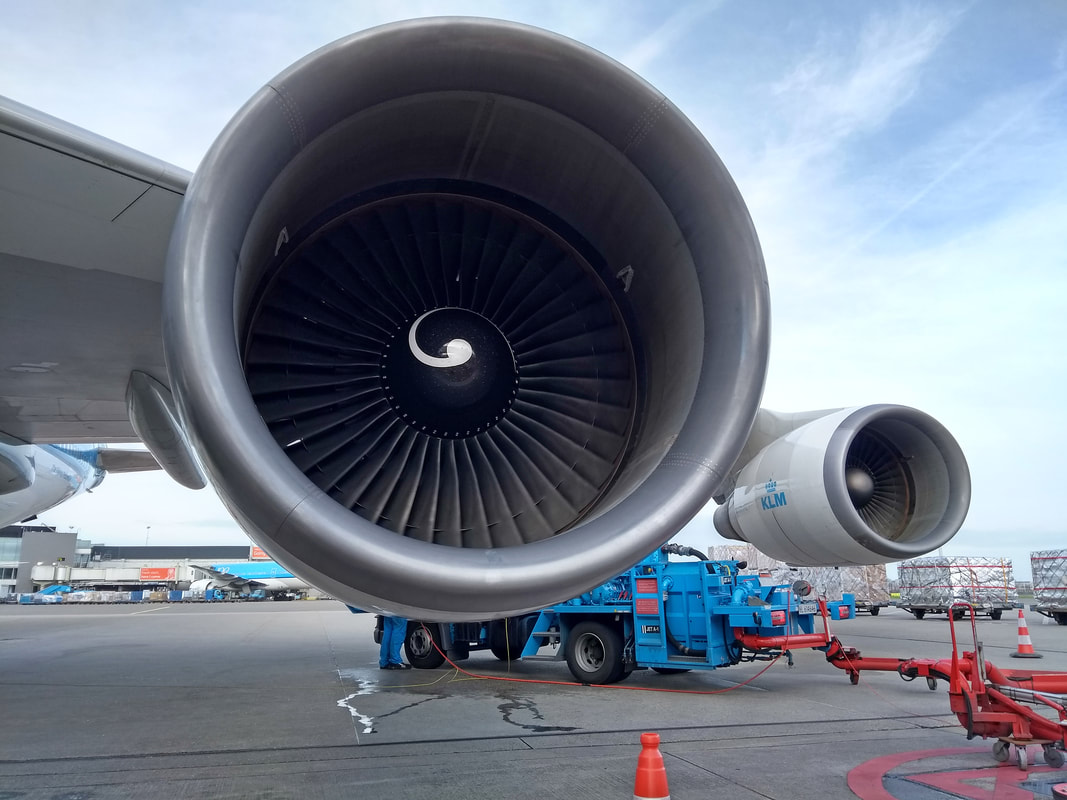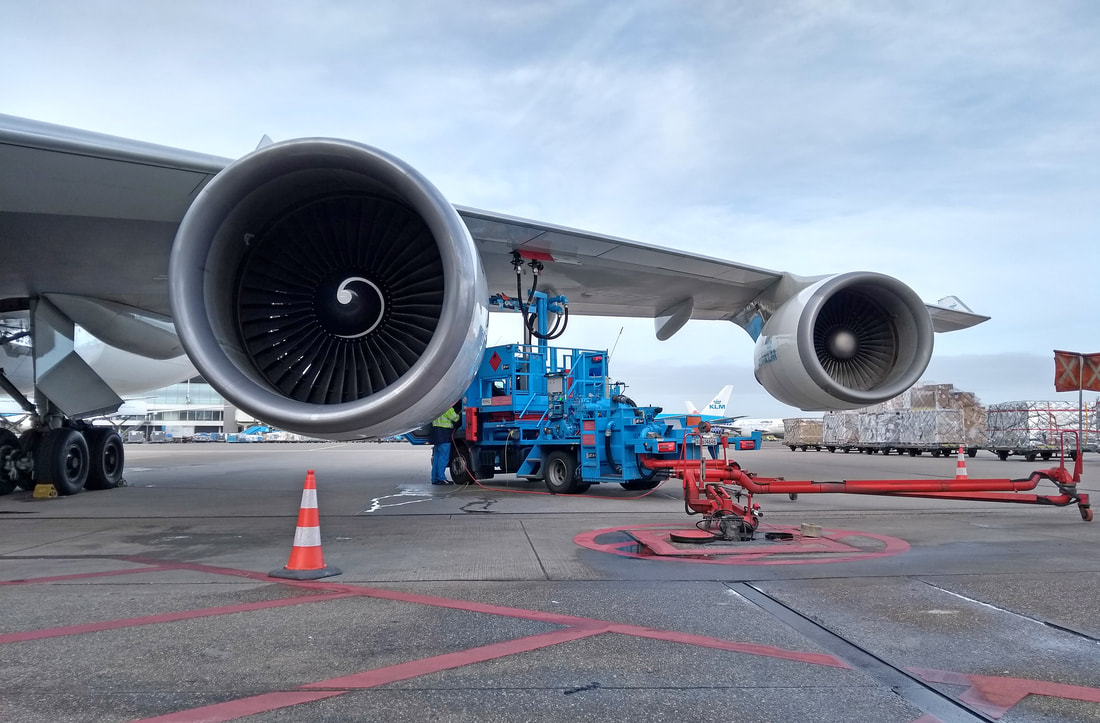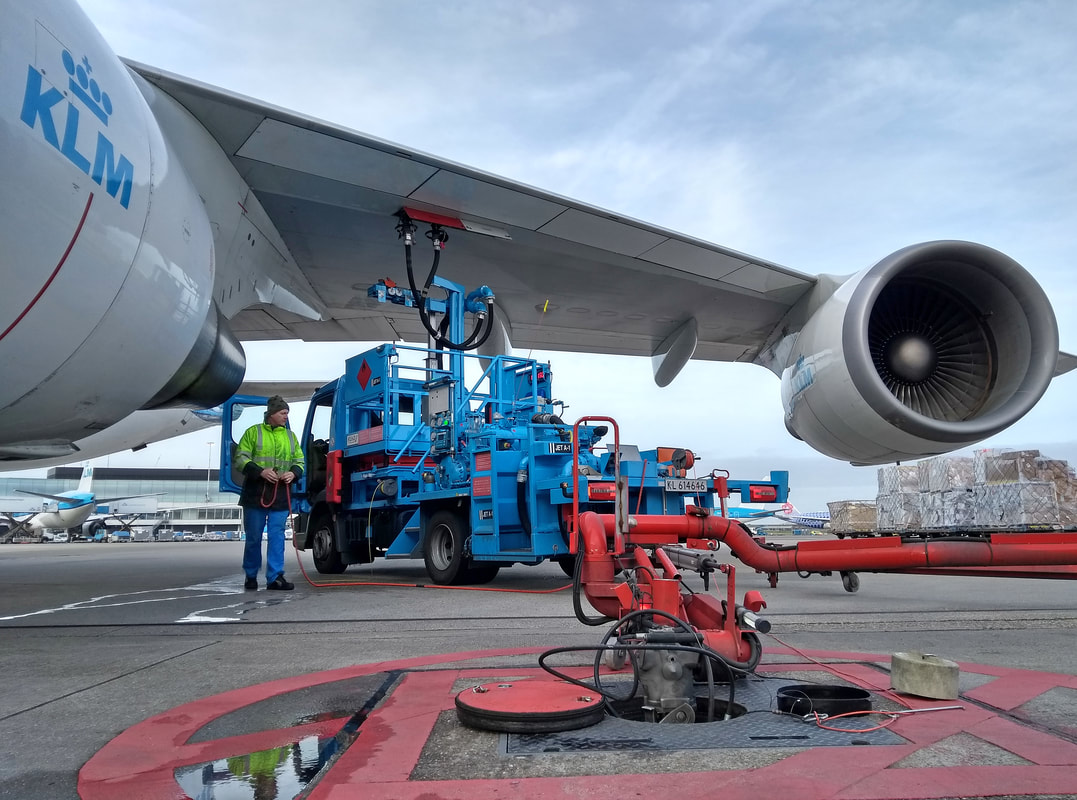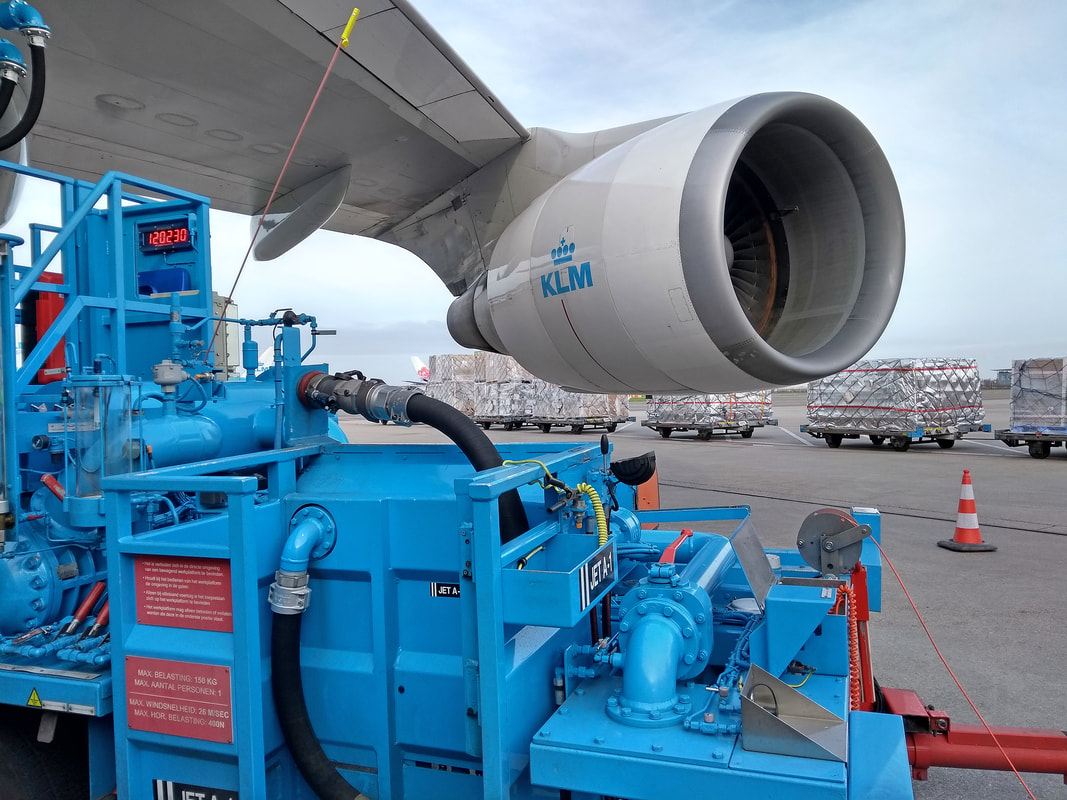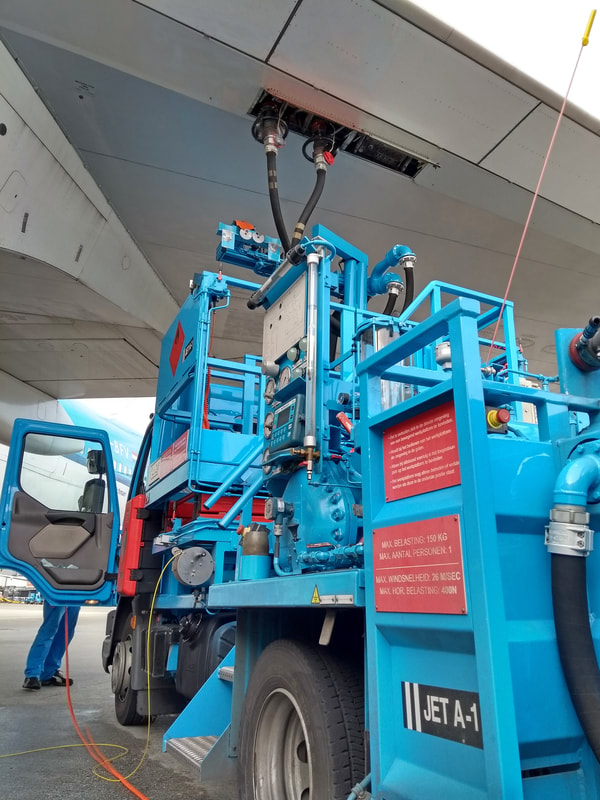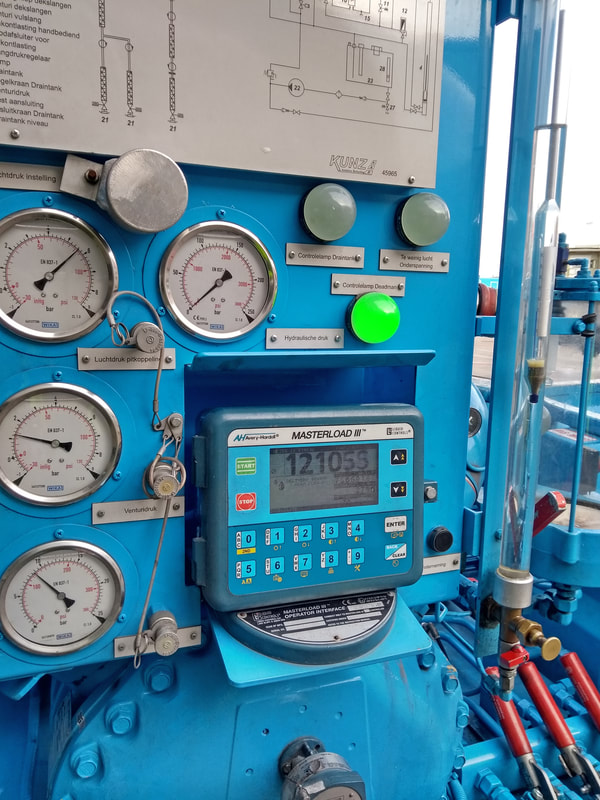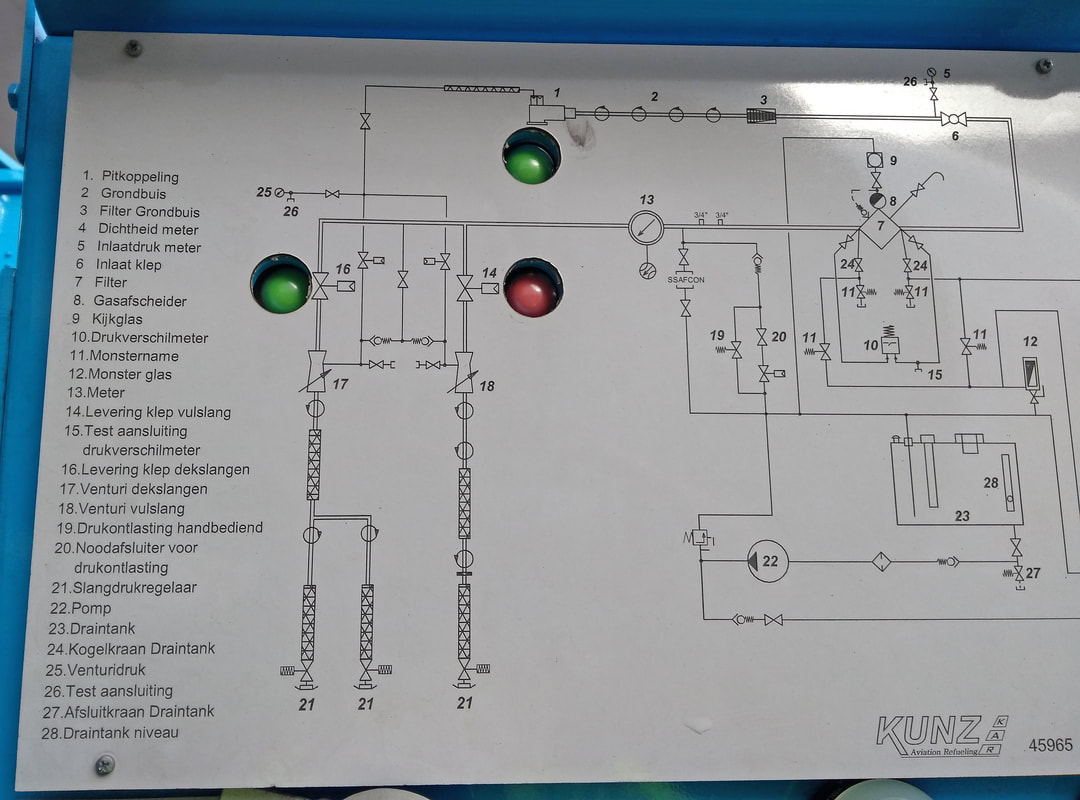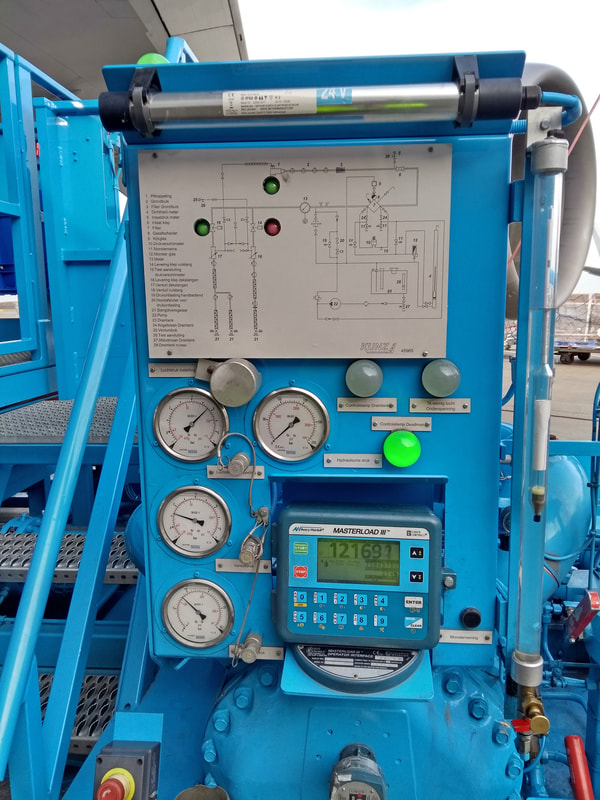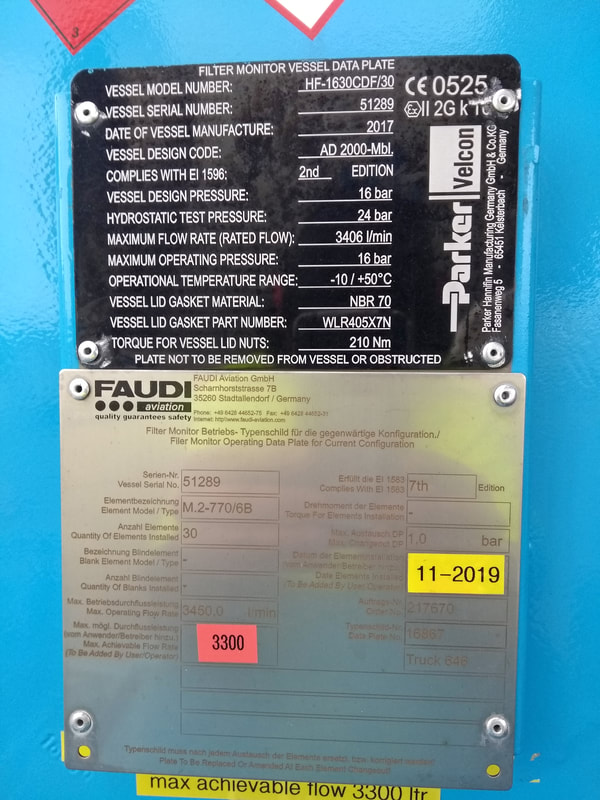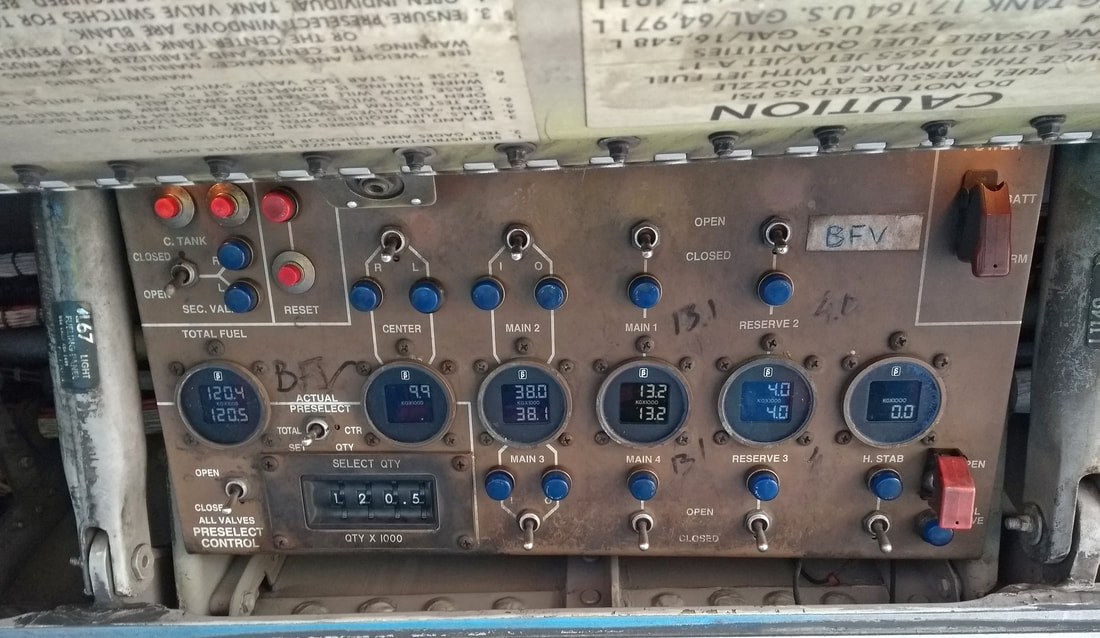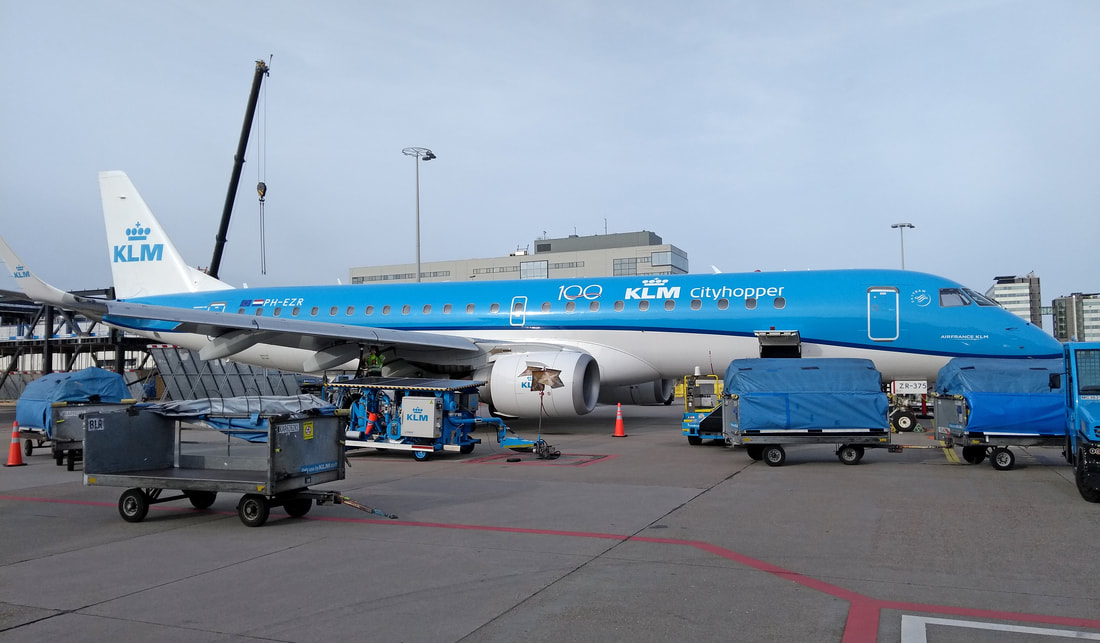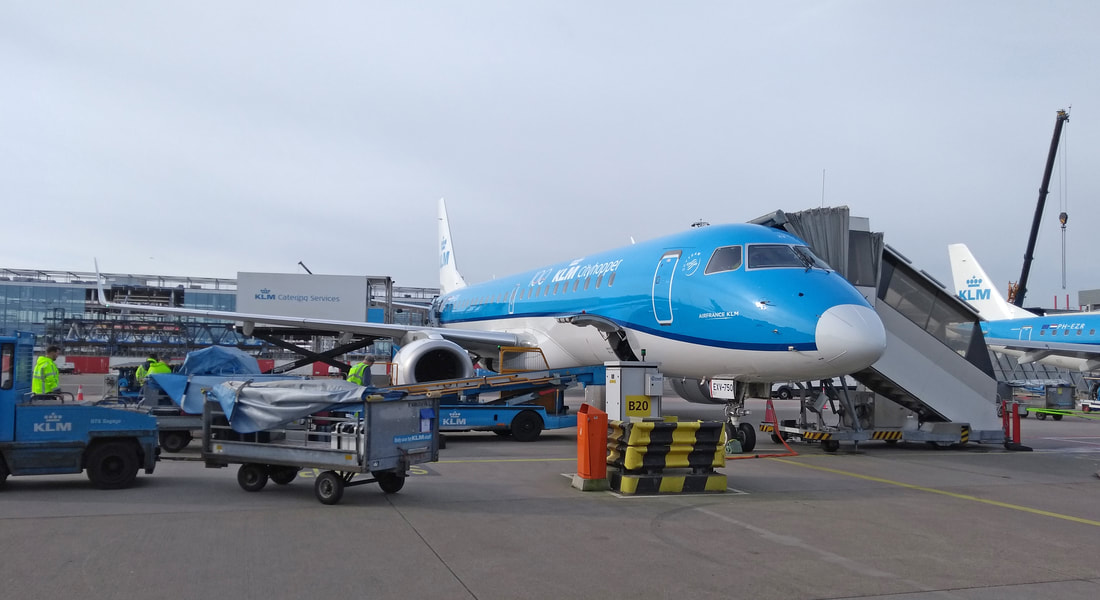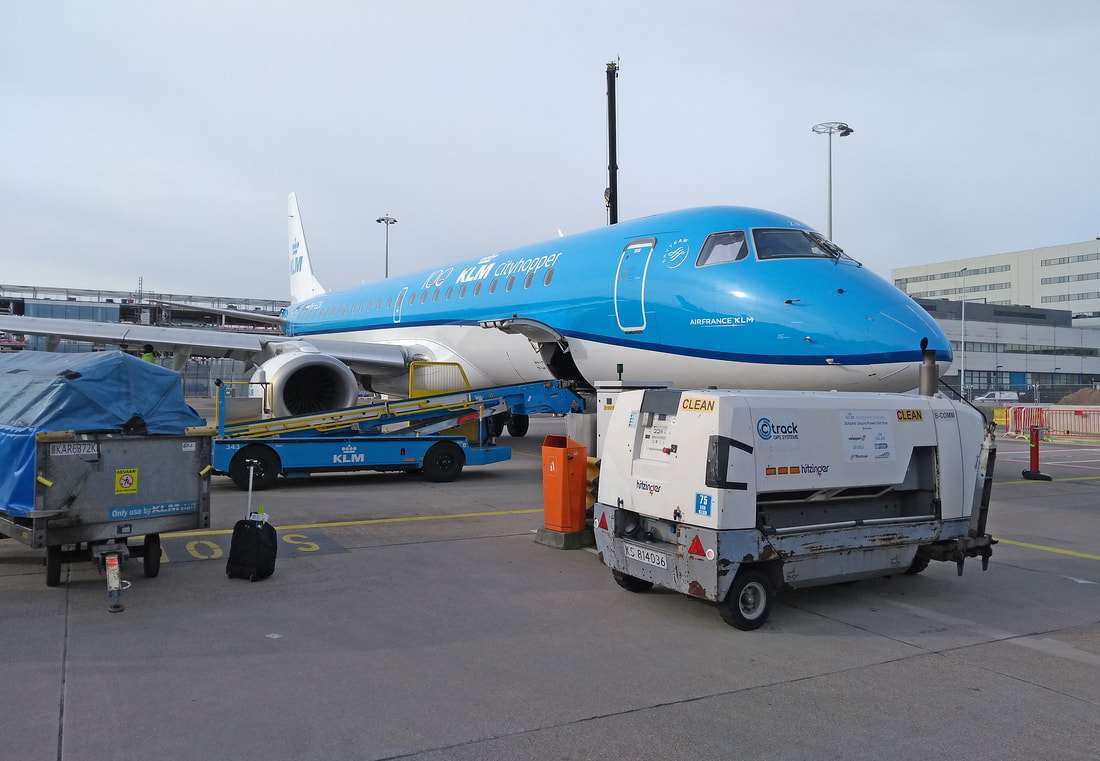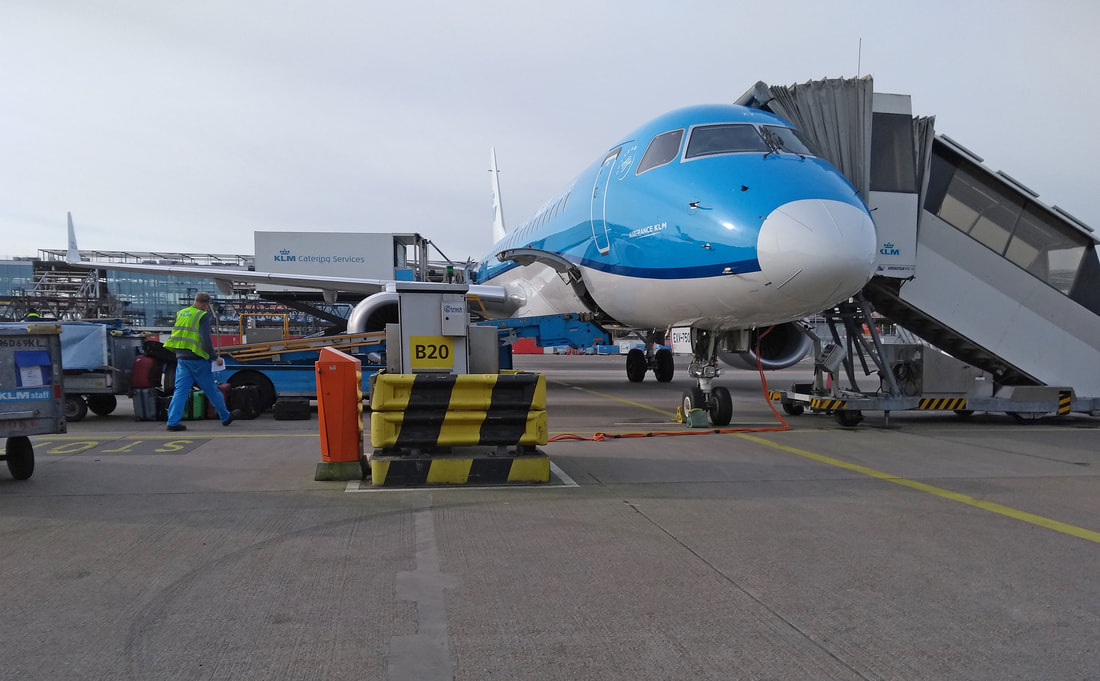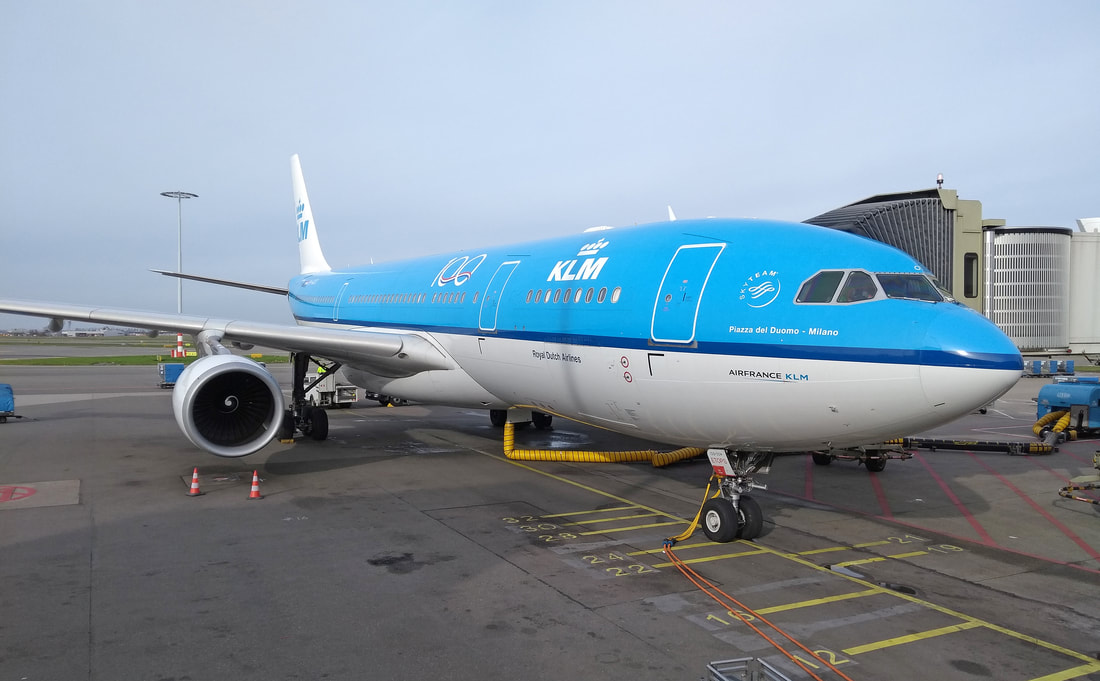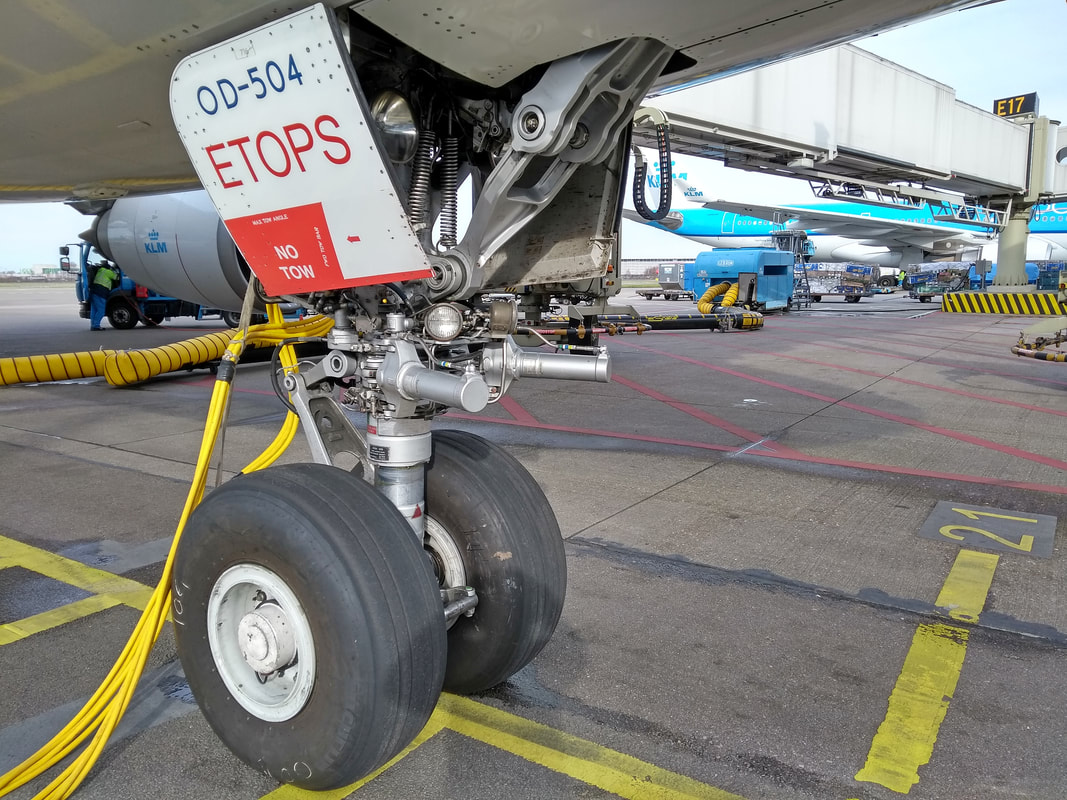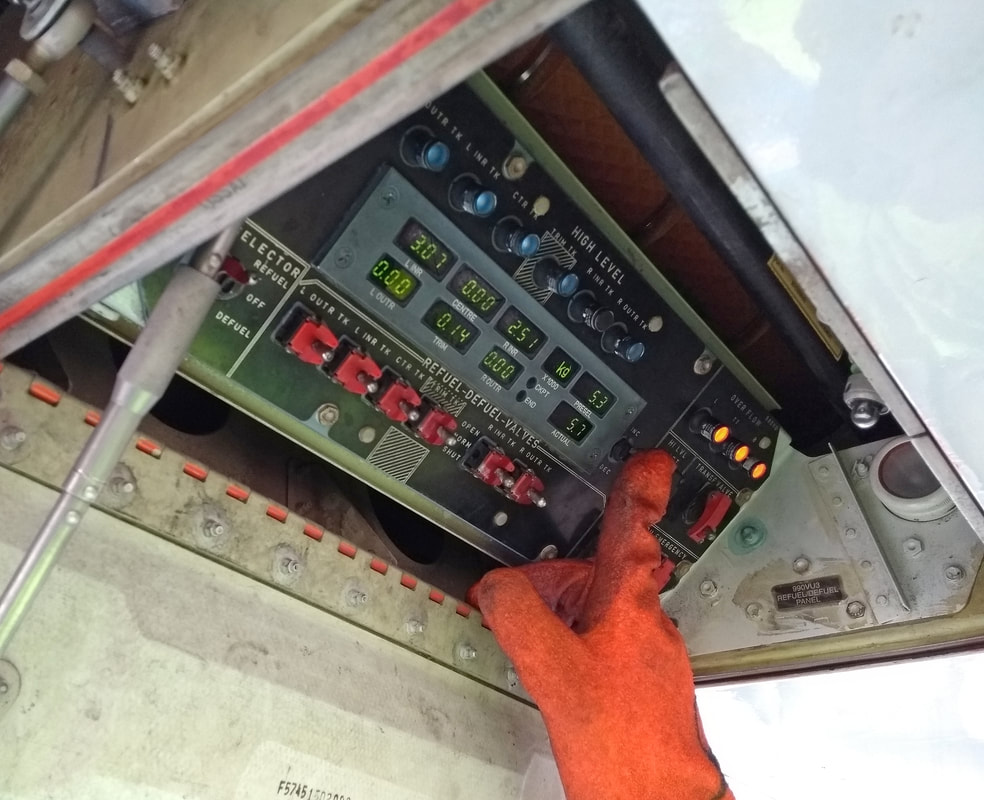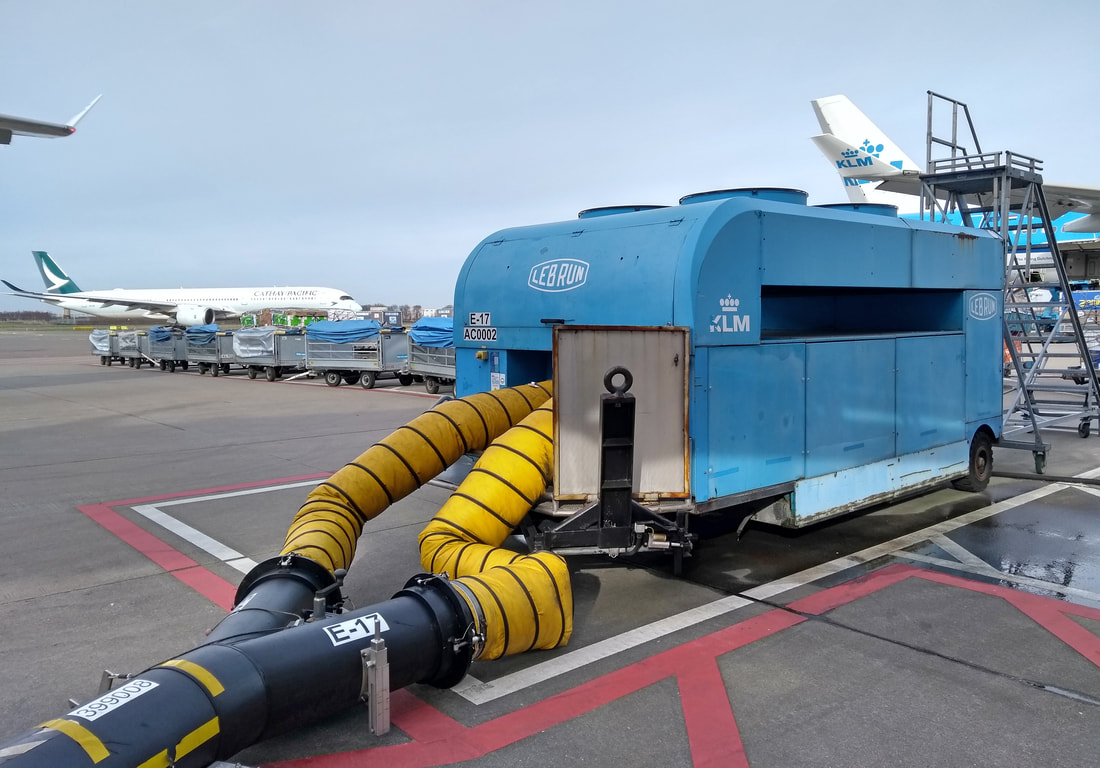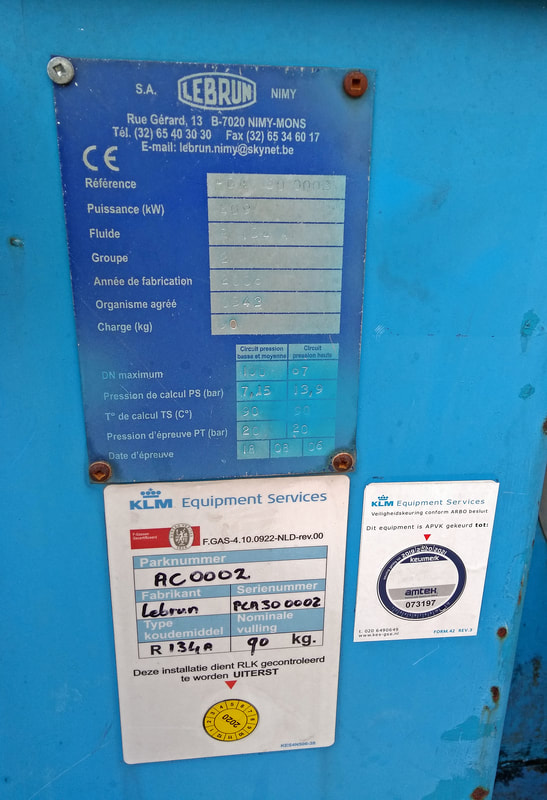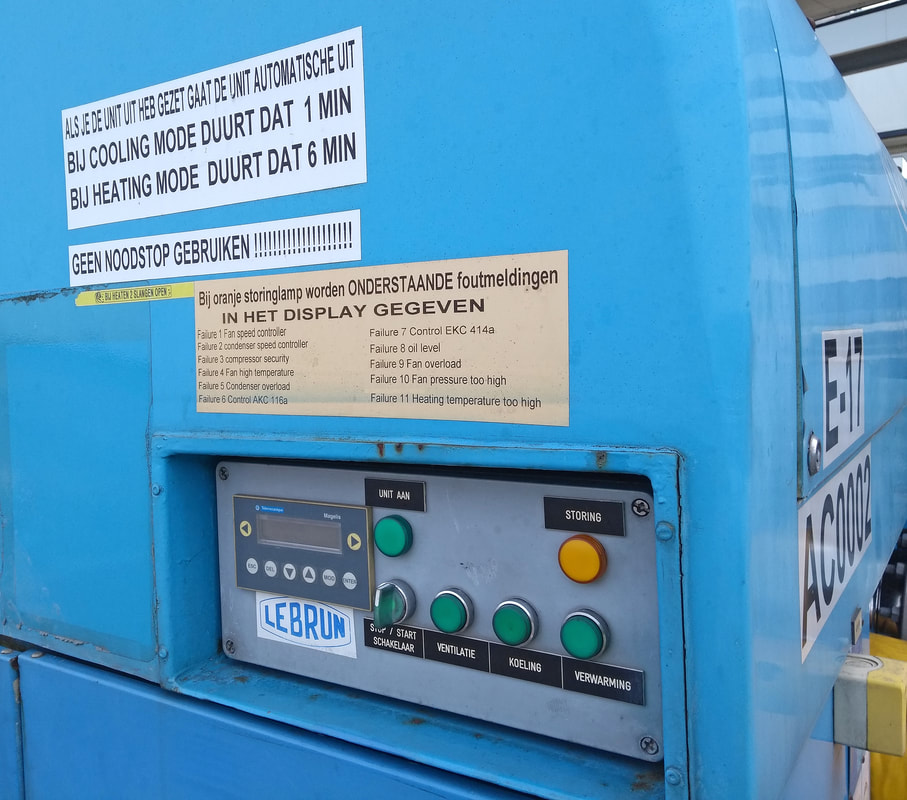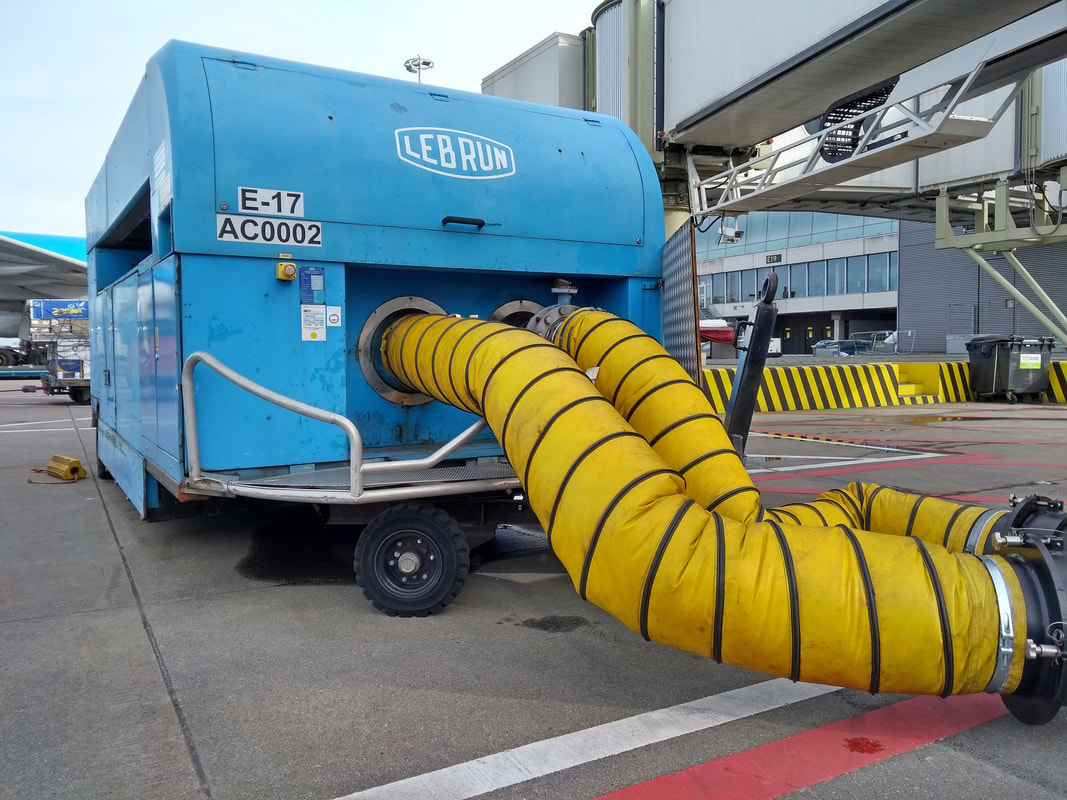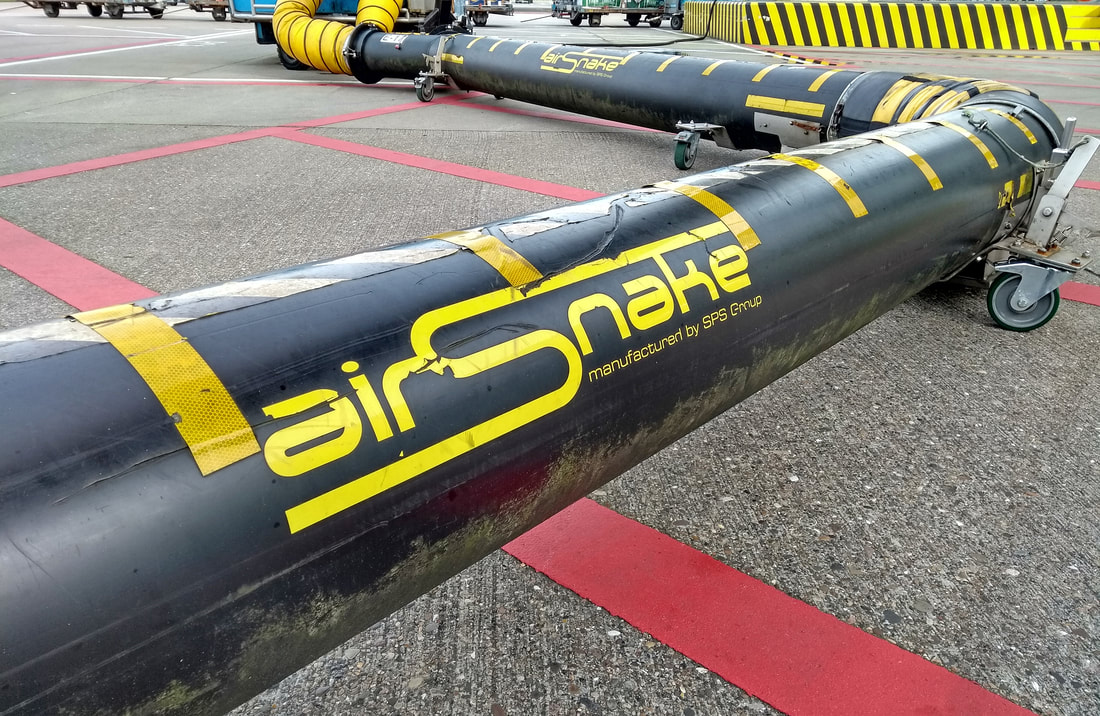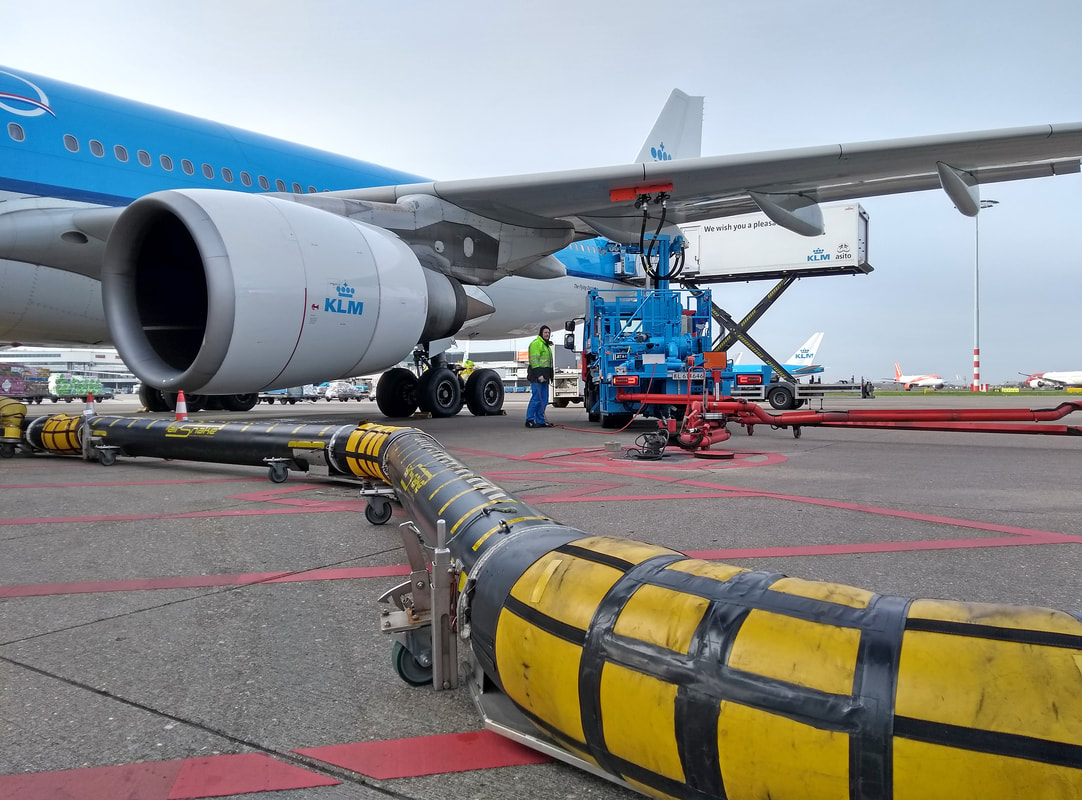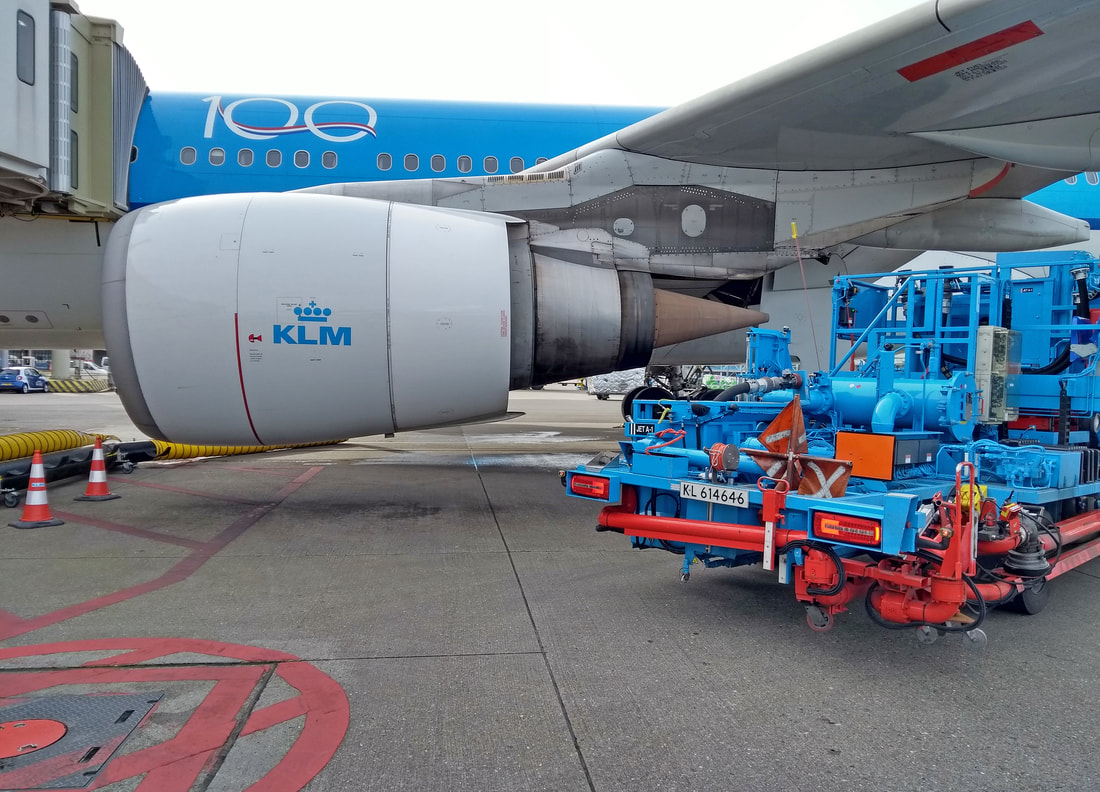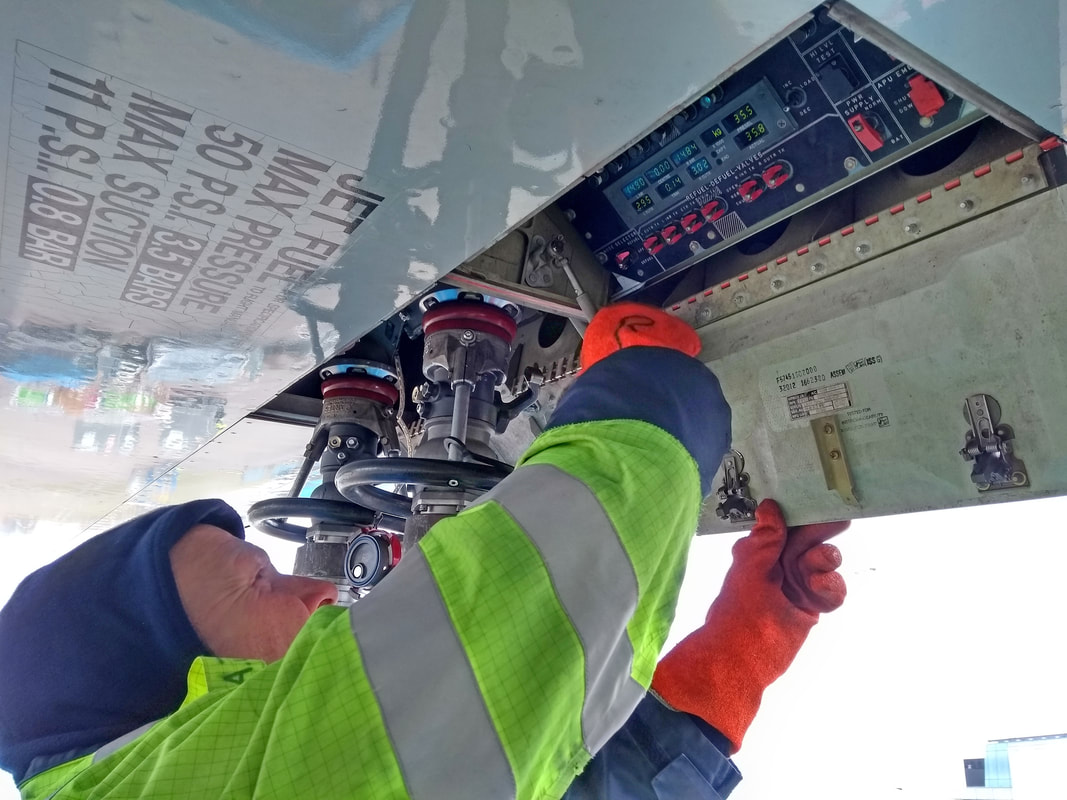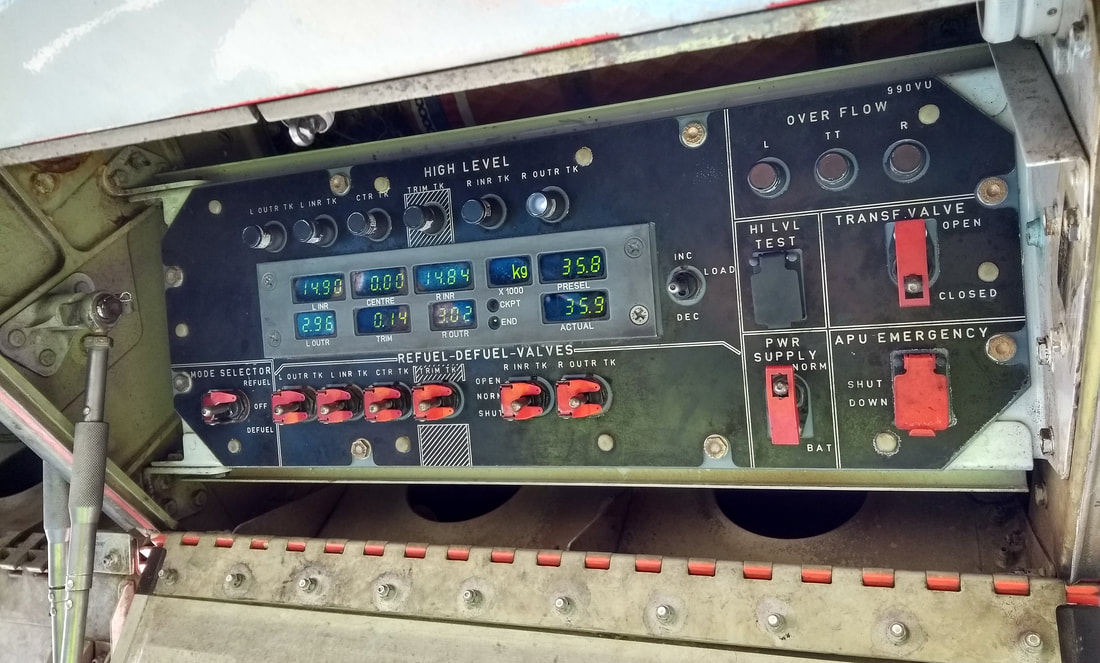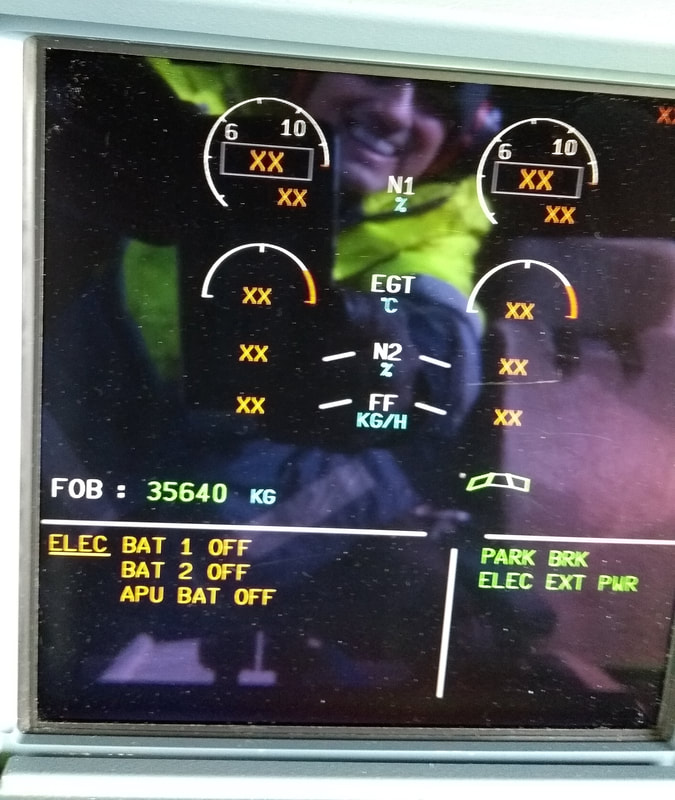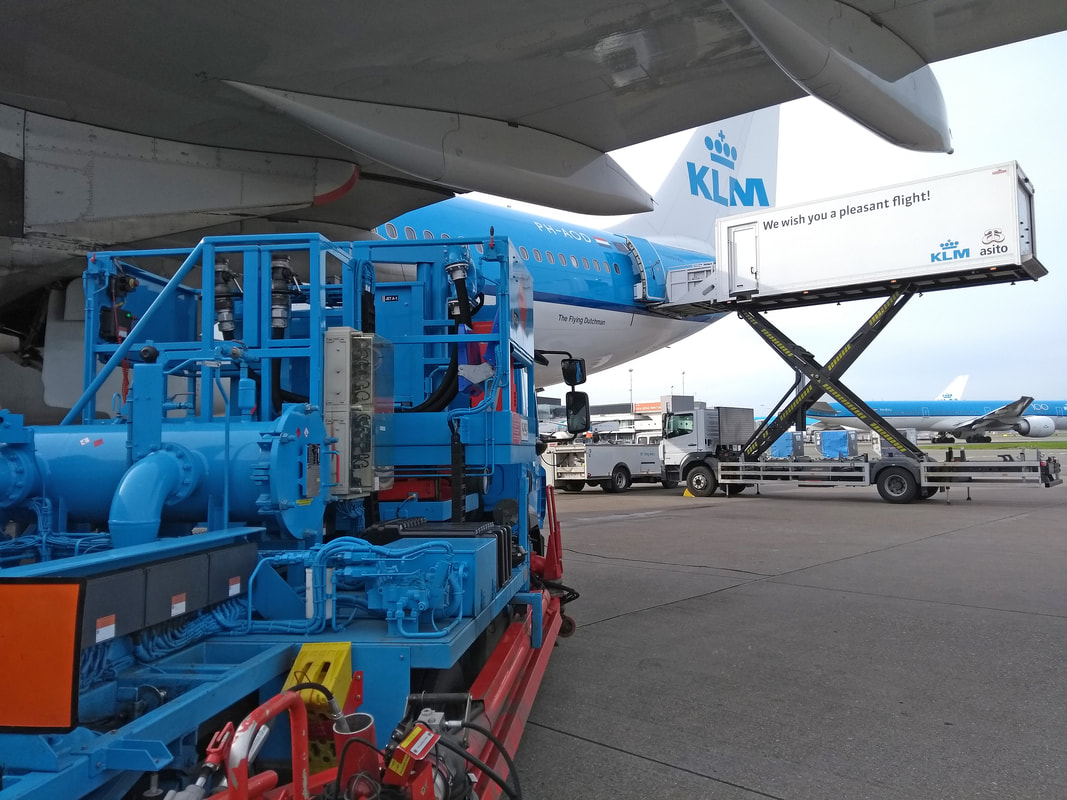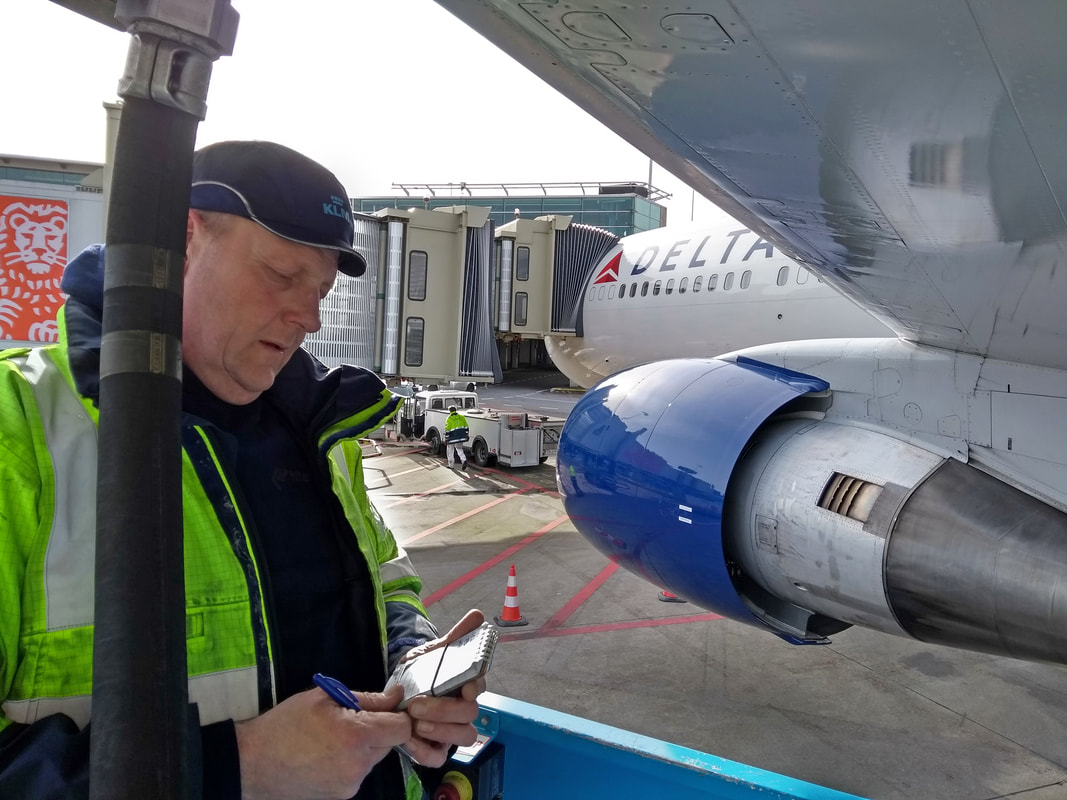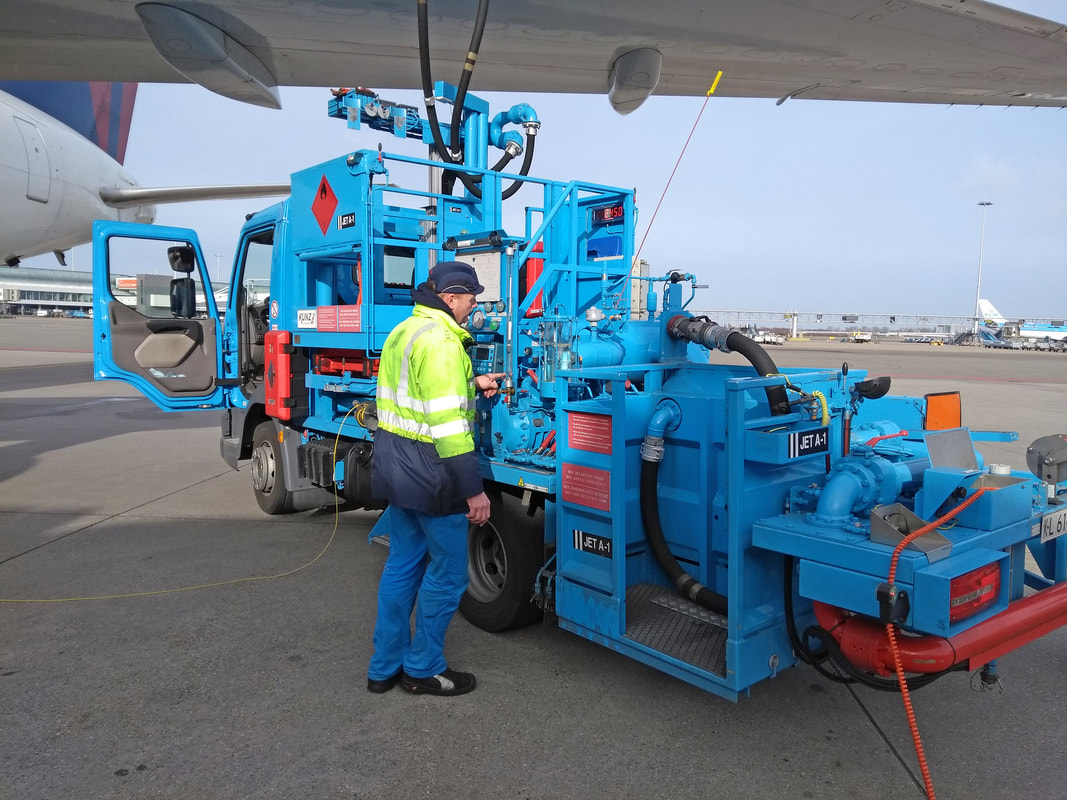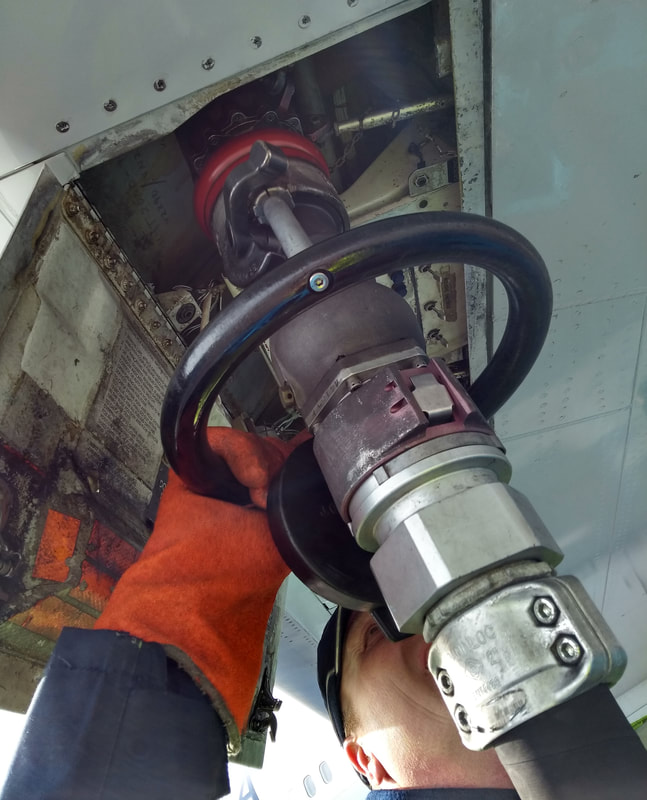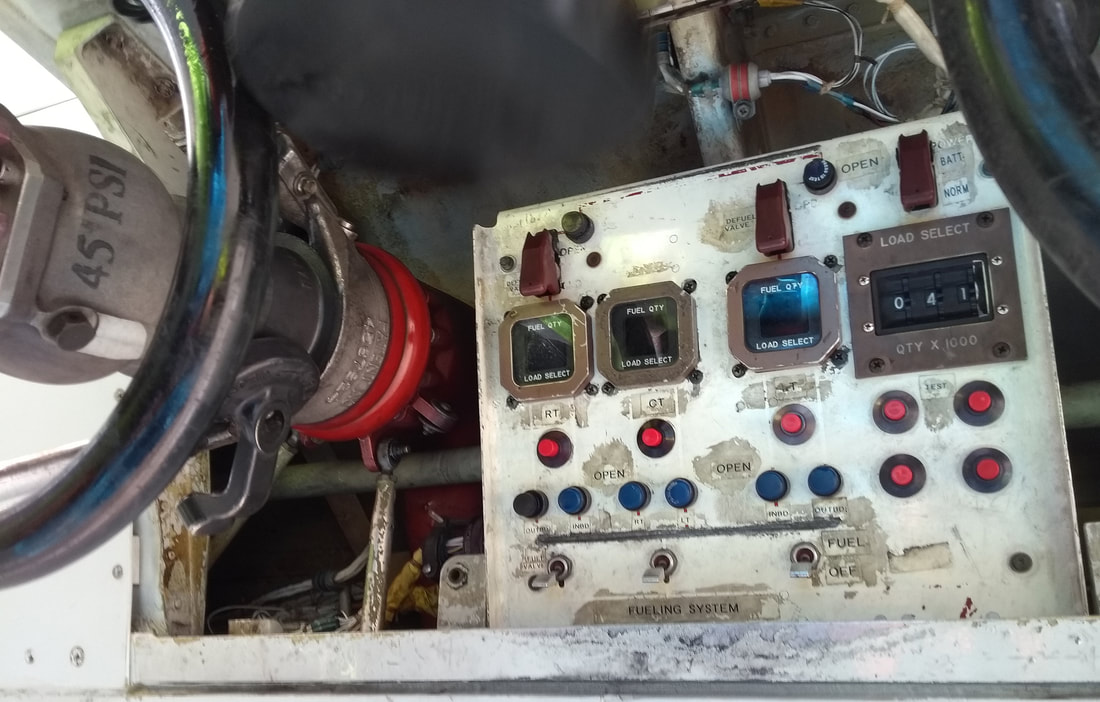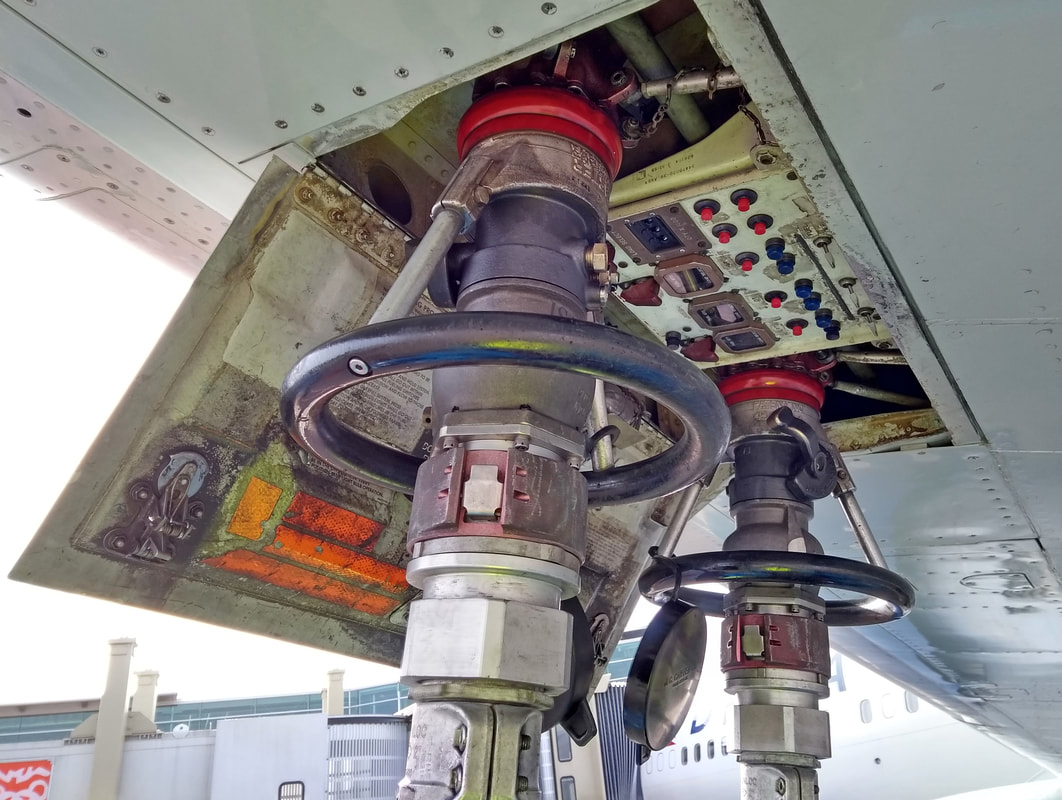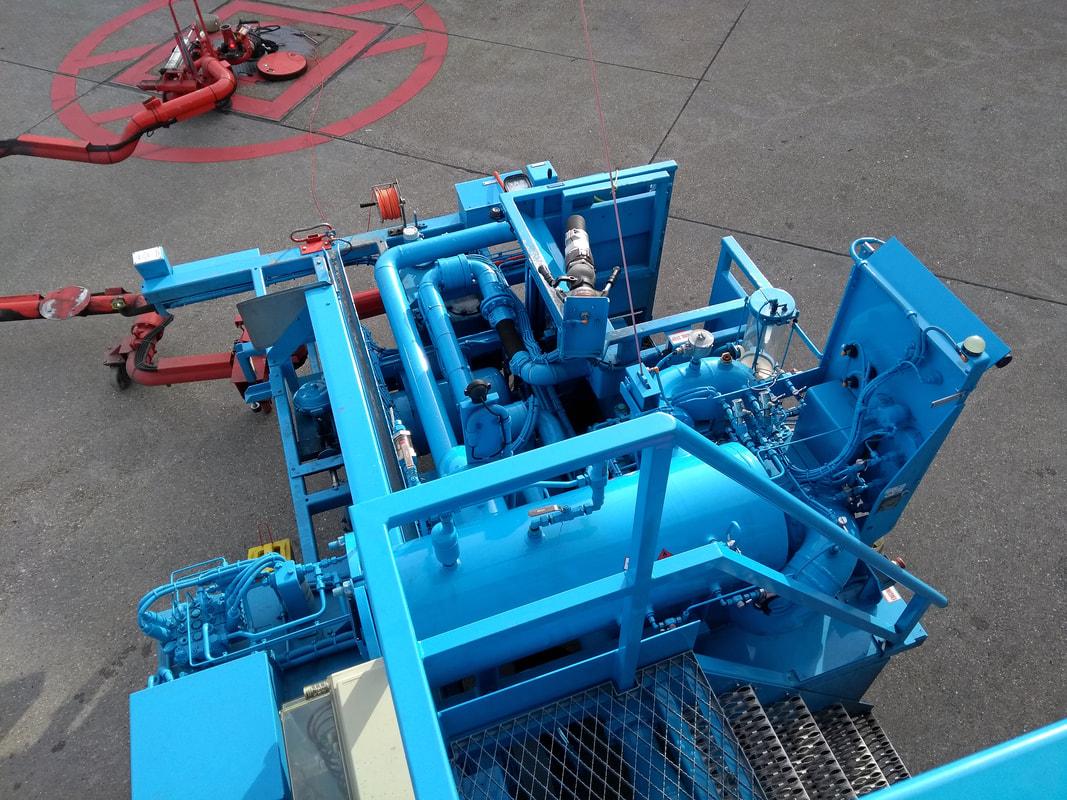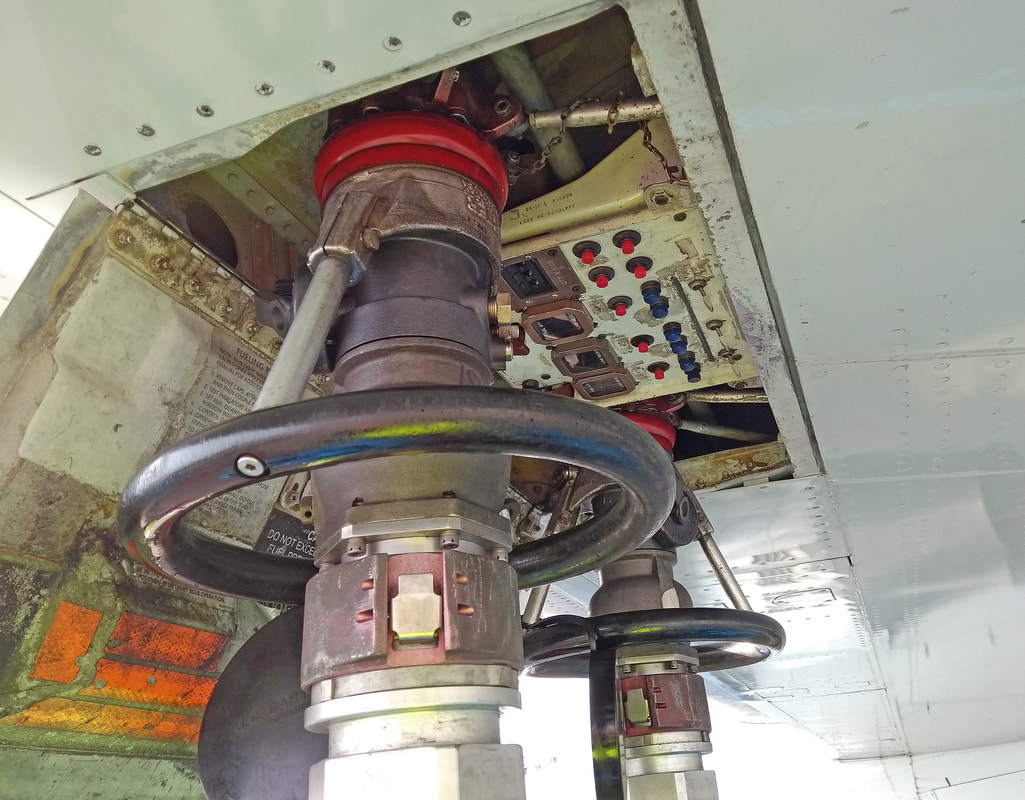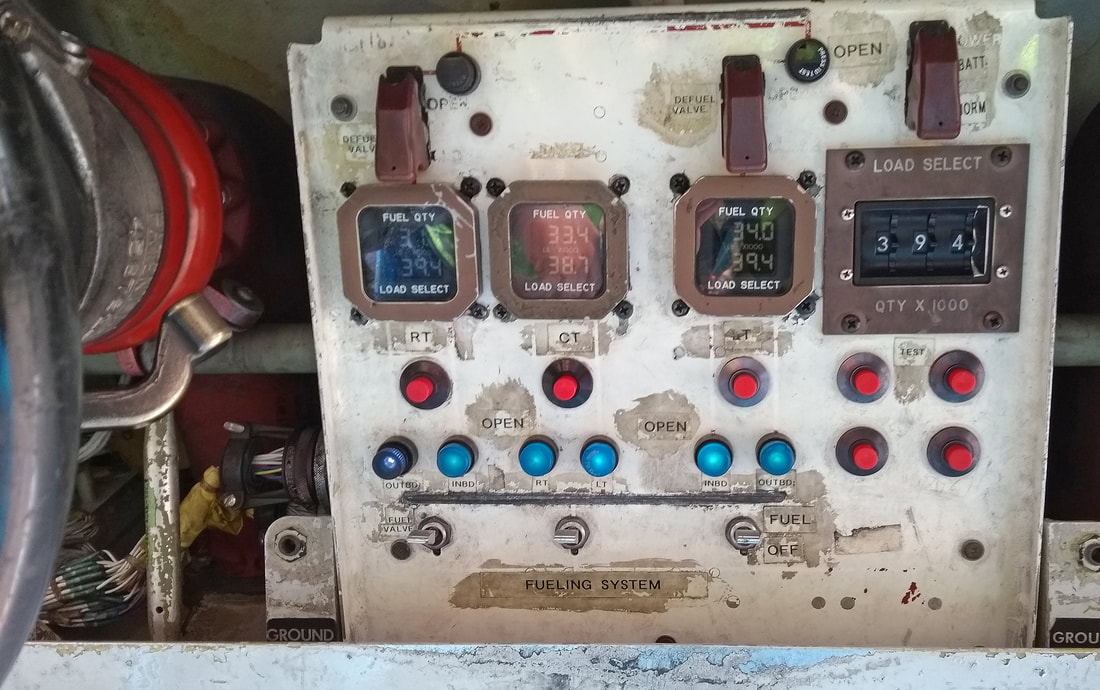Groundhandling AMS
|
|
Due re-organisation shit, I was drifting from job to job, between 2017 and 2021. In 2019, I was assigned as a Brake Rider to KLM's Aircraft Towing Department. Below an impression, what I photographed during my work. Enjoy the pics and captions.
An aviation icon. A design classic. The most recognisable airplane silhouette of all time. Its grace, poise, majesty, and elegance belie its gigantic proportions with incomparable subtlety. There is nothing like a 747.
KLM has an extensive fleet of GE-powered aircraft. The airline operates GE's CF6-80C2 engines on its Boeing 747-400.
Photographed on the ramp of Amsterdam-Schiphol in the summer of 2019, is this KLM Royal Dutch Airlines 747-406M, christened 'Shanghai’, was originally delivered to the airline in August 1999.
Push-back truck 'Kílo-Papa' has been manufactured by Gute Hoffnung Hütte (GHH) of Germany. The beginnings of GHH date back to the eponymous ironworks 'Gute Hoffnung Hütte' which started its operations in 1782 in Oberhausen. This was the hour of birth of the Ruhr area as an iron manufacturing center.
This high-time 747-406M has clocked up 120,000+ flight hours, since it was first delivered to KLM Royal Dutch Airlines in August 1999.
"Where no man has gone before" - Our 747, under tow, looks like an episode from the Star Trek television series.
KLM, the national airline of The Netherlands, had flown the aircraft from new for 21 years, when this stunning image was captured.
Boeing 747 flight-deck.
The 747 aft overhead panel is purely for circuit breakers.
Four thrust levers for four engines.
Left side overhead (Electronics and Hydraulics) panel from top to bottom:
- Off/auto/Battery switch and the Auxilley Power Unit off/start switch.
- External Power 1/2 and APU 1/2 generators
- Four Bus Tie. They are the breakers that connect the power busses (where all the aircraft electrical components get their electricity) together.
- Four Engine generators
- Hydraulic demand pumps
- Engine hydraulic switches
- Storm light switch. ON - Overrides background lighting switches to provide full intensity and turns on the dome lights.
- Cirket Breaker Overhead Panel light off/on.
- Glareshield Panel / Flood light off/on.
- Dome light switch off/on. Controls the intensity of Captain and F/O dome lights.
Right-hand side overhead panel from top to bottom one can study the following panels:
- Fire suppression.
- Timer (its working like your egg-timer at home).
- Passenger comfort.
- Engine start.
- Fuel jettison.
- Fuel control.
- Anti-ice / windshield.
- Pneumatics and Air conditioning.
- Lightning.
The cockpit of the 747-400 is a beautifully complex place where a handful of analog gauges live side-by-side with digital displays.
Forward aisle stand with the important Flight Management Computers (FMC).
The analog gauges to the left duplicate information displayed on screens.
A rule of thumb for fuel consumption on a 747 is that it will burn about 11 tons of fuel per hour.
WSHLD Air is the abbreviation for Windshield Air.
Parts of the Anti-ice/windshield and lightning panels.
- Wing Anti-ice off/on swith.
- Aisle Stand Panel/Flood light off/on switch.
Pneumatics and Air conditioning and lightning panels.
- UPR - RECIRC - LWR is the abbreviation for Upper - Recirculation - Lower.
- PACK is the abbreviation for Pressure Aircon Kit.
- L ISLN and R ISLN is the abbreviation for Left or Right Isolation Valve.
- WING TAI is the abbreviation for WING Thermal Anti-Ice.
- APU is the abbreviation for Auxiliary Power Unit
- IND LTS TEST is the abbrevaition for Indicator Lights Test.
- GASPER is the button to activate the Air Gasper Vents of the cabine ventilation system.
Engine Indication and Crew Alerting System (EICAS) panel.
- EIU SEL is the abbreviation for Engine Interface Unit Selector. It is a rack mounted avionics I/O computer that collects multiple analog signals from the aircraft engines and converts them to digital format.
- EVENT RCD is the abbreviation for Event Recording.
- FMC is the abbreviation for Flight Management Computer.
Parts of the Hydraulics and lightning panels.
- Storm light switch. ON - Overrides background lighting switches to provide full intensity and turns on the dome lights.
- Cirket Breaker Overhead Panel light off/on.
- Glareshield Panel / Flood light off/on.
- Dome light switch off/on. Controls the intensity of Captain and F/O dome lights.
747 emergency escape hatch. There are inertial reels in the cockpit ceiling adjacent to the hatch to allow the cockpit crew to exit the airplane.
The thrust levers for the four engines sit between the two pilots in the center of the flight deck.
Two of three control and display units in the cockpit; it’s an input device.
Weather-radar panel:
- GCS is the abbreviation for Ground Clutter System.
- WX+T is the abbreviation for Weather plus Threat.
Part of the Communication panel, Pilot call panel controller and weather radar panel.
- SPKR is the abbreviation for the volume of the Speakers.
- VOR is the abbreviation for Very high frequency Omin-directional Range.
- ADF is the abbreviation for Automatic Direction Finder.
- MKR is the abbreviation for Marker.
- GAIN is the control knob used to adjust the receiver sensitivity for the best reception of signals of widely varying amplitudes.
- TILT is the control knob used to adjusts the weather-radar-beam direction plus or minus 15 degrees from the horizontal axis of the flight path.
Communication panel:
- FLT is the abbreviation for Flight Crew/Cockpit.
- CAB is the abbreviation for Cabin.
- PA is the abbreviation for Passenger asdress System
- R/T is the abbreviation for Receiver/Transmitter.
747-400, with storm, cirket breaker overhead panel, glareshield panel/flood and dome lights on, gives a beautiful effect of the flight-deck.
PH-BFY ‘City of Johannesburg’ in better days! - After only 18 years of faithful service, she few her last revenue flight from Willemstad, Curacao to Amsterdam, on March 28, 2020. She was ferried, AMS/ORD/MHV on June 28, 2020 where she most probably will be parted-out and scrapped.
Lower Engine Indication and Crew Alerting Display (EICAS) of this Boeing 777, showing the (in this case) flow of bleed air from the working APU to the PACS's and Air conditioning system of the cabin and cockpit.
Small panel below the 777 flap selector.
- APL NOSE DN is the abbreviation for Air Plane Nose Down. It's used for stabilizer trim.
- ALTN is the abbreviation for Alternate.
PH-CKB departure to Chicago as MP6515 14feb22/15:00LT.
KLM 737 on push-back at Schiphol.
TCR (Trailer Construction & Repairing Nederland) bundles operational and financial services to deliver superior added value to business, providing GSE (Ground Support Equipment) on a full service basis, through a one-stop-shop concept.
The overhead panel of this Transavia Holland 737-NG remains largely unchanged since the -100, apart from a digital AC & DC metering panel & DCPCS.
The Boeing 737-NG aft overhead ELT and LE DEVICES panels
- ELT is the abbreviation for Emergency Locator Transmitter
- LE DEVICES is the abbreviation for Leading Edge Devices
- EXT is the abbreviation for Extended flaps.
In the Boeing 737-NG, the larger PFD/ND (formerly known as EFIS/MAP) are side by side to fit into the space available, controls for these are located either side of the MCP. The EIS & fuel gauges gauges are both on the central CDS with a sixth screen below that, between the CDU's.
The parking brake of this Transavia Holland 737-800 is clearly set, as can be seen by the red alluminated parking brak light on the center consol.
The device with the number '920' on the right hand side of the yoke, is a memory device. Flight-crew can use it to; memorize their call-sign, minimum speed, V1 speed or other different types of speed restrictions.
Here, we see the Hydraulic and Standby Power panel.
- IRS is the abbreviation for Inertial Reference System.
- GRD PWR is the abbreviation for Ground Power.
This is the Central Manual Panel.
- NI SET is the abbreviation for N1 selector. The N1 button is used with the Auto-pilot function.
- SPD REF is the abbreviation for Speed Reference. Sets the reference airspeed bugs on the Mach/airspeed indicator.
- MFD is the abbrevaition for Multi-Function Display.
- AUTO BRAKE. Autobrakes are used to help slow the aircraft at varying degrees of urgency.
- ANTISKID. This makes it possible for the aircraft to perform a stop with maximal deceleration and minimal wear of the tires. In this way the aircraft can come to a safe stop without unnecessary maintenance.
- LE FLAPS EXT is the abbreviation for Leading Flaps Extended.
One of our 747's gleaming in the sun today.
I took this photo, with the distinctive Schiphol tower in the background, in September 2019.
A Pegasus 737 seen here taxiing at Amsterdam-Schiphol prior to departing on yet another flight.
You can actually FEEL the power of those GE CF6's by looking at them.
Friday night routine maint' at KLM's hangar 12.
A KLM Boeing 737-700 receives attention inside KLM's hangar 12 at Schiphol-East during September 2019.
KLM purchased Boeing 787-900 PH-BHD 'Bougainvillea' some years ago and is operating her every day since.
Boeing 787-900 PH-BHC is seen here enjoying an A-check at hangar 12 during a September 2019 evening.
Bougainvillea is a genus of thorny ornamental vines, bushes, and trees belonging to the four o' clock family, Nyctaginaceae. It is native to eastern South America, found from Brazil, west to Peru, and south to southern Argentina. The inflorescence consists of large colourful sepal-like bracts which surround three simple waxy flowers.
The ultra-sophisticated flight deck of the Boeing 787 is magic.
Also mind; - both Head-Up Displays (HUD), clearly visible in the image.
Also mind; - both Head-Up Displays (HUD), clearly visible in the image.
- TMR RESET is the abbreviation for Timer Reset.
- SVCE INT OVRD is the abbreviation for Service Interphone Override.
- FADEC GND PWR is the abbreviation for FULL AUTHORITY DIGITAL ENGINE CONTROL GROUND POWER.
787 Dreamliner.
- The Towing Power mode of the 787 makes it possible to tow the aircraft without powering up the CCS (Common Core System) and other heavy loads. This saves the batteries, reducing the risk they’ll get depleted if the tow takes a long time.
- FD DOOR POWER. This system powers the door which gives access to the cockpit.
- CCR RESET is the abbreviation for Common Core Systems. It is the backbone of the airplane’s computers, networks and interfacing electronics. The 787 Common Core System comprises approximately 80 to 100 applications running simultaneously which will control many of the airplane’s avionics and utilities functions.
Meticulous maintenance keep'em flying.
Taxying-out for take-off at Schiphol, PH-BHA is bound for an exotic destination in KLM's far-flung network.
Central pedestal of Airbus 330-200 PH-AOC.
In addition to the thrust levers and the engine control functions, the main features on teh pedestal are:
In addition to the thrust levers and the engine control functions, the main features on teh pedestal are:
- The Multipurpose Control and Display Units (MCDU) for flight management functions and various other functions such as data link, maintenance, etc.
- The Radio Management Panels (RMP) for tuning all radio communications and the radio navigation as a back-up tothe normal operatin through the Flight Management and Guidance Computer (FMGC).
- The electrical rudder trim.
- The parking brake control.
- The speedbrake and flap control levers.
Electronic Flight Instrument System (EFIS) is part of the glareshield of the A330.
- QNH stands for Altimeter subscale setting to obtain elevation or altitude. Q-codes are used in aviation, in particular QNE, QNH and QFE, referring to certain altimeter settings.
- CSTR is the abbreviation for Constraint.
- WPT is the abbreviation for Way Point.
- Hg is the abbreviation for either millimeters or inches of mercury, depending on the type of measurement.
- hPa is the abbreviation for Hectopascal Pressure Unit.
- FD is the abbreviation for Flight director. The FD modes integrated with autopilot systems perform calculations for more advanced automation, like selected course (intercepting), changing altitudes, and tracking navigation sources with cross winds. FD computes and displays the proper pitch and bank angles required for the aircraft to follow a selected flight path.
- LS is the abbreviation for Landing System.
- ROSE is the abbreviation for
- ARC is the abbreviation for
The Airbus 330 overhead panel.
Forward zone:
Aft zone:
The push-button philosophy is identical to the A318, A319, A320, A350 and A380.
- The overhead panel has a 'single slope'.
- All controls on the overhead panel can be reached by either pilot.
- Two main zones are separated by protective padding.
Forward zone:
- for most frequently used functions.
- for system controls: arranged in three main rows:
- center row for engine-related systems arranged in a logical way
- lateral rows for other systems.
Aft zone:
- Not used in flight, mainly for a small maintenance panel corresponding to some maintenance controls.
The push-button philosophy is identical to the A318, A319, A320, A350 and A380.
- PAX SYS is the abbreviation for Passenger Systems.
- IFEC is the abbreviation for In-Flight Entertainment & Connectivity.
- VCC is the abbreviation for Video ? ... who knows?
Part of the engine start panel.
- FIRE/OVHT TEST is the abbreviation for FIRE/OVERHEAT DETECTION SYSTEM.
- EEC MODE is the abbreviation for ELECTRONIC ENGINE CONTROL (EEC). It is the primary propulsion-control component is the electronic engine control . An EEC is installed on the fan case of each engine.
Engine start switches are visible below the power levers.
The top screen is the Engine Warning Display. It's used for engine primary indications, flap/slat position and warning & caution messages.
The lower screen is the System Display and it's used for system synoptic, status and permanent data.
The lower screen is the System Display and it's used for system synoptic, status and permanent data.
The parking brake (very important for the Brake-Rider) is clearly visible, left of the multipurpose CDU.
Switching control panel and the Electronic Centralized Aircraft Monitor (ECAM) control panel.
ECAM switching panel, Timer and Datalink Control and Display Unit (DCDU).
Lighting control panel and the Weather Radar control panel.
- PWS is the abbreviation for Possible Windshear.
The System Display is used for system synoptic, status and permanent data.
- SELCAL CODE for PH-AKA is BH-EQ. The code is received by any aircraft receiver monitoring the radio frequency on which the SELCAL code is broadcast. A SELCAL decoder is connected to each aircraft's radio receiver. When a SELCAL decoder on an aircraft receives a signal containing its own assigned SELCAL code, it alerts the aircraft's crew by sounding a chime, activating a light, or both. The crew next turns up the volume on the aircraft radio to hear the incoming voice transmission.
- TAT is the abbreviation for Total Air Temperature.
- SAT is the abbreviation for Static Air Temperature. This is the ambient temperature outside of the aircraft. It is measured in free flow/undisturbed airflow. SAT is generally used in performance calculations.
Changing push-back truck at the ramp in front of KLM hangar 11.
Here, Atlas Air Boeing 747-400F N409MC, receives attention from KLM TD in front of KLM hangar 11.
This aircraft is also unusual in that it is still flying for its original owner. In this case, the 747 was delivered in April 2000 and having served briefly on lease with Alitalia Cargo, returned full-time to Atlas Air for further service.
KLM Airbus 330-200 PH-AOC is towed into hangar 11 for some maintenance.
PH-BHI 'Lavender', being towed-into hangar 12. Taken from the cockpit of PH-AOC 'Place de la Concorde'.
BIG-JET maintenance, KLM hangar 12, Amsterdam-Schiphol-East, January 06, 2020.
PH-AOC 'Place de la Concorde' looked after by a working party of KLM's technical service.
Work done! - Back to our base near the G-ramp.
VP-BBP and VP-BIM of AirBridgeCargo, are seen her swallowing another load, through their cavernous cargo doors, at Amsterdam-Schiphol.
Here, Martinair Holland Boeing 747-400F PH-MPS bieng towed to her stand at the Sierra ramp, after arriving from maintenance at hangar 11, on December 11, 2019.
The front office of PH-MPS, but can a photograph communicate the feel of this wonderful machine?
PH-MPS emergency escape hatch. There are inertial reels in the cockpit ceiling adjacent to the hatch to allow the cockpit crew to exit the airplane.
Her switches and controls, worn smooth by the touch of a thousand hands.
Upper-deck of Boeing 747-400 freighter, PH-MPS, with crew rest compartment.
Empty cargo maindeck of PH-MPS.
KLM Jet A-1 refueller truck on the ramp at AMS. Note the signs indicating Class 3, Marine pollutants or environmentally hazardous substances and JET A-1.
This one-time Singapore Airlines Boeing 747-412 (412 was the unique, fixed Boeing customer code of Singapore Airlines) rolled off the production line in May 1990, and was delivered to her proud owner, Singapore Airlines as 9V-SMF. After years of faithful passenger service, she was sold as VT-AIF to Air India. She operated for the airline form their Delhi base from 2004 until October 2007, after which she was stored at Marana. In 2008 she left the Arizona desert, after she was sold to Martinair Holland and was converted to a freighter at Xiam, China. Since then she operates daily on the Martinair world-wide cargo schedule.
A Delta Airlines Boeing 767-300 taxies to its gate at Amsterdam-Schiphol on a crisp morning in October 2019.
A company Boeing 737 is towed across the ramp at Amsterdam-Schiphol, on a wet morning in October 2019.
LEVEL Airbus is seen here lounging in the morning sunshine at Amsterdam-Schiphol, waiting for another pax-load.
Once we were on stand D88, PH-BGG was refueled and scrutinized for any obvious faults!
Room with a view! - The old and new ATC-Tower clearly overlooking our moves.
Boeing 737-700 PH-BGG under tow to her assigned stand as D88.
Transavia Holland 737-800 PH-HXO, arrived Schiphol with another cargo of sun—worshippers.
The low morning light catches this 737, half-asleep, on the ramp at Schiphol.
The 737-700 is powered by two CFM56-7.
The names of CFM International and the CFM56 product line are derived from the two parent companies' commercial engine designations: GE's CF-6 and Snecma's M56 (its 56th project).
We also did towing for Transavia, Martinair, TUI, China Southern, Delta Airlines and also China Eastern. Here we see the hi-tech cockpit of their Airbus 350 B-306Y, before being towed to the gate.
C-check, PH-BVA 'Orange Pride', in hangar 14, January 2020.
In January and February 2020, I enjoyed a couple of familiarization-days with KLM's fuel department. Below an impression, what I photographed during those days. Enjoy the pics and captions.
Filling-up Transavia Holland Boeing 737-800 PH-HZO, January 22, 2020.
MAN (abbreviation of Maschinenfabrik Augsburg-Nürnberg), is based in Munich, Germany. Its primary output is commercial vehicles and diesel engines through its MAN Truck & Bus divisions.
With more than 75 years of filtration experience, Facet has long been known for quality filtration solutions. Today Facet brings that expertise of filtration to you while living out our mission to make the world safer, healthier and more productive.
Facet is innovating technologies to ensure contaminants such as water, dust and dirt do not negatively impact the performance and quality of equipment..
|
Today's kerosine jet fuels have been developed from the illuminating kerosine used in the early gas turbine engines. These engines needed a fuel with good combustion characteristics and a high energy content. The kerosine type fuels used in civil aviation nowadays are mainly JET A-1 and Jet A. The latter has a higher freezing point (maximum minus 40 degrees C instead of maximum minus 47 degrees C) and is available only in North America.
Jet A-1 is a kerosine grade of fuel suitable for most turbine engined aircraft. It has a flash point minimum of 38 degrees C (100°F) and a freeze point maximum of -47 degrees C. It is widely available outside the U.S.A. |
Our MAN jet-refueler truck, a gritty performer on a gritty day.
A day in the life of a fueler.
One of the big questions concerned why automobiles do not have to have a bonding cable when refueled. Back to the basics: For a spark to start a fire or explosion, one must have fuel, air and an ignition source. But liquid fuels like avgas and Jet A do not burn. They must be mixed with air in correct proportions or air/fuel ratios to burn.
For example, if you suspend a spark plug 0.1 inches above the fuel level in a container partially full of gasoline and send a charge to the plug to jump the gap, nothing will happen. The reason is that the air/fuel ratio is too rich. Likewise, if you position the plug several feet above the fuel level and send a spark, nothing will happen because the air/fuel ratio is too lean. You must move the spark source closer to the fuel until you find a combustible air/fuel ratio, and then it will burn.
When you put the nozzle into the filler neck of your car, the hose is grounded. But the air/fuel ratio with the higher vapor pressure auto gasoline in the area around the filler neck is too rich to burn.
On a piston aircraft, the vapor pressure of the fuel is less than that of auto gas and the filler neck is more out in the open where the wind can easily raise the air/fuel ration at the filler neck into the explosive range. (The vapor pressure of auto fuel has decreased in recent years and is closer to that of 100LL).
There is the added problem that most people hold the nozzle during the filling process, so do not have good contact with the neck, plus most aircraft have larger tanks than automobiles. With Jet A, as with diesel fuel, the vapor pressure of the fuel is low so that the air/fuel ratio at the neck is too lean to burn, so the chance of a fire is very low. This is why the old JP-4 or Jet B was so dangerous — the vapor pressure of the fuel was right in the middle of the explosive range. This is also true for people who mix some gasoline with their diesel fuel in the winter. However, many jets use a lot of fuel, so that a significant electrical potential can still be built up and jump a large gap, which can have enough fuel vapor to be explosive.
For example, if you suspend a spark plug 0.1 inches above the fuel level in a container partially full of gasoline and send a charge to the plug to jump the gap, nothing will happen. The reason is that the air/fuel ratio is too rich. Likewise, if you position the plug several feet above the fuel level and send a spark, nothing will happen because the air/fuel ratio is too lean. You must move the spark source closer to the fuel until you find a combustible air/fuel ratio, and then it will burn.
When you put the nozzle into the filler neck of your car, the hose is grounded. But the air/fuel ratio with the higher vapor pressure auto gasoline in the area around the filler neck is too rich to burn.
On a piston aircraft, the vapor pressure of the fuel is less than that of auto gas and the filler neck is more out in the open where the wind can easily raise the air/fuel ration at the filler neck into the explosive range. (The vapor pressure of auto fuel has decreased in recent years and is closer to that of 100LL).
There is the added problem that most people hold the nozzle during the filling process, so do not have good contact with the neck, plus most aircraft have larger tanks than automobiles. With Jet A, as with diesel fuel, the vapor pressure of the fuel is low so that the air/fuel ratio at the neck is too lean to burn, so the chance of a fire is very low. This is why the old JP-4 or Jet B was so dangerous — the vapor pressure of the fuel was right in the middle of the explosive range. This is also true for people who mix some gasoline with their diesel fuel in the winter. However, many jets use a lot of fuel, so that a significant electrical potential can still be built up and jump a large gap, which can have enough fuel vapor to be explosive.
What does a bonding cable do (check the yellow/white cable in the picture)? - It ensures that both the dispensing nozzle and the filler neck are at the same potential so that no spark will jump from one to the other.
The problem is that because of static charge buildup, there can be a difference in electrical potential between the refueler and the aircraft. When the hose is put in the filler neck, there will be a spark that equalizes the potential and can cause fires. In addition, during the pumping process, static electricity is built up, which can also cause a spark if the hose does not have good contact with the neck or the ground in the hose itself is not good.
If the grounding point on your aircraft does not have electrical conductivity with the filler neck, then when the hose is placed in the neck or during the fueling process, the electrical potential will not be equalized and a spark can occur. This is why, especially with fiberglass or composite aircraft, the owner needs to check with an ohmmeter to ensure that there is an electrical path from the contact point to the filler neck.
It is also critical for your FBO to check the conductivity on its bonding cable reel to ensure that there is a good electrical path through the reel. There are contact points in these reels that can corrode and result in a loss of electrical conductivity.
Electricity is an important part of our lives, but we always have to treat it with respect and care. The transfer of hydrocarbon fuels can be dangerous if the proper procedures are not followed.
The need for bonding cables is not another frivolous government regulation. It is a much needed safety rule.
Grounded: What’s the proper way to ground during refueling? - We ground an aircraft during the refueling process to ensure that the plane and the refueling apparatus are at the same electrical potential and to dissipate the electrical charge that is generated by the fuel transfer process.
It is very important to remember that whenever fuel is transferred it acts like an in-line generator to build up an electrical charge.
In aviation, we have the added safety of a ground cable. At a ground mounted avgas pump, the ground cable goes from a ground strap to the aircraft to dissipate the electrical charge. In a refueling vehicle, the cable goes from the refueler to the aircraft to ensure that the two vehicles are at the same electrical potential. The problem here is if someone is standing on the ground and reaches for the nozzle, that person can be a ground path causing arcing. That is why on large aircraft a refuel vehicle will usually have ground cables connected to the aircraft and to a ground strap.
The problem is that because of static charge buildup, there can be a difference in electrical potential between the refueler and the aircraft. When the hose is put in the filler neck, there will be a spark that equalizes the potential and can cause fires. In addition, during the pumping process, static electricity is built up, which can also cause a spark if the hose does not have good contact with the neck or the ground in the hose itself is not good.
If the grounding point on your aircraft does not have electrical conductivity with the filler neck, then when the hose is placed in the neck or during the fueling process, the electrical potential will not be equalized and a spark can occur. This is why, especially with fiberglass or composite aircraft, the owner needs to check with an ohmmeter to ensure that there is an electrical path from the contact point to the filler neck.
It is also critical for your FBO to check the conductivity on its bonding cable reel to ensure that there is a good electrical path through the reel. There are contact points in these reels that can corrode and result in a loss of electrical conductivity.
Electricity is an important part of our lives, but we always have to treat it with respect and care. The transfer of hydrocarbon fuels can be dangerous if the proper procedures are not followed.
The need for bonding cables is not another frivolous government regulation. It is a much needed safety rule.
Grounded: What’s the proper way to ground during refueling? - We ground an aircraft during the refueling process to ensure that the plane and the refueling apparatus are at the same electrical potential and to dissipate the electrical charge that is generated by the fuel transfer process.
It is very important to remember that whenever fuel is transferred it acts like an in-line generator to build up an electrical charge.
In aviation, we have the added safety of a ground cable. At a ground mounted avgas pump, the ground cable goes from a ground strap to the aircraft to dissipate the electrical charge. In a refueling vehicle, the cable goes from the refueler to the aircraft to ensure that the two vehicles are at the same electrical potential. The problem here is if someone is standing on the ground and reaches for the nozzle, that person can be a ground path causing arcing. That is why on large aircraft a refuel vehicle will usually have ground cables connected to the aircraft and to a ground strap.
Re-supply at Aircraft Fuel Supply (AFS). It's a third party company that, as the name suggests, controls the fuel supply to aircraft.
Jet fuel or aviation turbine fuel is a type of aviation fuel designed for use in aircraft powered by gas-turbine engines. It is colorless to straw-colored in appearance. The most commonly used fuels for commercial aviation are Jet A and Jet A-1, which are produced to a standardized international specification. The only other jet fuel commonly used in civilian turbine-engine powered aviation is Jet B, which is used for its enhanced cold-weather performance.
Jet fuel is a mixture of a variety of hydrocarbons. Because the exact composition of jet fuel varies widely based on petroleum source, it is impossible to define jet fuel as a ratio of specific hydrocarbons. Jet fuel is therefore defined as a performance specification rather than a chemical compound.
Fuel for piston-engine powered aircraft (usually a high-octane gasoline known as avgas) has a high volatility to improve its carburetion characteristics and high autoignition temperature to prevent preignition in high compression aircraft engines. Turbine engines (like diesel engines) can operate with a wide range of fuels because fuel is injected into the hot combustion chamber. Jet and gas turbine (turboprop, helicopter) aircraft engines typically use lower cost fuels with higher flash points, which are less flammable and therefore safer to transport and handle.
The first axial compressor jet engine in widespread production and combat service, the Junkers Jumo 004 used on the Messerschmitt Me 262A fighter and the Arado Ar 234B jet recon-bomber, burned either a special synthetic "J2" fuel or diesel fuel.
Most jet fuels in use since the end of World War II are kerosene-based. Both British and American standards for jet fuels were first established at the end of World War II. British standards derived from standards for kerosene use for lamps—known as paraffin in the UK—whereas American standards derived from aviation gasoline practices.
Over the subsequent years, details of specifications were adjusted, such as minimum freezing point, to balance performance requirements and availability of fuels. Very low temperature freezing points reduce the availability of fuel. Higher flash point products required for use on aircraft carriers are more expensive to produce. In the United States, ASTM International produces standards for civilian fuel types, and the U.S. Department of Defense produces standards for military use. The British Ministry of Defence establishes standards for both civil and military jet fuels. For reasons of inter-operational ability, British and United States military standards are harmonized to a degree. In Russia and former Soviet Union countries, grades of jet fuels are covered by the State Standard (GOST) number, or a Technical Condition number, with the principal grade available in Russia and members of the CIS being TS-1.
Jet A specification fuel has been used in the United States since the 1950s and is usually not available outside the United States and a few Canadian airports such as Toronto and Vancouver, whereas Jet A-1 is the standard specification fuel used in the rest of the world other than the former Soviet states where TS-1 is the most common standard. Both Jet A and Jet A-1 have a flash point higher than 38 °C (100 °F), with an autoignition temperature of 210 °C (410 °F).
Differences between Jet A and Jet A-1:
- The primary difference is the lower freezing point of A-1:
- Jet A's is −40 °C (−40 °F)
- Jet A-1's is −47 °C (−53 °F)
- The other difference is the mandatory addition of an anti-static additive to Jet A-1.
The hazard identification number consists of two or three figures. In general, the figures indicate the following hazards: 2. Emission of gas due to pressure or to chemical reaction 3. Flammability of liquids (vapors) and gases or self-heating liquid 4. Flammability of solids or self-heating solid 5. Oxidizing (fire-intensifying) effect 6. Toxicity or risk of infection 7. Radioactivity 8. Corrosivity 9. Risk of spontaneous violent reaction. Doubling of a figure indicates an intensification of that particular hazard. Where the hazard associated with a substance can be adequately indicated by a single figure, this is followed by zero. If a hazard identification number is prefixed by the letter "X", this indicates that the substance will react dangerously with water.
Kerosene is widely used to power jet engines of aircraft (jet fuel) and some rocket engines in a highly refined form called RP-1. It is also commonly used as a cooking and lighting fuel, and for fire toys such as poi. In parts of Asia, kerosene is sometimes used as fuel for small outboard motors or even motorcycles.
KUNZ Aviation Refueling GmbH is a privately owned high-tech company based in Reinbek near Hamburg, specializing in airfield refuellers and hydrant dispensers ever since its founding in 1950.
Filling-up KLM City Hopper Embraer 175 PH-EXB, January 22, 2020.
On top of our MAN jet-fueller truck.
Jet fuel is available in most places in the world, whereas avgas is only widely available in a few countries which have a large number of general aviation aircraft.
Jet fuel is often used in diesel-powered ground-support vehicles at airports. However, jet fuel tends to have poor lubricating ability in comparison to diesel, which increases wear in fuel injection equipment. An additive may be required to restore its lubricity.
Jet fuel is more expensive than diesel fuel but the logistical advantages of using one fuel can offset the extra expense of its use in certain circumstances.
ADR orange-colored plate marking with hazard identification number and UN number.
MATERIAL DESCRIPTION: Fuel, Aviation, Turbine Engine UN1863 - HAZARD CLASS: Flammable Liquid.
KLC Embraer 175 PH-EXB is seen here being fueled by your author at Amsterdam-Schiphol.
KLM/Shell Jet A-1 refueler truck on the ramp at Amsterdam-Schiphol.
The Embraer E175 is powered by two FADEC-controlled GE CF 34-8E engines installed under the wings.
The next one to be fueled was KLM City Hopper Embraer 175 PH-EXS, January 22, 2020.
Not a place for the absent mind!
KLM Jet A-1 refueller truck on the ramp at AMS.
Note; - the signs indicating UN1863 hazardous material and JET A-1.
Note; - the signs indicating UN1863 hazardous material and JET A-1.
This picture stands out, mesmerizing top action.
Sadly, a murky day for my familiarisation with the Refueling Department.
Filling-up KLM Royal Dutch Airlines Boeing 747-400 PH-BFW, in the early hours of February 06, 2020.
Free water in aviation fuel can lead to ice formation, filter blockages and consequent engine failure. It can also allow microbial growth in fuel tanks, which can cause fuel spoiling and filter blocking. Acids generated by the microbes can even cause corrosion damage.
747 valve position control panel.
Flow rates up to 2.800 l/min.
Next to fuel those CF6's needs also a drip of oil!
A 747 aircraft can carry up to 172,000 kgs. of fuel.
The flash point of kerosene is between 37 and 65 °C (100 and 150 °F), and its autoignition temperature is 220 °C (428 °F). The freeze point of kerosene depends on grade, with commercial aviation fuel standardized at −47 °C (−53 °F).
The next one before coffee was KLM Royal Dutch Airlines Boeing 737-800 PH-BXE, February 06, 2020.
From tank storage to flight. At most airports, an underground piping system transports Jet-A fuel from the fuel facility storage tanks to the aircraft. This piping, called a transfer fuel line, supplies the fuel to either underground hydrants near the aircraft or to refueler loading stations for truck (refueler) loading. The transfer fuel line is generally composed of a single pipe or a combination of pipes, 18 inches to 24 inches in diameter. The size and number of pipes depend upon the airport arrangement and aircraft fuel demand.
The fuel storage facilities are normally sited in remote locations at the airport, far from where the aircraft receive their fuel. So, transfer fuel lines often pass under aircraft runways or taxiways. This is a significant factor when piping is installed or repaired.
The fuel storage facilities are normally sited in remote locations at the airport, far from where the aircraft receive their fuel. So, transfer fuel lines often pass under aircraft runways or taxiways. This is a significant factor when piping is installed or repaired.
It is very important that jet fuel be free from water contamination. During flight, the temperature of the fuel in the tanks decreases, due to the low temperatures in the upper atmosphere. This causes precipitation of the dissolved water from the fuel. The separated water then drops to the bottom of the tank, because it is denser than the fuel. Since the water is no longer in solution, it can form droplets which can supercool to below 0 °C. If these supercooled droplets collide with a surface they can freeze and may result in blocked fuel inlet pipes. This was the cause of the British Airways Flight 38 accident. Removing all water from fuel is impractical; therefore, fuel heaters are usually used on commercial aircraft to prevent water in fuel from freezing.
There are several methods for detecting water in jet fuel. A visual check may detect high concentrations of suspended water, as this will cause the fuel to become hazy in appearance.
An industry standard chemical test for the detection of free water in jet fuel uses a water-sensitive filter pad that turns green if the fuel exceeds the specification limit of 30 ppm (parts per million) free water. A critical test to rate the ability of jet fuel to release emulsified water when passed through coalescing filters is ASTM standard D3948 Standard Test Method for Determining Water Separation Characteristics of Aviation Turbine Fuels by Portable Separometer.
A fuel water detector can be used in jet fuel to find out if there is any water that cannot be seen with the naked eye. In the case of the Shell Water Detector, it’s a capsule that you attach to a syringe, which you use to draw out 5ml of jet fuel. When testing jet fuel with the Shell Water Detector, watch to see if it changes colour from yellow to blue; this means that there is water. Using a fuel water detector will help you find out if water has got into your fuel and allow you to deal with it before it becomes a problem for your aircraft.
PH-BXE. Up till now, this Boeing 737, has spent its entire life with KLM, flying passenger's services between the many European cities and its Amsterdam base.
The DAF LF (Light Forte) is a range of light/medium duty trucks produced by the British manufacturer Leyland Trucks. It is a re-development from the Leyland Roadrunner of 1984.
Single point underwing fueling from hydrant system.
Keeping it clean. Clearly, the need to keep fuel clean is imperative for any aircraft fueling operations. The transfer fuel line needs periodic cleaning because of its design to maintain fuel quality. The line consists of a series of pipes that may slope up and down to avoid storm drain piping and other utility lines along its path. The two most commonly used cleaning methods are:
- Pigging. A foam “bullet” is inserted into the fuel transfer line and pushed by pressure from one end of the pipe to the other end, pushing ahead of it water, rust or contaminants. This requires “pig launching and receiving equipment.”
- Venting/Draining. High point vents and low point drains are used to remove water and scale. High point vents are small valved pipes that allow air to escape from the transfer fuel line. Low point drains are small pipes that drain pipe sumps provided to collect contaminants. A mobile sump vacuum truck is used to pump out the pipe sump.
MASTERLOAD III is a dual microprocessor-based electronic meter.
Boeing 747-400 PH-BFN spent all its life operating for KLM, in which she crisscrossed the globe numerous times. In March 2020 her service life with KLM was over. Five months later she was sold to an aircraft broker and finally ended up at Mojave, Arizonaut for part-out & scrap.
Filling-up KLM Royal Dutch Airlines Boeing 747-400 PH-BFN for her up-coming flight to Curacao.
Amsterdam-Schiphol, February 06, 2020.
Amsterdam-Schiphol, February 06, 2020.
Hydrant dispensing. This dispensing method uses a hydrant at the end of the transfer fuel line. The transfer fuel line usually terminates within a control valve vault, with the piping system control valves, electrical power and fueling system controls. The control valve, suitable for jet fuel service, has a working pressure of 275 psig. The electrical controls consist of motor-operated control valves and fuel system control monitoring functions. The fuel system operator monitors and maintains this equipment every day.
From the control valve vault, the hydrant fuel line is routed to the aircraft parking apron. This pipe is generally between 8 and 16 inches, depending upon airport fuel demand. The pipe has the same material requirements as those previously described.
From the hydrant fuel line, pipe laterals are used to serve individual hydrant fuel pits. One to three hydrant fuel pits are required for each aircraft parking position, depending on the type of aircraft parking at the position. Narrow body, wide body or jumbo aircraft each fuel at different positions. The 6-inch diameter lateral pipe provides a flow rate between 600 and 1,000 gpm at 7 fps (feet per second) to 10 fps velocity. Velocity is important because it affects the buildup of static electricity.
From the control valve vault, the hydrant fuel line is routed to the aircraft parking apron. This pipe is generally between 8 and 16 inches, depending upon airport fuel demand. The pipe has the same material requirements as those previously described.
From the hydrant fuel line, pipe laterals are used to serve individual hydrant fuel pits. One to three hydrant fuel pits are required for each aircraft parking position, depending on the type of aircraft parking at the position. Narrow body, wide body or jumbo aircraft each fuel at different positions. The 6-inch diameter lateral pipe provides a flow rate between 600 and 1,000 gpm at 7 fps (feet per second) to 10 fps velocity. Velocity is important because it affects the buildup of static electricity.
The underwing refueling panel from a 747. It is where the fuel is loaded onto the aircraft.
'Fox-November' valve position control panel.
All 400's have a horizontal stabilizer tank (HST).
According FCOM 2:
- 747-400 Combi max. 215.558 liters /173.072 kgs
- 747-400 pax/freighter max. 203.066 liters /163.042 kgs.
It generally takes between 1135 and 1514 liter per minute (lpm) to fuel one narrow body aircraft or between 1892 and 2270 lpm to fuel a wide body/jumbo aircraft. When an aircraft has a dual fuel point, a fill rate of 3,785 lpm is likely. The hydrant fuel pit is an underground fiberglass pit in which the lateral fuel pipe connects into a hydrant valve. The manually controlled hydrant valve controls fuel pressure and flow to the aircraft.
Low concentrations of water suspended in fuel cannot be detected by visual inspections.
Our next customer was KLM Royal Dutch Airlines Boeing 747-400 PH-BFV, which we fueled with 122 ton Jet-A1, on a cold February 06, 2020.
Boeing 747-406M PH-BFW spent all its life operating for KLM. In October 2020 her service life was over and she was withdrawn from use and stored at Amsterdam. In January 2021 she was sold to LongTail Aviation and ferried AMS/TLV on January 18, 2021, for cargo conversion.
Optical illusion.... or not?
A rule of thumb for fuel consumption on a 747 is that it will burn about 11 tons of fuel per hour.
FMC deliver; high-speed, high-capacity cargo loaders for airlines, airports, ground handlers & cargo companies.
KLM Jet A-1 dispenser truck on the ramp at AMS. Note the signs indicating Class 3, flammable liqued and JET A-1.
Modern jet engines require a lubricant that can handle extreme speed, temperature and stress without breaking down or forming deposits. Eastman Turbo Oil 2197 is tailor-made to meet these challenges. It has provided outstanding performance in aircraft-type turbine engines.
Eastman Turbo Oil 2197 is formulated to meet the demanding requirements of aircraft-type gas turbines operating over a wide range of severe operating conditions. The product has a high specific heat in order to ensure good heat transfer from oil-cooled engine parts. In extensive laboratory testing and in-flight performance, it exhibits excellent bulk oil stability at temperatures up to 204ºC (400 ºF). The evaporation rate at these temperatures is low enough to prevent excessive loss of volume.
Eastman Turbo Oil 2197 is a synthetic lubricant for aircraft-type gas-turbine engines. It helps control deposits, keep oil systems clean, extend engine life and can reduce the cost of engine maintenance.
Wilding out, acting crazy, ... to get you through the day!
In the 1880's, there was an invention called the Continuous Spray Pump that was developed by John Bean. That became the basis for FMC Corporation, which was formed in 1920 in San Jose, CA. That citrus pump and subsequent improvements to it became the technology basis for the first FMC de-icer. FMC Technologies originally existed for decades as a division of Food Machinery Corporation, or FMC.
Commander Loaders were introduced more than 30 years ago. Since then, approximately 10,000 units have been sold worldwide.
Commander Loaders are deployed with airlines and commercial air cargo fleets across the globe servicing all kinds of passenger and cargo aircraft. Easy to operate, easy to maintain, highly reliable, and with unmatched resale potential, Commander Loaders excel at providing value. They’re the obvious choice for anyone requiring best-of-class ground support equipment.
Commander ease of operation and safety means keeping up with today’s hectic pace while simultaneously reducing risk to personnel, equipment, aircraft and cargo.
The Commander 30i cargo loader provides the Value of Reliability with a platform lift capacity of 15,000 kg (33,000 lb) and a bridge lift capacity of 7,500 kg (16, 500 lb) or 15,000 kg (33,000 lb) for main and lower deck container loading on a wide variety of passenger and freighter aircraft.
The Commander 30i is available in different configurations including standard winged bridge and heavy winged or fixed bridge. The Commander 30i services these aircraft: Main Deck: 707, 727, 737, 747, 757, 767, MD-11, DC-8, DC-9,DC-10, A-300, A-310,A-380, L-1011 Lower Lobe : 747, 767, 777, MD-11, DC-10,L-1011, A-300, A-310, A-330,A-340, A-380, 767 125” wide door.
Notwithstanding some super large aircraft such as the Antonov 124 and Antonov 225, the Boeing 747 is among the select group of airliners fitted with a staggering number of tires.
Sixteen aircraft tires are fitted to main gear bogies beneath the wings and the fuselage of the Boeing 747-400. It was the only way enough tires could be deployed to support the immense loads of this incredible machine.
CW is the abbreviation for Center Wing-tank.
DAF, Van Doorne's Aanhangwagenfabriek N.V., was later re-named Van Doorne's Automobielfabriek N.V., is a truck and former automobile manufacturor, in 1932 established by Huub van Doorne from Eindhoven.
The turbofan or fanjet is a type of airbreathing jet engine that is widely used in aircraft propulsion. The word "turbofan" is a portmanteau of "turbine" and "fan": the turbo portion refers to a gas turbine engine which achieves mechanical energy from combustion,and the fan, a ducted fan that uses the mechanical energy from the gas turbine to accelerate air rearwards. Thus, whereas all the air taken in by a turbojet passes through the combustion chamber and turbines, in a turbofan some of that air bypasses these components. A turbofan thus can be thought of as a turbojet being used to drive a ducted fan, with both of these contributing to the thrust.
The hydrant fuel pit has a removable cast aluminum cover for quick access to the hydrant valve. This cover is rated to accommodate the heaviest aircraft wheel loading situation. When the cover is opened, the fueler connects to the hydrant pit valve and to the aircraft through a delivery hose and dry break nozzle. This hydrant cart is equipped with gauges, metering and fuel filtration equipment mounted on a one- or two-ton truck chassis to control, filter and measure the fuel flow to the aircraft.
In an emergency... An emergency fuel shutoff system is used with all hydrant fueling systems to provide an emergency shutdown in the event of a fuel spill or overfill. This system has a pull-type alarm station located at places along the exterior of the concourse or terminal buildings.
Economically designed pump cabinet and the raisable working platform for effective operation.
FAUDI Aviation GmbH, is manufacturing company of measurement systems, which supervises the quality of Jet Fuels.
A ground power unit pumps energy into a stationary Embraer 195 as it sits on the ramp at Amsterdam-Schiphol.
KLM Royal Dutch Airlines Airbus 330-200 PH-AOD 'Piazza del Duomo', is seen here at Amsterdam-Schiphol gate E17, on a cold February 06, 2020, being fueled, cabin pre-heated, catered, water units and toilets-serviced, for her up-coming flight in KLM's far-flung network.
OD-504 is KLM’s fleet number for Airbus 330-200 PH-AOD.
ETOPS is an acronym for Extended-range Twin-engine Operations Performance Standards. The International Civil Aviation Organization (ICAO) coined the acronym for Extended Twin Operations for twin-engine aircraft operation further than one hour from a diversion airport at the one-engine inoperative cruise speed, over water or remote lands, on routes previously restricted to three- and four-engine aircraft.
Filling-up KLM Royal Dutch Airlines Airbus 330-200 PH-AOD, February 06, 2020.
In 1868, Bruno LEBRUN, who graduated from the École des Mines in Mons, established his workshop in Nimy. At that time, the south part of Belgium was mainly living on the mining industry. Bruno LEBRUN delivered large quantities of machines to the mines: dynamos, electrical engines, locomotives, but principally steam engines and compressors..
|
LEBRUN diesel powered mobile preconditioned air units (with integrated diesel generator) offer a cheaper alternative to the use of the APU (Auxiliary Power Unit) in order to maintain the appropriate temperature inside the cockpit, the cabin and the electronic compartment of any parked aircraft during pre-flight servicing, loading and maintenance.
|
Completely self-contained, these units also make it possible to quickly increase or decrease the temperature inside any airplane according to weather conditions and constraints. Entirely autonomous and easily movable thanks to their compact design, these mobile preconditioned air units allow operators to easily position them to their adequate location. Additionally, due to their extremely low noise level, they can either be used on the ramp, as well as in maintenance hangars.
Reaching delivered temperatures between -5°C and +5°C in cooling mode and up to 65°C in heating mode regardless severe ambient conditions (from -15°C to +55°C and up to 100% R.H. ), LEBRUN preconditioned air units are available trailer-mounted or truck-mounted and provide variable air flow from 0 kg/s to 6,5 kg/s according to the requirements and constraints.
Reaching delivered temperatures between -5°C and +5°C in cooling mode and up to 65°C in heating mode regardless severe ambient conditions (from -15°C to +55°C and up to 100% R.H. ), LEBRUN preconditioned air units are available trailer-mounted or truck-mounted and provide variable air flow from 0 kg/s to 6,5 kg/s according to the requirements and constraints.
The airSnake is a flexible and mobile air transport system with an optimised airflow for the airport and aircraft industry as part of the aircraft ground handling or aircraft maintenance process. The airSnake is designed for a single man operation and used in the day to day operation with KLM at Amsterdam Airport Schiphol. An optimised hose length is created with the airSnake for handling various types of aircrafts, this avoids reduction and choking of the airflow and creates an energy efficient airflow. After switching off the PCA-unit the disconnected hoses are stored on the airSnake itself.
Less fysical strained is needed to operate the airSnake since no lifting of big rolls of hose is required. Easy movement in any direction is achieved by the numerous wheels, all equipped with a brake. The airSnake is also equipped with handles located at various positions which will create a secure pushing and pulling grip. The handles are easy to store after use.
KLM Royal Dutch Airlines has the General Electric CF6-80E1 engine to power its Airbus A330-200's aircraft.
Underwing fuel connection and controls.
OK, ready.... Fuel onboard (FOB) 35.640 kgs.
KLM Equipment Services rents or lease out various types of equipment for their handling aircraft.
Filling-up Delta Airlines Boeing 767-332(ER) N187DN, February 06, 2020.
Getting the fuel-hose in place.
Psi is the abbreviation of pound per square inch.
Flow rates up to 5.000 l/min. for both fuel-hoses.
Economically designed pump cabinet and the raisable working platform for effective operation.
Our Delta 767 got the fuel it ordered and it was also the end of our shift.
Unfortunately, this temporary work finished mid-January 2020, and I, next to my temporary work for the Aircraft Handling Service Unit (AHSU), transporting flight-crew and connecting jet bridges, was assigned to KLM Cargo-in-Cabin duties flying to/from Beijing and Shanghai.
